Solo Travel in Japan
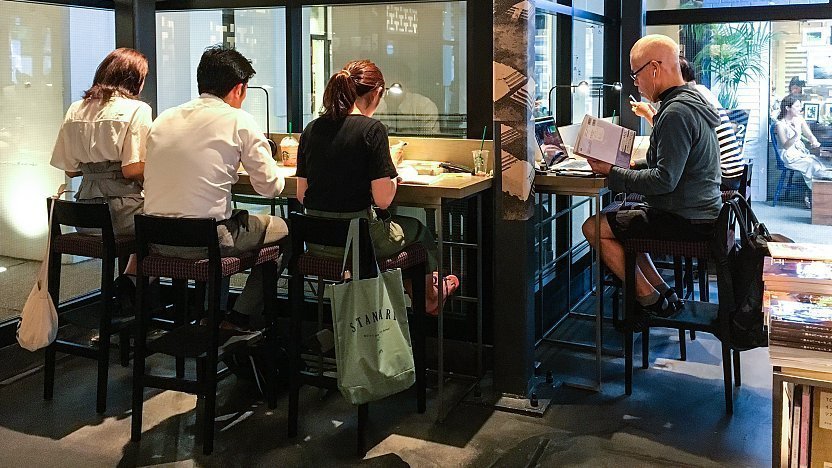
In past decades, most solo traveler in Japan used to be the ubiquitous salarymen (office workers) on business trips. These days, however, many locals, especially the younger generations, are increasingly traveling alone or doing things by themselves, creating a unique market aimed at singles.
If it is your first time traveling alone or visiting Japan, it might be simpler to base yourself in one place and make multiple day trips out or mix in an overnight trip or two. Sticking mainly to the city may make it easier and cheaper, but venturing out into the countryside allows for different experiences.
As much as you may want to see everything in a limited space of time, it is advisable to incorporate some flexibility into your daily itinerary. This is to allow for things to go wrong and to have some extra time to rest or enjoy beautiful things. Below are some basic points to note for those who travel in Japan alone.

Safety issues
Japan has a reputation for being a safe country, a place where locals leave their belongings at the table unattended, where lost belongings get returned with their contents intact, where it is generally safe for women to walk alone at night, even down dark alleys and where children typically commute to school with minimal adult supervision.
But the low crime rate does not mean that you should let your guard down. It is imperative to always be aware of your surroundings, especially when walking along dark streets. A good gauge is: if you would not consider doing something alone in your home country, you should not do it in Japan either. Just because a majority of the people tend to be friendly and helpful towards visitors does not make the minority less dangerous.
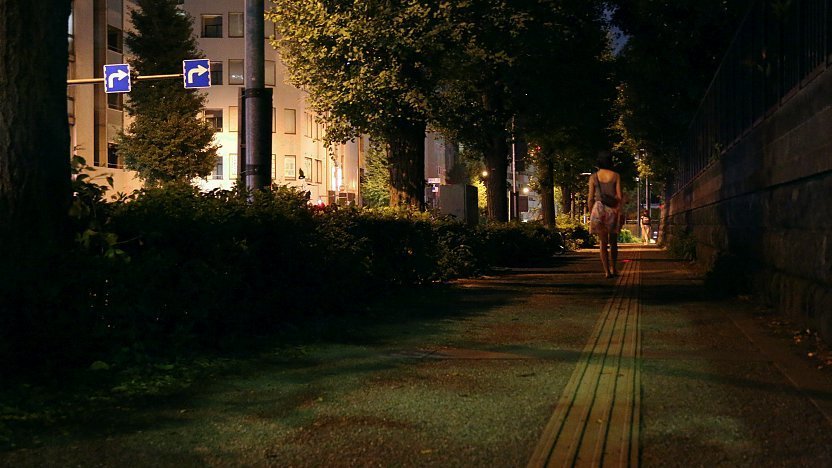
Visitors should be vigilant. Avoid providing potential perpetrators with opportunities, be aware of your surroundings and listen to your gut instinct. Remember that offenders come in all shapes and sizes and can be Japanese or not.
Police boxes, or koban as they are known in Japanese, can be found in all neighborhoods. Police officers stationed there are usually the first to react to a distress call in the neighborhood, and the koban is also a safe place to run to in case of emergencies.
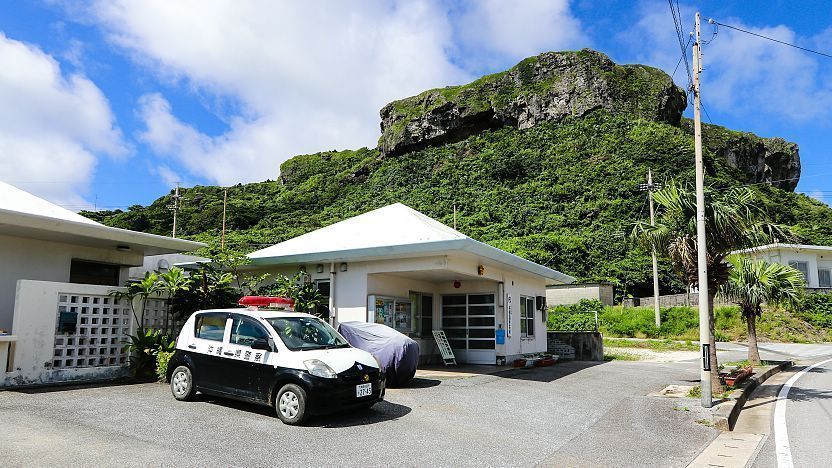
Accommodation
Business hotels and hostels are the best options for single travelers looking for economical and no-frills accommodation , short of staying in a capsule hotel . These lodgings are readily found in most cities across Japan and offer basic sleeping furnishings.
Ryokan let staying guests experience traditional culture and hospitality, as well as local cuisine and hot springs . Ryokan have traditionally not been catering to single travelers, and many still adhere to this tradition. However, things are changing, and the number of ryokan that offer plans for single travelers has increased a lot over recent years.
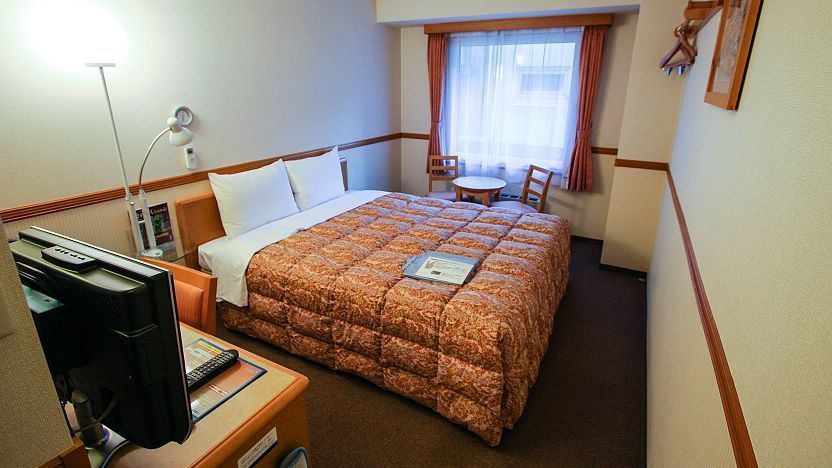
Dining alone has never been easier in Japan, and many places are well equipped to serve the solo diner. Restaurants have come to acknowledge the increasing trend and will typically accept reservations for a single diner. Casual dining establishments, like some ramen -ya even offer individual cubicles, and coffee shops and fast food restaurants are often filled with single customers. Some restaurants and izakaya may seat single diners at a counter in order to keep tables available for groups.
Nervous solo diners note that staff and fellow customers are used to single travelers, especially in the big cities where solo diners abound, and will not cast curious or pity looks. Staff tend to be patient with non-Japanese speaking customers who attempt to navigate the menu and order in a foreign language. That said, it also pays to do a bit of menu research before entering a restaurant , in particular those that utilize ticket vending machines for orders , to avoid the added stress of holding up those behind while you decide what to get.
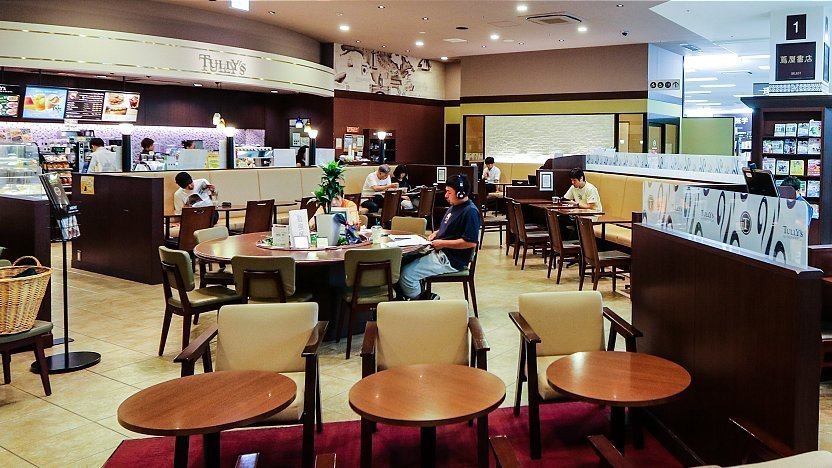
Meeting people
Joining a day tour or staying at a hostel are some easy ways to meet like-minded travelers. Signing up for a tour with a local volunteer guide or participating in a home visit could add a different element to your solo travel and allow you to meet local Japanese.
Saving your seat
Leaving your seat and your personal belongings unattended is a big no-no in many countries, but in Japan it is not uncommon to see customers leave expensive phones and bags at their restaurant table or shinkansen seat unattended. Nevertheless, it is not advisable to leave personal items unattended if you have to leave temporarily. Take at least your most important items like wallet and passport with you and use an item that you wouldn't mind losing to save your space instead.
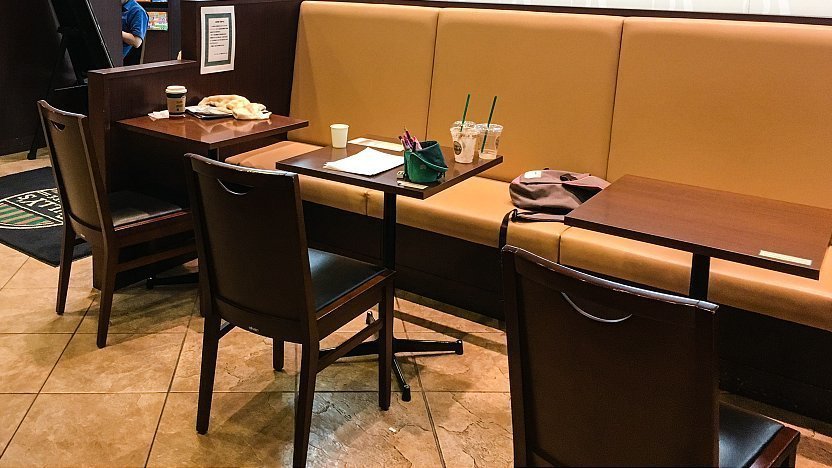
Outdoor activities
Outdoor activities like hiking can easily be completed by solo travelers. Even if you are a seasoned mountaineer, it is always prudent to inform someone of your hiking itinerary and to register your hike before starting on the trail. Having a working phone on your person is recommended in case of emergencies while having a bear bell can be a useful addition in some parts of Japan. Of course, if you have never hiked or are not a regular hiker, it is best to stick to short, easy routes or join a tour .
Water sports can be split into those you can do on your own and those that require joining a tour. Swimming at beaches is a typical water activity that can be done on your own, but make sure to pay attention to the tides and water currents so as to not endanger your life or others. Guided tours may require a minimum number of participants. Otherwise, be prepared to pay additional for a private tour.
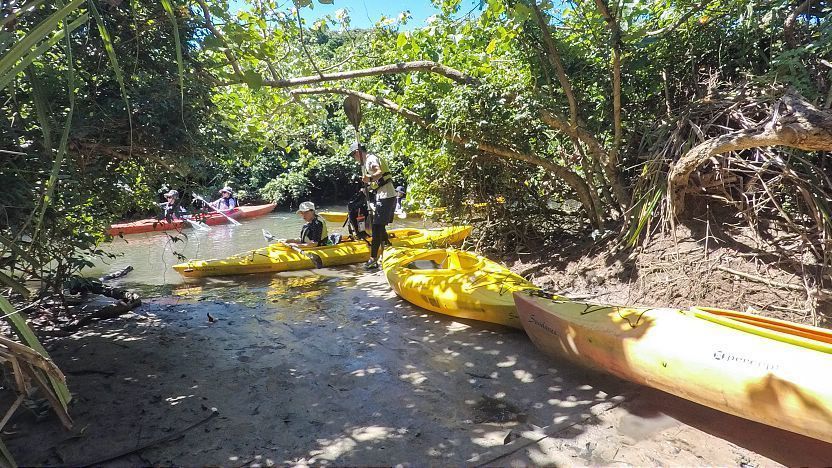
Tips for solo female travelers
Japan is admittedly one of the safest places to attempt as a first-time female solo traveler, and the probability of being harassed by locals is quite low. A steadily shrinking number of locals - mainly in the remote countryside - may stare at those who look and talk differently out of curiosity. Below are some tips for the solo female traveler.
Traveling alone
Targeted at the solo female traveler, our Solo Female Travel series introduces travel itineraries that have been put to the test by the author to answer the questions "Can a girl do this alone?", "Is it safe to visit alone?" and "Would the pace be too demanding?" amongst many others. Introduced destinations tend to be slightly off the beaten track, but still manageable by the average female.
Despite the popular images of Japanese youth using fashion as a creative expression, the general fashion for the average Japanese tends to lean towards the conservative side. A typical female outfit is usually quite modest with shoulders covered and a relatively high neckline even during the warmer seasons. The coverage protects the skin from getting tanned and avoids bringing attention to the body shapes. Hemlines tend to be shorter for the younger generation but typically fall around the knees for most, and socks or stockings are commonplace.
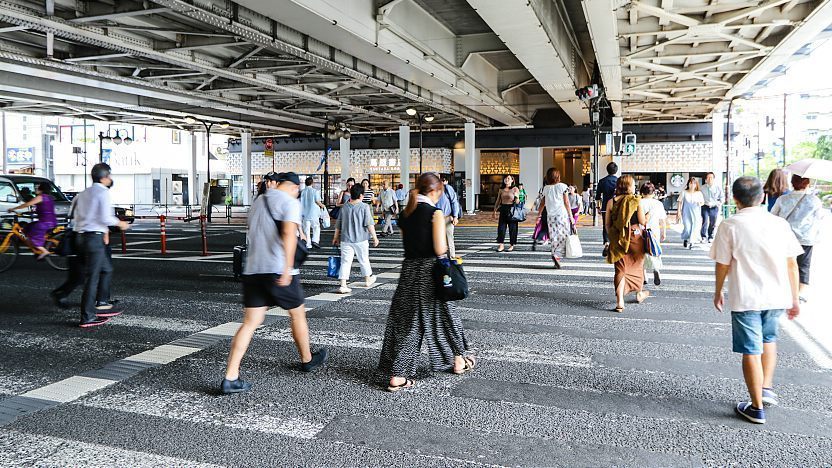
Sleeping on public transport
Traveling can get tiring, and it is common to see people sleeping on buses , trains and even on the train platforms. Theft on sleeping passengers remains relatively low, but as a solo female traveler there are a few additional things to look out for. If you are asleep, you will not know what is happening around you, and more often than not, fellow passengers will remain silent even if there are creepy people around you. Make sure that you do not expose yourself accidentally or invite intrusive gazes with your choice of clothes in addition to making sure that your belongings are secure. You cannot go wrong by erring on the conservative side when it comes to packing your travel wardrobe.
Sexual Offenses
Despite the seemingly low rate of provocation against women, there are certain areas where that ratio is skewed. Groping - inappropriate touching - and taking pictures from under a skirt or shorts (upskirting) are not uncommon occurrences especially on crowded trains.
Chikan is the Japanese term for groping and can refer to both the act of groping and the culprit. Sexual offenses on public transit have become prevalent enough that train companies especially in the bigger cities have introduced female-only train carriages to combat the issue (often during rush hours only). As a general rule of thumb, if you are worried about unwanted advances, it is best to avoid peak hours as a tourist and stick to the female-only carriage.
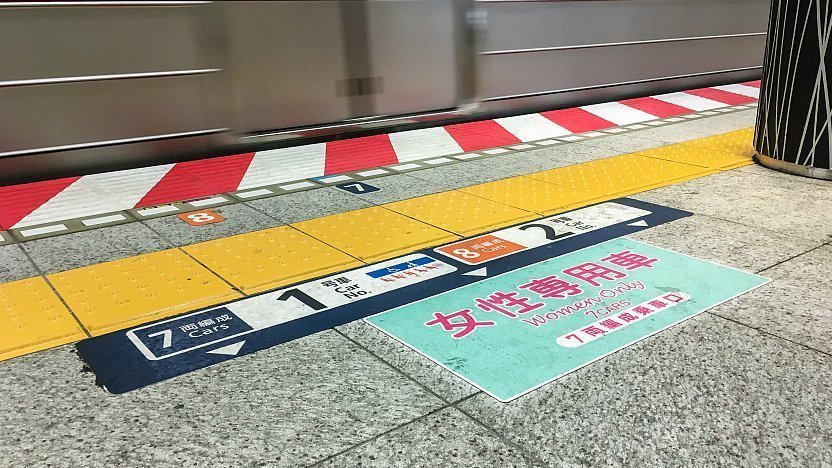
- Say "Stop!" or "Chikan!" to the culprit as keeping silent may escalate the situation and encourage the culprit to carry on
- If you are unable to identify the culprit, leave your spot and move somewhere else
- Grab the offender if possible or take note of any distinguishing marks or accessories on their person for future identification purposes
- Report the crime immediately to the train station staff or police
Questions? Ask in our forum .

We’re on the road right now – join in on the fun and follow @thebrokebackpacker on IG!
- Meet the Team
- Work with Us
- Czech Republic
- Netherlands
- Switzerland
- Scandinavia
- Philippines
- South Korea
- New Zealand
- South Africa
- Budget Travel
- Work & Travel
- The Broke Backpacker Manifesto
- Travel Resources
- How to Travel on $10/day
Home » Asia » Japan » ULTIMATE Guide to Solo Travel in Japan | Destinations & Tips for 2023
ULTIMATE Guide to Solo Travel in Japan | Destinations & Tips for 2023
Japan is the DREAM for many curious travelers. Manga, anime, sushi, cherry blossoms, Nintendo, Toyota, hot spring pools, Buddhist temples; the thought of these lit a fire in me! But with no one willing to tag along for the ride, I had to start planning a Japan solo travel trip.
There’s nothing like relaxing in hot spring pools, listening to Japanese patrons, eating real Japanese sushi under Tokyo Tower. And believe me, visiting Japan is even better solo .
You can take your time. You’ll get to know the locals and test your language skills. Japan is also extremely friendly and safe.
It’s perfect for lone wolf adventures through her many islands. You can experience it all by taking in the beauty of her rural landscapes or venturing into her busy cities at the forefront of high tech.
With all the excitement of traveling to Japan, I’m here to jump-start this new endeavor as you plan this journey to experience the beauty of Nihon and Nippon for yourself. So, let’s start with how to make the most of your solo traveling in Japan, the best places to stay, where to go, and how to survive in this unique country.

7 Things to Do in Japan When Traveling Solo
5 best solo destinations in japan, the best travel apps for solo travel in japan, safety tips for solo travelers in japan, tips for solo traveling in japan, how to meet people when solo traveling in japan, final words for solo travelers in japan.
Backpacking Japan is EPIC. Can’t find a buddy to go with? Go alone!
I’m here to show you that traveling solo in Japan is a breeze . However, there are seven things that you should consider when traveling around the country. These can be things to do alone, taking full advantage of your solo experience, or activities you could do with your new travel friends.

Unlock Our GREATEST Travel Secrets!
Sign up for our newsletter and get the best travel tips delivered right to your inbox.
Hangout in Hostels
One of the best solo travel tips is to stay in one of the amazing hostels in Japan !
You can meet fellow travelers while staying in a great place on a reasonable budget. You can save money and rely only on your bedroom to sleep, with the option to socialize with others in shared lunging areas or use those extra funds to see more of Japan. Hostels also have various accommodation options, so even a solo female traveler is well cared for.
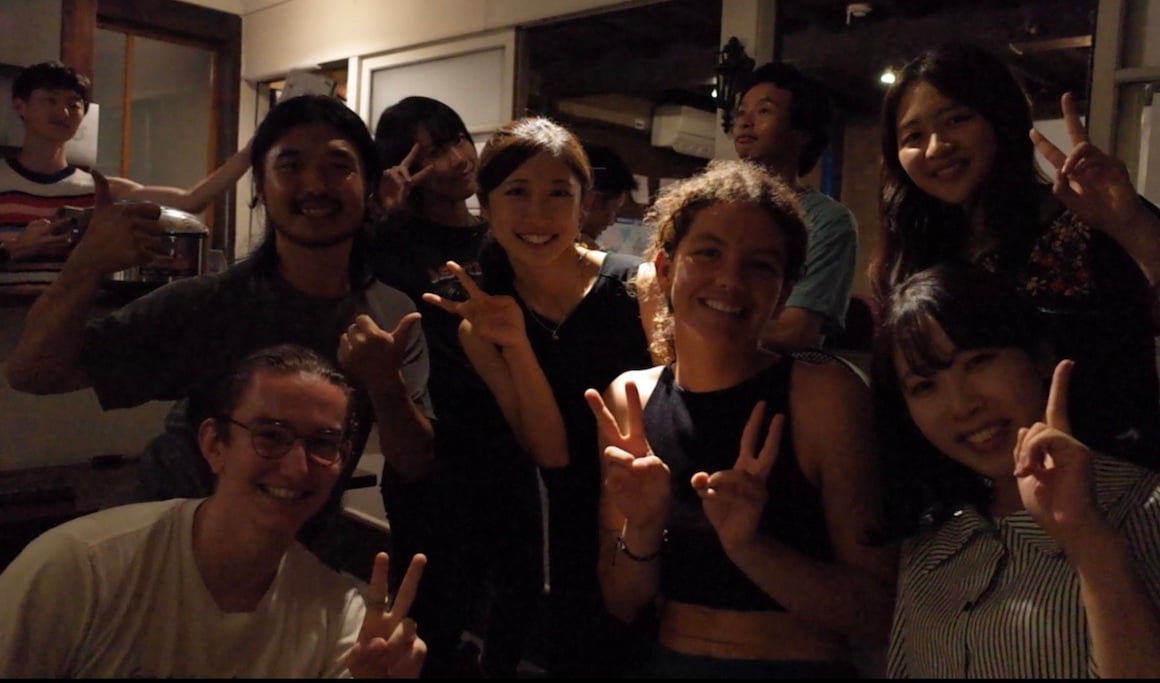
Take a Group Tour
Even if you ride solo in Japan, taking a group tour is a great way to break up the experience and keep yourself sane with socializing. Sometimes it’s nice to relax and let a tour guide take you to some unique attractions as you lay back and have a yarn with a fellow traveler.
I loved the bus tour of Tokyo because I could sit and chat to all my new buddies while escaping the rain.
Stay as a Home Stay With a Japanese Family
If you want to test your Japanese and get a taste of traditional life in Japan, the best way to do this is to organize a homestay with a Japanese family. Despite it being more common for younger adults and teenagers, there is no age limit for homestays. There are many brilliant companies like Go! Go! Nihon that makes it easy.
Spend a Relaxing Day at an Onsen Hot Pool
One of Japan’s most famous past times is relaxing in an Onsen Hot pool, and considering this is often a solo experience, it is one of the best ways to relax on holiday. There are many places in Japan that host hot pools. However, the most famous is Kurokawa Onsen, found in Minamioguni.
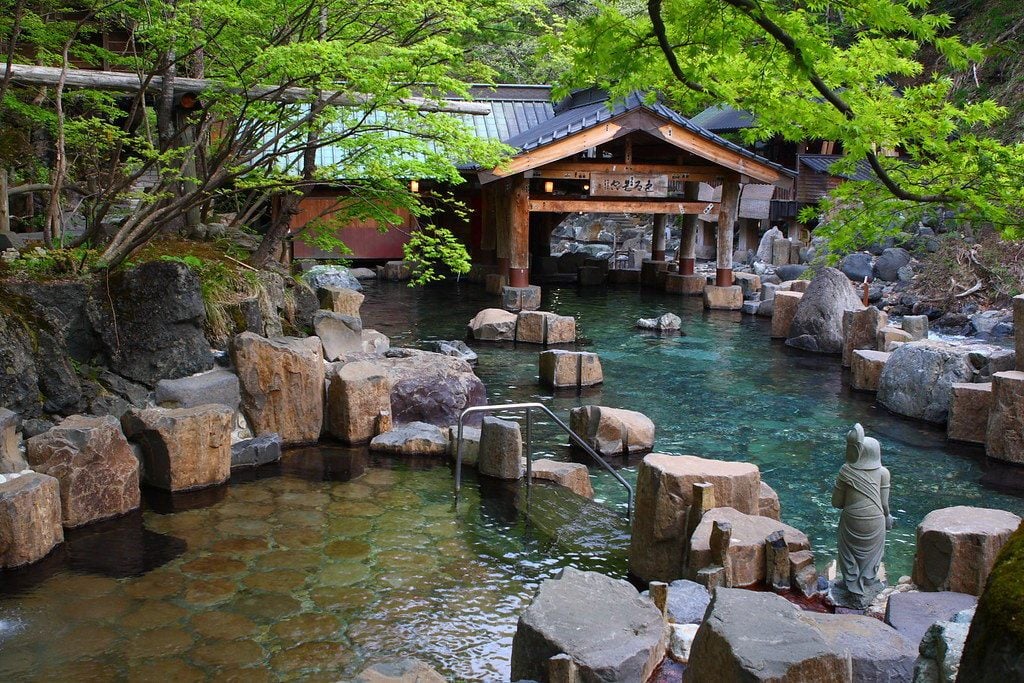
Have a Quiet Trip to a Traditional Japanese Shrine
Wherever you find yourself in Japan, you are likely to encounter a traditional Japanese shrine, and what better way to learn about the cultural heritage of its people and spend some quiet alone time than a trip to these places! In Tokyo, a popular shrine is Ise Jingu, a beautiful 4 th -century BC shrine dedicated to public happiness.
Relax With a Traditional Tea Ceremony
Experience the ancient tradition of ‘way of the tea’ as you taste one of Japan’s most sacred ceremonies. This quiet Japan solo travel experience allows you to witness first-hand the ceremony and the delicious taste of tea. Kyoto and Uji have various places for tourists to experience this tea ceremony.
Attend a Japanese Language Class
If your language skills could do a little more work, attending a Japanese language class is a great solo adventure in Japan. You can meet others trying to learn the craft and practice at your own pace, then test what you’ve learned in your solo ventures around Japan.

We’ve tested countless backpacks over the years, but there’s one that has always been the best and remains the best buy for adventurers: the broke backpacker-approved Osprey Aether and Ariel series.
Want more deetz on why these packs are so damn perfect? Then read our comprehensive review for the inside scoop!
Japan is like nothing else. But why? It’s a place I found where you’ll find something magical, futuristic, and unexpected around every corner.
The people and their culture will make you understand why Japan is a special place to so many people (including ourselves). I have hand-picked five of the best solo destinations in Japan to ensure you still have a brilliant time on holiday without feeling like you are missing out on a complete experience—and to make the most of riding alone.
Staying in Tokyo is the best option for solo travelers in Japan because, as you may already know, it is the capital city. Here you will find an ultramodern megacity intermixed with traditional Japanese cultural heritage, world-class hospitality, attractions, and public transport. I also love that it’s super visitor-friendly and safe for solo travel.
I can guarantee it’s a breeze to get around, but that is not all! It is the place to be to see the famous Japanese tech industry, be served by a robot waitress in a mall, or gaze at the headquarters of the big tech and gaming giants.
However, to experience a slice of their older attractions, I recommend the many Buddhist temples, such as Senso-ji. Oh, and you cannot beat the high city views from Tokyo Tower and Mount Fuji.
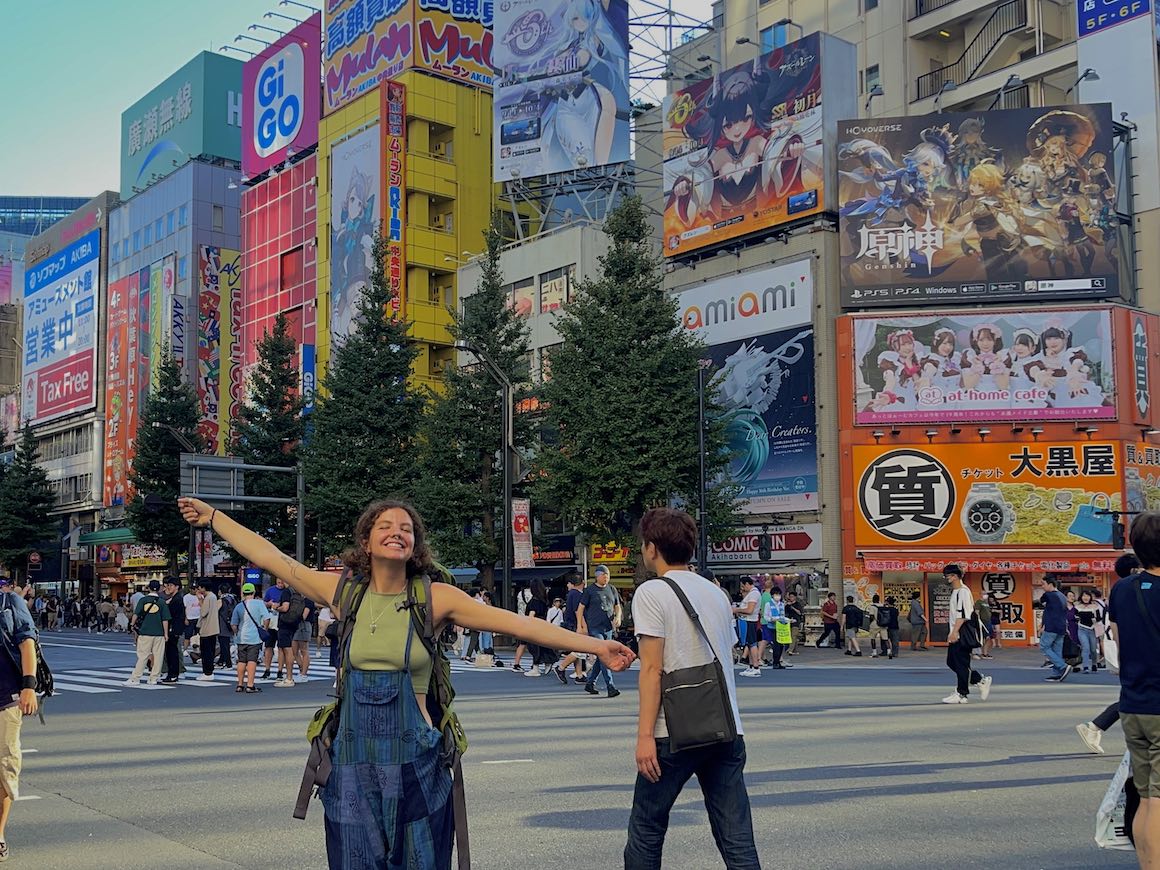
When staying in Tokyo, one of the best hostels for Japan solo travel I found was the Tokyo Guesthouse Oji music lounge . Not only was this two-star hostel easy on my budget, but it was also perfect for meeting fellow travelers while playing the lone wolf.
Heading to the former capital of Japan, Kyoto is another brilliant place for solo travelers to experience Japan. I can tell you that its famous Buddhist temples, Shinto shrines, palaces, and gardens help the city live up to its UNESCO World Heritage Site, without a doubt! My must-see attractions for visitors include Kyoto Imperial Palace, Kiyomizu-Dera, and Kyoto Tower (you can compare notes with a visit to its Tokyo sister).
Another reason why I adore Kyoto so much is its entirely visitor-friendly, with excellent public transport and friendly locals who are happy and willing to interact with a mixture of miming and simple Japanese. All these things make it an easy solo traveling experience.
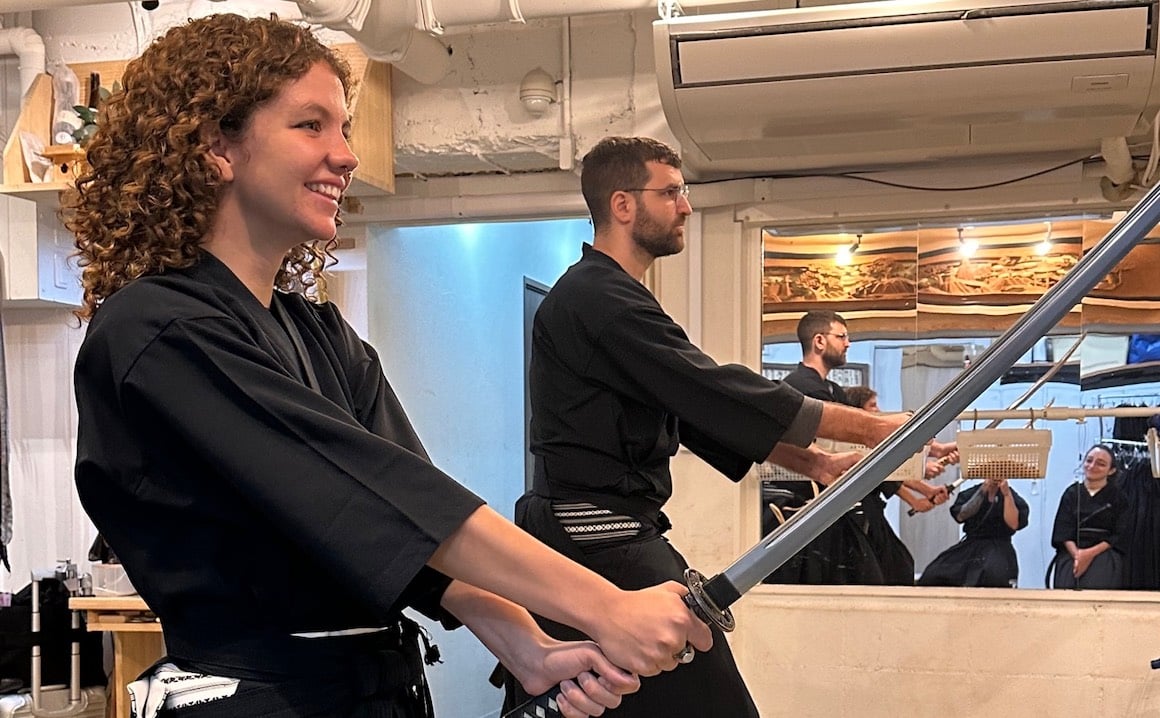
So where should you stay in Kyoto ? You will be ecstatic to learn they have MANY solo travel-friendly hostels where you can relax.
The Kyoto Hana Hostel is my top pick; this hotel isn’t just a budget-friendly choice, with a five-minute walk from Kyoto Station Central. I love the opportunities to meet others in their range of shared bunk rooms, with the option for female-only! They even have a Japanese sleeping experience if you pick a private room with a shared bathroom.
Visiting Japan’s second-largest city Osaka, you will find a wonderful Japan solo travel experience that is hard to beat! All the while being treated to an affordable travel experience with excellent public transport and an endless list of things to do and see!
During my visit, I adored learning about Osaka’s origins dating back to the 3rd Century AD and how it quickly established itself as a significant port. Today this old-timer still holds a strong sense of modernity. However, it isn’t all about its industry when you come here.
Osaka offers SOOO many things for solo travelers, including its mouth-watering food and the iconic Osaka Castle. I particularly recommend a stop by the Osaka Museum of Natural History , its numerous parks, and Buddhist temples.
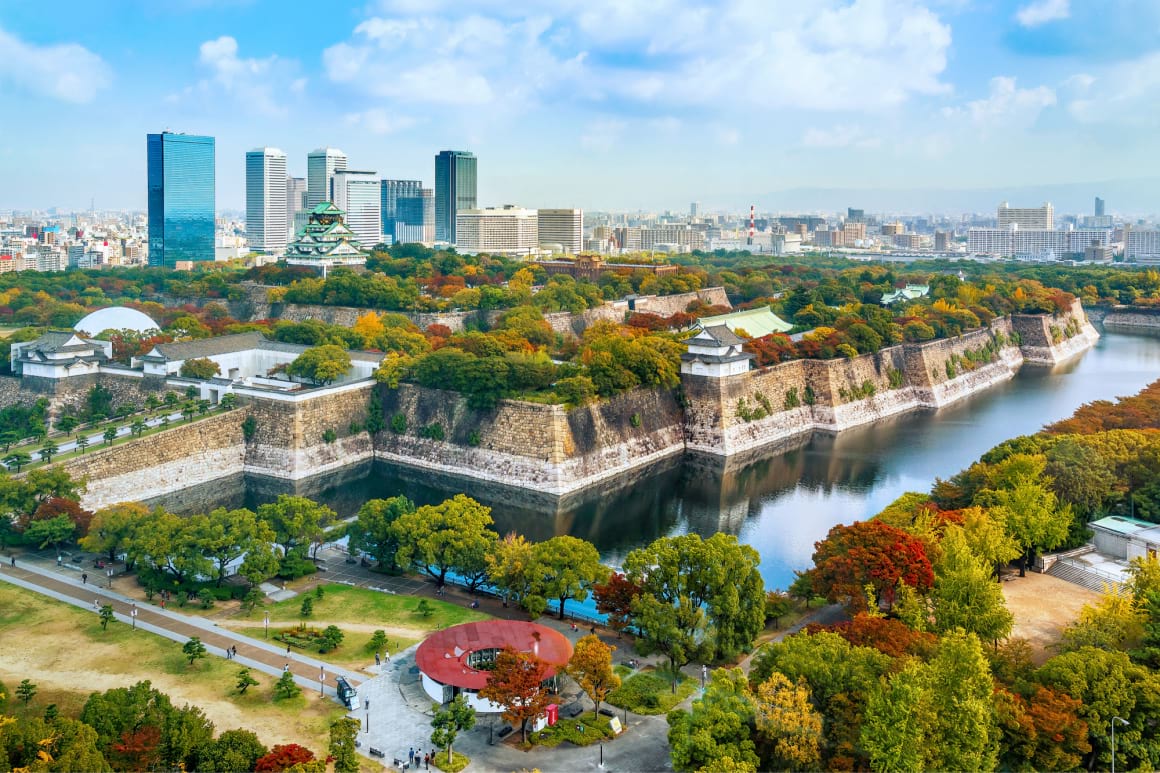
When you stay in Osaka as a solo traveler, I can rest your worries with their range of hostels waiting to welcome you to this iconic city. Notably, The Stay hostel is my favorite, as a great budget-friendly choice, all while being treated to shared bunkrooms, a rooftop terrace, a shared kitchen, and dining and lounging areas.
My favorite place to go on a solo mission through the rural parts of Japan is Hakone.
The best thing about this place is, of course, it’s… HOT SPRINGS! This little 1892 village may have this as its main tourist drive, but it’s certainly not the only thing. You will adore its location in the Fuji-Hakone-Izu National Park just west of Tokyo with gorgeous lakes and mountain forests.
It is a perfect solo destination! You can make the most of its tranquility, take a solitary walk, and relax in the hot springs at the end of a sweaty hike. Adding to this, it’s just a short stop outside of Tokyo.
In my mind, it makes it even better as you could take a day out of city life to taste rural Japan. So if you take the dive to Hakone you need to check out Lake Ashinoko, Hakone Shrine, the Botanical Garden, and of course, Hakone Onsen (the to-die-for hot spring).
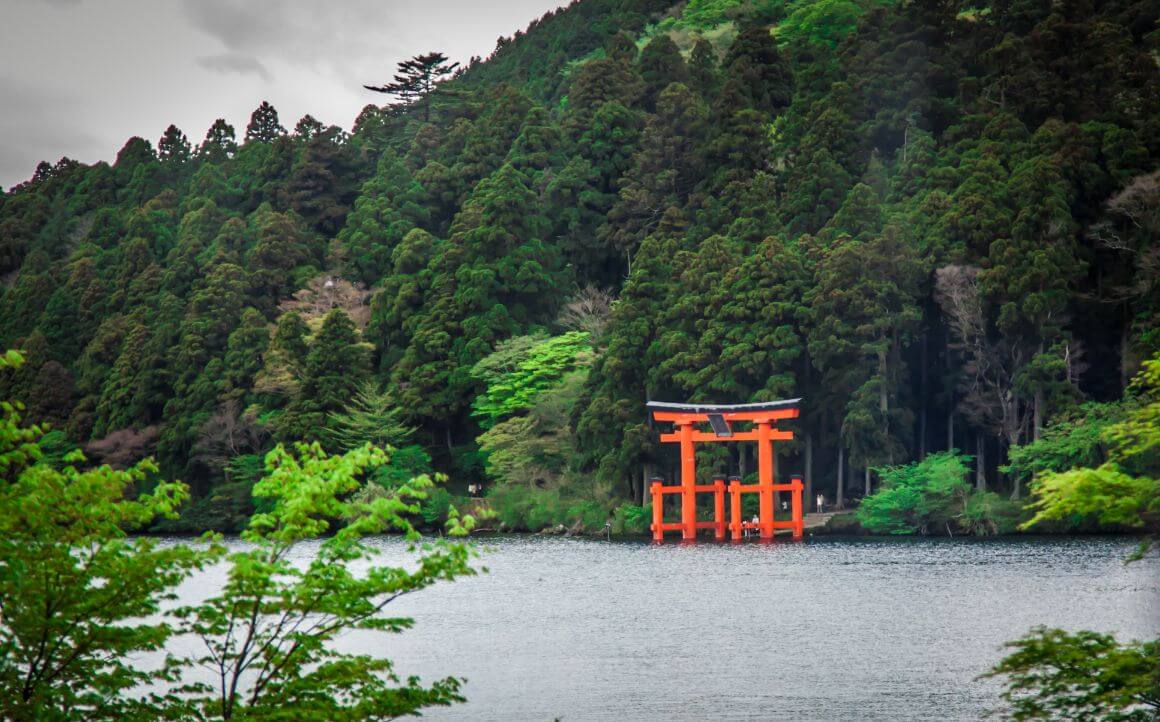
If you decide to stay in Hakone, I recommend the Guest House Azito is in the heart of the town. Here you can choose several sizes of shared dormitories, traditional Japanese beds, and even a little apartment for those wanting that complete Japan solo traveling experience.
Hokkaido is a real treat for solo travelers in Japan. This isn’t just because it’s the second largest, most northern island of the Japanese archipelago; it’s a poorly kept secret that we tourists are taking advantage of every year come winter!
Why is it so desirable? All solo travelers can admire this wild haven for nature lovers and ski enthusiasts with over seven national parks and numerous ski fields.
In my opinion, the best place to see it all is the largest national park Daisetsuzan. Here, you will be gifted with stunning views at their peak season in Autumn. In Daisteuzan, you MUST visit Mount Niseko (the largest mountain), with its brilliant views as you venture out into the untouched wild landscapes.
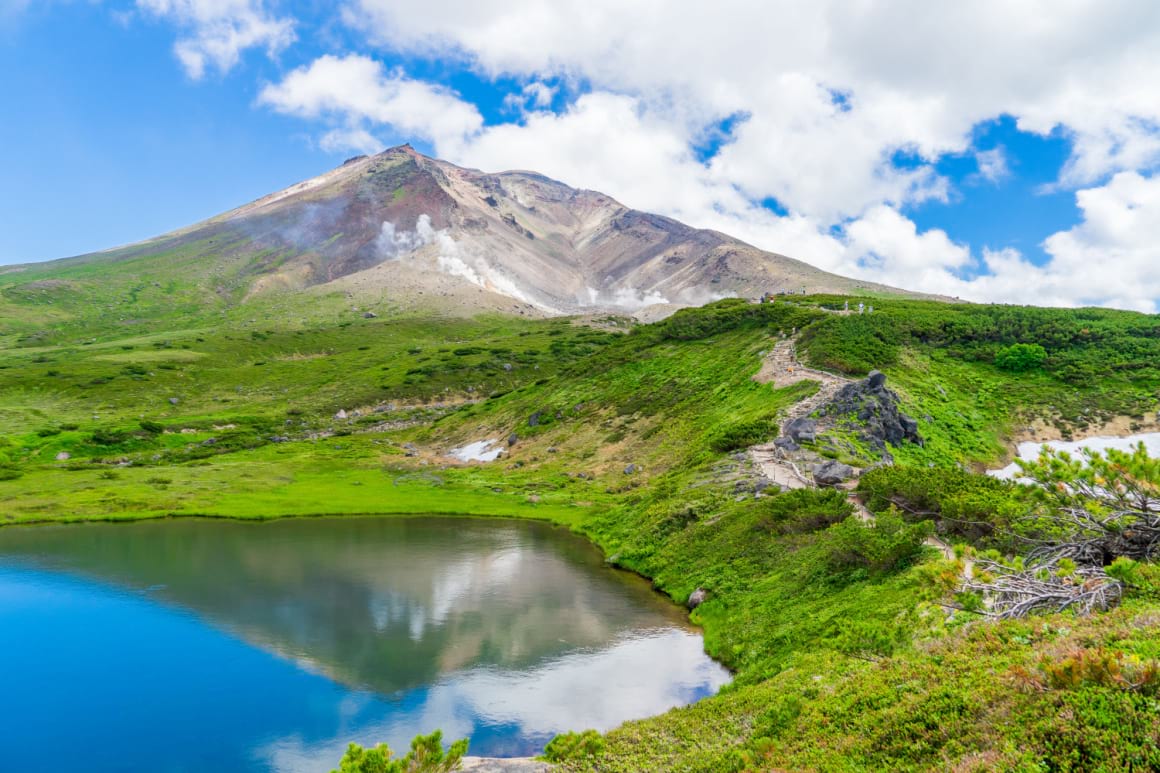
Although say you want something more ‘chill’? For those wanting a slice of busy city living, I recommend visiting the largest city in Hokkaido, Sapporo. Not only is this a great place to make your base while exploring the island’s wonders, but it also has many fun things to do inside its walls.
Sapporo is a mountainous city famous for its beer, skiing, and the annual Sapporo Snow Festival, so to say there is a lot to do here would be an UNDERSTATEMENT. Learn about the rich brewing history or dive deeper into the snowy attractions that make the region so famous.
During a stay in Hokkaido one of the best hostels to stay when traveling solo is Ten to Ten , found Sapporo. They have shared bunk rooms with an option to pick female-only or private rooms, so this is appreciated! They also have a laidback and friendly attitude which is perfect for a solo traveler in Japan which makes it a highlight of a trip to Hokkaido.
Having the right travel apps on hand when traveling solo in Japan will make the whole experience a blast. But what are the best travel apps for going solo?
- Japan Official Travel App. The perfect tool on hand to give you a must-see travel inspiration.
- Jorudan. The official Japan travel app for getting around Japan.
- Hostelworld . The best place for finding hotels at a moment’s notice.
- Japan Wireless. A place to get pocket Wi-Fi or a mobile SIM.
- Couchsurfing . Find a couch to sleep on for a cheap way of travel.
- Dating Apps. Apps like Tinder, Grindr, and Bumble allow you to make friends and date while traveling.
- Ho lafly . An e-SIM application that allows you to download a data-only SIM card without installing a physical card.
If meeting like-minded travellers is your goal, check out the current popular Facebook groups for travelers in Japan. Or, just do it the old-fashioned way and head to a hostel bar and introduce yourself!

Stop stressing about your phone service when you travel abroad.
Holafly is a digital SIM card that works smoothly like an app — you simply pick your plan, download it, and voilà!
Roam around Europe, but leave the roaming charges for the n00bies.
When traveling anyway, it’s important to know how to travel safely . Being solo in Japan is no exception, although it is known that this country is a very safe place to visit with a low crime rate. Travelers shouldn’t get complacent.
I want to share several tips to ensure that your dream trip doesn’t turn into a nightmare. Let’s go.
• When traveling solo in Japan, don’t travel alone at night ; if you must, keep to well-lit and populated areas. This is particularly true if you don’t know where you are or are unfamiliar with the area.
• Japan still has its handful of bag snatchers, so keep your bags tightly closed and buttoned u p, and never let it out of your sight! The same goes for cash; make sure you don’t keep it all on your person at any one time and keep it locked up securely at your hostel or hotel.
• Speaking of cash, it’s also a great idea to have cash on you in case your phone breaks, your card stops working, or you find a shop that only accepts money.
• Female solo travelers in Japan can opt to stay in hostels with female-only dorm rooms or pay a little extra for a private room if they feel unsafe being in shared spaces. However, don’t let these worries ruin the experience of staying in a hostel.
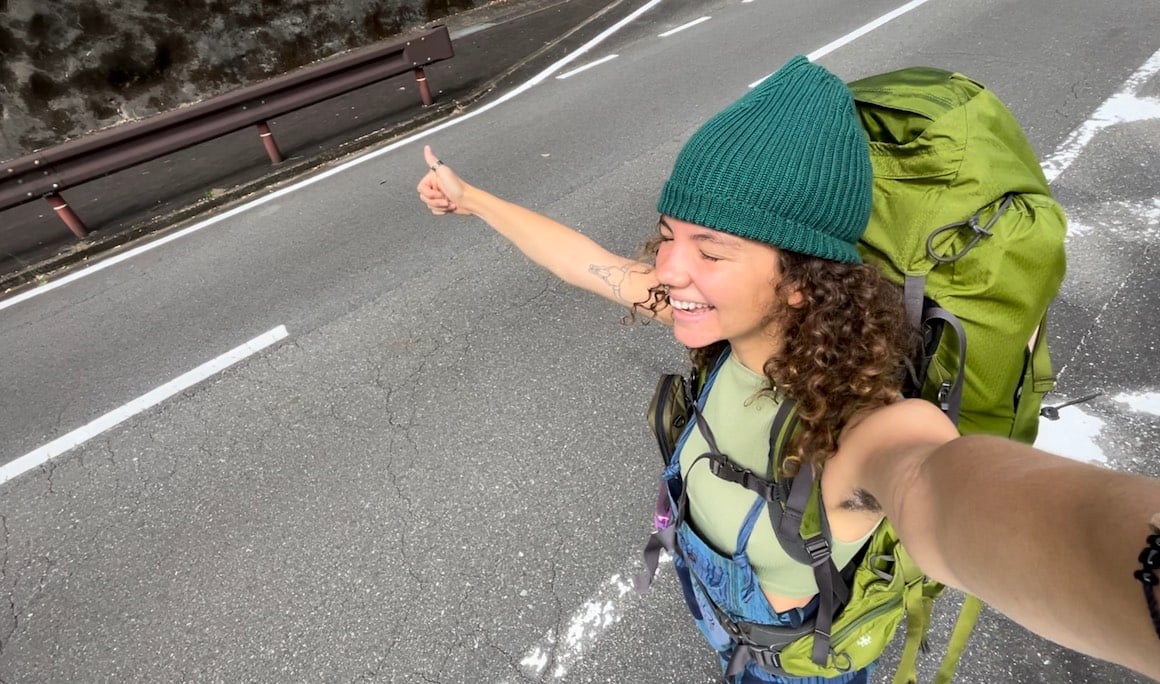
• The public performers of the geisha and maiko don’t like their photos being taken, so don’t even ask for a selfie! Also, as extra respect for their culture, don’t misuse your chopsticks and try to learn the art before you go. Plus, learning Japanese will make the locals love you!
• When you go out, watch your drinks and don’t accept food or drinks from strangers.
The final Japan solo travel tip I can offer is much more general…. Make sure you assign a safety person back home that you tell them where you are going regularly, so if something were to go wrong, they could ring alarm bells.
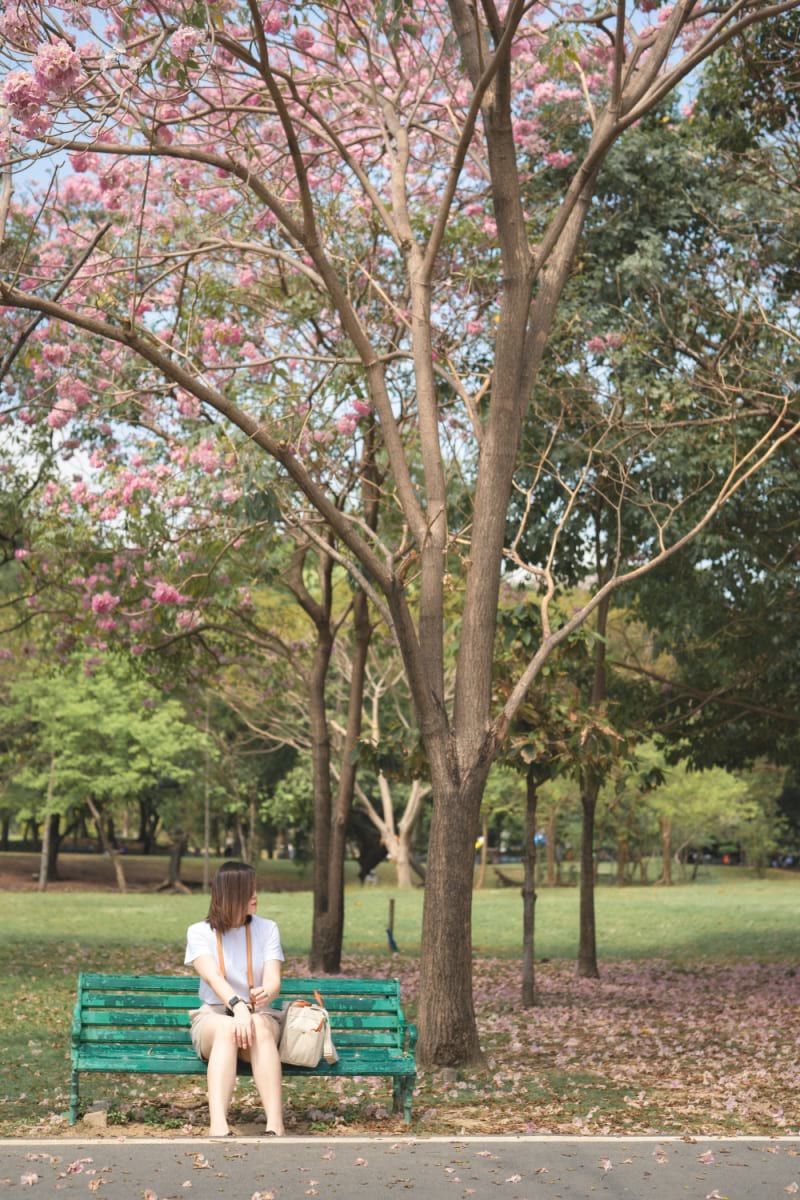
- Get an IC card ASAP. You will quickly find (as have I) our golden ticket to galavanting around
- Japan’s public transport with this prepaid card!
- Buy Yourself a SIM (I particularly love the air sim) or something less finicky like a portable pocket Wi-Fi. I believe that a SIM or portable Wi-Fi is a must when traveling solo in Japan. TRUST ME! You will save a lot on roaming fees and never get lost.
- Get a JR rail pass. I found this pass was a lifesaver. It allows you to see ALOT of cities by train, all for one fee, that will take you all over Japan.
- Polish up your Japanese . Knowing basic phrases in Japanese is a must. I can assure you making the effort to talk with locals in their mother lounge will go a long way!
- Don’t let someone else plan your trip. I find the most fun you have when traveling is when you forge your own path. It allows you to make the most of your solo trip to Japan and see it all!
- Become the lion of your own adventure. Don’t be afraid to get a little crazy and throw aside those set plans if something even more enticing rears its head from behind the tall grass!
- Crime may not prowl in Japan as much as in other places, but… Be aware of what is around you, and don’t do anything too crazy!
- Travel insurance is a MUST. Trust me, it can save your trip. Would you want to be stuck in an airport without a plan B?
ALWAYS sort out your backpacker insurance before your trip. There’s plenty to choose from in that department, but a good place to start is Safety Wing .
They offer month-to-month payments, no lock-in contracts, and require absolutely no itineraries: that’s the exact kind of insurance long-term travellers and digital nomads need.

SafetyWing is cheap, easy, and admin-free: just sign up lickety-split so you can get back to it!
Click the button below to learn more about SafetyWing’s setup or read our insider review for the full tasty scoop.
Meeting like-minded people is one of the best things about solo travel. Here are some of my favourite ways to meet others on the road.
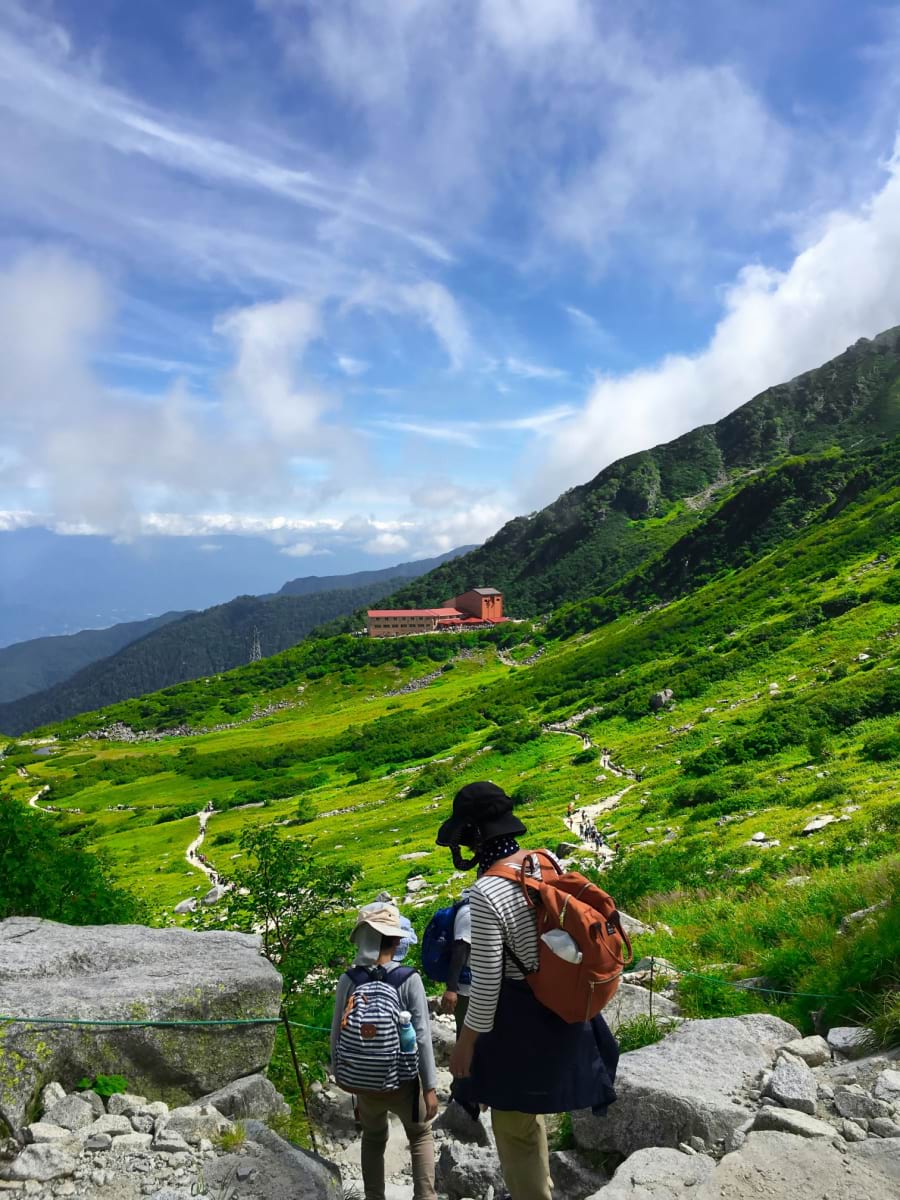
- Keep your eyes peeled for events . I find events a great way to meet people even if solo traveling Japan. You never know what might be going down when you’re in town!
- Make social connections through apps. Whether you are looking for a fun hook-up or are a solo female traveler , I find these offer endless ways to satisfy your social juices. So even you internet lurkers have no excuse!
- Take advantage of short-term memberships. Sure, even if you are JUST in Japan for a few days, there are countless reasons I say why you’d benefit from these. You can work out at a gym or sports club and meet others while getting toned.
- Check out the brilliant Facebook groups. You can bet Japan has many Facebook groups to forge tight networks between foreigners. But what ones? These particular ones are nifty: Japan Travel , Friendly Discussion Group , Destination Japan , Japan Travel Community ?? , and For Foreigners Living in Japan .
- Be open to making friends! The number one thing I would say that will keep you from meeting people in Japan is being shut away. The best advice is to be present, friendly and say yes to every opportunity! You will soon find making friends while traveling solo will be a thing of the past!
Japan is a great solo travel destination with many fun things to do and a rich cultural heritage, making it one of the best places to go on holiday. There are not many terrible things to say about it as a place to go when you are visiting by yourself; however, with these tips we have offered, the small downsides can easily be avoided with a little planning.
Japan highlights the best things about traveling solo as you forge your path and make your own choices. If you want a lazy hot pool, you can do it! If you want to use this trip to improve your language skills and have meaningful discussions with locals in Japanese, you can also do that.
It does live up to its reputation, and if you get the chance, you won’t regret visiting Japan for a solo experience.
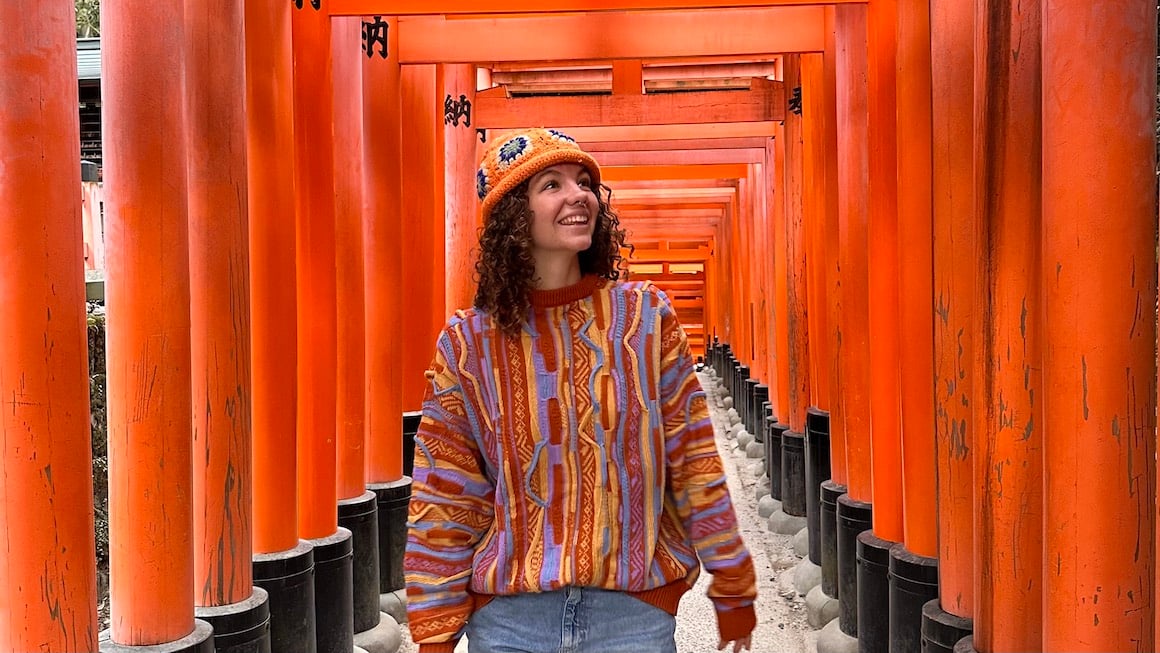
And for transparency’s sake, please know that some of the links in our content are affiliate links . That means that if you book your accommodation, buy your gear, or sort your insurance through our link, we earn a small commission (at no extra cost to you). That said, we only link to the gear we trust and never recommend services we don’t believe are up to scratch. Again, thank you!

Share or save this post

Leave a Reply Cancel reply
Your email address will not be published. Required fields are marked *
Save my name, email, and website in this browser for the next time I comment.
Notify me of followup comments via e-mail.
Travels with Erica
A Solo Traveller's Guide to the World
What I Wish I Knew Before Taking a Solo Trip to Japan
This post may contain affiliate links. If you click on my affiliate link and purchase something (at no additional cost to you!), I may earn a small commission that helps me keep the blog running. Thank you so much for your support!
Japan is one of the most popular tourist destinations in the world. Most people dream of going to Japan, but there are a few important things you need to know before planning a solo trip to Japan.
Compared to lots of other Asian countries, Japan is super easy to travel in and great for people who are new to travelling alone .
Don’t get too confident yet though because there are tons and tons and tons of mistakes I made when I was in Japan solo, and I’ve been travelling alone since 2015.
Japan is unique. Things that typically hold true for travel in other parts of the world don’t always hold true in Japan. Even things that work in Japan’s neighbour South Korea don’t necessarily work in Japan.
So, I’m going to share everything I learned on my solo trip to Japan with you to hopefully save you some mistakes.
Actually, at this point, I’ve been to Japan three times and feel like I definitely know what mistakes not to make. I’ve made nearly every mistake you can.
Let’s get into the nitty gritty of solo travel in Japan! Hopefully by the end of this article you’ll feel confident and prepared and be able to travel in Japan solo like a pro.
Table of Contents
Stay Near the Main Train Station
The biggest mistake I made on my first solo trip to Japan was not staying near a major train station.
I know when you travel to most countries around the world, you don’t really have to stay near a major train station. As long as you’re near some sort of public transportation, you’re good to go.
That isn’t the case in Japan.
If there is only one thing you take away from this post, it is that you need to stay near a major train station. Ideally, about a ten minute walk away. That way you’ll be super close to the train station but far enough away that it’s quiet.
Most Japanese cities have one major train station. It’ll typically be the name of the city followed by the word station. Like Osaka Station or Kyoto Station of Fukushima Station. You get the point.
Tokyo is a huge city. Huge doesn’t even describe it. Since it’s so large, there are many major train stations.
The two I recommend staying near are either Tokyo Station or Shinjuku Station . They’re pretty central and have access to lots of different metro and JR lines.

Why is it Important to Stay Near a Major Train Station?
There are two main reasons it’s important to stay near a major train station:
- Access to lots of different metro and JR lines so getting around is quick and easy
- Lugging luggage around on Japanese metros is a hassle. Even if you only have a carryon bag, the trains are often crowded and have lots of stairs. Staying near a major train station means you can just leave the train station and easily walk to your hotel or Aibnb and avoid having to transfer to the metro, JR, or bus to get to your hotel.
Trust me. It’s 100% worth it to stay near a major train station even if it means you have to pay a little bit more for your accommodation.
It is the one tip I give everybody when they’re planning a trip to Japan. Whether it’s a solo trip to Japan or a group trip to Japan.
My Favourite Hotels Near Train Stations
- Tokyo Station: Via Inn Prime Nihonbashi Ningyocho
- Shinjuku Station : Hotel Sunroute Plaza Shinjuku
- Kyoto Station : Hotel Kanra Kyoto (definitely a splurge but worth it!)
- Osaka Station : Hotel Monterey Le Frere Osaka
- Kanazawa Station : Hotel Resol Trinity Kanazawa
Get Outside Tokyo and Kyoto
On my first solo trip to Japan, I only went to Tokyo , and that was a big mistake. Tokyo is nothing like anywhere else in Japan. It’s extremely busy, hectic, and overwhelming.
Kyoto is the next most popular city in Japan for tourists, and I honestly found it a big overrated. Please don’t crucify me for that!
I think that one of the best things you can do when in Japan solo is get outside these two major tourists hubs and see a little bit more of what Japan has to offer.
Osaka is super close to Kyoto, and it has a totally different vibe to Tokyo and Kyoto. It is way more relaxed and laid back and has a lot of interesting tourist attractions. Including Universal Studios Japan !
The food in Osaka is also top notch, and it’s known as the foodie capital of Japan.
If you visiting Kyoto is your dream because it looks beautiful and full of ancient temples and things to do, I recommend visiting Kanazawa.
It’s everything I thought Kyoto would be and more. Kanazawa is my favourite city in Japan and one I wish more tourists visited. Plus it’s way more affordable than Kyoto, which is a huge plus for solo travellers on a budget.
I don’t really care where you go, but I do highly encourage you to get outside of Tokyo and Kyoto and see a little bit more of Japan.
You won’t regret it. There are so many interesting things to do in Japan that most tourists don’t know about because most people only go to Tokyo.
And trust me when I say that I don’t know a single traveller who says Tokyo is their favourite city in Japan.
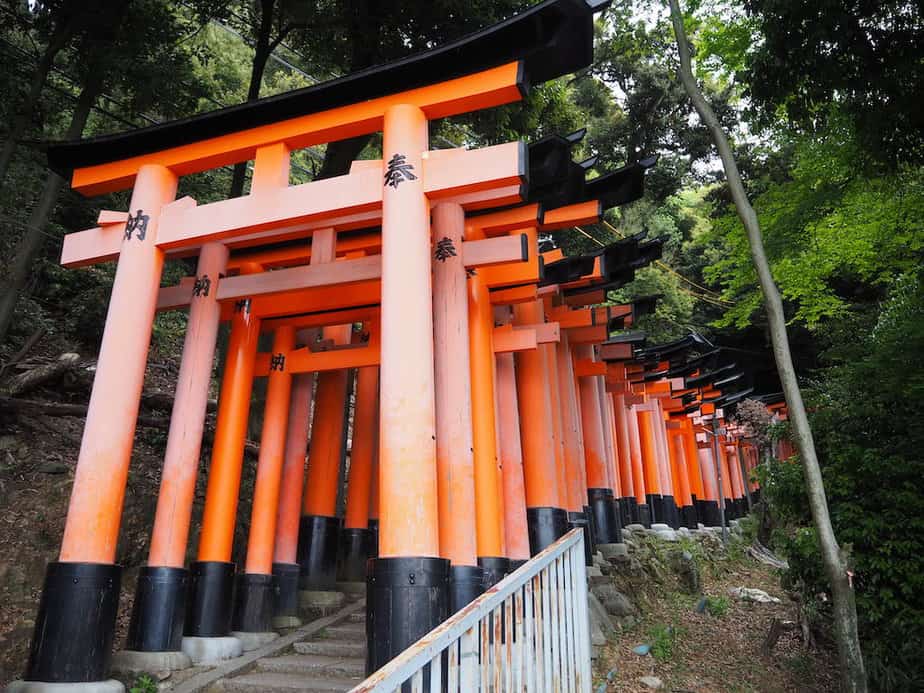
Install an Esim on Your Phone
Having access to the internet with data on your phone is an essential part of your solo trip to Japan. It’ll make your life so much easier.
To easily travel around Japan, you need access to the internet. To get around, to figure out what train to take, find tourist attractions, and make sure you pick the perfect place to eat.
Luckily, there is an easy solution on how you can have data on your phone everywhere in Japan.
That’s by installing an esim on your phone. An esim allows you to purchase local data for whatever country you’re visiting. In this case, Japan. You buy an esim, and you can use your phone’s data just like you do at home but without any high roaming fees.
All you have to do is purchase an esim either online or through the app , install it on your phone, and make your esim your main source of data. The entire process takes less than five minutes and is very intuitive and easy. You can even install an esim on your phone before you arrive in Japan, and it’ll automatically activate when you turn on your data in Japan, and you phone connects to a Japanese network.
I like to purchase my esim online because it gives you a QR code. You just scan the QR code on your phone, and your esim is set up in a few easy clicks.
Esims allow you easy access to phone data without having to rent a wifi egg , purchase a local sim card, or incur high roaming fees with your local carrier.
I recommend esims to all my friends and family when they travel, and they all love it as much as I do.
Install an esim on your phone to make getting around Japan easier and stress free.
My Favourite Esim
Since esims are a relatively new technology, there aren’t a lot of reliable companies offering them yet. And you do not want to purchase an esim from an unreliable company and be stuck stranded without phone data.
I love Airalo . It’s my go-to esim provider, and I purchase all my esims through them.
They have the most esims available for the most countries compared to competitors. They also offer incredibly good prices and always have reliable data. You purchase a certain amount of data up front. If you’re close to running out of data, you can purchase more data to be added to your esim with one quick click in the app.
Another option you can look into is Drimsim . Unlike Airalo, Drimsim charges you per MB used rather than charging you for a certain amount of data up front.
If you don’t plan on using much data, Drimsim may be the better option. I highly recommend if you choose Drimsim to turn off your data whenever you’re not using it. This will prevent data accidentally being used in the background and running up your bill.
I tend to use a fair amount of data when I travel between Google Maps, texting, and scrolling social media while eating alone, so Airalo is my esim of choice.
I’m normally in a country for three to four weeks at a time and purchase the 5GB plan. I’ve never gone over before, but there have been a few times when I’ve been close. If you’re only in Japan for a week or two, you should be fine purchasing a 1GB or 3GB plan.
The 3GB plan is probably your best choice. It’s only a dollar or two more than the 1GB plan and gives you the peace of mind that you won’t accidentally run out of data while out and about exploring one day.
Plus it’s likely more expensive to purchase a 1GB top up if you run out of your pre-purchased 1GB data than it is to purchase a 3GB plan.
Anyways, whatever amount of data you choose to purchase is up to you. The important thing is that you install an esim on your phone, so you can easily access the internet when out exploring. This is especially important as a solo traveller !
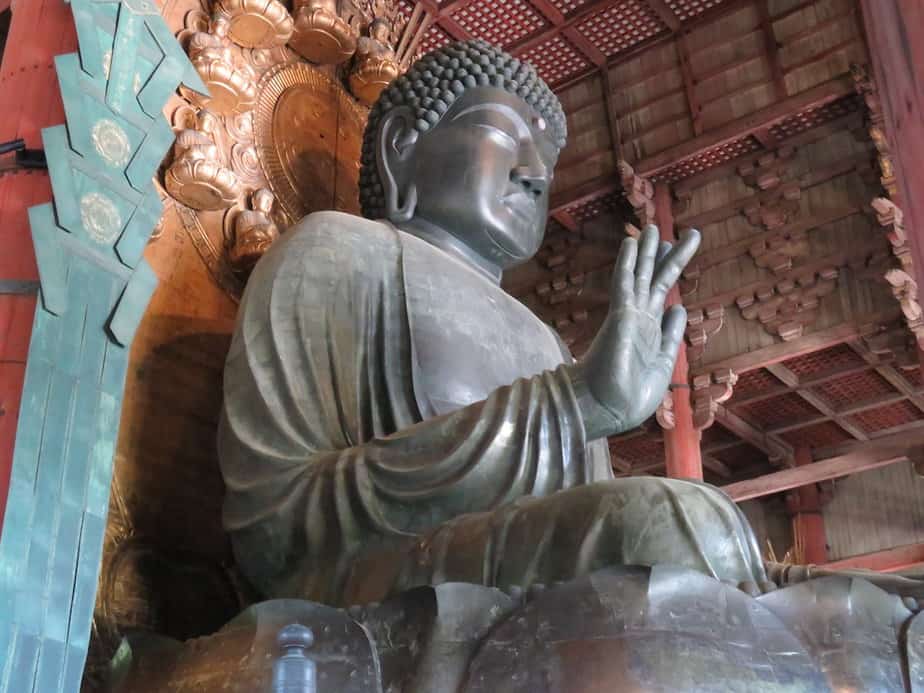
Google Maps is Your Best Friend
You’re probably already acquainted with Google Maps, but it’s going to become your best friend when you’re travelling Japan solo.
Google Maps in Japan has some of the most comprehensive information of any country I’ve visited.
Especially when it comes to public transportation, which some people find overwhelming and confusing the first time they come to Japan.
Here is some of the information Google Maps tells you when riding the metro in Japan:
- What entrance to take to get to the metro
- What exit to take when leaving the metro. This is very important information. Please don’t ignore it!
- The exact train car number you should get on for the quickest transfer or exit
- What platform your train is departing from. This is very helpful in major train stations where there can be over 20 platforms
- How busy the train is, is the train has AC or not, and whether or not there are delays on the route
Google Maps can also navigate indoors in Japan. This is super useful when trying to find a store in a massive shopping mall. It’ll guide you to the nearest escalator to the store you’re looking for and take you right to the entrance.
It’s fabulous. Google Maps may be your most used app while on your solo trip to Japan!
Major Train Stations are Difficult to Manage
Major train stations are extremely difficult to manage. You 100% need to use Google Maps if you’re trying to find what exit to use or something inside a train station.
Before you start thinking I’m dramatic and how hard could a train station possibly be, Shinjuku Station has 200 different exits.
So, yeah, complicated. You can easily get lost and spend an hour or two wandering around trying to find what you’re looking for.
Trust me. I once spent half an hour looking for a tempura restaurant in Tokyo Station and ended up giving up and leaving.
Whenever you have to exit a major train station, be sure you know what exit you want and watch the signs carefully.
Some major train stations like Kyoto Station and Kanazawa Station are easier to manage. Some like Tokyo Station and Osaka Station are more complicated.
Be prepared. Be patient. And if all else fails, find your way to an information booth, and someone will be happy to help you find what you’re looking for.
Be Prepared to Queue
I hate waiting in lines and avoid waiting in them at all costs. The Japanese don’t seem to have the same aversion to lines that I do. There are lines everywhere, and people don’t mind waiting for them.
There are lines for food (these are often the longest lines at popular restaurants). Lines for tourist attractions. Lines for no apparent reason.
It’s just something that comes with a solo trip to Japan.
Hopefully you don’t have to wait in too many lines but bring your patience just in case. If you know you’ll be waiting in a line on a particular day, consider bringing a book (or audiobook) or something to entertain yourself with.

Avoid Golden Week at All Costs
Golden Week is a national holiday in Japan where people get an entire week off of work. Japanese people use this as an opportunity to travel, and a lot of people travel within Japan rather than going abroad.
This means three things:
- The most popular cities like Tokyo, Osaka, and Kyoto are very, very, very busy
- If you’re visiting a less popular tourist destination, things like restaurants may be closed
- It will be difficult to find an affordable hotel even if you’re booking months in advance. I wanted to go be in Sendai durning Golden Week and couldn’t find an affordable hotel even though I was looking 5 months in advance.
I was in Japan during Golden Week in 2023 and experienced both those things. I spent the majority of Golden Week in Fukushima. Not the most popular tourist destination. A lot and I mean a lot of the restaurants were closed. Some were open until 2pm, but many were closed all day. Not great.
Then I was in Tokyo for the last two days of Golden Week. It was madness. I’ve never seen a city so busy in my entire life. I cannot imagine how busy it was during the height of Golden Week because I assume some people already went home to get ready for work in a couple of days.
Moral of the story is to avoid Japan during Golden Week at all costs. Don’t think to yourself that it won’t be too bad because it will be. Trust me.
On the flip side, going to Japan right after Golden Week is probably the best time of the entire year to be in Japan. I was at Tokyo Disney Resort the four days following the end of Golden Week, and I’ve never seen it so quiet before. It was magical.
Golden Week changes dates every year and is sometime in either April or May. Just do a quick Google search before planning your solo trip to Japan and make sure you aren’t planning it during Golden Week.
Avoid Golden Week at all costs. Ideally visit Japan right after Golden Week for the lowest crowds.
The JR Pass Probably Isn’t Worth it
You’ve probably heard a lot about the JR Pass and how it is essential when travelling in Japan. How you’ll save so much money with the JR Pass.
But, honestly, that isn’t the case for most people.
If you’re only travelling between Tokyo and Kyoto, you likely won’t get your money’s worth out of the JR Pass.
If you’re in Japan for two or three weeks and spending more than a day or two in each city, you probably won’t get much value out of the JR Pass.
You need to be using the JR a lot in a short period of time to get value out of the JR Pass. Especially now that the price is increasing by about double!
I spent 3 weeks in Japan in 2023 and took the JR or Shinkansen between each city I visited. I used JR trains to travel within each city. Even though I would have used the JR Pass a lot, it still didn’t make financial sense for me to get one.
That’s because I wasn’t using the JR enough or on expensive enough lines that purchasing a JR Pass made sense.
Be sure to do the math and use a JR fare calculator before purchasing a JR Pass to make sure you’re getting enough bang for your buck by buying the pass.
The benefit of the JR Pass is that you can pre-reserve seats on the train, which is a huge plus if you have luggage and have to reserve luggage space.
Although, when I was in Japan, I never had to reserve luggage because you only have to reserve it on the most popular and busiest routes like Tokyo to Kyoto or Tokyo to Osaka.
You don’t have to reserve luggage space on most Shinkansen trains.
And if you’re going from Osaka to Kyoto without a JR Pass, just get on the slower JR train rather than the Shinkansen. It’s a third of the price and only takes 10 or so minutes longer if you get on a super rapid train.
JR Fare Calculator (see if the JR Pass saves you money)
Be Internet Safe
Even if you get an esim for your phone, you’ll still be relying on public wifi during your solo trip to Japan. Even if it’s only while at your hotel.
Please don’t waste your esim data and use it at the hotel rather than the complimentary hotel wifi!
And since you’re going to be using public wifi at least part of your trip, I’m going to lecture you about the importance of using public wifi safely.
Public wifi networks are just that. Public. That means anybody with the code can access the wifi. From my experience, a lot of hotels in Japan don’t have a password on their wifi. Anybody can access the wifi even if they aren’t staying at the hotel.
This means that there are countless people using the same unprotected wifi network as you. That puts you personal online information (like you’re banking information) at risk of being stolen.
All it takes is one person with bad intentions, and you’re dealing with the headache of cancelling bank cards while abroad. Trust me when I say that’s no fun.
The only way to protect yourself when using public wifi networks is by installing a VPN on your devices. A VPN essentially puts an invisible forcefield around your devices that makes it impossible for prying eyes to access your personal online information.
A VPN makes using public wifi networks just as safe as using your home wifi where you’re the only person who knows the password.
One of the most important things you should so when preparing for your Japan solo trip is install a VPN. It’s the simplest safety precaution you can take.
The cost per month for a VPN subscription on a two-year plan costs less than a latte and cake pop at Starbucks. You have no excuse not to protect your online information.
I always say that if you can afford to travel, you can afford to protect your online information with a VPN.

My Favourite VPN
I’ve used a lot of VPNs over my many years of travel. Most of them, frankly, suck. VPNs are notorious for slowing your devices down, and you really feel the different in internet speed when using a VPN.
That’s not the case for NordVPN . It’s consistently ranked the fasted VPN on the market and the only VPN I’ve ever consistently used. You don’t feel like your internet speed is slowed down at all when using NordVPN.
You can install a single NordVPN subscription on up to six devices. That makes it super easy to protect all your devices for one low price.
One of my favourite feature of VPNs is being able to cloak my location. That allows me to watch Netflix from different countries and watch Canadian sporting events while abroad.
There are really no downsides to installing a VPN on your devices. It’s an extremely small price to pay for the peace of mind you get by knowing your private information is safe and sound while you’re abroad.

Get the fastest and most reliable VPN on the market for an extremely low price.
One of the first things you’ll notice on your solo trip to Japan is how quiet it is. In terms of volume. Not in terms of people. There are always tons of people in Japan.
It’s a widely known rule that people are quiet and respectful while out in public. This means no talking on the metro and no loud conversations at restaurants.
And please, please never answer a phone call while on public transit. It’s considered quite rude to speak on the phone in nearly every indoor public setting in Japan. But if you talk on the phone on the metro, you will definitely be getting dirty looks.
Just be sure to be quiet, reserved, and respectful while in public in Japan. I know you’re on a solo trip to Japan, but I also know a lot of you like to make friends while travelling alone. So, if you go out with a group (or while you’re alone), please be quiet.
There is a time and place for loud conversations, and in public is not it.
Oh, and small talk isn’t really a thing in Japan. I know my American friends love starting small talk with strangers, but you’ll be getting weird looks if you try that in Japan.
Taxis are Extremely Expensive
Taxis are never the most affordable way to get around, but in a lot of places they’ve not super expensive. They’re affordable enough that you can justify taking a taxi if it’s going to be super convenient or save you a lot of time.
Japan is not one of those places.
Japan has the most expensive taxis I’ve ever seen in my life.
There is no circumstance I could ever see justifying me using a taxi instead of the metro other than being physically injured and needing to get to a hostpial.
And even in that circumstance, I may still take the metro because the taxi fees are so high.
If you normally take taxis when you travel, you’ll need to get used to the idea of using public transportation or walking.
See point one about staying near a train station if you need a refresher. 😉
The good news is that Japan has one of the best public transportation systems in the world. It’s so easy to get around. You won’t even miss taking a taxi.
Most major cities have large metro systems. Tokyo, Osaka, and Kyoto all have metros where you can easily get around. Smaller cities in Kanazawa rely on buses. But they’re smaller cities, so it’s easy to walk everywhere if you’re staying in a central location.
Just be prepared to use public transportation and walk a lot while in Japan. Taxis are a luxury not a normal thing to use.
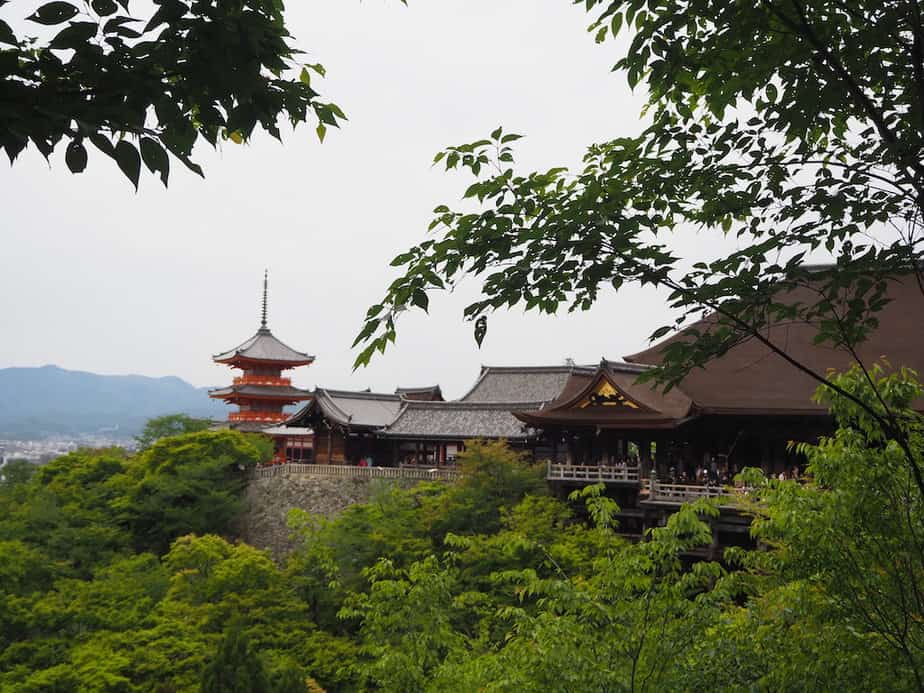
Purchase Popular Tickets Online in Advance
As we’ve talked about in this article, Japan is busy, and there are often queues. To cut down on your time waiting in line, there are two things you can/should do:
- Get to attractions earlier in the day to avoid crowds
- Purchase tickets online in advance if you can
These two things will save you heaps of time on your solo trip to Japan. You’ve got a lot to see and do while in Japan alone, and you don’t want to be stuck waiting in a line if you don’t have to.
There are also some things you need to pre-purchase tickets for. As in you can’t get them at the door or they’re likely to be sold out. Those two main things are Universal Studios Japan in Osaka and Tokyo Disney Resort .
This is especially true for Tokyo Disney. You have to purchase your tickets in advance. You can’t buy them at the gate. Universal recently reintroduced buying tickets at the gate, but it’s a super small park and sold out in advance more days than not.
Other Tickets You Should Consider Buying in Advance
- Tokyo Skytree
Shibuya Sky
- Tokyo Tower Observation Deck
- TeamLab Planets (hugely popular and likely to sell out)
- Sanrio Puroland
- HARUKAS 300 Observatory
- T eamLab Botanical Garden (Osaka’s version of TeamLab Planets)
- Osaka Museum of Housing and Living
Narita is Very Far Away from Central Tokyo
Narita is very, very far away from central Tokyo. Haneda is closer to central Tokyo, but the majority of international flights fly in and out of Narita.
This means you need to have a solid plan on how you’re getting from the airport to your hotel. Sometimes it can take up to two hours depending on where you’re staying.
You can either take the metro or a limousine bus. I prefer the bus. You’re guaranteed to get a seat, probably drops you off closer to your hotel, there is no need to transfer, and you don’t have to deal with your luggage. It just sits nicely under the bus.
Taxis aren’t an option unless you’re rich because they’re so expensive. A taxi from Narita to central Tokyo will cost you a few hundred dollars!
And the last thing you want to do on a solo trip to Japan is break the bank taking a taxi just because you didn’t plan properly!
The fact that Narita is so far away from central Tokyo also means that you need to be strategic about when you book your flight.
If you land late in the evening or depart early in the morning, you might have an issue. Maybe the buses aren’t running early or late enough or maybe you don’t want to drag your butt out of bed super early or be trying to find your hotel in the dark.
If you’re arriving late or departing early, I highly recommend staying at a hotel near the airport for a night. It’s so much more convenient. I’ve done it before for a flight departing at 11am and would do it again in a heartbeat.
Plus the hotels near Narita are surprisingly affordable. I loved my stay at the Hilton Narita . It was super nice and seemed like it should have costed more than it did.
Most airport hotels offer a bus to and from the hotel, which is super convenient. The hotels say it takes about half an hour to get to the airport. From my experience, it takes about 15, but it’s better to be early than late!
Go to Tokyo Disney on a Tuesday or Wednesday
Tokyo Disney is a must do for any theme park or Disney fan. Heck the theme parks are so well done that even people who hate Disney enjoy them.
Tokyo Disney Resort has two theme parks: Disneyland and DisneySea. DisneySea is the more unique one of the two, but they both have rides you don’t want to miss.
TDR is hugely popular. Not only with tourists but also with Japanese people. This means that it’s always busy. The most popular rides often have wait times between 90 and 180 minutes.
That’s just on a normal day. Not even during the busiest times of year.
So, you definitely need a strategy when going to Tokyo Disney. It may be your only trip, and you want to get the most out of it.
There are way too many tips and tricks about Tokyo Disney to put into this short(ish) blog post. You’ll have to do a deep dive on that on your own. TDR Explorer is a great place to start!
One important tip I will give you is to visit Tokyo Disney on either a Tuesday or Wednesday.
This is when the parks will be the least busy. You’ll be able to get a lot more done on a Tuesday or Wednesday than on the weekend.
Mondays and Thursdays are normally medium busy. I’ve noticed that a lot of the times school groups are filling up the parks on Thursdays leading up to the weekend, and they’re a lot busier than Wednesdays.
Mondays have carryover from people visiting over the weekend. They’re not as busy as a Friday, Saturday, or Sunday but are still quite busy.
So, if you have flexibility in your schedule, try to arrange your trip to Tokyo Disney for the middle of the week. This will give you the best chance at having lower crowds.

Make Sure You Have Health Insurance
Health insurance is an essential part of travel, and you need to make sure you have health insurance that covers your solo trip to Japan.
You may have travel coverage through your work plan. If you do, you just need to make sure it covers the entire duration of your trip. Most policies only cover the first 21 or 30 days of your trip.
If you’re like me and don’t have insurance through your employer, you have two options.
First Option
The first option is perfect for people who are only going abroad for a shorter period of time. This is buying travel insurance from a major company in your home country.
You can normally get insurance through a bank, company that sells house or life insurance, your local healthcare insurer (like Blue Cross), or through a company like AAA or AMA or CAA.
All these places will let you purchase a travel health insurance policy to cover the duration of your trip.
These are normally reasonably affordable. Especially if you’re only gone for a week or two. They offer decent coverage, but they often make it a headache to make a claim.
You can also get a multi-trip policy that covers you for every trip you take abroad in a year as long as the trip is under a certain amount of days. You get to choose the amount of days when you purchase the policy, and they range anywhere from 7 to 60 days.
This is what my retired parents use, what I used when I was a student, and what most casual travellers use.
Second Option
The second option is for long-term travellers and digital nomads. That’s purchasing health insurance through a specialized company that solely provides insurance to travellers.
There are a couple of companies you can get this type of insurance through. I personally use Safety Wing and think they’re the best option you there.
They’re very affordable, have a low deductible, make it easy to make a claim, and even provide you coverage in your home country for 30 days as long as you’ve been abroad for 90 days.
I love the flexibility of Safety Wing and being able to cancel anytime I want. If I’m going to be in Canada for a few months, I can cancel my policy and then reinstate it when I start travelling again. They even let you purchase your insurance while you’re abroad and already on your trip, which is quite rare.
Again, this option is best for people travelling for a long period of time. It’s much cheaper in the long run than the first option and provides better coverage.

Bonus: Try the Melon Fanta (Trust Me)
This may sound like a weird thing to throw into this article but hear me out. The Melon Fanta in Japan is the best soda I’ve ever had. And I’m a soda girlie.
I know. I know. It isn’t healthy, but it just tastes so good!
Melon Fanta is incredible . It’s a bit hard to find in convenience stores, so you may have to order it at a restaurant, but it’s so worth it.
I tell all my friends who go to Japan to try it, and they all love it.
I know it sounds like an odd flavour of soda, but please trust me and try it!
My Favourite Things to do in Japan Alone
Tokyo Disney Resort
Shinjuku Gyoen
Todaiji Temple
Fushimi Inari Shrine
Kiyomizu Temple
Museum of Housing and Living
Universal Studios Japan
Osaka Castle
This article ended up being way longer than I thought it would! I guess I just have a lot to say about taking a solo trip to Japan and being in Japan solo.
Japan is a super unique country and requires a bit more planning and understanding than a lot of other countries. It’s so easy to accidentally offend someone because you don’t know the social norms.
But I hope this article helps you better understand what a solo trip to Japan will be like and how to best prepare for being in Japan solo.
It’s an amazing country, and I have no doubt you’ll love it. Basically everybody does. That’s why it’s so popular!

Related Posts
- 9 Key Things to Know Before Your Solo Trip to Ireland
- 9 Tips to Know Before Taking a Solo Trip to Copenhagen
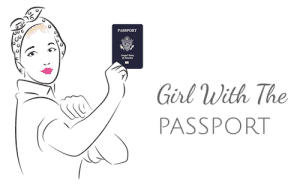
The ULTIMATE Guide to Solo Travel Japan
By: Author Girl with the Passport
Posted on Last updated: February 3, 2024
Categories Asia , Solo Female Travel
HEEY-YOO! And welcome to the whimsical world of solo travel in Japan!
Are you SUPER stoked?
And, BTW, the only correct answer to that question is an emphatic yes since Japan is ALL things wonderful!
You’ve got hedgehog cafes, ramen, sushi, kimonos, REAL LIVE MARIO KART, arcade games, beyond quirky fashion, ancient Buddhist temples, ethereal mountain ranges, capsule hotels , and SO MUCH MORE. Just be sure to learn exactly how to take solo travel photos before you go.
This way you have ample photographic evidence of the wicked awesome time you had.
But to REALLY seal the deal:
You’ll be beyond delighted to know that yes, Japan really does have it’s very own, Wizarding World of Harry Potter!
All my fellow Potterheads out there, feel free to rejoice, and give praise to all things Japanese.
Let’s slowly move away from my slightly random obsession with all things Harry Potter, and towards something slightly more helpful.
Like this SUPER awesome guide to all things Japan solo travel, which you can use to help you plan the perfect Japan 2 week itinerary and introduce you to some of the best places to visit in Japan .
Because in this post, not only will you find a ton of tips on how to stay safe in Japan, but you’ll also learn how to use public transportation in Japan, discover the best time to visit Japan, find out where to go in Japan, and even get a TOTALLY FREE, 7 day Japan itinerary!
Because yes, I too love all things free (Minus diseases, those are never lovely).
So, let’s make like a piece of sushi and ROLL our way into this post about all things Japan solo travel.
Sorry, but for me, wickedly lame puns never go out of style.
This post may contain affiliate links. Please see my disclosure for more information. As an Amazon Associate, I earn a small commission from qualifying purchases.
Solo Travel Japan 101: How to Stay Safe During Your Solo Trip to Japan
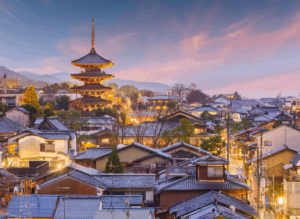
Learn how to stay safe as you solo travel Japan!
Thinking of embarking on some Japan solo travel and planning a 2 week Japan itinerary in Autumn ? Excellent! Because Japan really is one of the safest countries in the world for solo travel (#winning).
BUT it’s not 100% perfect….
Sure, Japan is known for its low crime rates, its next level organization (at the bureaucratic level since nothing is late here…EVER) and polite, friendly people,
That doesn’t mean that you shouldn’t remain vigilant as you solo travel Japan.
Use all of that awesome common sense that I know you have and take the same precautions that you would in any country.
Continue to do super obvious things like avoid walking down dark alleyways alone late at night, keep an eye on your personal belongings, don’t get too intoxicated, etc.
You know, all the usual stuff.
Because like basically every other country on the planet, Japan definitely isn’t immune to organized crime.
Yeah, I had no idea either. But apparently:
The ‘Yakuza’ is well known in Japan and is involved in murder, corruption, petty crime, and overall, high levels of not-so-nice mayhem.
And while it is unlikely that they’ll ever target a group of selfie stick-wielding tourists, it’s still a good idea to be aware of their presence, especially as you do some Japan solo travel in big cities, like Tokyo.
1) Be Prepared…You Won’t Be Able to Read Anything
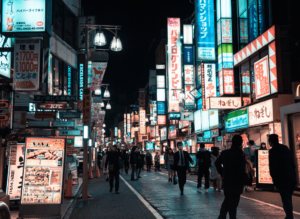
As you solo travel Japan, you’ll quickly see that there is a distinct lack of English signage.
‘It’s cool I’ll just follow the signs’… said no one in Japan.
Well, unless of course, you can actually read Japanese. OBVS.
In general though:
English is NOT universally used throughout Japan, a fact that can make getting around more than a little bit tricky.
Have your Google maps app handy and be prepared to get lost, more than once, during your solo trip to Japan.
Always have the address of your hotel handy (in both English and Japanese), just in case you get lost and need to share this information with a super helpful local.
This should help with that awkward language ‘what the hell are they saying’ barrier.
Always take the directions you are given with a pinch of salt.
Traditional, Japanese culture dictates that it’s better to give wrong directions than admit you are unable to help.
To avoid this mildly annoying possibility, try and ask for directions at a nearby hotel, where it’s highly likely that staff members speak English fluently.
And remember:
In Japan, hotel curfews are actually a THING.
That’s why:
Smaller, family-run accommodations may lockup between 10:00 pm and midnight.
Definitely research those policies BEFORE enjoying a wild night out on the town (Excuse me while I trade in my granny panties for a pair of ultra-rad glow sticks and a Monster energy drink. Because yes, staying up past 10:00 pm really isn’t my “thing”).
When traveling solo at night, always have your route back “home” planned out BEFORE you down some Sake and sing your heart out at a Japanese karaoke joint.
You really don’t want to be doing any serious travel planning when you’re inebriated AF in a foreign country.
And if you do decide to drink:
Never leave your drink unattended since it could easily be spiked while you’re not looking; a trend that is, sadly, becoming all too common in the Tokyo and Kyoto bar scene.
2) Cash is King
Well, you might expect a tech hub like Japan to be card crazy, Am I right?
Surprising though, that is actually NOT the case.
It’s actually quite the opposite.
Do yourself a solid favor and grab some cash before you head out for the day, at least if you wanna avoid being penniless and having to frantically search for an ATM that accepts foreign cards.
Thankfully though:
Most hotels, 7-Elevens, and restaurants all accept cards.
A lot of smaller places won’t.
Be prepared and ALWAYS have a bit of cash handy.
3) You WILL Experience Culture Shock
Because if you’re not, then you better be.
See, things in Japan are done a whole lot differently then they are in the Western world.
From toilets (Take my word on this one, because you will see what I mean) to local taboos like answering a phone call while riding public transportation (Yeah, don’t do this), there are a lot of things about Japan solo travel that you’ll need to get used to.
Don’t freak yourself out about these taboos since Japanese people are really considerate and will take the fact that you’re a visitor into account.
It’s still a good idea to brush up on your Japanese customs/etiquette BEFORE your visit, just so that you don’t cause unnecessary offense.
And if you can:
Always try and avoid doing anything that will draw too much attention to yourself since this is a big no-no in Japan.
4) Unwanted Male Attention
Oh, h ell to the no!
Don’t panic though because it’s really not that bad.
Because thankfully:
Catcalling is not a thing here. Thank f*cking God.
That being said:
And Ladies out there should try and avoid using public transportation during peak hours since instances of sexual harassment and groping are quite common on crowded trains.
To resolve this issue, some cities have started using ladies-only carriages during rush hour, which can be found by following signage along various train platforms.
5) Avoid Common Scams
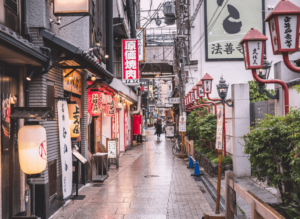
Japan is an incredibly safe country for solo travelers. However, there are some common scams that you’ll need to watch out for.
Well, the main one to watch out for is the ‘Japanese nightclub scam’, especially when visiting well-known nightlife hotspots, like Tokyo’s Kabukicho.
What happens is, a street tout will invite you into a club and shower you with attention and drinks…before swiftly presenting you with a not-so-awesome bill for a few thousand yen.
You will be expected to foot the bill for all those drinks (and for your “new found friend’s” precious time).
And if you refuse to pay?
Well, then things could get a bit dangerous and threats could be made.
To avoid this scam, just walk away. Don’t even respond to anyone who invites you into a club.
Because even the most well-trained touts will take the hint and leave you alone.
You also don’t have to be rude either. Just politely decline and move on.
And when in doubt:
Always remember the age-old adage that if it seems too good to be true, then it definitely is.
6) Watch the Weather
And I’m not talking about the rain.
See, unfortunately, Japan can be prone to freak weather conditions, like typhoons and earthquakes.
Before doing any solo Japan travel, it’s always a good idea to be aware of the seasons and know what to expect from the weather.
So, just a little FYI for you.
Typhoon season usually falls between May and October and peaks in either August or September.
Because earthquakes are quite common in Japan, it’ s a good idea to prepare yourself for an earthquake emergency.
And no, not by practicing hiding under tables (lol).
Just try and familiarize yourself with your hotel’s evacuation policy and always follow locals to designated safe areas if the worst should happen (Because yes, you guessed it. All public safety announcements will be in…Japanese.)
And the rain?
Well, it’s slightly less catastrophic, but sudden downpours are fairly common.
Grab a cheap umbrella from the nearest konbini to keep yourself dry and avoid wandering around like a drowned street rat (Anyone else reminded of Aladdin right now? No? Just me? Right, swiftly moving on).
SOLO TRAVEL JAPAN: EVERYTHING YOU NEED TO KNOW ABOUT PUBLIC TRANSPORTATION!
Japanese trains are known for being some of the most efficient in the world. Yup, just one of many things to look forward to when planning your Japan itinerary .
They can also resemble an unsolvable puzzle if you’re from out of town.
Here are some general transportation tips to help you make the most out of your time in Japan.
1) Getting to the Center of Tokyo from the Airport
Whatever you do:
Do NOT take a taxi from the airport to your hotel.
Not only are they very UN-cheap:
But many taxi drivers actually can’t speak or read English, making communication more than a little difficult (Hello? Google Translate?).
Whenever possible, try and use the city’s monorail system, which connects directly to the subway.
You can quickly, easily, and somewhat cheaply get anywhere in the city that you need to go (You can also take the Keikyu Line directly to central Tokyo).
But, what if I wanna catch an Uber?
Well, Japan has technically had Uber since May 2018.
I still wouldn’t use it as your “go-to” mode of public transportation since it’s not really widely used by locals.
Things may be changing!
Because In 2020:
Tokyo will be hosting the summer Olympics.
And to ensure that spectators can easily move throughout the city, both Uber and Didi (A Chinese rideshare app) will be providing Tokyo with extra transportation services.
As a result:
Uber may become a viable transportation option when traveling to and from the airport.
I wouldn’t bother using it for inter-city travel since the Tokyo metro is WAY cheaper.
But, until Uber becomes more popular:
You can always just download the ‘Japan Taxi app” before you go to Japan.
It has over 60,000 taxis that cover all 47 prefectures of Japan.
You should definitely be able to find a decently priced taxi, no matter where you are in the country!
Standard taxis in Japan really aren’t THAT bad, especially when traveling within cities since using a taxi over short distances is pretty affordable.
And added bonus?
Not only are they EVERYWHERE, but most of them also accept credit cards as a form of payment.
Which is great since I for one am all about minimizing my cash withdrawals and the foreign transaction fees associated with them.
***When traveling in Tokyo, be sure to download the ‘Takkun Tokyo Taxi’ app since most Tokyo-based cabs are on here. However, when using this app, you will be charged a small pickup fee.***
2) Platform Trickery
Just to amp up your level of Japan solo travel confusion:
Transportation services with similar-sounding names tend to be grouped together on the same platform.
Many platforms will have several different categories of trains (e.g. local and rapid trains) arriving within a minute or two of each other.
Which can be insanely confusing since the names of all these trains SOUND EXACTLY THE SAME!!
You should definitely do your research BEFORE you arrive and know the difference between various train services.
Because while informational displays DO indicate the category of the next arriving train, they aren’t always in English!
Making them slightly impossible to read if you don’t speak Japanese.
If you can, try and identify different services using their Japanese names to avoid getting on the wrong train and ending up in some beyond random part of town.
3) The Great JR Rail-Pass Debate
Well, it’s not actually that great, but still.
Because a question that I often get is, “Should I get a JR rail-pass?”
And the not so straightforward answer is that, well, it depends.
JR passes are great for Japan solo travel since they allow you to be flexible with your itinerary.
If you’re not sure where you’re headed or when, then the JR pass is your new best friend, especially if you wanna take a ride on a bullet train.
If you purchase a JR rail-pass , what do you actually get?
- Unlimited use of all JR trains from Kagoshima in the south to Hokkaido in the north.
- This includes the Shinkansen (bullet train) but not the Nozomi or Mizuho bullet trains. And while these trains are technically faster than the Shinkansen, I doubt you’ll actually notice the difference.
- You can also use local JR commuter trains, JR buses, and JR ferries.
- The JR rail pass is also valid on all five of Tokyo’s main railway lines!
The JR Pass is costly, so definitely make sure that you plan on doing at least a few long-distance train journeys, on premium trains, if you want to get the most out of the money that you spent on this pass.
But wait, how much does a JR Pass actually cost? Well, as of winter 2019:
A 7- Day pass costs $273.83
A 14- Day pass costs $436.37
A 21-Day pass costs $558.29
And this is all PER PERSON. So yeah, NOT cheap.
For many travelers though:
Riding on a long-distance bullet train (Shinkansen) is kind of like a right of passage.
So, if this sounds like you:
Then plan on taking at least two different trains per week.
It would actually be cheaper for you to buy individual tickets and not a 7-day JR pass.
Some other JR-Pass tips:
- If you are just staying in Tokyo, then this isn’t the pass for you since local trains in Tokyo are pretty cheap (around $1 per journey).
- You can pay more for a ‘Green pass’ (a first-class pass), but it’s not really necessary since the standard trains in Japan are immaculate.
- Don’t be late!! In fact, be EARLY since Japan takes time management VERY seriously.
If you do decide to get a JR rail-pass, then save yourself some time and buy it in advance ( GET YOUR JR PASS RIGHT HERE, RIGHT NOW! )
You actually HAVE to get your Japan Rail Pass BEFORE you arrive in Japan (AGAIN, to be SUPER CLEAR. You CANNOT get a Japan Rail Pass within Japan!!)
Definitely order it online, prior to the start of your trip, and then just have it delivered to an address outside of Japan.
And once you finally arrive in the country:
You can easily get it validated at any local ticket office.
Tell me more about this ticket validation process.
Before you board a train, you will first need to trade in the voucher that you received in the mail for your actual JR Pass.
And once you have your JR Pass:
Do try and reserve your JR pass train tickets in advance, especially on busy days/peak seasons/weekends since no one wants to get to the station, only to find out that their train is completely sold out!
To do this:
Just write down all the trains that you want to take (or bring a Hyperdia print out with you) and then bring this info to the JR Office at the station.
To make life easy:
Just make your train reservations when you exchange your online voucher for an actual JR pass.
If you don’t have it all figured out, not to worry.
Because the official JR pass website ONLY recommends reservations when traveling between April 27th- May 6th, August 11th- 20th, and December 28th- January 6th.
And the rest of the time?
Well, you can easily board a train without a reserved seat since the designated, JR Pass seats will be clearly marked on the train.
And if you’re still not sure whether the JR rail-pass is right for you, then just run your route through hyperdia.com and compare the cost of one-way tickets with the cost of a JR Pass.
And just go with whichever option is cheaper.
Bonus tip #1!
Most Japanese trains have limited storage space. Therefore, travel light and DO NOT pack everything except the kitchen sink.
Bonus tip #2!
Looking for that Insta-perfect shot of Mount Fuji?
Yeah, I feel you.
If so, then when traveling from Tokyo to Kyoto, ask for a seat on the right-hand side of the train.
Sit here and you are guaranteed to have the best seats for maximum camera snapping action.
And yes, feel free to thank me later.
Other Ways to Get Around as you Solo Travel JAPAN
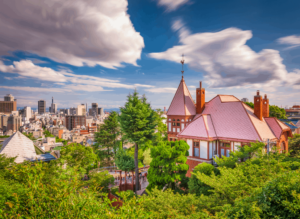
Japan is an amazing country. But sometimes using its transportation system can be more than just a little tricky.
1. TOKYO METRO (THE BEST WAY TO GET AROUND TOKYO)
The Tokyo subway system consists of two interconnected networks, the Tokyo Metro and Toei Subway .
Trains and subways in Tokyo also run between 5:00 am and 1:00 am daily, are religiously on time, and arrive every 3 mins during peak hours (Peak hours are on weekdays between 8:00 am and 9:00 am and shortly after 5:00 pm. Morning rush hours also tend to be more concentrated and heavier than evening rush hours).
Oh, and girl, (and guys) don’t forget…
- Swipe your passcards both on the way in AND on the way out. The digital screen is awesome and will display the remaining balance on your card.
- Most train stations have multiple exits- so remember to take the right one!
- Consider the “Tokyo Subway Ticket“ which provides unlimited use of all subway lines. Pick it up at either Narita Airport or Haneda Airport for the ultimate freedom during your Japan solo travels.
- Queuing is an art form here and you will be expected to do so on the platform. Just be prepared because there will be a mad dash to nab a seat during rush hour.
- The most useful line in Tokyo is the JR Yamanote Line, which is commonly referred to as the “Tokyo Loop Line” or just the “Loop Line.” You can use your Japan Rail Pass on this line.
- Another great way to pay for trains and subways in Tokyo is with a prepaid Pasmo or Suica card since it is WAY cheaper than buying individual tickets.
Thought trains were complicated?
Well, think again!
Because Japanese buses are a little bonkers!
- You need to board the bus from the middle and not the front
- You will collect a plain, slip of paper as you board the bus. This piece of paper will have a number on it. And…TADA, this is your bus ticket
- The electronic board displaying ever-changing numbers at the front of the bus may confuse you! But, please use it before you hop off the bus since the cost of your bus fare will be displayed under your seat number, AKA the number that is printed on your ticket
- The driver will expect you to deposit both your bus fare and your ticket, into a designated collection box BEFORE you leave the bus.
You could always just skip all this confusion and get a Pasmo card instead.
Remember though:
This card is only valid in the Tokyo/Yokohama region and is sort of like a Metro/Travelcard/Oystercard for Tokyo’s metro/buses.
Now, if you do purchase one:
Try and put at least $30 on the card since this will cover quite a few journies.
All you need to do is tap your card when you board a bus (or metro), and then again when you get off.
See! Super simple!
And while buses are great to use in small cities and in the countryside, I would avoid using them in major cities, like Tokyo, since there’s a lot of traffic and it will take you forever to get anywhere.
I would also avoid using buses over long distances.
EXCEPT IN KYOTO!
Yeah, don’t ask me why but it’s actually cheaper to use the bus than the train in Kyoto.
Some of the different types of buses that you’ll find in Japan are:
- Route buses (which operate within cities and towns),
- Highway buses (which operate between large cities),
- Limousine bus (which operate between the airport and a major bus station)
And out of all of these different types of buses, you’ll probably end up using route buses the most.
But, are they really worth using?
Well, like with all forms of public transportation, they have their own set of pros and cons!
A major pro is cost.
Because you can definitely use buses as a low-cost alternative to the train.
For example:
You can catch a bus from Tokyo to Kyoto, for just 1,599 JYP ($15) which is WAY cheaper than the train.
Buses are also insanely comfortable and come with wicked awesome, reclining seats (Some ever have full-on SALONS!!).
However, one GIANT con is time!
Because the above journey will take you over 7 hours by bus and just 2 hours and 15 minutes by train.
A lot of long-distance bus journeys also take place overnight, which is great for saving money, at least if you’re comfortable doing this alone.
If you wanna save money, take the bus.
If you wanna save time, take the train.
Because it really just depends on which one of those things is more important to you.
***PSST: Don’t discount sightseeing buses since The Chuo Bus from Sapporo to Shikotsu and the Toya Lakes is a great way to see some of Japan’s most amazing scenery.***
3) Plane Travel
Thinking of cutting down on your travel time by flying across Japan?
While it is doable, it’s definitely not the most cost-effective way of traveling through Japan.
When traveling between cities, I’d still recommend the train.
For longer journeys, like the one between Fukuoka and Sapporo, I’d consider flying since it’s the fastest way to travel.
And if you do decide to fly:
Try using smaller, domestic airlines, like Skymark and Jetstar Japan, which usually have cheaper fares.
You can also check with the airline operator of your international flight (BEFORE you arrive in Japan) and see if they offer discounted domestic fares to passengers who fly on their international routes to Japan.
Yup, something that is definitely worth checking out.
We all know that Japan is an archipelago.
And as such:
Ferries are a constant form of transportation between islands.
- Some smaller islands, like Naoshima can only be reached by ferry
- Ferries can be useful for traveling among Japan’s four major islands. But, information on ferry routes (including schedules and fares) is almost always in Japanese ONLY!
- If you ‘re interested in traveling by ferry, instead of train, then the ‘Japan Ferry Pass 21’ is the sea equivalent of the JR Rail pass. Covering 14 routes over 21 days, it’s about a third of the cost of the rail pass is just $192 per person.
But is it right for me?
Well, if your route/time schedule allows for ferry travel, then this can be a viable transportation option.
Just plan on making at least two trips to some of Japan’s other islands if you want the Japan Ferry Pass 21 to be cost-effective.
I would ONLY recommend this option if you’re looking for a slower form of transportation.
Because if getting to your final destination QUICKLY is more important than the journey itself, then this isn’t the option for you.
***Another added benefit of traveling by ferry is that you can save money on overnight accommodations, something that is never cheap in Japan! Plus, ferry cabins are usually relatively comfortable, modern, and clean.***
WHEN IS THE BEST TIME OF YEAR TO SOLO TRAVEL JAPAN?
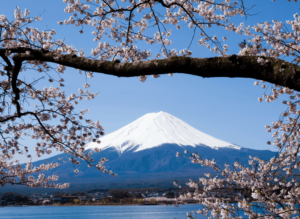
Any time between March and May (minus Cherry Blossom season) or between September and November is probably the best time to solo travel Japan.
It’s never really a bad time to do a bit of Japan solo travel.
You will definitely get a very different vibe from the country, depending on when you visit.
If at all possible, try and plan your visit between March and May (Minus cherry blossom season, which varies depending on where you are in the country) or between September and November, when weather is mild, prices are at their lowest, and when crowds are not as crushingly huge.
If you do decide to visit during the spring, psych yourself up for it because this is THE most famous (and busiest) time to visit Japan.
Why?
Two words. Cherry blossoms. Obvs.
Travel to Japan during this time of year and expect to be bombarded by hordes of tourists and locals who are all out celebrating the beautiful blossoms during hanami (blossom viewing) picnics.
If you’re not fazed by epic levels of heat and humidity, then summer is a great time to visit Japan.
That’s because:
There are a ton of festivities that take place during this time of year.
From dazzling fireworks displays to al fresco munching on street food, summer is definitely a fun time to visit Japan.
Can’t deal with the crushing crowds of spring but still want to experience some of Japan’s insane, natural beauty?
Then considering visiting during autumn, AKA the season of red and gold leaves.
Japan’s countryside will come alive with vibrant colors, making it the perfect time to get outside and do a bit of hiking.
What if you’re really a snow bunny at heart?
Then Japan totally has you covered!
Just head up to Hokkaido in the North and enjoy some beyond epic mountain ranges that will make any snow-loving traveler drool.
Because yes my friends.
Hokkaido really is known as the ‘Swiss Alps of Asia’ for a reason and is the perfect place for any solo traveler who is desperately searching for ALL the Christmas feels (which are sometimes lacking in other parts of Asia TBH).
WHAT TO SEE IN JAPAN: 10 AMAZING PLACES TO VISIT
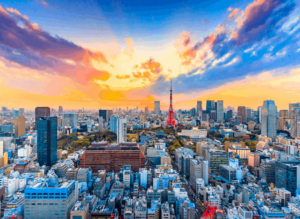
Tokyo Tower and the iconic skyline of Japan’s amazing, capital city.
You know those images that you have in your head of futuristic skyscrapers, neon lights, quirky fashionistas, video-game obsessed individuals, and over-the-top, one-of-kind activities?
I’m 100% referring to owl, goat, and hedgehog cafes, as well as a real-life version of Mario Kart (FYI: You can also do this in Osaka AND Kyoto).
You’ll find all that and more in Tokyo since this modern AF city really does sit at the beating heart of contemporary Japan
That being said though:
There are also a ton of surprisingly traditional aspects of this city too, like sumo wrestling in Tokyo .
Tokyo really is a place full of contradictions.
When you visit Tokyo, be prepared to battle your way through crazy busy pedestrian crossings, to be overwhelmed by the sheer size of this place (Tokyo is truly MASSIVE), and fall in love with the city’s beyond divine 7-Eleven egg sandwiches (strange but true).
If you swan dive headfirst into Tokyo’s fast-paced lifestyle, all this awesomeness can result in total sensory overload.
From robot restaurants to amazing, panoramic city views atop the Tokyo Metropolitan Government Building in Shinjuku (free and deffo worth it!), this crazy busy city really does have it all.
Try and take it easy while enjoying all the sights, sounds, and flavors that this vibrant metropolis has to offer.
You are forbidden (do you hear me? LOL) from leaving this city without doing the following.
- Visit the Akihabara district for arcade games, ‘cute’ cafes, and delicious ramen.
- Walk across the famous Shibuya Crossing- if you dare!
- Wear some of the city’s fashions in Takeshita Street, Harajuku (Gwen Stefani eat your heart out)
- Try the soup dumplings and espresso tonic in Yokohama Chinatown (SO GOOD!!)
- Visit the CupNoodle Museum and make your own.
- Get your real-life Mario Kart on while driving through the crazy streets of Tokyo, in a go-cart, and dressed as your favorite Mario character. Slightly mental but hilarious. You also will need an international driver’s license for this so plan accordingly because they are strict about this.
- Explore the colorful Digital Arts Museum TeamLab Borderless.
Tokyo also gets extra brownie points from me since eating alone here is easy and uber-tasty too!
Solo diners can happily, and not-so-awkwardly, eat at the bar of any Sushi, Tempura, and ramen joint in the city.
Yes, my friends, we call this living the dream.
And if you really want to live it up, you could even take an amazing Mt. Fuji tour from Tokyo .
Nine Hours Woman Kanda (Budget) – The Shinjuku and Ginza neighborhoods are perfect areas for solo travelers to stay. However, If you’re not careful, accommodations here can be pricey. And that’s where Nine Hours Woman Kanda comes in. With quirky, fun, and totally bonkers rooms, that start at $55 per night, this capsule hotel is the perfect place to stay in Tokyo. And while these establishments are traditionally for men only, many capsule hotels are now opening their doors to women (sorry but no men allowed), making this a fantastic, extra-safe, budget hotel option for any of my fellow, solo female travelers out there. I also love that this place has a cozy, minimalist vibe about it and is conveniently located near both Tokyo Station and the popular, Akihabara area.
Shibuya Granbell Hotel (Mid-range) – Want a stylish, boutique hotel that is also affordable? Then check out Shibuya Granbell Hotel near Shibuya station. Rooms here start at $110 per night and have this incredible, pop-art, minimalist design that is beyond cool. All rooms here also include free WIFI, flat-screen TVs, complimentary breakfast, and bike rentals, for an additional fee.
Want your Japan solo travel to be served to you with a side of geishas, temples, zen gardens, and cobblestone streets?
If so t hen Kyoto is for you!
Sure, Kyoto has its fair share of ugly high rise buildings, like any other major city.
It won’t take long for an intrepid solo traveler like yourself to venture past those less than stellar buildings and discover vast mountain ranges, as well as various aspects of traditional Japanese culture.
While you’re here, you cannot miss out on:
- Temples. Kyoto is brimming over with temples!! So, choose the temples that you visit wisely. Also, try and visit first thing in the morning to avoid large crowds. My personal faves include Kinkaku-ji (Golden Temple), where you can actually get your fortune from a vending machine (SO Japan), and Kiyomizu-Dera Temple .
- Visit the iconic red torii gates of the Fushimi Inari Shrine.
- Take a morning stroll through the Arashiyama Bamboo Grove .
- Visit the home of a geisha in Gion and partake in a traditional tea ceremony/learn how to make matcha tea.
- Explore the beauty of Yasaka-jinja at night.
And if you’re hungry (because we all know that I always am):
Then be sure to try some of Kyoto’s famous ‘ okonomiyaki’, a crispy, made-to-order pancake that is served to you with your choice of fillings.
Simple, yet oh so tasty!
And if you really want to get your foodie swerve on, then stop by Menya Gokkei (Northern district) for some authentic, beyond delicious, Japanese-style ramen.
You can also hit up any I chrian (AKA 24 hour booths where you can consume ramen totally by yourself) in town since this is basically any ramen loving, introverted traveler’s dream.
Slurp away my friend because you totally deserve it!
Now, for the best gyozas in town, visit the one and only Sukemasa . Not only is the food here delicious, but you can get a couple of gyozas, miso soup, rice, and pickles for less than $7.
Talk about an epic steal!
Tanaka-ya (budget) – With rooms that start at $52 per night, T anaka-ya is a cute, budget-friendly, traditional, Japanese-style homestay that features tatami-mat flooring, paper sliding doors, and Japanese futon bedding. It is also conveniently located in Gion Miyagawa-Cho, making this the perfect home base for which to explore Kyoto’s iconic old town.
The Sekura Terrace (Mid-range) – Conveniently located near Kyoto Station, Sakura Terrace is an awesome place for any solo female travelers out there to stay. I mean, not only do they offer a comprehensive ‘ladies plan’ that includes meals, but rooms here are bright, start at just $84 per night, and feature floor-to-ceiling windows, flat-screen TVs, and free WIFI. There’s also an on-site, coin-operated laundry facility, just in case your clothes are starting to look a bit dingy.
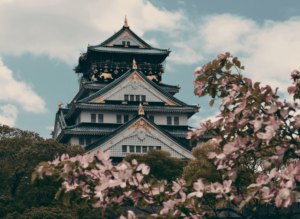
The old-world charm of Osaka Castle, one of the best places to solo travel Japan.
Another sprawling neon city:
Osaka is a mass of bright lights, amazing food, and affordable prices, at least when compared to its big brother. Tokyo.
So where to begin?
Well, food is ALWAYS a good place to start. Especially since I like eating just as much as I like breathing.
Osaka is home to some SERIOUSLY amazing vegetarian cuisine.
It was so good that I basically wept tears of joy.
If you’re looking to get your foodie swerve on, then devour some udon noodles at Azuma Udon, the city’s oldest udon restaurant.
If you’re total veg like me, then hit up Green Earth, a delicious vegan-friendly eatery with a set lunch menu, that features rice, a main dish, salad, a vegetable side dish, and soup, for just $8.
If you actually wanna do something other than eat ALL of your feelings, then definitely:
- Ride the Ferris wheel on top of the Don Quixote store in central Osaka/. Trust me on this, it is the very definition of a one of a kind experience!
- Check out the bright lights of Namba. In particular, Dōtonbori is the most popular street in Osaka for viewing neon lights and animated signs, with the Glico Running Man being an Instagram fan fave (#justsayin’).
- Discover the quirkier side of the city in Shinsekai District, which is filled with arcade games and food halls. You can also enjoy some epic, panoramic city views from the top of Tsutenkaku Tower .
- Visit Osaka-jo castle . Nestled inside the city walls, this building is one of the oldest structures in the area and sits within a picturesque park (It’s also an extra stunning place to visit during cherry blossom season).
Toyoko Inn Osaka Umeda Higashi (budget) – If you’re on a budget, then business hotels can be a great option for you while you solo travel Japan. And one of the best in the area is Toyoko Inn Osaka Umeda Higash i . Now, while luxury it most certainly ain’t, it’s still clean, well equipped, and centrally located (It’s literally a 4-minute walk to the subway). Rooms here also start at just $30 per night and feature super snazzy things like WIFI, flat-screen TVs, mini-fridges, and tea/coffeemakers (Talk about the posh life! LOL). Complimentary breakfast is also available, as is access to a coin-operated laundry facility since, I mean, well, who doesn’t like clean clothes?
Hotel Monterey La Soeur Osaka (Mid-range) – Perched atop a high-rise building that overlooks the O River, this contemporary hotel has an American, art deco style to it. Yet, it somehow retains a distinctly Japanese vibe with warm rooms that start at $89 per night. This hotel is also just a 7-minute walk from the train station, and features an on-site French restaurant, tea room, bar, and gorgeous, next level divine, spa!
So, why should Nara be on every solo traveler’s bucket list?
Because of the local deer that bow for food!
In truth though, Nara definitely has way more to offer visitors than a chance to feed cute little deer.
Nara is full of historic, Japanese treasures, making it the perfect place from which to indulge your inner culture vulture.
Because, believe it or not:
Nara was actually Japan’s first capital city and is home to a wealth of charming, ancient buildings that stand as a remnant of the city’s high profile past.
This also includes a variety of different UNESCO world heritage sites like the Hall of the Great Buddha (But, more on him later.).
This historic city is easily accessible from both Kyoto and Osaka and makes the perfect day trip from either city since both places are just an hour away from Nara by train.
While you’re in this ultra-fab metropolis, do not miss out on:
- The Daibutsu-den (Hall of the Great Buddha) at Todaiji. It’s arguably one of Nara’s most famous sights (besides the deer of course.) and features a 15-meter tall, golden Buddha that sits inside the world’s largest wooden building. Impressive much? I think so!
- Feeding some local deer in Nara deer park. Yeah, they are pretty friendly and will wait until the food is offered to them. So don’t worry about them stealing your lunch (The monkeys of Asia should take note!)!
- Eating some ‘Nakatanidou’, a famous Japanese rice cake. And while the ‘yomogi-mochi’ may sound gross, it’s flavored with mugwort plant and is actually super tasty.
- The Kofuku-ji Temple, which was established in 669 AD and has a great deal of cultural significance due to its links to the Fujiwara family.
Guest House Oku (budget) – For the ultimate trip down nostalgia lane, book a stay at the small, but cute, Guest House Oku. This charming little boutique hotel has spotless rooms, which start at $30 per night. And while bathrooms here are shared, the real appeal of this place lies with the friendliness of the hostess, Yoko, who goes out of her way to make guests feel truly at home and like they are having an authentic, Japanese experience. This hotel also serves amazing food, is incredibly safe, and is conveniently located near the center of the city.
Centurion Hotel Classic Nara Station (Mid-range) – Hallelujah! Finally, a hotel with a reasonably sized room that doesn’t inadvertently feel like a tomb. Because let’s be honest, spacious hotel rooms are a rarity in Japan. But, somehow, Centurion manages to deliver spacious, warmly decorated, comfortable rooms that are all still just a 5-minute walk from the nearest train station. Rooms here also start at $97 per night and include sofas (feel free to “oh” and “ah” at will), flat-screen TVs, tea makers, mini-fridges, WIFI, and air purifiers. And for an added dose of Japanese quirkiness, try using their coin-operated laundromat to freshen up your clothes before you leave the city.
PSST: Kyoto and Osaka are both a short distance from Nara and have WAY more options when is comes to accommodations. So, if you’re struggling to find what you’re looking for, then you can always book a stay in either city and just visit Nara as part of a day trip.
5. Takayama
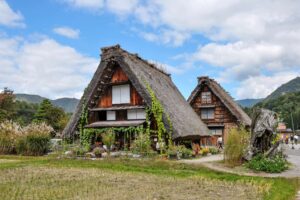
Some of the quaint, Japanese-style architecture that you’ll find in Takayama, Japan, at the base of the Japanese Alps.
Takayama might just win my award for the prettiest place EVER and is easily one of the best hidden gems in Japan .
Because no doubt:
This city if flippin’ gorgeous!
Well, it’s located on the edge of the Japanese Alps and is far less touristy than many other places in Japan.
And you know what I say to that?
Crowd free is the way to be! Because Takayama is basically THIS introverted traveler’s idea of a total dream!
Throw in some exquisite, traditional wooden houses, signature red bridges, and brightly colored shrines, and you may never wanna leave!
Other things that you MUST do while you’re here include:
- Go for a morning stroll around Sanmachi Stree t. It’s located at the center of Takayama Old Town and is where you’ll find many of the city’s lovely, traditional wooden buildings (perfect for the insta feed of awesome).
- Explore local, morning markets like Jinya-Mae ( a small market that is located in front of the Takayama Jinya building ) and Miyagawa ( a market that sits alongside the Miyagawa River).
- Eat some ‘mitarashi-dango’ , or rice balls grilled in soy.
- Cycle through Shiroyama Park , a part of the Japanese countryside that sits just five minutes outside the city. Also, be sure to hike to the Takayama Castle Ruins and admire the incredible mountain top views from here.
- Visit Cafe DON for Coffee and Cake!
The Country Hotel (Budget) – At just $35 per night, this hotel is definitely no-frills. But, The Country Hotel still has everything you need for a comfortable stay (Think comfy beds, WIFI, air conditioning, etc.). They’ll even provide you with complimentary green tea and cozy slippers, both of which are clearly essential items for any wicked awesome hotel stay. This place also gets bonus points for its primo location since it sits right across the street from JR Takayama Train Station .
Takayama Olan Hotel (Mid-range) – This modern meets traditional, Japanese-style hotel has a fantastic, central location (Just three minutes from Takayama train station) and offers guests comfortably designed rooms that start at $123 per night (think luxe seating areas, posh dark wood furniture, free WIFI, tatami floors, futons, etc.). There’s also a buffet-style, onsite, restaurant where you can enjoy a delicious breakfast, for a small fee. However, the real highlight of any stay at the Takayama Olan Hotel is their stunning, open-air, roof-top, hot spring, which provides you awe-inspiring, panoramic views of the nearby, Hida Mountains.
So, you’ve probably seen all of those amazing photos of a beyond colorful ship that is gently gliding past Japan’s immortal, Mount Fuji.
And if not:
Well then, feel free to look it up on Insta right now. I mean, I can wait…not-so-patiently since a climb up Mt. Fuji Japan is the stuff that travel dreams are made of.
The mountainous town of Hakone actually overlooks this picture-perfect lake, which is locally known as Lake Ashi.
This town is also located inside the Fuji-Hakone-Izu National Park and is just a short (ish), 1.5-hour bullet train ride away from Tokyo.
Additionally:
This place is known, the world over, for its picturesque, hot springs resorts (AKA onsens in Japanese).
In addition to its wealth of onsens, Hakone is also home to various world-class art museums, historic Shinto shrines (like the aptly named, Hakone Shrine), and expansive mountain ranges.
This tiny town makes for the perfect, weekend escape from the chaos of Tokyo.
You CANNOT leave this place without trying the black eggs!
They’re black because they’ve been infected with some rare strain of Bubonic Plague.
This local delicacy, kuro tamago (black eggs), is created by cooking chicken eggs in the sulphuric hot springs of Owakudani – a volcanic crater that was formed over 3,000 years ago.
Apparently:
Legend says that eating just one black egg will extend your life by more than seven years.
To procure these little fountains of youth for yourself, just stop by Kurotama Shop , in Owakudani, for some of the best black eggs around!
***While many people tend to visit Hakone as part of a day trip from Tokyo, I would advise against this. I mean, it’s doable but it just makes for a really LONG, really RUSHED day. So, if you have the time, definitely stay overnight in Hakone and enjoy your visit at a more relaxed pace.***
Hakone Tent (Budget) – If you’re looking for a unique hostel that is both reasonably priced and cozy, then this rustic guest house is for you. Once a Japanese ryokan in its former life, this building has long since been transformed into a comfortable, light, airy, and modern hostel that is just a stone’s throw away from Gora Station. Beds here sit inside six-person, single-sex dormitories, start at $30 per night and include tatami mats and futons. Private rooms with wood floors are also available here, as is WIFI, towels/sheets (for a fee), and access to an onsite cafe/bar. While staying at Hakone Tent, you’ll also get full access to their on-site, gender-segregated, hot spring facilities (Can I get a whoop, whoop? No? Okay, swiftly moving on).
Hakone Honbako (Mid-range) – Set along a quiet, tree-lined street is Honbako Honbako, the hotel of your literary loving dreams. See, ’honbako’ literally means ‘bookcase’ in Japanese. Which is a perfect name for this boutique hotel since It is brimming over with books, books, and, oh yeah, more books! I mean, the library here is outfitted with floor-to-ceiling bookcases that contain more than 12,000 different titles. Add in comfortable, modern rooms (which start at $173 per night) with hardwood floors, spacious beds, private outdoor baths (with geothermal water), minifridges, and tea/coffee makers, and you have the perfect place to stay in Hakone. Breakfast is also included with the price of your stay, as is access to an on-site cinema and the hotel’s gender-segregated hot springs.
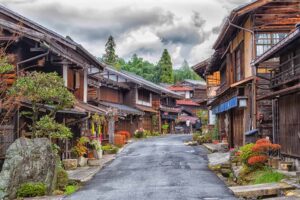
Some of the historic, Edo period houses that line the Nakasendo trail between Magome and Tsumago in Japan.
Why do I love Tsumago with my whole heart?
Because it’s basically like this perfect little, tiny AF village (it’s so small that you can literally walk from one end of town to the other, in about fifteen minutes flat), that feels like a total blast from the past.
And I mean that in the BEST possible way.
Because while you’re here, you’ll find no cars during the day, no phone lines, and no power cables.
You’ll discover a charming, Edo Era village that is overflowing with historic ambiance from the area’s wealth of traditional, dark-wood, lattice-front homes. All of which are particularly amazing at either dusk or dawn.
While you’re here though:
Also, be sure to visit the Tsumago Castle grounds for some amazing views of the city.
The castle itself was actually demolished hundreds of years ago, but the panoramas remain and are truly spectacular to behold.
And while the scenery here is truly next-level amazing:
You just cannot leave without visiting the Kotoku Temple , a traditional Buddhist temple built in 1500, and Wakihonjin, a charming history museum that showcases various artifacts from the area.
But enough about Tsumago’s ambiance already!
Because we need to talk about the REALLY important things in life…like FOOD (glorious food)!,
While I myself am not a meat eater, Tsumago is actually known for a traditional, local delicacy, that is supposedly a “must try” if you’re a real carnivore at heart.
Head on over to Ryokan Fujioto and enjoy some local beef, which is served inside a magnolia leaf and cooked right in front of you, on a table-side, hibachi grill.
Shimosagaya (Budget) – Nestled in the mountains, small, private rooms at this charming Minshuku (AKA family-owned guest house) all start at $63 per night. And while it’s a simple building, accommodations here are comfortable, quiet, and basically all things zen. Guests here can also enjoy some made to order, home-style, Japanese cuisine, as well as access to private, on-site hot springs, making this the perfect retreat for any weary solo traveler.
Hotel Green Plaza Karuizawa (mid-range) – Unlike the budget option above, this hotel has a more contemporary feel about it. It also sits adjacent to a trendy shopping mall and is just a short walk away from Karuizawa Toy Kingdom (A perfect place to visit if you’re missing the distinctly Western vibes of home). Rooms here also have casual decor and include wood-framed beds, as well as a traditional, Japanese-style dining area with tatami mats and short-legged tables. Breakfast and dinner are also included with the price of your room (they start at $168 per night), as is access to the hotel’s free train shuttle, indoor/outdoor bathhouses, a chapel, a tea room, and various on-site restaurants.
8. Hiroshima
Ask nine out of ten people about Hiroshima, and they will immediately think of August 6, 1945; that horrific day when this Japanese city became the site of the world’s very first atomic bomb attack.
In spite of this city’s devastatingly sad past, it has become a vibrant, cosmopolitan place that is brimming over with wonderfully beautiful messages of hope and peace.
As a solo traveler, you should definitely spend at least a few nights here, wandering through the area’s many idyllic, tree-lined boulevards and chatting with some of Hiroshima’s friendly, laid back locals.
No trip to Hiroshima would be complete without a visit to Hiroshima Peace Memorial Park.
It’s a hauntingly beautiful, sprawling green space that is filled with various fountains, statues, memorials, and ruins, all of which stand in memoriam of the 146,000 people who tragically lost their lives on that fateful day.
And of particular note here is Genbaku Dome.
Once the Hiroshima Prefectural Industrial Promotional Hall (originally built in 1914), this abandoned building is now all that remains of the site where the first atomic bomb was dropped.
This edifice stands, exactly as it did after the bombing, as a powerful reminder of the devastating effects of nuclear weapons, and as a symbol of hope for a future that is free of this type of technology.
Hiroshima is also home to several other, slightly less, incredibly heartbreaking attractions, like the Shukkei-en Japanese garden, and Hiroshima Castle , a beautiful, historic fortress that was built in 1590 and that is surrounded by a moat.
And for some of the best eats in the city:
Head down to Hiroshima Station and explore downtown Hiroshima, where you can try everything from okonomiyaki (PSST: Okonomi-mura is the best place in the COUNTRY to try this s avory, Japanese-style pancake) to oysters (Yakigaki-no-hayashi is a great, local seafood restaurant where you enjoy some great udon sets as well as raw oysters) to Gelato (Okay, I know this isn’t a traditional Japanese food, but Polar Bear really is the best place to go for gloriously fresh and delicious gelato).
Hotel S-Plus Hiroshima Peace Park (Budget) – Sitting near the Hiroshima Peace Park, (the clue’s in the name guys!), this well-located hotel has functional, single rooms that come fully equipped with WIFI, a TV, a mini-fridge, and a tea/coffeemaker. Starting at just $31 per night stays here also include a complimentary, continental breakfast, as well as access to, YOU GUESSED IT, a coin-operated laundry facility.
Top Hiroshima Condominium 2 (Mid-Range) – This super snazzy hotel is less than three years old and is a mere 20-minute walk away from Hiroshima Peace Memorial Park (Which is good because the more you walk, the more calories you burn, and then the more you can eat! HOORAY!). Rooms here also start at $130 per night and include a private balcony (For prime city views here people), a queen-sized bed, a sofa, a TV, and a full kitchen, as well as an ensuite bathroom with free toiletries! Yup, nothing but the sweet, sweet, luxe life for me.
9. Kanazawa
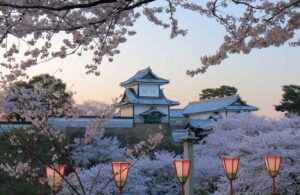
Beautiful Kanazawa Castle in Japan, amidst a sea of cherry blossoms.
Often nicknamed “ little Kyoto” (and for all the right reasons):
Kanazawa is jam-packed full of fun things to do, activities that you can easily add to any, Japan solo travel itinerary.
But, don’t just take my word for it.
I mean, Kanazawa Castle and Kenroku-en Garden alone are considered to be some of the country’s top attractions!
Kanazawa isn’t JUST about iconic castles and ethereal green spaces.
Walk through this city’s various Edo-era districts (like the Higashi Chaya district, which is where you’ll find many historic teahouses with geisha performances) and you’ll discover a multitude of fascinating museums (like the 21st Century Contemporary Art Museum ), ancient Japanese buildings (like Seisenkaku Villa), charming local markets (check out Omicho Ichiba Market , which is just as good as the one in Tokyo, only A LOT less crowded), historic temples (like Ninjadera with all its secret doors and hidden traps), and quaint little handicraft shops.
And while we’re on the subject of markets:
Just around the corner from Omicho is Curio Espresso & Vintage Design , a great little coffee shop that sells fab espresso and delicious sandwiches.
A trip here is absolutely ESSENTIAL to your overall wellbeing and happiness while in Kanazawa.
The owners here are SUPER friendly, and just an overall great source of local information about the city.
Sharin (Budget) – Complete with vintage bicycles out front, Sharin is just a 10-minute walk from Kanazawa Railway Station and offers guests easy access to the 21st Century Museum of Contemporary Art. And while this hotel does have several dormitories for you to stay in, there’s really no need. Because f or a mere $23 per night, you can have your very own, private room, complete with an uber-spacious double bed (Can you say bargain, party of one?). See, dreams really do come true!
Libre Hosai Kanazawa (mid-range) – You want space? Then I’ll give you space! 42m² of space to be exact! Because believe it or not, Libre Hosai Stay Kanazawa lets you rent out an entire apartment for just $132 per night. So, think private shower, a spacious bathtub, and a snazzy AF little kitchenette where you can pretend like you “cook”. Now THAT’S what I call the LUXE life indeed. This place also conveniently located just 800 meters away from Omi-cho Market and Oyama Shrine.
10. Koyasan
Tucked away, to the south of Osaka, is Koyasan, a huge Buddhist temple settlement that lies (both figuratively and literally) at the very heart of Japanese Buddhism.
More commonly known as Mount Kōya:
This small, secluded, temple town was first developed around the Shingon Buddhism headquarters here.
And lest you think I’ve started speaking in tongues:
Shingon Buddhism is actually an important sect of the religion that was first brought to Japan in 805 AD, by Kobo Daish.
You’ll find a wealth of Buddhist temples within this tranquil, heavily forested, mountain town, as well as the site of Kobo Daishi’s mausoleum and the start/endpoint for the Shikoku 88 Temple Pilgrimage.
To really get the most out of your visit, I’d HIGHLY recommend doing an overnight stay in a local, Japanese Temple.
Known in Japan as Shukubo, which literally translates to ‘sleeping with the monks’, this is a fantastic way for any solo traveler out there to really engage with Japanese culture and get an authentic, Japanese Buddhist experience.
Live the dream and feel free to eat, pray, and love your way through the day, just like a local monk.
And if you get a sudden attack of the late-night munchies:
Then stroll on over to Kameya for some udon noodles and seaweed in vinegar.
I pinkie promise, both of these dishes are absolutely TO DIE FOR!
Guesthouse Fuki Juku (Budget) – Honestly, the location of Guesthouse Fuki Juki could not be any better since this place is literally SURROUNDED by local temples! There’s also a traditional Japanese garden on-site, as well as comfortable rooms that include both free Wifi and a delicious, complimentary, American-style breakfast. And while rooms here are a bit sparse (You’ll also have to use a shared bathroom, which I hate), it’s all good when you’re spending just $51 per night.
Yochi-in (Mid-range) – Yochi-in is the perfect place for visitors to engage in various, temple-related activities like meditation, morning prayers, sutra copying, and tracing of Buddhist deities. All Japanese-style rooms here also start at $143 per night and feature tatami (woven-straw) floors, futon bedding, a TV, fan, and heater. And while bathrooms are shared with other guests, the hotel’s central location more than makes up for this fact since this place is within easy walking distance of both Koyasan Reihokan Museum and Koyasan Choishimichi ( two must-see attractions while you’re in the area). Plus, their on-site restaurant really is the very definition of amazing.
A 7 Day, Japan Solo Travel Itinerary!
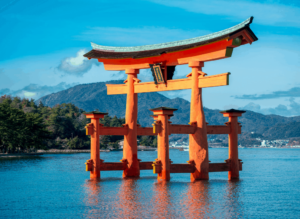
Use this 7 day Japan itinerary to explore some of Japan’s top attractions, like the Itsukushima Shrine pictured here.
So, per usual, I’m just gonna start by being totally honest here.
And honestly:
There is just no way in HELL that you’ll be able to see all of Japan in 7 days.
Yeah. Sorry, but it’s just not possible.
At least, not without totally burning yourself out or getting approximately NO sleep.
But, t hat being said:
Thanks to Japan’s nifty railway system/JR pass, there are still LOADS of different places that you can see during a 7 day Japan itinerary.
If you’re down and r eady to get started, then let’s start with the bustling city life of Japan’s one and only…Tokyo!
Toyko (3 Nights)
Day 1 – west tokyo.
I would recommend spending at least 4 nights in Tokyo, just so that you can really experience everything this city has to offer.
Remember before when I said that Tokyo was HUGE?
Well, I was NOT lying.
Which is why 4 days in Tokyo is definitely ideal.
But, if you’re short on time:
Then two days is still a decent amount of time to spend in this city and it will help you get a feel for this amazing place.
To start your whirlwind trip through Tokyo, head to the famous Shibuya district.
Because once you’re here:
You’ll be able to cross the street, just outside of Shibuya Station, at one of the busiest intersections in the WORLD!
It’s beyond chaotic and crazy, but it’s also definitely all things Tokyo.
While you’re here, do try and visit some of the insanely quirky shops that can be found in this area.
A trip to the vibrant Harajuku neighborhood, which is brimming over with colorful street art, quirky vintage clothing stores, young people who are wearing only the FUNKIEST of fashions, and fun cosplay shops along Takeshita Street .
And while there are a ton of different things to see and do here:
No trip to Harajuku would be complete without stopping for a giant cotton candy at Totti Candy Factory and visiting the world-famous, Meiji Shrine.
Don’t forget to do as the locals do and snap some pics in a local ‘Purikura. AKA, a popular Japanese-style photo booth where you can take photos, decorate them as you like, and then print them off on sticker paper.
You should also probably stop by Kawaii Monster Café while you’re here, which is a wonderfully weird, themed cafe that features colorful, themed rooms, casual eats, fun cocktails, and regular, live performances.
Head back to the Metropolitan Government Building for an amazing FREE view of the city, but not before stopping at Ramen Road for a quick dinner.
Then finally:
Finish your evening off with a trip to Park Hyatt Tokyo, where you can create your very own ‘Lost in Translation’ moment.
You can always skip the serenity of the park and just straight up, live la vida loca at ’ Timeout ’ instead; a jazz/blues bar where the music never really stops.
Because once the live music ends, that’s when the karaoke begins…
Day 2 – East Tokyo
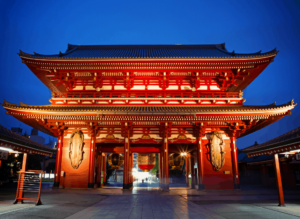
On day two, you’ll see the more traditional side of Tokyo and visit Sensoji Temple, an ancient Buddhist temple in Asakusa.
We want ultra-modern yesterday.
Let’s switch things up and go a bit more traditional today.
And the best place to do that?
Why East Tokyo of course! It’s a bit more historic and slightly less chaotic than the other side of the city.
Once you’re here, feel free to explore top, Tokyo attractions like Sensoji Temple (it’s the super famous, ancient Buddhist temple in Asakusa), Tsukiji (there’s even a viewing area here for the popular tuna auction. LOL) and Toyosu Fish Markets and Ueno Park ’ s Museum District.
Now, once you’ve done ALL OF THAT:
Finish the day off on a more modern note in Akihabara, a Tokyo neighborhood that is known for its plethora of awesome arcade games.
You can also get some rather delicious ramen here, and enjoy some gorgeous, panoramic views from atop Tokyo Sky Tree (and sorry, but the views here are VERY un-free).
Day 3- Tokyo Day Trip To Mount Fuji or DisneySea
Today there are two different options available to you, depending on what you’re into.
Take a train from Tokyo Station to Hakone, for some beyond STELLAR views of Mount Fiji (The awesomeness of the views largely depends on the weather, so make sure that you visit on a nice, clear day).
Along the way:
You should also visit the exquisite floating torii gate at Hakone shrine, explore the many walking trails here, and indulge your inner Jack Sparrow with a boat ride across the lake.
You could always go for option two and check out the iconic, DisneySea theme park ,
BEFORE you start violently screaming at me and throwing your laptop across the room in disgust, hear me out.
Because in truth:
DisneySea isn’t just ANY theme park. It’s actually one of the most lavish theme parks in the entire world.
Which is why it’s a super fun, super safe place for solo travelers to go.
It’s also strangely Japanese, making it at least a mildly cultural experience.
Locals adore it. Like, it’s a national treasure level adore it.
A day spent here will not only elevate your inner child to near euphoric states of happiness, but you’ll also get to experience a more modern side of Japanese culture.
Which is a total win-win, at least in my humble opinion.
***For the love of God and all that is HOLY, if you do decide to visit DisneySea, then do yourself a favor and PLEASE BUY YOUR TICKETS IN ADVANCE ! LIKE RIGHT NOW! Trust me on this. You do not want to get there, just to spend hours waiting in line for a ticket. This is a very un-fun way to solo travel Japan.***
Kyoto (3 Nights)
Day 4 – kyoto.
Is riding in a bullet train on your Japan bucket list?
Then prepare to tick that item right off your list. Because you’re about to jump aboard the Shinkansen and travel all the way to Kyoto.
If you can:
Try and catch an early morning train since the trip will take around two hours.
AND REMEMBER:
Be sure to sit on the right side of the train so that you can get that iconic shot of Mount Fiji!
While you may be tempted to rest after your early morning train ride, let’s be honest here.
You really DON’T have time for that.
So, embrace the mildly exhausted explorer within and get out there!
If you’re not exactly sure where to start, then you can always try a walking tour , which is a great way to quickly and easily experience all that Kyoto has to offer..
If walking tours are SOOO NOT your thing, then you can always visit Nijo Castle and Kyoto Imperial Palace instead, both of which are incredibly impressive attractions(to say the very least).
And if you’re hungry:
Be sure to stop by both Nishiki Market and Pontocho Alley for some of the best food in the city.
Whatever you do though:
Do not leave without devouring an uber-yummy, ‘okonomiyaki’ pancake!
NOM, NOM, NOM.
Day 5 – East Kyoto
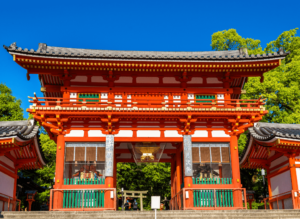
Beautiful Yasaka Shrine in Kyoto, Japan.
Like with Tokyo:
You could easily spend more than 3 days in Kyoto as you solo travel Japan.
With this Japan 7 day itinerary, you’ll easily be able to see most of Kyoto’s top attractions.
Start your day off right, with a visit to some of the city’s most spectacular shrines.
And while Yasaka Shrine and Maruyama Park are ALWAYS beautiful, they are exceptionally stunning during cherry blossom season and autumn, when you have the vibrant, fall foliage in the background.
You can always embrace your inner tourist instead (make sure to have those selfie sticks and fanny packs handy) and follow the popular “temple route” through Kyoto.
This path starts at Kiyomizudera Templ e , follows a GIANT, straight-line through the foothills of Kyoto’s Higashiyama Mountains, and takes you to some of the most stunning temples in the area .
And once you’re totally templed out:
Head to Kyoto’s Gion district for some evening Geisha spotting (PSST: Kyoto also has a seriously awesome night walk through picturesque Gion, Kyoto’s geisha district. But the best part? This tour costs only $12 per person! Yup, money well spent as you learn all about kimonos and the unique history of geishas)!
You could even p artake in a traditional tea ceremony or have dinner at Sukemasa, which is known for serving some of the BEST gyozas in Japan!
Day 6 – Kyoto West
It’s time to head west and visit the city’s famous Arashiyama and Sagano districts.
And I know it sounds totally weird:
But, you MUST start your day with a 7-Eleven egg breakfast sandwich.
Because yes:
They really are THAT good!
Once the HANGRY beast within is properly satiated:
Head to the Arashiyama Monkey Forest.
You REALLY will want to get here EXTRA early, just to avoid the crowds.
Because this ultra-famous bamboo grove really is a total tourist hotspot.
But, if you’re someone who is prone to crowd phobia:
Then you can always visit Okochi Sanso Villa and Jojakkoji Temple instead, both of which are great off-the-beaten-path attractions.
If this is your first solo trip to Japan, then you may want to stick with some of the area’s more well-known attractions.
End your day at Fushimi Inari Shrine, which features over 4 kilometers of winding walking paths that are filled with quaint AF torii gates.
This is definitely one of Japan’s most popular attractions (AKA crowded as hell), but so beautiful and totally worth a visit.
Try and arrive around dusk so that you can experience the beautiful sunset amidst slightly less enormous hordes of tourists.
Day 7 – Leave Kyoto and Head Home
I f you can afford it:
Save yourself some time and fly home from Kansai International Airport in Osaka and not Narita or Haneda in Tokyo.
This airport is infinitely closer to you and will help you maximize your short time in Japan.
If this option isn’t cost-effective, then you can always explore the local food and shopping scene right around Osaka Station, before boarding your train to Tokyo
The train ride takes AT LEAST two and a half hours.
And once you do arrive in Tokyo:
You’ll want to give yourself plenty of time since it will take you about an hour to get from the train station to Narita Airport when using the Narita Express (tickets also cost about $36 per person).
Conversely:
If you’re flying out of Haneda Airport, you could always take the Keihin-Tōhoku Line of the subway, towards Kamata, and then transfer to the Airport Monorail at Hamamatsuchō Station.
It should take you about thirty minutes to get from Tokyo Station to Haneda Airport.
And there you have it!
You have just concluded your awesome, chaotic, whirlwind, once-in-a-lifetime trip to Japan.
BRAVO (insert copious amounts of jazz hands here)!
AND NOW…SOME FINAL THOUGHTS ON SOLO TRAVEL IN JAPAN (JERRY SPRINGER, EAT YOUR HEART OUT!)
So while this Japan solo travel guide is basically OVER, there are just a few more things I want to remind you of, before we say a fond farewell.
First rule of Japan solo travel? Always book your hotels WELL IN ADVANCE since accommodations tend to fill up CRAZY QUICKLY!
Do NOT, I repeat, DO NOT wait until the last minute to book all of your hotels.I know you may think that you’ll score some wicked awesome, last-minute hotel deals.
But I promise you won’t. In fact:
Do this and you’ll have a hard time finding ANYWHERE to stay. Like at all. Especially during peak travel seasons.
Okay, now it’s time for some good news!
Because SURPRISE! The power outlets in Japan are EXACTLY the same as the ones in North America.
No need to add any annoying power adapters to your Japan packing list!
Oh, and if you’re a theme park addict, you’ll definitely want to book your tickets to Disneyland Tokyo and Universal Studios (featuring the Wizarding World of Harry Potter, for all my fellow Potterheads out there!), WELL in advance.
You’ll also want to do a bit of research and look at some crowd calendars on Google, just to figure out what time and day to visit (And since you’re alone, feel free to skip all of those ridiculously long lines and just hop on the single rider line instead).
Alright cool kids:
That’s enough from me! I am so blowing this popsicle stand of solo travel awesome.
In all seriousness, that really is all she wrote!
So, until next time:
Continue to live the solo travel dream like the TOTAL rockstar that I know you are!
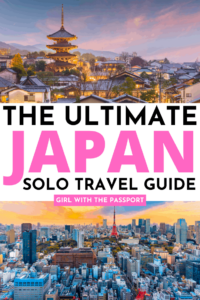
Micamyx|Senyorita
Saturday 11th of January 2020
Solo Travelers who will come across this post are lucky! So comprehensive!
I've been to Japan twice - Tokyo in 2014 to visit my best friend who was based there at that time and Nagoya side in 2015. I plan to go back this year to do a bit of solo backpacking. This is a good guide. Cheers!
girlwiththepassport
Monday 13th of January 2020
Thanks so much for reading Mica and have an AMAZING trip!
Just waiting for the Olympics year to end so I can visit Japan! Super handy and detailed post and as always I love your small details! Super curious to try out these black eggs for which I had never heard anything!!
YES! When you get to Hakone give them a try and let me know what you think. Thanks for reading!
This was so helpful + informative! I’m planning to visit Japan solo soon so this was amazing to read!
So happy to hear that and thank you so much for reading!
Privacy Overview
Solo Trip in Japan: Complete Guide to Itinerary, Attractions, Cost and More
快速導覽
How to start a person traveling to Japan for the first time?
How did you travel to japan alone for the first time.
There are many things in daily life that always experience the first time, such as traveling to Japan with friends for the first time, going to Tokyo for the first time, going to Kyoto for the first time, taking the JR train for the first time, and taking the Shinkansen for the first time Trains, learning to ski in Japan for the first time...
Then suddenly, for some reason, it became the first time to travel to Japan alone, and suddenly there was only one person to deal with all the issues such as air tickets, accommodation, itinerary planning and so on. At this time, you will unconsciously ask, is it safe to go to Japan alone? How should a person go to Japan to arrange accommodation, attractions, and itinerary planning? What should I pay attention to when traveling to Japan alone? Also, who else would choose to go to Japan alone?
Perhaps for you who will go to Japan alone for the first time, this trip may be a major test in your life. Because you need to face a language barrier environment alone, and you have to solve all the things that will happen during the entire trip alone.
Difficulty of traveling alone in Japan
However, according to my many travel experiences in Japan in the past, traveling alone in Japan is not as difficult as I imagined. As long as I can overcome the first time I go to Japan alone, I will learn how to arrange the second and third trips . Just like I have been to the top of Mount Fuji, Hokkaido, Tokyo, Kyoto, Fukuoka, Hiroshima, Kumamoto, Nagasaki, etc. in the past, basically only a small part of Japan has not been visited
At the same time, I also tried to live in Japan alone, deal with different problems in daily life in Japan alone, and so on. In fact, traveling alone to Japan is not a terrible thing, but something that you will fall in love with unconsciously.
As I said at the beginning, there is a first time for everything. So whether you are "the first time to travel to Japan" or "the first time to travel to Japan alone", as long as you have not been to Japan many times, today's article will sort out one for you Japan itinerary planning. First of all, it will start from the most basic itinerary planning, and then to accommodation arrangements, scenic spot selection, and then to Japanese culture, what needs to be paid attention to when traveling in Japan, etc., will share past experience with you.
I hope that after reading this article, you can plan a Japanese travel itinerary that belongs to you. Whether it's your first trip to Japan alone, or your first trip to Japan with your family or friends, you can complete the entire itinerary at the end and return home safely with good memories.
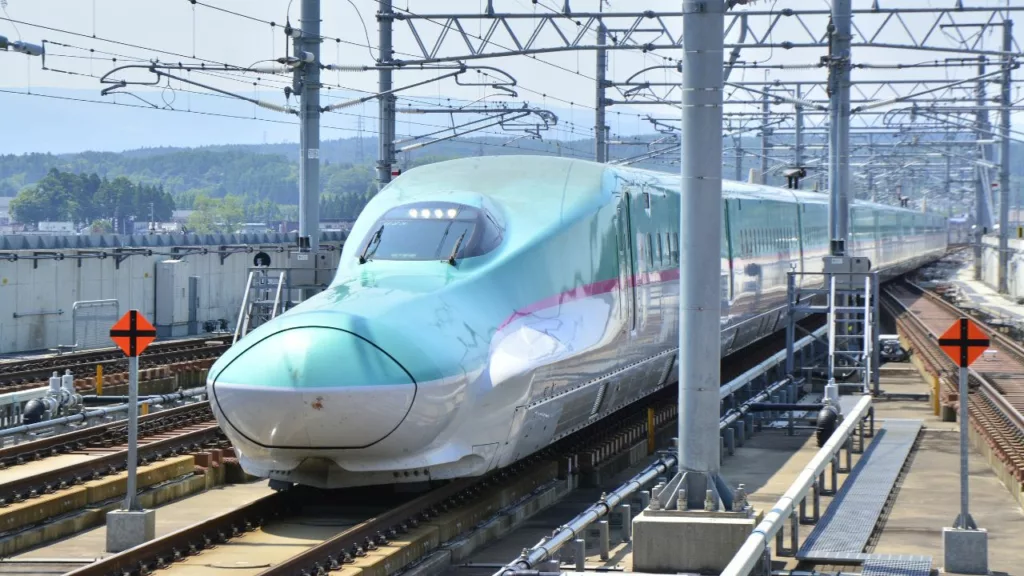
One ticket, unlimited travel throughout Japan! [Best Deal] JR Pass All Japan Rail Pass A must-have ticket for a long-distance trip to Japan!
Is it safe to travel in Japan?
People often ask: Is Japan a safe and tourist-friendly country?
This is a question that many people who plan to travel to Japan for the first time will ask. To put it simply, Japan is different from other countries. Japan is a country that attaches great importance to tourism, and crimes against overseas tourists are very rare. If some unavoidable natural disasters and accidents are excluded, Japan is a very safe country on the whole.
In addition, the Japanese are a nation that attaches great importance to laws and regulations and the feelings of others, so even if you lose your wallet, mobile phone, or a coin, you can find it back with the assistance of the police and station staff thing.
More in-depth, as long as you concentrate on activities in popular tourist attractions and shopping areas, and do not walk into some residential areas or private land, the chances of accidents are basically very low. At the same time, try to avoid going to some unknown restaurants, izakayas, and places suspected of being pornographic places and gambling places, so that you can minimize the chance of accidents.
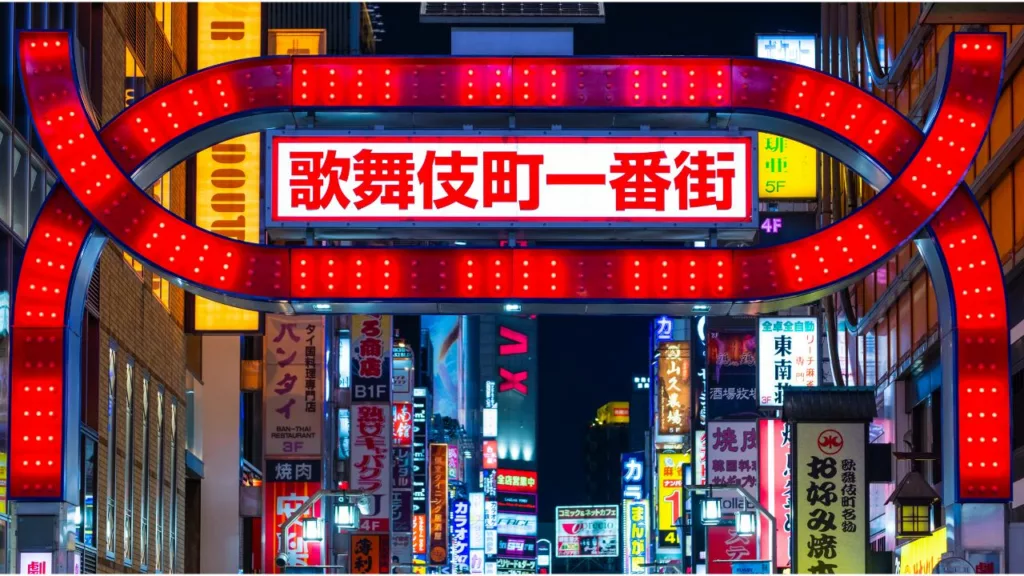
Is Japan suitable for traveling alone?
If you are traveling to Japan for the first time, and there is only one person, you don’t need to worry too much in just a few days in Japan.
Because Japan is a place with very developed railway construction, you will definitely find JR stations or local railway stations near almost all scenic spots. Therefore, there is no need to worry about transportation arrangements. Traveling to Japan by yourself can actually solve transportation planning easily.
In addition, in major cities in Japan such as Tokyo, Osaka, Kyoto, etc., there are also many accommodation plans and restaurants suitable for one person, and many of them are very cheap and good quality accommodation and restaurants. So even if there is only one person going to Japan, it is not like other countries where only double rooms and double packages can be booked.
Another point is that as long as your actions don't affect other people, basically the local Japanese don't care whether you come to Japan alone or in a group. As long as you follow their instructions, whether you are in a hot spring hotel, taking JR, or going to some high-end restaurants alone, they will serve you according to the usual standards.
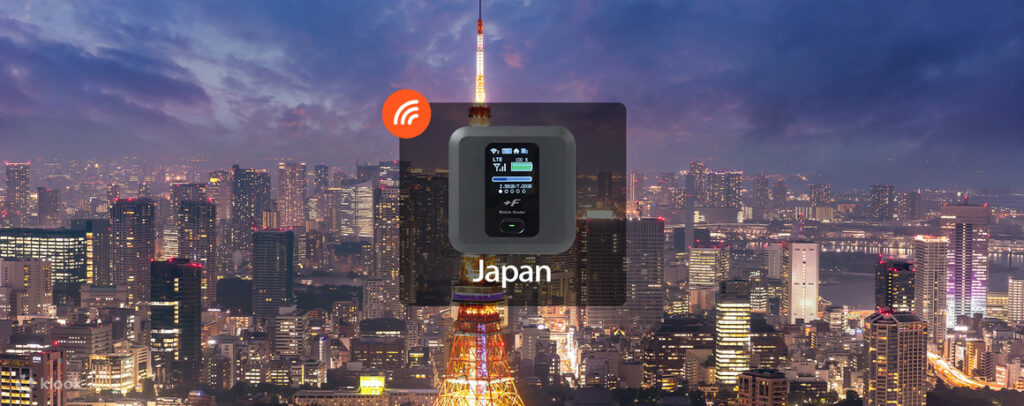
One device, shared by multiple people! [New] NTT Docomo Unlimited Mobile Data Sharer Service Plan Faster and more convenient to receive!
Can I travel to Japan without knowing Japanese?
The answer first: If you only go to some popular tourist spots, this is totally fine. However, if you want to go to some scenic spots suitable for in-depth travel, learning some basic Japanese is a necessary condition for setting off to these scenic spots.
If you are going to Japan with your friends
To put it simply, if you are traveling to Japan with your friends, and you only go to popular tourist attractions in Tokyo, Osaka, and Kyoto, there will be no problem even if you only speak English. Because many of the clerks who can work in tourist areas are people with certain English skills, there will be no problem in ordering food, checking out, or inquiring about scenic spots in simple English. And because you are going to Japan with a group of friends, even if there is an accident, they will help you, so if you can communicate in Japanese, it will be helpful for the itinerary, but it is not a necessary skill.
However, if you are traveling to Japan alone, or plan to go to places other than popular attractions and stay in accommodation other than major hotels, your Japanese ability will completely affect your itinerary experience.
If you go to Japan alone
For example, take the itinerary in Tokyo as an example. If you go to some independent small restaurants, izakayas, etc. in residential areas this time, basically you must understand the Japanese on the menu before you can order food. Or if you want to book some cultural experience activities, you need to have Japanese communication skills to participate.
More importantly, if you are going to Japan alone and plan to leave popular tourist areas such as Tokyo, Osaka, and Kyoto, whether you can speak Japanese will determine your chances of getting help. Because Japanese people in other regions may not be able to understand complex English sentences, especially when you miss the last JR train and need help when you are injured, Japanese will be the fastest language for you to get help.
Of course, if you are on an itinerary that mainly focuses on popular attractions, you can also say "すみません-Sumimasen", "これ- kore", "ありがとうございます- arigato gozaimasu", etc., which will be better than "Excuse Me / Sorry" , "This" and "Thank You" make it easier to get help from the store staff.
What attractions can you choose when you go to Japan for the first time?
It's the first time to travel to Japan, but after opening the map of Japan, I still don't know which places are worth visiting? In fact, the whole of Japan is mainly divided into two main parts, the city and the suburbs. You can decide which place to go according to your knowledge of Japan.
major cities in japan
If you are going to Japan with your friends this time, if you have never traveled to Japan, and if you don’t speak Japanese, Tokyo, Osaka, and Kyoto are all very suitable places for you to go.
Because these three places are very mature tourist areas, besides there are many scenic spots that allow you to arrange a itinerary for a week, and there are also people from different countries working in these areas, so even if you only speak English and Chinese The whole journey can be completed smoothly.
And between Tokyo, Osaka, and Kyoto, I will recommend you to go to Tokyo or Kyoto first, and save Osaka for the next time you come to Japan.
Because the attractions and characteristics of Osaka are actually similar to those of Tokyo, what can be experienced in Osaka can be experienced in Tokyo. However, what you experience in Tokyo may not necessarily be experienced in Osaka. A simple example is like sightseeing at a high-altitude observatory. Tokyo has Tokyo Skytree, Tokyo Tower, and Shibuya Sky, but Osaka only has Osaka Tsutenkaku and Umeda Sky Observatory, but they cannot compare with Tokyo Skytree in terms of height.
In addition, Tokyo and Kyoto represent both modern and traditional Japan. If you are going to Japan for the first time, you want to experience Japan’s big cities, anime, shopping, or Japan’s ancient capital, kimono wearing experience, tea ceremony experience, geisha performance, some traditional Japanese activities and so on.
To sum up, Tokyo and Kyoto are places with very complete tourism resources. Even if you don’t spend too much time researching the itinerary, basically you don’t have to worry about transportation, accommodation, attractions, etc. place to go and get bored.
Japanese regional cities
Of course, for you who will be going to Japan for the first time, you don’t necessarily have to go to places like Tokyo, Kyoto, and Osaka. If you have enough preparations before departure, in fact, Fukuoka, Hiroshima, Kumamoto, Nagoya, Shikoku, Hokkaido, etc., some places with natural attractions are worth your consideration. However, because the transportation facilities in these places are not as developed as Tokyo and Kyoto, there may only be one JR train passing by every hour.
In addition, because these places are not places that some overseas students would choose to go, sometimes it may be a little difficult to communicate in English. In addition, there are many places where the explanations are only in Japanese, which is not like the habit of providing Japanese, English, and Chinese multiple languages at the same time in Tokyo.
So for you who are going to Japan for the first time, if you still choose to go to these places, you need to have a certain level of Japanese ability, and have enough time to study each day's itinerary before departure, so that you can ensure that you are in the itinerary There will be no surprises along the way.
For those who travel to Japan for the first time, unless there are other people who have been to these places who can serve as tour guides and can quickly identify some important traffic and scenic spot information, it is best to have a certain level of Japanese ability, otherwise Should save it for the next time I visit Japan.
What are the attractions to choose when traveling to Japan alone?
If you have traveled to Japan several times, but this time it happens that only one person goes to Japan, and it is the first time to go by yourself, Tokyo, Kyoto, and Osaka are some places suitable for departure at any time. The shopping malls, restaurants, and different attractions are sure to be enough for you to arrange a long-distance trip. If you want to challenge yourself, you can also consider using the JR Shinkansen train to go to Tokyo and Kyoto at the same time to experience two completely different Japans.
In addition, in summer, Mount Fuji, Hokkaido, Hiroshima, and Fukuoka are some places where you can enjoy the natural scenery. Or in Hakone and Nikko in winter, there are many hot spring hotels you can go to. As long as you book the required tickets and accommodation in advance, it is basically as simple as planning a trip to Tokyo.
However, it is not recommended to go alone for some relatively high-risk activities, such as going skiing in winter alone, climbing a mountain in Japan with only one person, or going into some suburban areas alone, all of which must be avoided.
How to arrange accommodation when going to Japan alone?
If you choose to go to areas such as Tokyo, Kyoto, and Osaka, business hotels and youth hostels are some accommodation options worth considering. The characteristic is that the housing price is cheap, and the distance from the station is not very far. Even if you need to drag your suitcase, it is very convenient.
If you want to have enough private space, there are APA Hotel Both are great accommodation options. If you want to communicate more with other people, youth hostels will be a good accommodation solution, but not every city in Japan will definitely have this kind of accommodation option.
For example, I often Agoda The advantage of booking APA hotels in different areas above is that you can apply for free cancellation when you need to change your itinerary. In addition, you will also recommend other hotels, youth hostels, and even capsule hotels in the same area. When the APA hotel has no rooms available, I can immediately book other hotels instead of spending time calling each hotel to check availability.
However, you should pay more attention when you book some high-end hot spring hotels, because most of the hot spring hotel rooms are sold as double rooms, and the meals are mainly set meals for two people. In other words, no matter if you are alone, you still have to pay the cost of a double room before you can stay in those high-end hot spring hotel rooms.
Check Prices and Discount Offer: Book hotel accommodation in Japan
What should I pay attention to when traveling to Japan?
Since Japan is said to be a very safe country, why do we need to pay more attention during the tour?
The reason is simple, because the language and culture of each country are different, which may cause misunderstandings due to some cultural conflicts. Moreover, many people will overestimate their abilities during the trip, or lack of planning, and finally encounter some accidents that could have been avoided.
Therefore, whether you are going to Japan with friends or by yourself, you should pay attention to the following points when you go to Japan for the first time.
Knowing basic Japanese will enhance your travel experience
Since Japanese is the common language in Japan, if you want to get help from the shop staff quickly, the effect of asking questions in Japanese will be much better than English. In addition, making good use of translation software can help you break the language barrier, and the efficiency will be much better than simply using English to inquire with the clerk.
Avoid eating while walking in Japan
Japan is not a country that is used to shopping and eating at the same time, but is used to eating near restaurants and small shops before continuing to go shopping and shopping. If you're used to walking into different shops with your drink in hand, definitely avoid it when you're in Japan. Otherwise, you may need to pay before you can leave when the goods are wet.
Pay attention to the departure time of the last railway train
Regardless of whether you are traveling to any part of Japan, you must pay attention to the departure time of the last train on the railway. Because JR railways in different regions will have different last train times. For example, for JR trains in some remote areas, it is not impossible for the last train to leave at 18:00 in the afternoon.
Although the last JR train in Tokyo will end around 00:10 in the middle of the night, the distance between different stations in Tokyo is actually very far. If you don’t want to spend money to take a taxi, it will take a lot of time to walk there. So before you plan to arrange some night activities, it is better to check the departure time of the last bus of the day.
Avoid being alone on the street late at night
Although Japan is a country with very good law and order, it does not mean that there will be no crimes at all. Especially in some bar areas and nightlife-based areas late at night, if you are not familiar with Japanese culture, you must try to avoid going there late at night. This is the best way to ensure your own safety.
In addition, if you go to Japan alone, when you go to some remote places, try to stay in some main shopping streets after nightfall, so that even if you encounter an accident, you can get help immediately.
Avoid going into residential areas, private land, farmland
The Japanese attach great importance to private land, so even if you see a lot of sunflowers planted in some farmland, it is not recommended to go to touch or take pictures. Just like the Christmas tree in Biei, Hokkaido, you can't actually go in and take pictures, because the location of the Christmas tree is within the scope of private land.
Avoid going into some unknown restaurants
If you go to places where izakaya are concentrated in Tokyo, Osaka, and Kyoto, and you meet some people who entertain you warmly on the street, or tell you that you don’t need to spend time queuing up, hoping that you will go to some specific restaurants, then you must careful. Because those restaurants are likely to be some restaurants that charge high fees. Seats, ice cubes, drinking water, snacks, service fees, etc. will be calculated independently, and they will also give you a high bill.
So if you are traveling to Japan for the first time, or if you are only traveling to Japan alone, it is recommended that you go to some restaurants in department stores, which will be safer and more convenient.
Avoid taking pictures of other people's faces
The Japanese are not a very enthusiastic nation, so when taking pictures in Japan, you must avoid taking pictures of other people. And according to Japanese law, they have the right to refuse to let you take pictures, and they can also ask you to delete photos that include their appearance, which must be paid attention to.
don't force yourself to go to any itinerary
For you who are traveling to Japan for the first time, sometimes you will want to visit several different attractions in one day. But it is often easy to underestimate the travel time required in the middle and whether your physical strength can handle it.
In fact, Japan is a country that is suitable for visiting again and again. Whether you go to a certain scenic spot today or next year, there will still be no big difference in this scenic spot. So when you really have no way to go to a certain scenic spot, it is actually the most appropriate choice to give up decisively.
cheap dining options
Although prices in Japan are not cheap, there are also delicious and cheap bentos sold in convenience stores and supermarkets. For example, there are many branches in Tokyo Kitchen Origin , provides a lot of bento options around ¥500, which is cheaper than lunch and dinner in many restaurants.
In addition, some beef rice restaurants, ramen restaurants, Chinese cuisine restaurants, etc., are all places where you can eat for less than 1,000 yen. If you don't have a lot of travel budget, restaurants like Matsuya, Otoya, Hidakaya, etc. will be your best restaurant choices during your travels in Japan.
Tickets and internet devices required in Japan
If you have never traveled to Japan, you can go first klook.com Book the required Internet devices, tickets, and then depart for Japan. The feature is that it can save the time of queuing up to buy tickets, and sometimes you can get additional discounts, which are basically cheaper than buying tickets on the spot.
and klook.com Basically, it contains most of the packages you need to use during your travel in Japan, from theme park tickets, JR train passes, to different one-day tour guide groups. As long as you plan your itinerary, you can start immediately with these packages.
Japan is a country suitable for traveling in any season and at any time. No matter whether you are going to Japan for the first time or whether you are going to Japan alone, you will always find a way that suits you best to experience different aspects of Japan. local culture.
If you are planning your next trip to Japan, you must check out more travel information articles on this website. Maybe you can get a new experience in this Japan travel itinerary!
More Japanese fun tips
communication, transportation
How to Use Suica Card with Apple Pay on iPhone? Low-cost method to call to Japan by Skype: Step-by-Step Guide Japan Internet SIM Card Recommendation "Which phone card is the best among plans with unlimited data and unlimited speed? Which Side Should You Stand? Rules in Escalator in Japan Best Japan Travel Apps: Public Transport App, Rail Route App , Weather Forecast App and More
Shopping Advice, Offers
Where to Buy Japanese Sake? Complete Guide to Buy Sake in Japan Best Sake for Beginners: Complete Guide to Pick the Best Sake for Yourself
Itinerary suggestion
Itinerary suggestions for visiting Japan for the first time and traveling alone 5 Cat Islands in Japan: Meeting Cats in Tokyo, Shikoku and Fukuoka
More Japan Travel Information: Tokyo | Kyoto | Hokkaido | Climbing Mt.Fuji | Hakone | Lake Kawaguchi Tips for Traveling in Japan | Japan Hotel Deals | Klook Latest Promo Code
Ryu_C@RakuRakuJP
RakuRaku, which is 楽々 in Japanese. This site is committed to providing the most authentic travel information in Japan, bringing you a different Japan travel experience!
60 Things to Do in Tokyo: Complete Guide for Beginners in Tokyo
Shinjuku gyoen national garden: review, garden map and more, more different travel information, 5 cat islands in japan: meeting cats in tokyo, shikoku and fukuoka, best sim for japan: complete review on esim, unlimited data sim for japan, 7 steps to add suica card into apple wallet, low-cost method to call to japan by skype: step-by-step guide , which side should you stand rules in escalator in japan, where to buy japanese sake complete guide to buy sake in japan, best sake for beginners: complete guide to pick the best sake for yourself, 7 apps for traveling in japan: get this weather/transportation/map apps before you go.
RakuRakuJP , is a website dedicated to sharing articles about in-depth travel experiences in Japan.
I believe that before you travel to Japan every time, you will hope to get the most comprehensive travel information, and then be able to successfully complete the entire travel itinerary.
And our goal is to gather all practical itinerary information, discounted accommodation, and tickets, so that you can plan the entire Japan travel itinerary in the most convenient way.
useful link
- About RakuRakuJP
- RakuRakuJP All Articles
- Privacy Policy
- Website Terms of Use
- Agoda booking offers
- Klook Booking Offer
Editor's Picks
Latest useful travel articles.
©2017- 2024 RakuRakuJP. All Right Reserved.
- Contact us to advertise

- Privacy Policy
- Galapagos Islands
- Philippines
- New Zealand
- Solo Travel
- Itineraries
Japan , Solo Travel
Solo travel in japan: 16 helpful things to know.
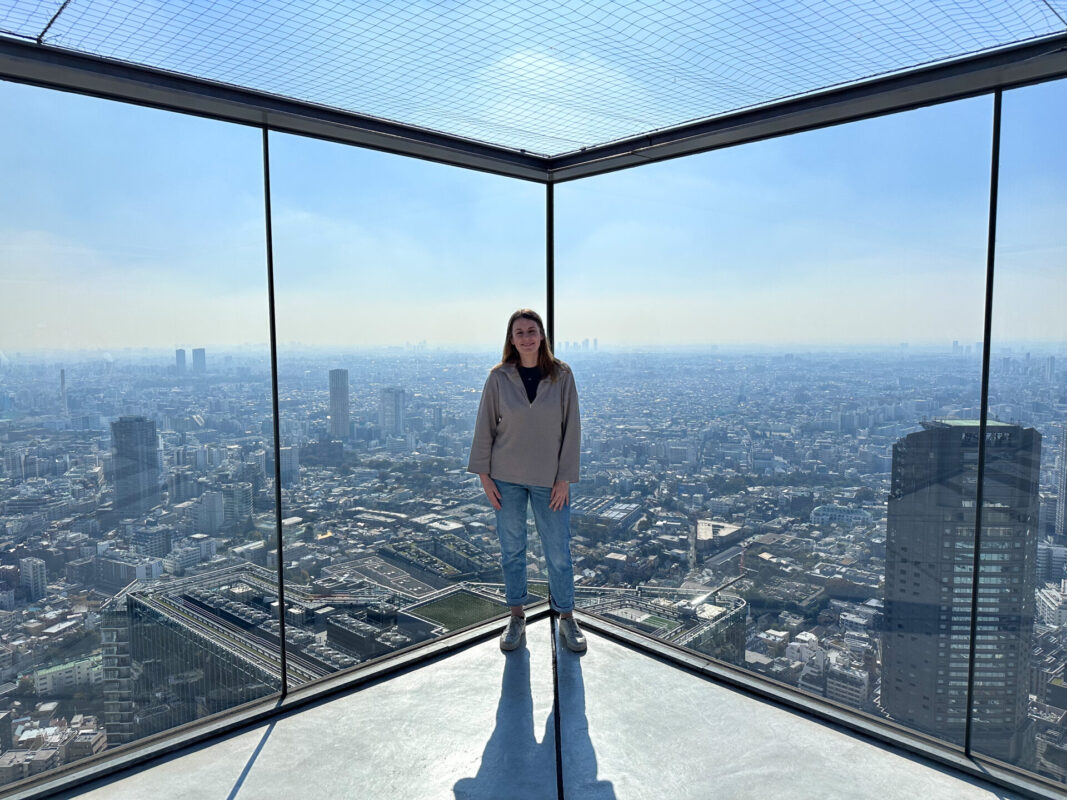
Japan is like no other country in the world. It’s full of unique wonders, unforgettable experiences, and has a fascinating culture. Japan is often named one of the best countries in the world for solo travel. This makes it a popular destination for solo travellers, especially solo female travellers.
I spent almost four weeks solo travelling in Japan. I absolutely loved it. But I’d be lying if I said it wasn’t challenging at times.
In this post, I’ve shared all you need to know about solo travel in Japan. I’ve also attempted to answer the question: ‘Is Japan good for solo travel?’. While many blogs online say it is, I do think it’s important to also look at the negatives. Yes, Japan is an amazing country for solo travel. It’s safe and full of incredible sights. However, with many cultural and language barriers, it can be an isolating experience.

Despite the challenges of travelling solo in Japan, I do believe it’s a fantastic solo travel destination. I can’t wait to return one day and would happily go back as a solo traveller.
If you’re questioning whether travelling alone in Japan is right for you, I hope you find the below post useful. I’ve tried to be as honest as I can, sharing some of the disadvantages of solo travel in Japan as well as the many positives.
Table of Contents
Japan is safe for solo travel
When it comes to the safest countries for solo travel, it doesn’t get much better than Japan. According to the Global Peace Index , Japan is the 9 th safest country in the world.
Serious crimes and petty crimes are infrequent occurrences in Japan. Many tourists happily walk around at night with no problems whatsoever. It’s even common for locals to leave their phones and laptops out in coffee shops while they go to the bathroom. Theft is that uncommon!
Of course, crime is always a possibility wherever you are in the world. While Japan might be on the safer side, it’s still important to be aware of your surroundings and not take any risks. This is especially true for solo female travellers.
The best time of year to visit Japan
Deciding when to visit Japan is a big decision. Each season offers something unique and special. Whenever you visit Japan, it promises to be an epic destination.
If you’re struggling to decide when to visit, here are some things to consider:
Spring (March to May) – spring in Japan marks the famous Cherry Blossom season (Sakura). As the weather warms and the days grow longer, Japan’s landscape is filled with beautiful cherry blossoms. This is the busiest time of year in Japan. Unless you’re desperate to see the famous cherry blossoms, I’d avoid visiting during this time. It can be very crowded and accommodation prices are much higher.
Summer (June to August) – the summer months in Japan can be hot and humid, especially in Tokyo. If you can cope with the heat, the summer is a great time to visit Japan. The Typhoon season in Japan is from May to October. This can sometimes have an impact on transport and activities, but it’s not an everyday occurrence by any means.
Autumn (September to November) – Autumn is the best time of year to visit Japan. The weather is cooler, the crowds are fewer and Japan lights up with red, orange and gold as the fall colours put on a show. Autumn in Japan is also the best time of year to see Mount Fuji. While the weather can never be guaranteed, the month of November boasts regular clear skies and sunny days.

Winter (December to February) – the winter months are a unique time to visit Japan. In areas such as Hokkaido, there is often heavy snowfall making it the perfect ski destination. Major cities such as Tokyo and Kyoto are also no strangers to snow. While the snow doesn’t tend to settle, it’s still a pretty sight. Winter is the quietest time to visit Japan, just remember to wrap up warm.
As you can see, Japan is a year-round destination. Depending on what you want to see and do, there’s not a bad time to visit as such.
How to get around Japan as a solo traveller
The best way to get around Japan is by using its fantastic train system. Japan is renowned for having one of the best rail networks in the entire world. It can take a bit of getting used to, but once you’re familiar with it, it’s a great way to get around Japan.
Most of the major Japanese cities have extensive public transit systems. Tokyo alone has one of the world’s biggest Metro systems. There are train and bus connections all around the city making it easy to get around. I didn’t use a taxi once while in Japan.
Japan Rail Pass
Many visitors to Japan opt to purchase a Japan Rail Pass. Depending on which pass you buy, the JR Pass allows unlimited use of its rail network. This includes the famous Shinkansen (bullet train).
Explaining the ins and outs of a JR pass is an article (or three) in itself, but there’s a helpful guide here . I’m working on a guide to answer the question ‘Is a JR pass worth it?’, but here are a few things to consider:
- The JR Pass can only be used on the JR Network. Many train connections in major cities and between cities aren’t operated by JR Rail. For example, it’s not going to be the most useful for getting around Tokyo.
- Other rail operators offer similar services between cities. These are often cheaper and depending on the route, don’t take that much longer.
- Consider looking at regional JR Passes rather than one that covers everywhere. I only bought a JR Pass that covered the Kansai area and this worked perfectly for me.
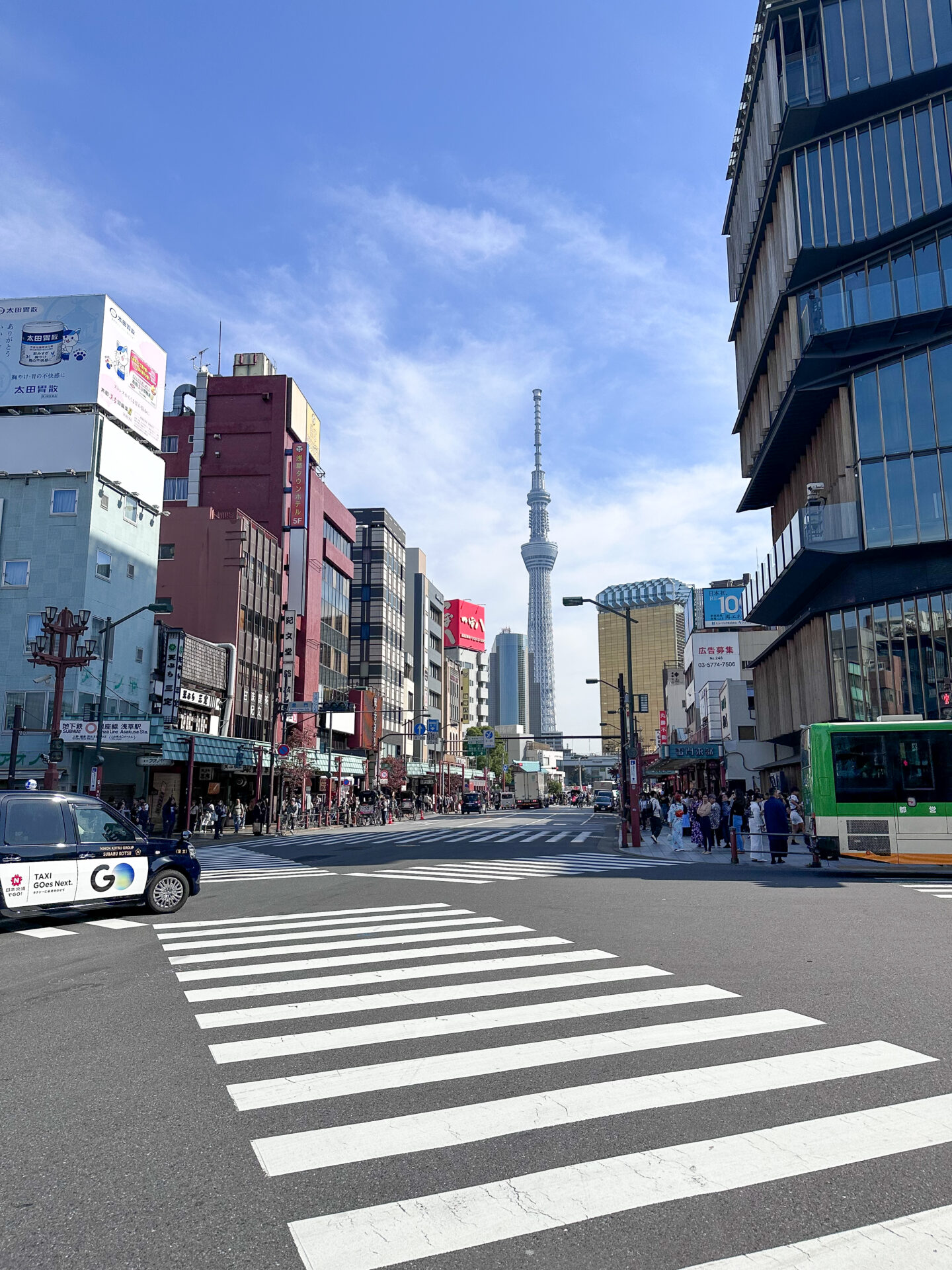
Pasmo or Suica Card
The Pasmo and Suica cards are both pre-paid travel cards. Think of them a little bit like an Oyster card in London. However, they can be used in many tourist destinations in Japan.
I only got a Suica Card on the last week of my trip and wish I had bought one sooner! You simply add money using a vending machine at a station, then tap in and tap out on your train and bus journeys. You can also use the cards to pay for lockers at stations and even in some shops such as 7-11.
Pasmo and Suica are generally interchangeable. I’d recommend waiting until you get to Japan to buy one. I found them to be a lot more expensive on the likes of Klook compared to buying one at the stations.
Tips for getting around Japan as a solo traveller
Download the J apan Travel App by NaviTime . This was a lifesaver on my trip.
Metro passes can save you money . All the major cities such as Tokyo and Kyoto offer 24-hour & 72-hour passes.
The trains in Japan are very punctual, don’t be late .
The train stations in Japan are HUGE and can be very overwhelming, especially the likes of Shinjuku and Tokyo Station. Arrive in plenty of time to find your platform .
Avoid travelling in rush hour , the trains can be very crowded.
The station staff are very friendly and helpful. Don’t be afraid to ask for directions or help .
The best places for solo travel in Japan
Building an itinerary for Japan is no easy task. I spent days and days (if not weeks) trying to figure out where I wanted to go in Japan and how long to stay in each place.
The truth is, it’s impossible to see Japan in one trip (unless you have months and months). You could spend a week in Tokyo alone and only scratch the surface of what the city has to offer.
Each of Japan’s cities has its own distinct charm with hidden gems waiting to be discovered.
Here are some of the best places to visit on a solo trip to Japan.
Tokyo is the capital city of Japan. It’s also the most populated city in the entire world!
There are mixed opinions on whether Tokyo is worth spending much time in. I personally love Tokyo! It’s a vibrant city with so many amazing and unique things to see and do . If it’s your first time in Japan, I highly recommend spending a few days here.
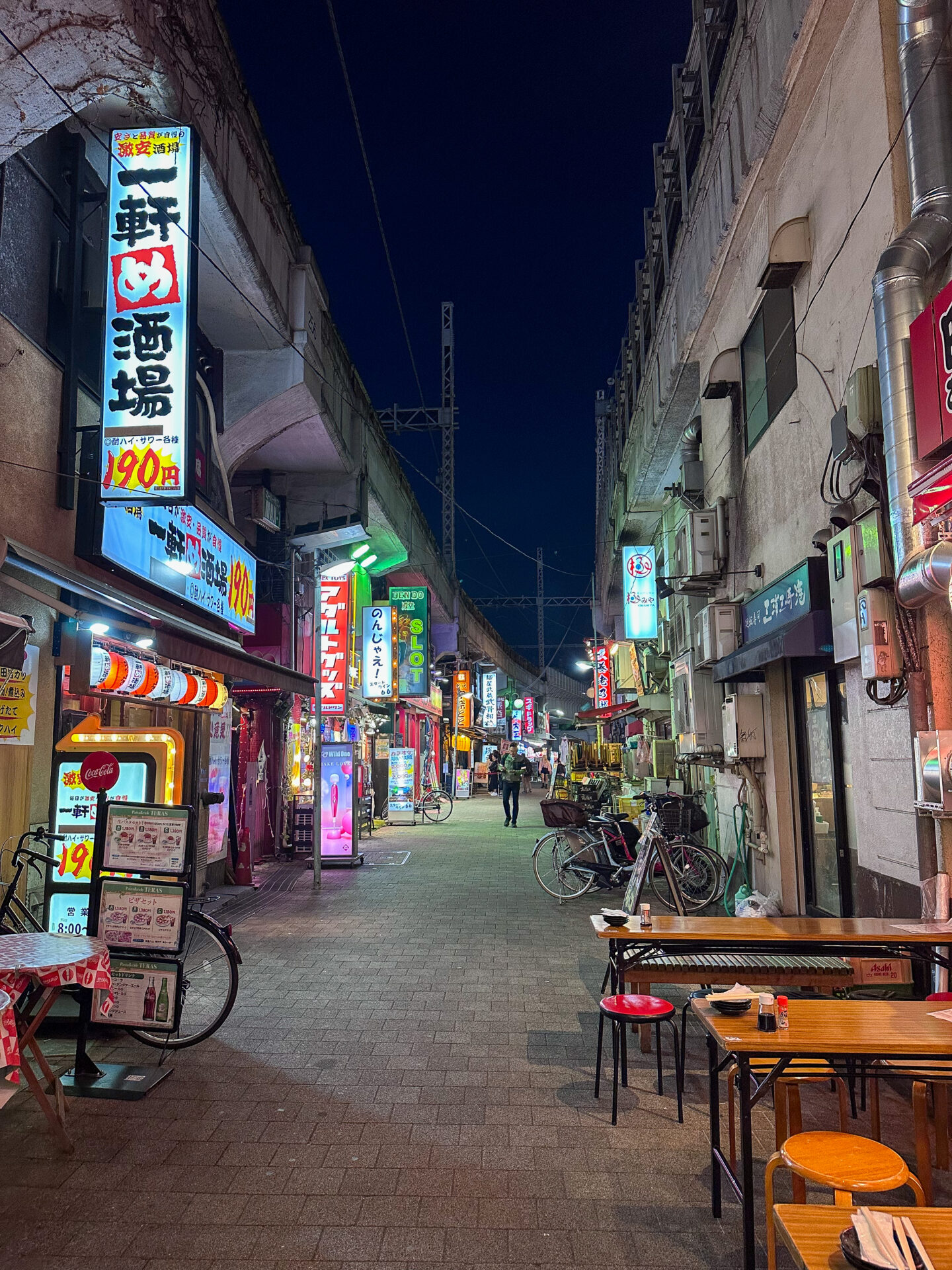
There’s an endless list of things to do in Tokyo, but don’t miss some of the highlights including Asakusa , Tokyo Skytree , Shibuya , Akihabara , Harajuku or Yanaka Ginza .
Suggested time to spend in Tokyo : four days
Best place to stay in Tokyo for solo travellers : I recommend staying at either Wise Owl Hostel in Shibuya or Nui Hostel in Asakusa.
Hakone
Hakone is my favourite place I visited on my solo trip to Japan. This beautiful area is nestled in the mountains and boasts some incredible scenery. Hakone is known for its relaxing hot springs (Onsen), traditional culture and epic views of Mount Fuji .
The area feels completely different to anywhere else in Japan (that’s on the tourist trail at least). It’s serene, laid-back and shows off an entirely different side to the country.
Hakone is the perfect day trip from Tokyo , but I’d recommend spending at least one night there to fully experience the area. There’s so much to do in the Hakone area and it would be impossible to see it all in one day. It’s also the perfect place to relax for a couple of days.

I have to say Hakone wasn’t the most social of areas. If you’re a solo traveller looking for nightlife and to meet other people, Hakone isn’t the place. But it’s beautiful nonetheless and a must-visit in my opinion.
Highlights in Hakone include the Lake Ashi Sightseeing Cruise, views of Mount Fuji , the Owakudani Volcanic Valley and the Mishima Skywalk .
Suggested time to spend in Hakone : 2 days
Best place to stay in Hakone for solo travellers : the Azito Guesthouse is the best hostel in Hakone
Related read: check out my suggested itinerary for Hakone
Kyoto is one of Japan’s most famous cities and an absolute must for anyone visiting Japan. If you’re interested in Japan’s history, Kyoto should be at the top of your list. There are 17 UNESCO World Heritage Sites in Kyoto, each offering a unique insight into Japanese culture and history.
Kyoto is home to many must-see attractions. From the famous orange Torii Gates of the Fushimi Inari Shrine to the Bamboo Forest of Arashiyama, Kyoto has a range of incredible sights. The Southern Higashiyama area of Kyoto is one of the best places to immerse yourself in Japan’s history. The area is known for its ancient temples, small boutiques and wooden tea houses. It’s also where you can sometimes see a Geisha.
While in Kyoto, don’t miss a trip to the Kiyomizu-dera Temple , a UNESCO World Heritage Site. This was one of my favourite temples I visited in Japan. It can get VERY crowded though, so go as early in the day as possible.
Suggested time to spend in Kyoto : 2 to 3 days.
Best hostels in Kyoto : Piece Hostel is one of the best hostels in Osaka. Len Kyoto is another good option.
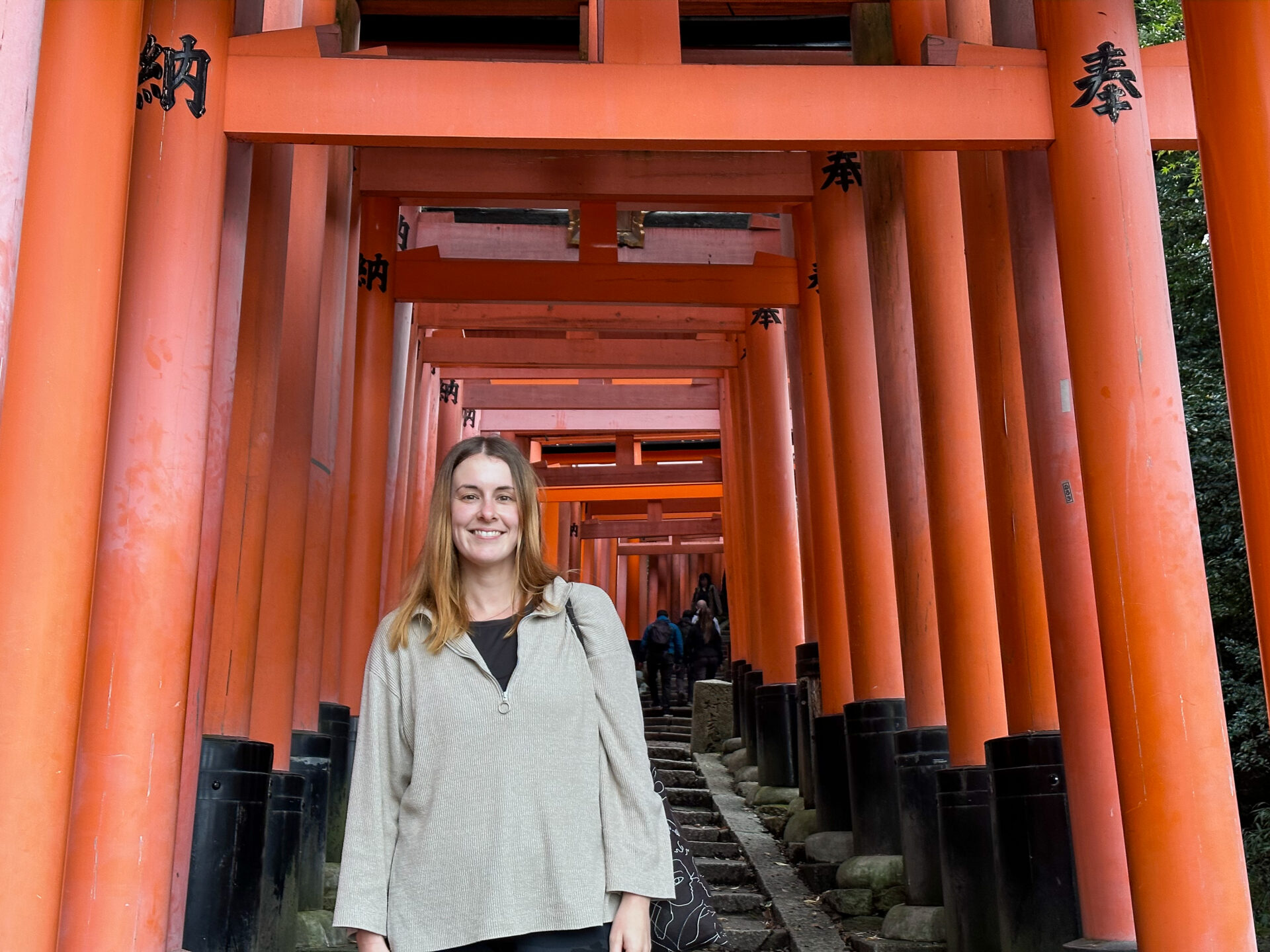
Osaka
Osaka is the perfect place to base yourself for a few days. It’s one of the biggest cities in Japan and has a completely different feel to it than Kyoto. The city is modern and vibrant but still has plenty of history attached to it. It also has some of the best food in Japan.
Osaka is a great base for day trips. There are so many epic day trips from Osaka including Nara , Kyoto , Hiroshima , Himeji and Kobe . While in Osaka, don’t miss a trip to the stunning Minoo Park . It’s a great escape from the crowds of Osaka.
Highlights in Osaka itself include Osaka Castle , the Umeda Sky Building , and the amazing street food .
Suggested time to spend in Osaka : at least 3 days
Best hostels in Osaka : I recommend staying in The Pax or Imano .
Hiroshima
A trip to Hiroshima offers a unique insight into Japan’s past. The city was the victim of a nuclear bomb back in 1945. Despite being destroyed, the city rebuilt itself.
One of the best things to do in Hiroshima is visit the Hiroshima Peace Museum . It educates visitors about the devastating incident, but also shows the resilience of the Japanese.
While in Hiroshima, a trip to Miyajima is a must. This beautiful island is home to the Itsukushima Shrine, one of the most beautiful shrines in all of Japan.
Suggested time to spend in Hiroshima : 2 days (or a day trip from Osaka, but you’ll struggle to see everything).
Best hostels in Hiroshima : I stayed at Akicafe Inn , it’s one of my all-time favourite hostels.
Related read: Plan your trip to Hiroshima and Miyajima with this 2-day itinerary suggestion

Okinawa is a great place to relax for a few days. This stunning area of Japan is home to white sand beaches and crystal clear water. It offers an entirely different experience for your trip to Japan.
There’s not a huge amount of things to do in the area, but if you want to relax on the beach and snorkel in the ocean, Okinawa is the perfect destination.
Suggested time to spend in Okinawa: 3 days
Best hostel in Okinawa : MyPlace Guest House
There are lots of hostels in Japan
Staying in hostels is a fantastic way to meet other travellers when on a solo trip to Japan. The Japanese hostels are some of the nicest hostels I’ve ever stayed in. They are clean, modern, and often have privacy curtains on the beds. For solo female travellers, many also have female-only dorm rooms as well as private rooms.
Staying in hostels is a great way to meet new friends and fellow travellers who share similar interests. However, I have to say I didn’t find the hostels in Japan the most social of places.
This might have just been my experience, but I found it harder to meet people in hostels here than in other countries. I think this was due to a combination of things.
Japanese hostels very much cater to Japanese locals as well as tourists from Western countries. I spent nearly four weeks staying in Japanese hostels. There were only a handful of nights when other Westerners were in my dorm room. Of course, this isn’t an issue, but there was a big language barrier which made it hard to be social.
Japan also isn’t the most popular destination for backpacking. I assume this is due to the cost and being out of the way of the traditional Southeast Asia backpacking route. Yes, there are solo travellers in Japan. But nothing like the amount you’ll find in countries such as Thailand, Vietnam and Australia.
As I said, this was just my experience. I know some people who have travelled solo in Japan and met lots of other people. I also know many people who had the same experience as me. They found it harder to make friends than in other countries.
Another great accommodation option in Japan is the capsule hotels. These tend to offer a little more privacy than dorm rooms. They’re very popular with the locals and much cheaper than a hotel room.
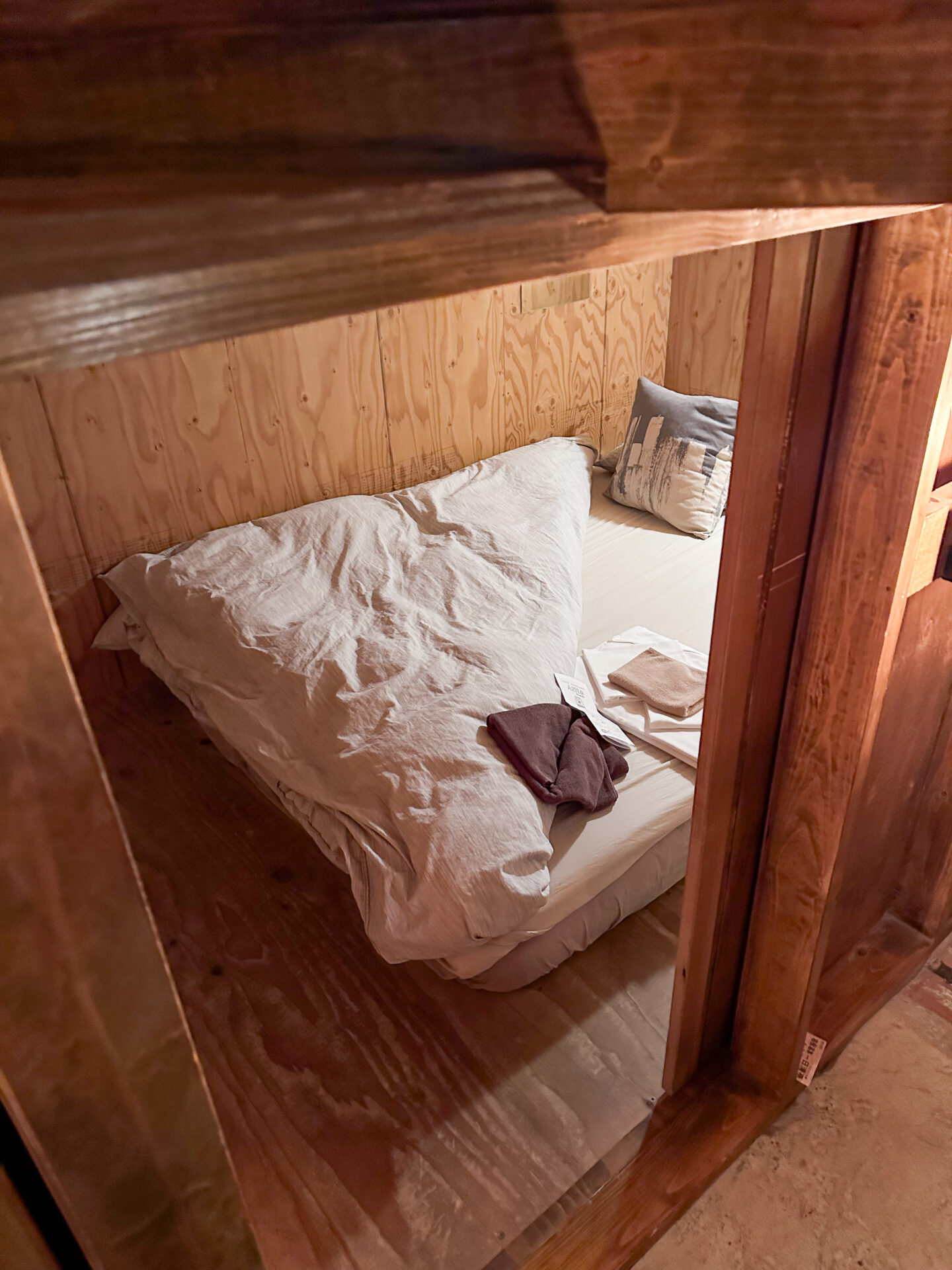
It’s important to do some research beforehand
Visiting Japan can be an overwhelming experience. I don’t think it’s the type of place where you can turn up and ‘wing it’ without doing any prior research. This is especially true when it comes to solo travel in Japan.
Even if you want to keep your itinerary open for some flexibility, here are some things I believe it’s important to research before your trip to Japan:
- Where to stay in each city : Japan’s cities are HUGE and there are many different areas to choose from. Do some research to make sure you choose the right spot.
- The cheapest way to get around Japan : many people assume a JR Pass will save them money. This wasn’t my experience. Spend some time calculating the cheapest method to get around for your itinerary.
- Social norms and rules: Japan has a unique set of social norms. Spend some time researching this beforehand. For example, did you know it’s considered rude to eat food in the street while walking?
- Top things to do in each city : there is an endless list of things to see and do in Japan and some of the activities require some planning or booking ahead. Don’t miss out on experiencing something because you researched it too late.
Have an open mind
Travelling solo in Japan can push even the most confident of solo travellers out of their comfort zone a little bit. The country has a unique set of social and societal norms and it’s important to keep an open mind.
Try the unusual foods, ask the locals questions and immerse yourself in their culture.
One of the best ways to experience Japanese culture is to stay in a Ryokan. These traditional Japanese accommodations often include tatami-matted rooms and communal baths. Staying in a Ryokan is an absolute must while in Japan.
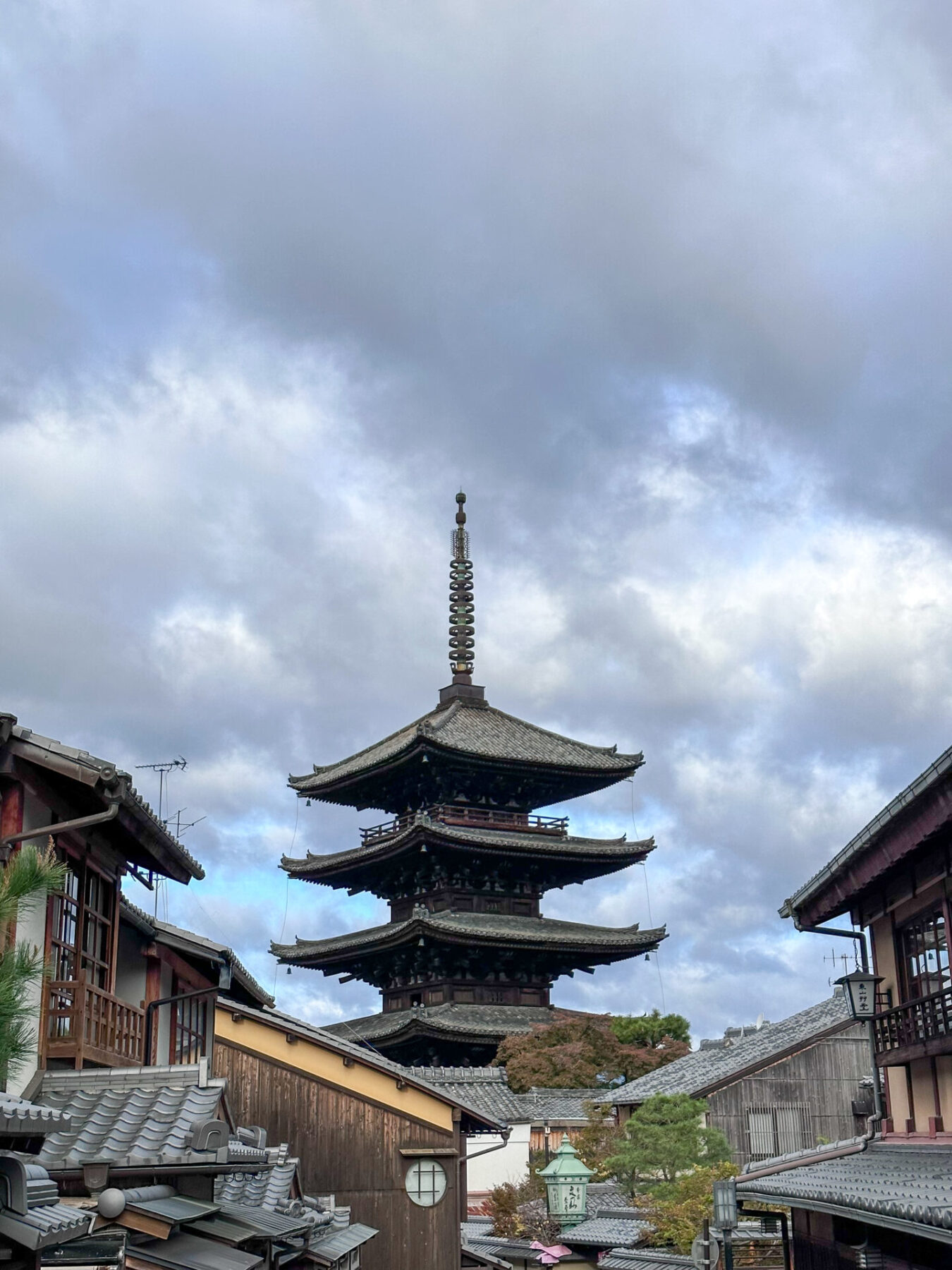
It can feel isolating
Solo travel in Japan can be isolating and challenging. When planning my solo trip to Japan, many blogs only stated the benefits, so I want to talk about the negatives too.
If you’ve never travelled solo before or you’re a bit nervous about travelling solo , I don’t believe Japan is the best place to start. The country has a very unique culture and while this is fascinating and wonderful, it can feel isolating.
As I discussed above, the hostels in Japan aren’t always the most social of places and it can be difficult to make friends. There’s also a big language barrier with many of the locals not speaking English.
While solo travel is perfectly normal and accepted by Japanese society, I did sometimes feel a little on the “outside”. Even little things like working out how the restaurant vending machines worked or buying a train ticket can be difficult.
I don’t want to put anyone off from travelling alone in Japan. It can be an incredibly liberating experience. Most solo travellers love their time in Japan.
There are so many benefits to solo travel and Japan is no exception to this. However, I think it’s important to share the challenging side of solo travel in Japan as well.
The food is amazing
The food in Japan is some of the BEST in the entire WORLD. If I had to eat one cuisine for the rest of my life, it would be Japanese food! A big part of your solo adventure in Japan is experiencing this incredible food.
Contrary to popular belief, there is so much more to Japanese cuisine than fish. I don’t eat fish but this didn’t affect my experience in Japan at all. Many people also assume Japanese food is expensive. If you’re going to go to fancy restaurants every night and eat Kobe beef or fresh sushi then yes, it’s expensive. Likewise, the restaurants catering to Western tourists also have a hefty price tag.
However, there are *so* many hidden and affordable food gems in Japan. Some of my favourite meals were in tiny restaurants with only a few reviews on Google.
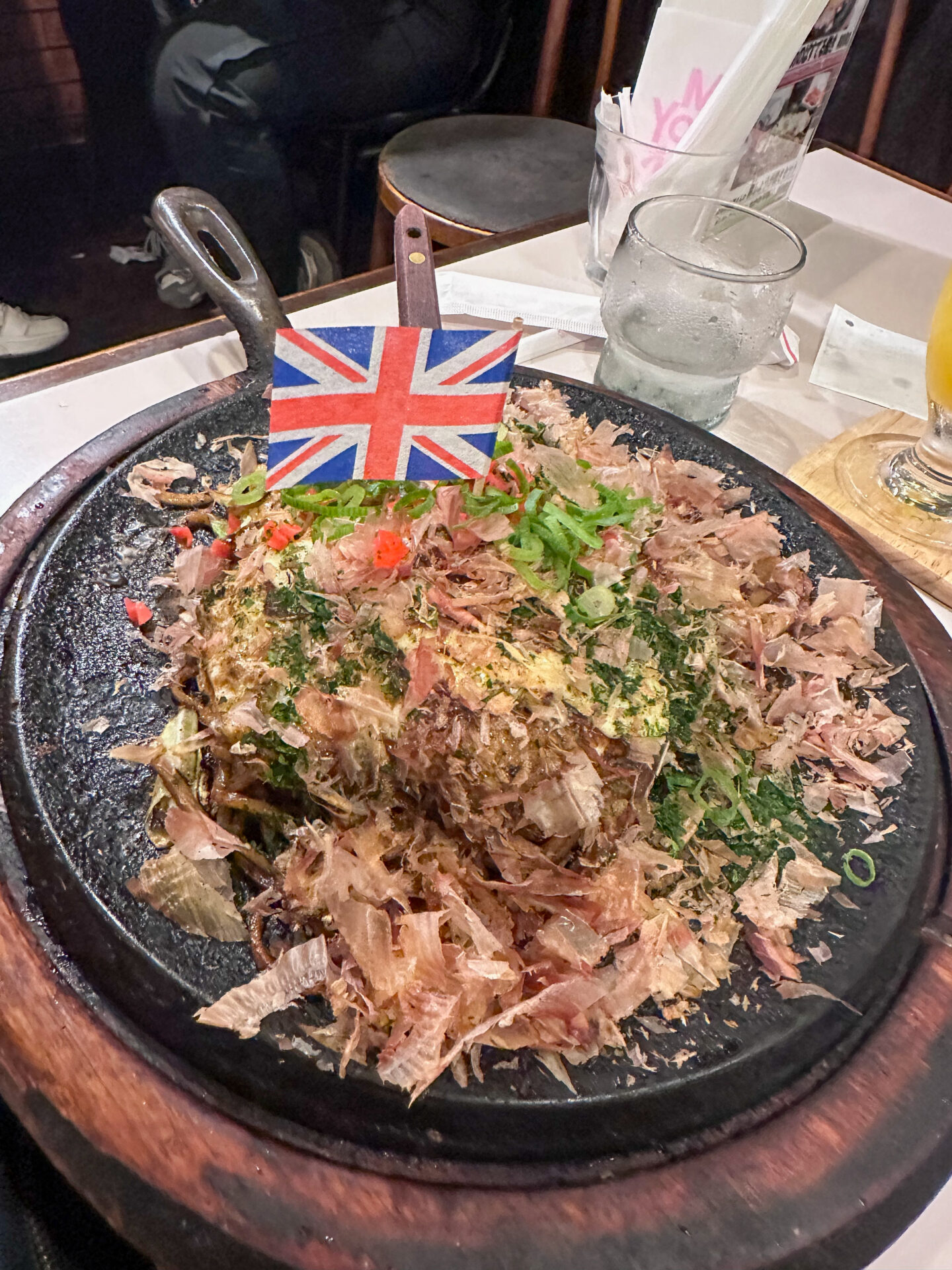
My best advice is to avoid the tourist spots and look for where the locals are. Most of the meals I bought were around the $7 mark.
Tip : TikTok raves about Gyukatsu, but this was one of my least favourite meals in all of Japan.
Street food in Japan is another good way to eat on a budget. Each area of Japan has its unique foods and style of cooking. This means the street food never gets old and there’s always something new to try.
My favourite budget food spots in Japan
- Curry bread from Tokyo Curry Pan in Asakusa (this was amazing)
- Gyoza from Nishiki Market in Kyoto .
- Beef and cheese croquettes from Kuroge in Asakusa
- Taiyaki (fish-shaped pastry stuffed with red beans or cheese). This can be found all over Japan
- Okonomiyaki (savoury pancake) from Doraju in Osak a
- Yakisoba from Mr Young Men in Kyoto
- Japanese Curry from Cocoro in Hakone .
- Curry Udon Tachibana in Osaka .
If you’re on a tight budget, the convenience stores in Japan are a great option. They have a range of delicious and high-quality sandwiches, sushi, salads, bento boxes, smoothies… the list goes on. It’s all very affordable. The 7-11 in Japan is unreal and you’ll find one on every corner. I also recommend trying Family Mart (who I think do the better coffee).
Tip : when planning a solo trip to Japan, it’s fair to question if it’s normal to eat out alone. Luckily, eating out by yourself is almost completely normal in Japan. Ironically, the only places I felt a little uneasy were the Western restaurants full of tourists. It’s completely normal for Japanese people to eat dinner by themselves. Many restaurants even cater to solo diners by having solo booths or tables with one seat.
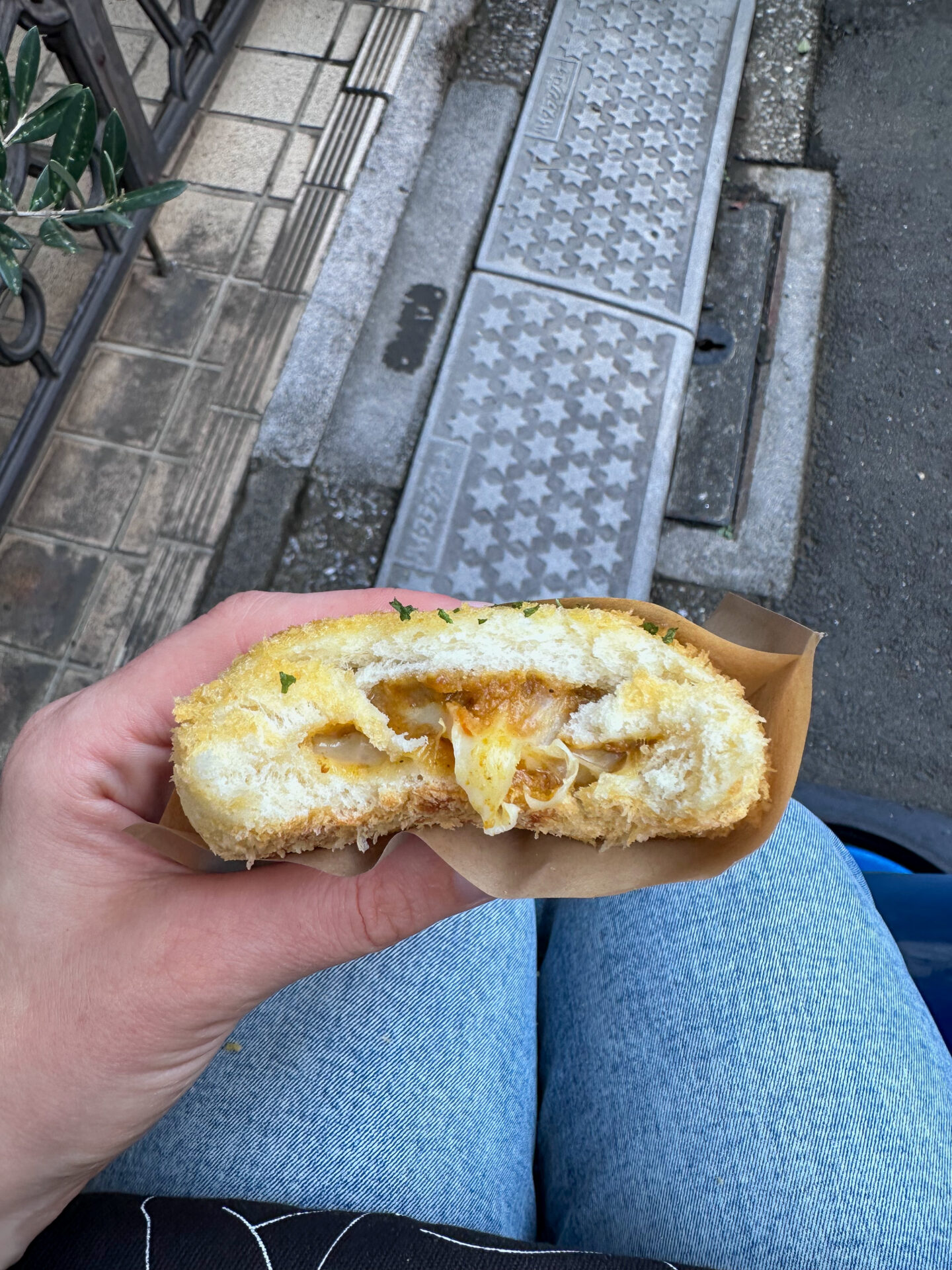
There are several helpful apps to download
Before embarking on your solo trip to Japan, there are a few helpful apps to download.
Japan Travel by Navitime
If I could only use one app in Japan it would be this one. The Japan Travel app is incredibly useful. It’s similar to Google Maps in that it will tell you how to get somewhere, but I found it to be a lot more accurate. It tells you the best place to sit on the train and which exit to use to get to your destination. I’d have been lost without this app.
The best part about the Japan Travel app is you’re able to say which rail pass you have. Whether it’s a JR pass or a regular Metro pass, it will tell you if the route is included on the ticket or not.
It makes travelling in Japan so much easier and less stressful.
Google Maps
While the Japan Travel app is useful for bus and train journeys, I’d still recommend downloading Google Maps for navigating the cities on foot. Download the maps offline in advance first so you can get around Japan without the internet.
Google Translate
This is another app I could not have lived without while in Japan. There are a couple of major language barriers in Japan. The locals don’t speak much English, but you’ll also find many menus or shopping items are only in Japanese. The Google Translate app is a great solution for this. You can type in what you want to say and show it to the locals. It’s also possible to take photos of writing and the app will translate it for you.
Many Japanese locals also use a translation app when communicating with tourists.
The tap water in Japan is clean and safe to drink. However, I found it tricky to fill up my reusable bottle during the day. Thankfully, the Mizu app is here to solve that problem.
The app shows you the nearest place to fill up your reusable bottle. This is sometimes water refill stations or cafes that will happily do it for you even if you’re not a customer.
Always carry cash
Despite being home to many major cities and modern inventions, Japan is still very much a cash-first country. Many local restaurants and cafes only accept cash.
It’s important to always carry cash with you in Japan. Some places will accept debit or credit cards, but I had a few issues so would recommend sticking to cash as much as you can.

Be aware of scams and crime
Japan is a very safe country, but crimes and scams do occur, especially in the big cities. When travelling solo in Japan, it’s important to exercise some caution.
One of the most common types of scams in Japan is nightclub scams. This is when tourists are lured into bars and clubs. The staff keep the drinks coming and then charge an excessive amount on the bill. The receipts are nearly always in Japanese which means many victims fail to notice until it’s too late. They often add random charges such as charging for seats or charging for being there on a weekend. If you’re invited into a bar, the best thing is to say no.
If you’re a female solo traveller, it’s always important to follow some basic safety guidelines wherever you are in the world. Yes, Japan is very safe and the chances of something happening are low. But that doesn’t mean it’s a good idea to go walking down dark alleys alone at 3 am.
You might need to book ahead of time
One of the best things about solo travel is having the freedom to do what you want and change your plans. However, this isn’t always the case in Japan.
Each year, millions and millions of people head to Japan to explore this amazing country. If you’re visiting Japan during the peak season, you may need to book your accommodation, transport and activities ahead of time. The busiest months in Japan are March, April and May. The summer holidays and autumn months can also see a spike in visitors.
I booked my accommodation about six weeks before my November trip. I found many of the budget hostels with a good rating had almost sold out (and some had completely sold out). Activities such as TeamLab Tokyo and the Harry Potter Studio Tour had also almost sold out.
Solo travellers without a fixed timeframe might not need to worry about booking ahead. However, if you have a set amount of time and there are specific things you want to see and do, I’d advise booking ahead.
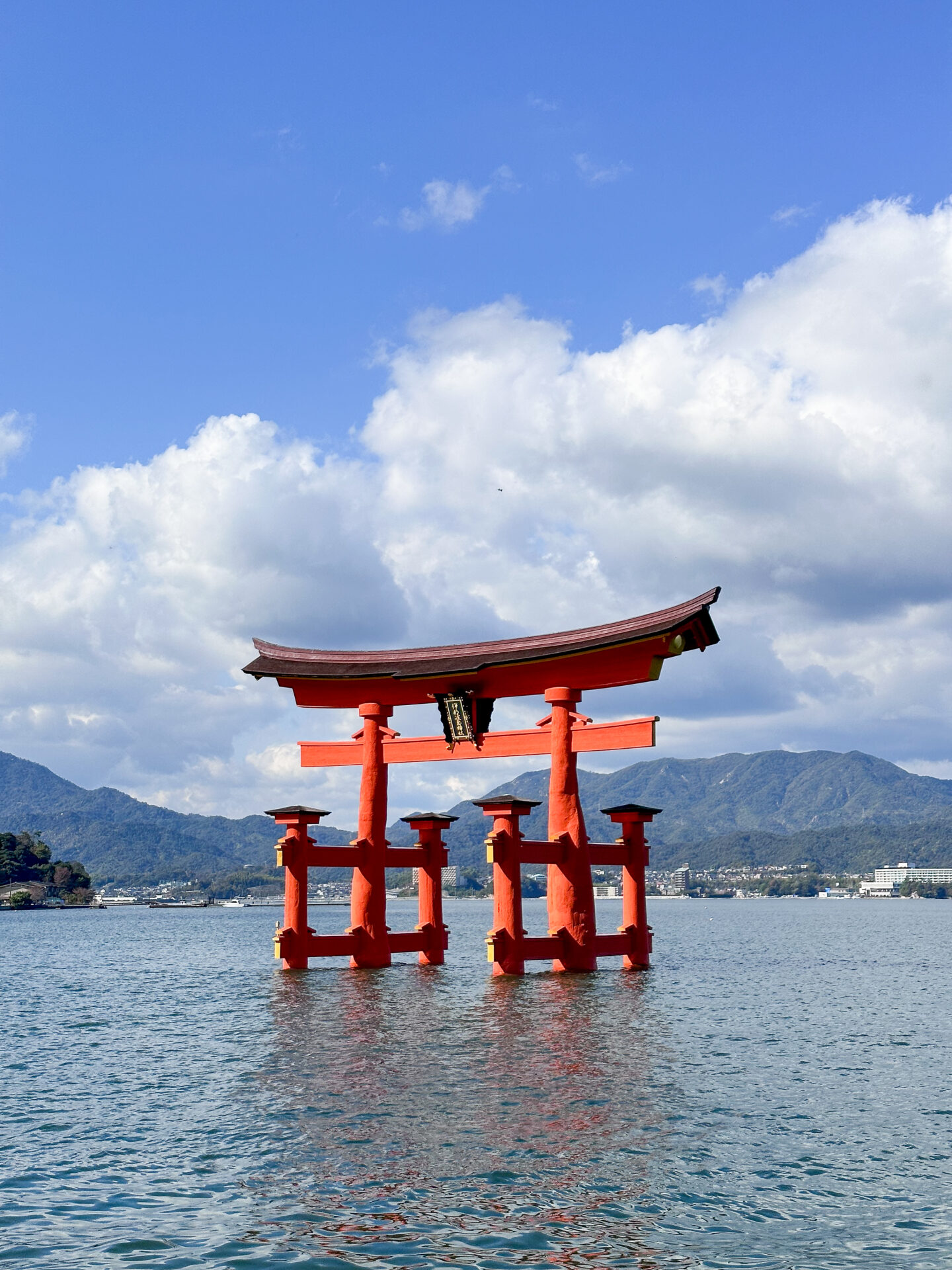
Avoid tourist traps
Solo travel in Japan is a great opportunity to immerse yourself in Japanese culture and local life. You have the complete freedom to do what you want and at your own pace.
One thing I noticed in Japan was the amount of tourist traps. These were usually destinations only popular thanks to TikTok and other social media platforms. As a solo traveller, you have the choice to completely avoid these and don’t need to worry about what someone else might want to do.
Consider going off the beaten track while on your visit to Japan. You can still visit the likes of Tokyo and Kyoto, but consider exploring some lesser-visited areas of the cities such as Yanaka Ginza or Uji . There are also plenty of amazing day trips from Tokyo and Osaka to lesser-visited destinations. I was gutted I didn’t get to explore more of these destinations.
My next trip to Japan will certainly be more focused on escaping the crowds and discovering hidden spots.
Consider group tours in Japan
If you’re nervous about solo travel in Japan, consider a group tour. Small group tours are an amazing way to explore a country if you’re too nervous to travel completely alone.
Related read: everything you need to know about group tours
There are several small group tour operators in Japan. Each of the tours includes a tour guide, accommodation, transport and some activities. Some of my favourite small group tour operators in Japan are G Adventures , Intro Travel and One Life Adventures . Intrepid are another fantastic option, and they tend to cater towards an older demographic.
If you want to visit Japan but are nervous about going alone, group trips could be the answer!

Buy an eSim
It’s a good idea to stay connected while in Japan. As a solo traveller, it’s good to have a way of contacting someone in case of an emergency. In Japan especially, I found myself using my phone more than ever. This was mainly due to using the Google Translate App, or quickly researching something while out and about.
SIM Cards in Japan aren’t quite as straightforward as in other countries. Tourists can only buy data plans and they are very expensive.
The best solution is to buy an eSim. It’s still expensive, but it removes the need to worry about a physical SIM.
Normally, I’d recommend using the trusty Airalo. For Japan, I suggest using Ubigi . Ubigi has a much better network in Japan compared to Airalo.
Summary: is Japan good for solo travel?
Yes, Japan is great for solo travellers. When it comes to safety and getting around, it doesn’t get much better than Japan. Not only is Japan one of the safest countries in the world, but it has a great infrastructure making it an easy country to navigate.

However, I don’t think Japan is the best destination for every first-time solo traveller. Japan can sometimes feel very isolating. You need to be confident in the busy cities, deal with cultural differences and overcome the language barrier all by yourself. You also need to be comfortable with your own company and happy to explore Japan by yourself.
I haven’t said that intending to discourage solo travel in Japan. I just want to be entirely honest based on my experience in Japan. It’s a completely different solo travel experience to the likes of Thailand, Mexico or Australia. Having said that, solo travel in Japan is an amazing way to push yourself out of your comfort zone and immerse yourself in the culture.
If you’re a confident solo traveller, then Japan is one of the best solo travel destinations in the world. With a low crime rate, fantastic public transportation and unique attractions steeped in history, it is an incredible destination.
Ultimately, only you can decide if Japan is the right solo travel destination for you. Put it this way, I’m glad I went to Japan alone. But I’m also glad it wasn’t my first solo trip. However you travel in Japan, it will no doubt be an unforgettable experience!

Related Posts
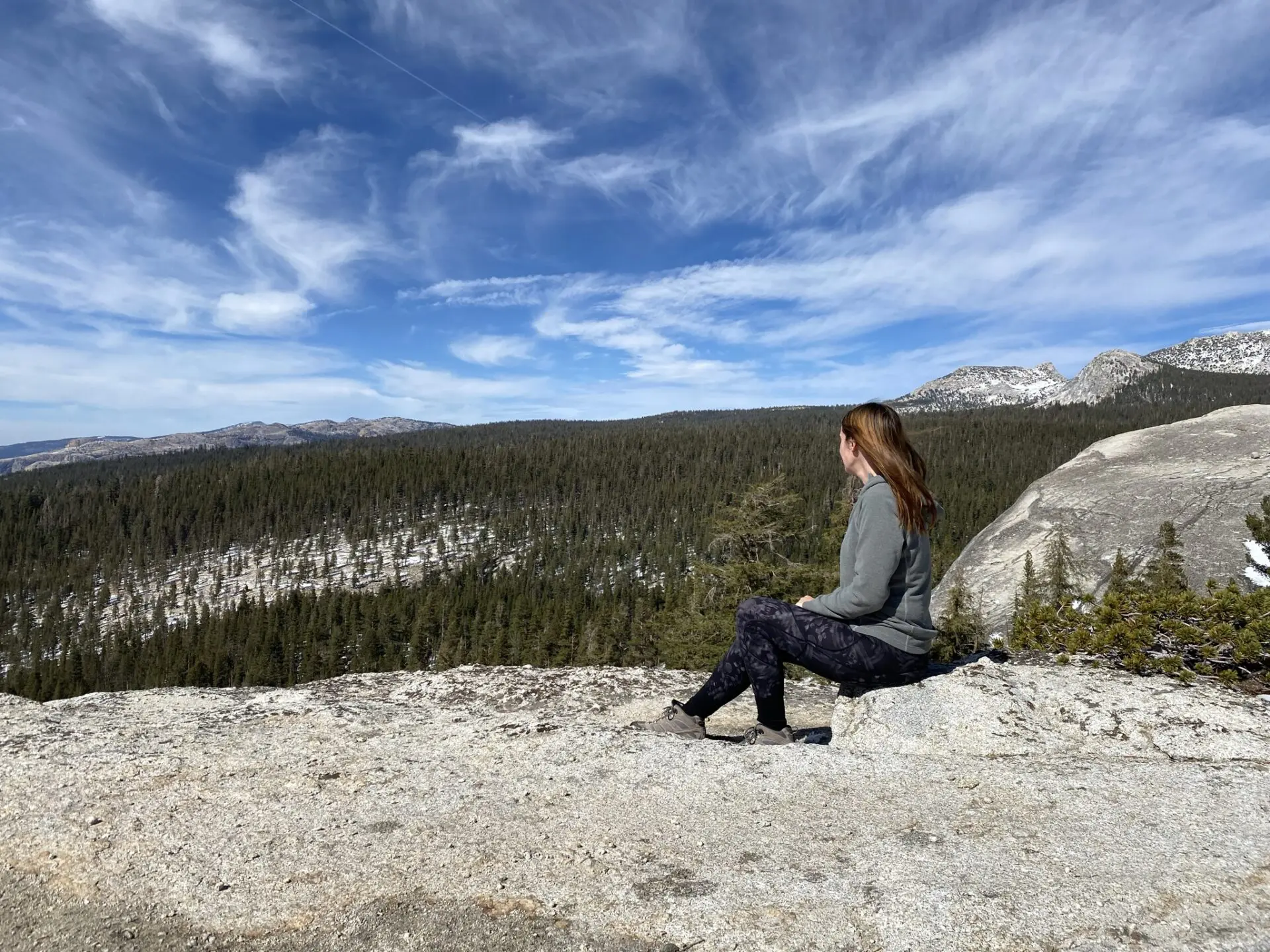
Solo Female Travel: 13 Helpful Tips for Hiking Alone

Visiting Japan in November: The Ultimate Guide

A Guide to Backpacking in the Philippines

The 5 BEST Places to See Mount Fuji from Hakone
Solo Travel to Japan (Tips and Etiquette)
By: Author Guest author
Posted on Last updated: November 24, 2023
Natoya from the travel website Her Lifestyle Travel is guest author with her advice and tips on traveling to Japan alone. Afraid to travel to Japan by yourself? Fear no more! Natoya’s got you covered with this handy Japan solo travel guide that will give you the knowledge and confidence you need to tour around Japan on your own.

Solo Traveler’s Guide to Japan
I’ve had my share of meltdowns while solo traveling around the world, but one of my memorable meltdowns was less than an hour after getting off my flight to Tokyo, when I stopped at a convenience store to buy a bottle of water.
Like any other country, there were a variety of drinks to choose from: You got your mineral water, flavored water, and energy water, etc.
But it was all in Japanese (I know, duh, right?). Which one was the right one?! I just needed some spring water!
The thing is, I didn’t have this massive freak out over the fact that I couldn’t choose the right drink, I freaked out because I was wondering: how the heck was I going to travel around Japan solo if I can’t buy a bottle of water?!
I’ve had more freakouts like that than I can count (I lived in Japan for two years), and this is why I’m writing this guide. I don’t want you to freak out over something as simple as a bottle of water!
This is a list of tips from one gaijin (foreigner) to another on what you need to know about solo traveling in Japan.
I’ve visited about a dozen prefectures, and it doesn’t matter if you’re partying it up on a karaoke binge in Tokyo or getting sun-kissed in Okinawa, these tips will help you survive your first solo trip to Japan and have an awesome time.

In Japan cash is king
Although Japan is known for its futuristic gadgets and seen as technologically forward throughout the world, most restaurants only accept cash. Instead of going to a currency exchange kiosk, I recommend you open a checking account with no foreign transaction fees, like Capital One 360. Then when you arrive in Japan, you can withdraw money from a 711 ATM. The fee is around $3-$4.
These three phrases will save you
These three Japanese phrases will help you in many different situations so please memorize it:
Sumimasen: Excuse me. It’s used the same way we would use excuse me in English. You will most likely use this one the most. When in doubt…use sumimasen!
Arigatou Gozaimasu: a formal way of saying thank you.
Gomenasai: I’m sorry.
You should learn as much Japanese as you can before arriving in Japan, but seriously, these three phrases will get you far.
Don’t underestimate the Japanese public transportation system
Using public transportation in Japan is the best way to get around any prefecture, as it’s cheap and reliable. Don’t be smug like I was and underestimate the complexity of the metro! It’s confusing even for someone like me that lived in Japan for two years.
There’s the rail that runs long distances outside the city, and the metro that runs within the city. The rail is more expensive than the metro since it goes further.
Please watch this video from the Youtube channel Tokiyuyu about using Japanese public transportation, it’s a lifesaver! Download the Hyperdia app to help you get around Japan. You can use it for free for 30 days.
And FYI, trains do not run 24-hours a day in Japan. There’s the last train called “shuden”, which stops running a little before 12 am.

Getting around Tokyo Japan is easy when you know how!
Flying domestically is more affordable than the shinkansen
I know you probably want to try out the famous Shinkansen but that sucker is expensive! The Shinkansen is meant for Japanese businessmen, not for budget travelin’ solo travelers like you and I!
Use domestic budget airlines like Peach, Jetstar or Vanilla Air if you plan on traveling around Japan. Also, make sure you read your baggage allowance.
Just like budget airlines in Europe, you will have to pay for just about everything (seat selection, meals, baggage).
Get used to Mottainai
Mottainai which roughly translates to ‘what a waste’ or ‘how wasteful’, sums up the Japanese views of environmental conservation and overall respect for the environment. Respecting the environment by not wasting, destroying or abusing, but reusing and recycling.
You might hear someone exclaim mottainai! In response to someone that’s wasting food by throwing it away. When you understand this aspect of Japanese culture you will understand how to interact with Japanese culture.

Think of the group: ‘wa’
Another aspect that you need to know to survive Japan, is understanding ‘wa’, which roughly translates to harmony.
Creating harmony within the group and conforming with the group you are a part of. Japanese people strive to make things work for the group.
Understanding ‘wa’ and ‘mottainai’ will help you make sense of things when navigating throughout Japan and help you make smart decisions.
Keep the volume down in public
While you will most likely see women putting on a full face of makeup or someone drinking a cold one, in Japan it’s inappropriate to have a conversation in certain public places — in particular on public transportation.
This is where ‘wa’ will come in for you as a solo traveler.
You can’t talk on the phone, and if you do need to speak to someone, you should whisper.
And I know this seems harsh, but it’s quite nice that the trains are always silent, a perfect time to take a cat nap!

Take a solo trip to Japan and visit the Sensoji Temple located in Asakusa Tokyo
Taking taxis is a luxury experience and you’ll pay for it
Taking a taxi in Japan is like no other taxi experience because it is a fancy-schmancy experience. The taxi drivers wear white gloves, and they can open and shut the passenger doors right from their front seat!
It’s an interesting experience, however, you’ll pay with your right kidney for that ride. Unless you miss the last train, I’d skip using a taxi in Japan.
Get used to bowing
Get ready to start bowing for the first time in Japan! Even if you are a foreigner you are expected to bow.
The length of the bow and the degree of your bow depends on the importance of the person you are bowing to. 90-degree bows are for officials like medical doctors, police officer, or your boss.
But for the average joe you encounter while solo traveling in Japan, a 30-degree bow will do.

Tokyo Gion Matsuri festival lasts the whole month of July. An annual event since the year 869
Call Japanese people by their last names
This one surprised me when I moved to Japan, because other than Ghana, Japan is the only country that I’ve visited where it’s rude to call someone by their first name.
When you are addressing both Japanese men and women, put san after the person’s last name. For example, Yamaguchi San.
Proper etiquette when dining in Japan
Here are few etiquette rules that are a must follow when dining in Japan.
Say cheers: Never drink first, wait for everyone to get their drink. After everyone in your group has their drink then you can cheer by saying kampai.
Wait for everyone to be served: this is pretty much in every culture but it’s just so important in Japan. And if you’re up for it, before eating say: itadakimasu (let’s eat!).
No need to tip: There is no tipping in Japan.
You might need to take your shoes off: I’m sure you’ve heard that you should take your shoes off before entering a Japanese person’s home but you might have to do it in some restaurant too.
You will be given an indoor pair of shoes to wear in the restaurant. There is usually a shoe cubby space in the restaurant.
A few chopstick dos and don’ts: Never stick your chopsticks in your food standing straight up, never lick your chopsticks, and never use your chopsticks to take food out of a common dish.
If you have a common dish use a clean pair of chopsticks, or you can turn your chopsticks around and use the opposite end to take out food.
Slurp away!: Slurping your noodles is not rude in Japan. Slurping not only helps you to easily eat your bowl of steaming hot noodles, but it also lets the cook know that you are lovin’ it! So prepare to hear people slurping when dining in Japan.
Don’t be alarmed at the noise in the bathroom
Don’t be alarmed by the white noise you will hear when using the bathroom. No, it’s not a toilet monster coming to get you!
The white noise you will hear is used to cover up the sounds of people using the bathroom if you know what I mean…Every bathroom stall has a button that you can press to start the white noise.
Get used to people wearing medical face masks
Don’t be alarmed if you’re walking through the streets of Tokyo and see people wearing medical masks.
When Japanese people are sick and don’t want others to get sick they wear the masks (remember ‘wa’). They even wear a medical mask if they want to avoid getting sick.
Bring a small towel
While you’ll find that most restrooms in Japan to be spotless, you’ll find that many public restrooms don’t have paper towels or a hand dryer.
That’s why you will see Japanese people pulling out a small towel to wipe their hands, or even to wipe away sweat.
Japanese sizes might not fit
If you are over a size 8 in shoes (Euro size 38), and above a size 12/L in clothes, you have to make sure you pack everything you need for your solo trip to Japan.
As Japanese people tend to be smaller in overall size, there just isn’t a market for larger sizes. When I lived in Japan, I had to buy all my shoes online!

Imagine seeing Mt Fuji from your airplane seat – Fuji-san is Japan’s tallest mountain and an active volcano
Things that are hard to come by in Japan
Fluoride toothpaste, tampons, and strong deodorant are hard to come by in Japan.
I usually recommend that solo travelers pack light and buy what you need when you run out, but it’s hard to find these unless you go to an international store.
What not to wear in Japan
While it’s okay for women to wear super short skirts, wearing sleeveless shirts will get you stares. For some reason, it’s a faux pas to show you’re arms as a woman.
Honestly, I don’t get it, and it’s not fun during the steaming hot summers, but I just follow this cultural norm.
Don’t hand Japanese people money directly
When you are making a purchase, don’t hand the money directly to the cashier. You place the money on a small container and the cashier will pick it up.
The cashier will place your change and receipt there as well.
Make sure you stand on the correct side
I get this one confused when I have not been to Japan for a while.
When you are standing on an escalator or walking up a staircase in Osaka you should stand to the right, giving people room to pass by if they need to.
While in the rest of Japan you should stand on the left. No one really knows why it’s different in Osaka, but it’s this unspoken rule everyone follows.
When you’re on time, you’re late
Finally, the one thing that will make you lose friends in Japan quickly, is being late. If you make friends while solo traveling in Japan, and plan on meeting them at a certain time, arrive 15 minutes earlier.
I promise you that if you arrive 15 minutes earlier you will see the person you are meeting waiting for you. When you are on time, you are already late.
These are the most important things you need to know to have a stress-free solo trip to Japan.
As a solo traveler, it’s difficult navigating through a new culture on your own because you have to figure everything out by yourself, and sometimes, you don’t know — what you don’t know.
Use these tips to have a fabulous time in Japan, make friends, and enjoy all aspects of Japanese culture.
You may also enjoy reading 13 Best Places in Southeast Asia for Solo Travelers or 2-Days in Melaka Malaysia Itinerary
Save it on Pinterest!

About the author: I’m Natoya – a Brooklyn girl here to help newbie solo travelers take their very first solo trip abroad. I created my travel blog, Her Lifestyle Travel to help travelers learn the skills they need to affordably travel, and to gain the confidence to keep traveling solo…whenever and wherever the heck they want!
Tuesday 4th of October 2022
Thanks for this valuable information. I wish I had it when I was traveling for work. Now I want to go back to Japan and travel like an informed guest!
Monday 19th of October 2020
Really interesting insights - the more I hear about Japan the more intrigued I get - it's certainly somewhere I'd like to visit in the future. Thanks for sharing this 🤗 the 'no tipping' will make a nice change!!
Susan Moore
Hi Cherryl, Thanks for your comment, and happy to know you found the info helpful. There are so many great reasons to visit Japan! Hope you do get to visit in the future. Cheers, Susan
Ryan K Biddulph
Saturday 23rd of March 2019
Super interesting how cash is king there. I would see credit cards being popular, such a fast exchange of dough. But I reckon debt is frowned on in Japan.
Totally surprised me too! I didn't think about the debt factor, maybe so. But I guess they are trying to move towards cashless payments before the 2020 Olympics in Tokyo. Maybe I should visit Japan now to see how it's going :)

The Ultimate Solo Travel Guide To Japan: Explore Now!
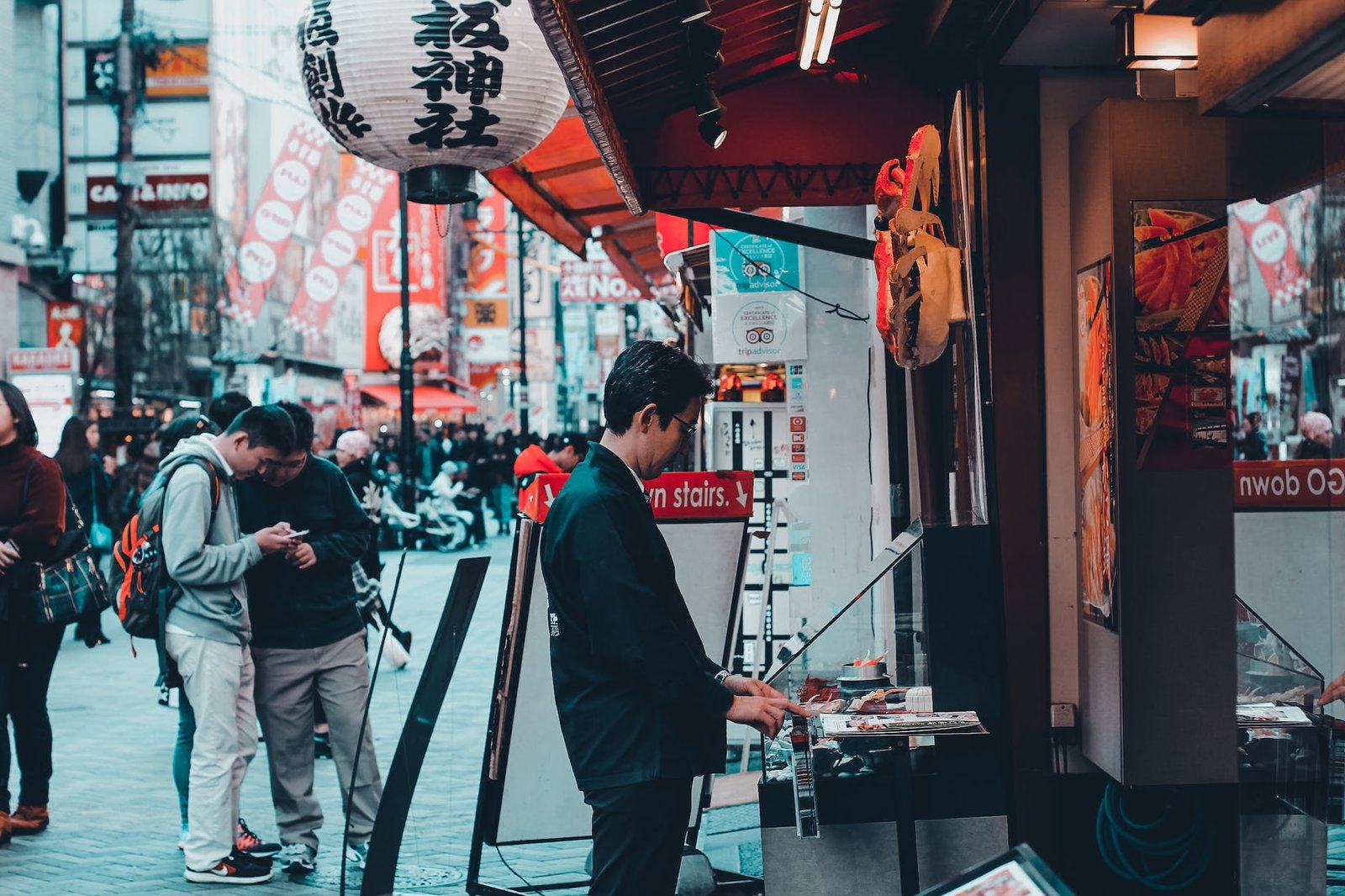
Table of Contents
Solo travel has become a transformative adventure for many, providing an opportunity to explore the world on your terms. Among the diverse destinations, Japan stands out as an enchanting realm for the solo traveler. The Land of the Rising Sun blends ancient tradition and cutting-edge innovation, making it an ideal canvas for self-discovery and exploration. Embarking on a Japan solo travel is a remarkable journey filled with cultural exploration, breathtaking landscapes, and unforgettable experiences.
Japan offers solo travelers an unparalleled voyage with its unique blend of traditional heritage and modern innovation. In this comprehensive guide, we’ll unravel the essence of Japan solo travel, covering essential tips, must-visit destinations, cultural insights, and much more.
Table of Content
Japan travel facts, is japan good for solo travel, best places to visit in japan.
- Where to stay in Japan as a solo traveler
How to get to Japan solo travel?
Best time to visit japan, japan travel itineraries, solo travel advice for japan, is japan solo travel safe, conclusion: japan solo travel.
Japan is often known for its bustling cities, but a lesser-known fact is that forests and mountains cover 70% of the country. There are over 100 active volcanoes, Mount Fuji being the highest at 3,776 feet. Japan boasts 25 UNESCO World Heritage Sites, with 20 being of cultural significance, such as Himeji Castle, and five being natural sites, like Shiretoko National Park.
The country is not limited to Honshu’s main island; it consists of nearly 7,000 islands, making it the fourth-largest archipelago globally. You can visit Ōkunoshima for its population of rabbits or head to Hokkaido for excellent skiing and fresh powder in winter.
Japan is an excellent destination for solo travel. The country is known for its safety, efficient public transportation, and well-developed infrastructure, making it easy for solo travelers to navigate and explore. Japan offers a rich cultural experience, diverse landscapes, and a mix of modern and traditional attractions that can be thoroughly enjoyed alone.
Additionally, Japanese people are generally friendly and helpful, which adds to the positive experience of solo travel in Japan. Whether you’re interested in exploring cities, hiking in nature, enjoying culinary delights, or immersing yourself in the unique culture, Japan has something to offer every solo traveler.

In addition, the Japan National Tourism Organization operates a 24-hour English-speaking helpline, which is especially beneficial for solo travelers. This helpline is an excellent resource for tourism information and assistance, offering valuable support throughout your journey in Japan.
Japan is a fantastic destination for solo travelers, offering a mix of bustling cities, serene temples, beautiful landscapes, and a rich cultural experience. Here are some of the best places to visit for a memorable solo trip to Japan:
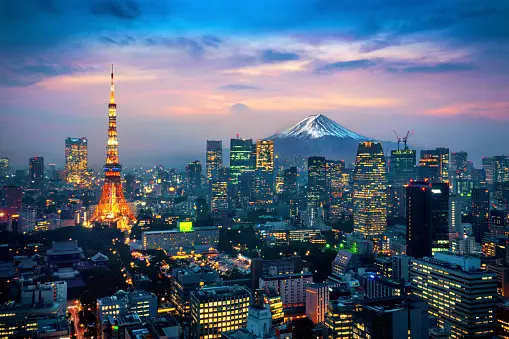
- Explore the diverse neighborhoods of Shibuya, Shinjuku, Akihabara, and Harajuku.
- Visit historic temples like Senso-ji and Meiji Shrine.
- Indulge in the city’s vibrant food scene and try sushi, ramen, and street snacks.
- Wander through iconic temples such as Kinkaku-ji (Golden Pavilion) and Fushimi Inari-taisha.
- Stroll through traditional streets in the Gion and Higashiyama districts.
- Experience a traditional tea ceremony and enjoy Kyoto’s refined cuisine.
- Sample Osaka’s famous street food at Dotonbori and try takoyaki and okonomiyaki.
- Visit Osaka Castle for a dose of history and great city views.
- Explore the bustling entertainment district of Namba.
Hiroshima :
- Explore the Peace Memorial Park and Museum to gain insights into the city’s historical background and commitment to promoting peace.
- Catch a ferry to Miyajima Island and marvel at the iconic “floating” torii gate of Itsukushima Shrine.
- Interact with friendly deer at Nara Park and visit Todai-ji Temple, home to a massive Buddha statue.
- Explore the charming streets and traditional buildings of Naramachi.
- Relax in hot springs (onsen) with stunning views of Mount Fuji.
- Take a scenic boat cruise on Lake Ashi and a ride on the Hakone Ropeway.
- Discover Kenrokuen Garden, one of Japan’s most beautiful traditional gardens.
- Visit the Nagamachi samurai district and explore the Higashi Chaya district for a glimpse of conventional geisha culture.
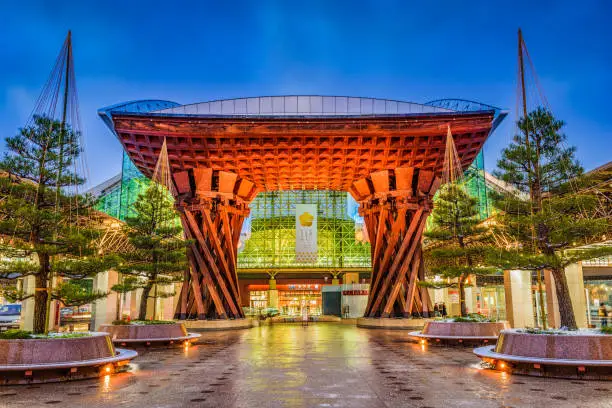
When going to Japan, solo travel To get around fast, take advantage of Japan’s efficient and vast public transit system, which includes trains and buses. Also, consider purchasing a Japan Rail Pass for convenient travel nationwide.
Where to stay in Japan as a solo traveler
What are the accommodation options like in Japan? There’s a wide variety to choose from when traveling solo. Whether you seek a small, unique city hotel, a modern skyscraper lodging, or a quaint countryside inn, Japan has it all. You can discover centuries-old traditional ryokans with tatami-mat floors, natural hot springs (onsen), and exquisite multi-course kaiseki meals, or opt for cutting-edge hotels in Tokyo.
As a solo adventurer, you enjoy more flexibility, but making reservations well in advance is advisable. Japanese accommodations tend to fill up quickly, especially in urban areas and during peak seasons. If you join a group tour like Flash Pack, you can avoid the hassle of arranging hotels and often share a room with a fellow solo traveler, reducing the single supplement cost. If you still prefer having your space, that option is also available.
Related article: Affordable Delicious Japanese Food-Best Budget Eats in Japan
Embarking on Japan solo travel typically starts with a flight. Several airlines, such as Japan’s ANA and Nippon Airways, offer direct flights from international locations like the US, Canada, and the UK to major cities like Osaka, Tokyo, and Nagoya on Honshu island.
Alternatively, traveling by ferry is another option to reach Japan by sea. The primary ferry routes connect China and Korea to Japanese ports in Osaka and nearby Kobe. Despite Japan being an island nation, an extensive European rail network ultimately led to Shanghai, China. You can catch a ferry from Shanghai to continue your journey to Japan.
The ideal timing for Japan solo travel depends on your preferences. Spring, from March to May, offers a stunning display of cherry blossoms (sakura) and attracts many travelers despite the unpredictable weather ranging from 4-18°C. Opting for a journey in October and November lets you experience Japan’s autumn colors (koyo), witnessing maple leaves ablaze in fiery red hues with temperatures between 10-21°C.
Summers, with temperatures usually ranging from 21-32°C and high humidity, are suitable for hiking at higher altitudes in the southern Kansai region of Honshu island, where lush green trees provide refreshing shade. On the other hand, winter brings cold temperatures, often dipping below zero, leading to snowfall and turning Japan into a popular skiing destination, especially on Hokkaido.
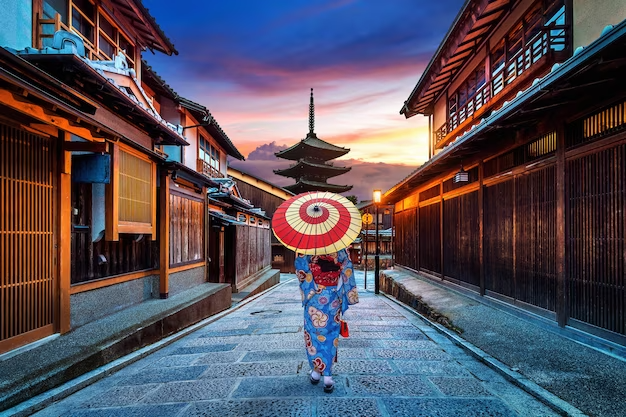
Japan is a beautiful and diverse country with a rich cultural heritage, modern cities, stunning natural landscapes, and delicious cuisine. Here’s a sample 10-day itinerary to give you an idea of what you can see and do in Japan:
Day 1-2: Tokyo
- Arrive in Tokyo, the bustling capital of Japan.
- Visit iconic sights like Tokyo Tower, Senso-ji Temple, and the Imperial Palace.
- Explore the districts of Shibuya, Shinjuku, and Akihabara.
- Try traditional sushi and ramen for dinner.
Day 3: Nikko
- Take a day trip to Nikko, a UNESCO World Heritage site renowned for its breathtaking temples and natural beauty.
- Visit Toshogu Shrine, a lavishly decorated shrine complex.
Day 4-5: Hakone
- Head to Hakone, famous for its hot springs and views of Mount Fuji.
- Relax in an onsen (hot spring) and enjoy the beautiful scenery.
- Visit the Hakone Open-Air Museum and Hakone Shrine.
Day 6-7: Kyoto
- Travel to Kyoto, a city rich in history and traditional culture.
- Visit Kinkaku-ji (Golden Pavilion), Fushimi Inari Shrine, and Arashiyama Bamboo Forest.
- Explore the historic Gion district and experience a traditional tea ceremony.
Day 8: Nara
- Take a day trip to Nara, home to friendly deer and beautiful temples.
- Visit Todai-ji Temple and Nara Park.
Day 9: Hiroshima
- Head to Hiroshima and tour the Peace Memorial Park and Museum to explore the city’s history.
- Take a ferry to Miyajima Island to see the famous “floating” Itsukushima Shrine.
Day 10: Osaka
- Explore Osaka, known for its modern architecture and vibrant nightlife.
- Visit Osaka Castle and try street food in Dotonbori.
- Depart from Osaka or extend your trip to explore more of Japan.
Remember to adapt this itinerary based on your interests, travel pace, and the time of year you visit. Japan has much more to offer, so feel free to modify this itinerary to suit your preferences and discover the unique experiences that appeal to you.
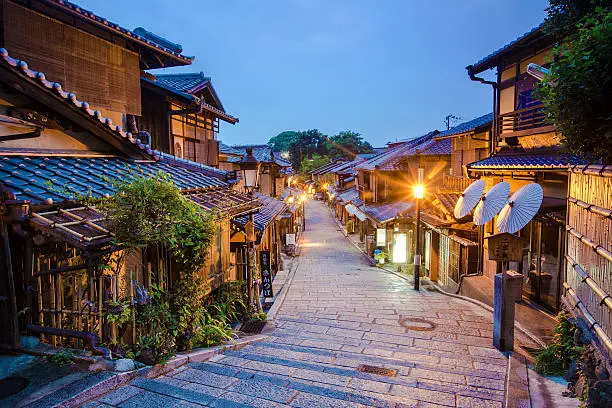
Japan is a haven for solo travelers searching for peace and reflection, surrounded by spiritual sites and calming nature trails. You’ll find beautiful traditional gardens in every city once the retreats for Japan’s historical figures.
When ready to escape the hustle and bustle, head to tranquil temples, forested mountains, or islands with charming rivers and castles. Japan offers enchanting waterfalls, vast flower-filled parks, and stunning alpine exploration routes. And take advantage of Japan’s beloved onsen hot springs, a peaceful experience often found in cozy Japanese inns.
You may interested in: Travel Essentials for Women: Packing Made Easy
Numerous travelers embark on solo journeys to Japan yearly, and most enjoy a trouble-free experience. Nevertheless, it’s wise to consult the Foreign and Commonwealth Office (UK), the Department of State Travel Advisories (US), or your local government’s guidelines for the most up-to-date advice before your trip. After arriving in Japan:
- Pay attention to local advice.
- Stay aware of your surroundings.
- Ensure you’re mindful of your belongings.
Japan solo travel is more appealing due to its remarkable safety track record and low crime rates. Traveling solo is normalized and well-supported, with provisions like women-only spaces in spas or train carriages. Consider joining a group of fellow solo travelers for added peace of mind.
In summary, Japan solo travel offers a distinctive journey blending tradition and innovation, providing a transformative experience. Discover the safety, efficiency, and warm hospitality that make exploring Japan alone a fulfilling adventure. The Land of the Rising Sun beckons with its rich culture, diverse landscapes, and a seamless blend of old and new. Whether delving into city life, immersing in nature, savoring local delicacies, or diving into the unique culture, Japan solo travel promises an unforgettable venture catering to all preferences. It’s an exceptional destination inviting solo travelers to uncover its unique tapestry of experiences and embark on a self-discovery odyssey.
Similar Posts
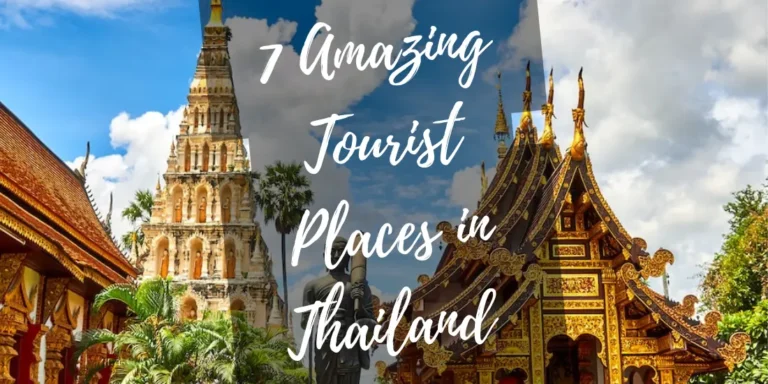
Thailand’s Unique Tourist Attractions: 7 Amazing Places
Thailand, often called the “Land of Smiles,” is a mesmerizing Southeast Asian paradise famous for its breathtaking scenery, abundant cultural legacy, and welcoming hospitality. While popular destinations like Bangkok, Phuket, and Chiang Mai draw millions…

Best Places to Visit in Bangkok for First Timers-Explore Now
Bangkok: A City of Contrasts Bangkok, often referred to as the “City of Angels,” is Thailand’s capital and largest city. Located in the central part of the country, it serves as Thailand’s political, economic, cultural,…

Singapore in Winter Travel Tips – Weather, Activities & More
In this comprehensive guide, we’ll delve into all the essential information you need to enjoy the winter season in the tropical paradise of Singapore in Winter. Discover how this vibrant city-state transforms during the cooler…
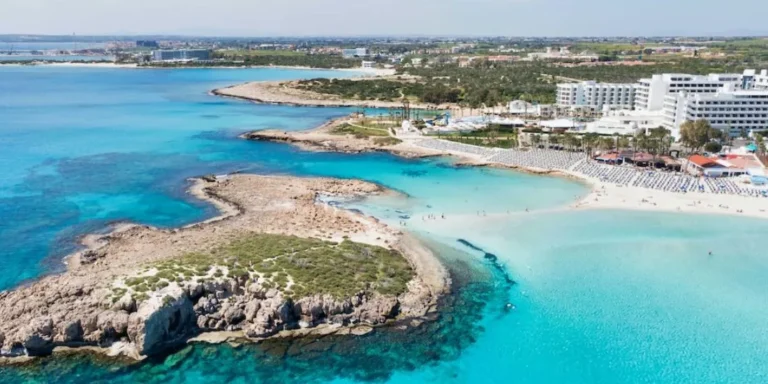
Cyprus Travel Tips: Your Guide to Exploring Cyprus
Explore all Cyprus offers through activities and sights that showcase culture, history, and natural splendor – find out “what there is to do in Cyprus” with this comprehensive guide! Welcome to Cyprus, an idyllic island…
One Comment
- Pingback: Mexico Travel Tips: Your Guide to a Memorable Trip
Leave a Reply Cancel reply
Your email address will not be published. Required fields are marked *
Save my name, email, and website in this browser for the next time I comment.

Solo Travel Japan: Navigating an Unforgettable Journey
Home » Solo Travel Japan: Navigating an Unforgettable Journey
Embarking on a solo journey to Japan offers an enriching blend of tradition and modernity, ideal for the adventurous traveler seeking a mix of cultural immersion and self-discovery.
Japan’s allure for solo travelers lies in its contrasting experiences, from the bustling streets of Tokyo to the tranquil temples of Kyoto . This journey is about more than sightseeing; it’s an opportunity to engage with the local culture, from tea ceremonies to Zen gardens, providing a holistic experience of Japanese life.
Commencing your adventure is made more accessible by the availability of direct flights from various international locations. These direct flights offer a convenient and efficient means of reaching Japan, minimizing transit times and making your journey to the Land of the Rising Sun as smooth as possible.
Whether you’re taking off from North America, Europe, or other parts of Asia, the direct routes to Japan’s major airports ensure that your adventure begins with ease and comfort.
Effective planning, particularly budgeting, is crucial for a fulfilling solo trip in Japan. This guide aims to provide insights into cost-effective travel strategies without compromising the richness of the Japanese experience.
Covering accommodation, transportation, dining, and cultural experiences, it’s designed to help you navigate through the Land of the Rising Sun with ease and confidence.
As you prepare for this adventure, remember that solo travel in Japan is as much about personal growth as it is about exploration. It’s an invitation to connect with a culture that gracefully combines the hustle of modern life with natural tranquility. Ready your curiosity for a journey that promises to be as enlightening as it is unforgettable.
Comprehensive Cost Breakdown for Solo Travelers in Japan
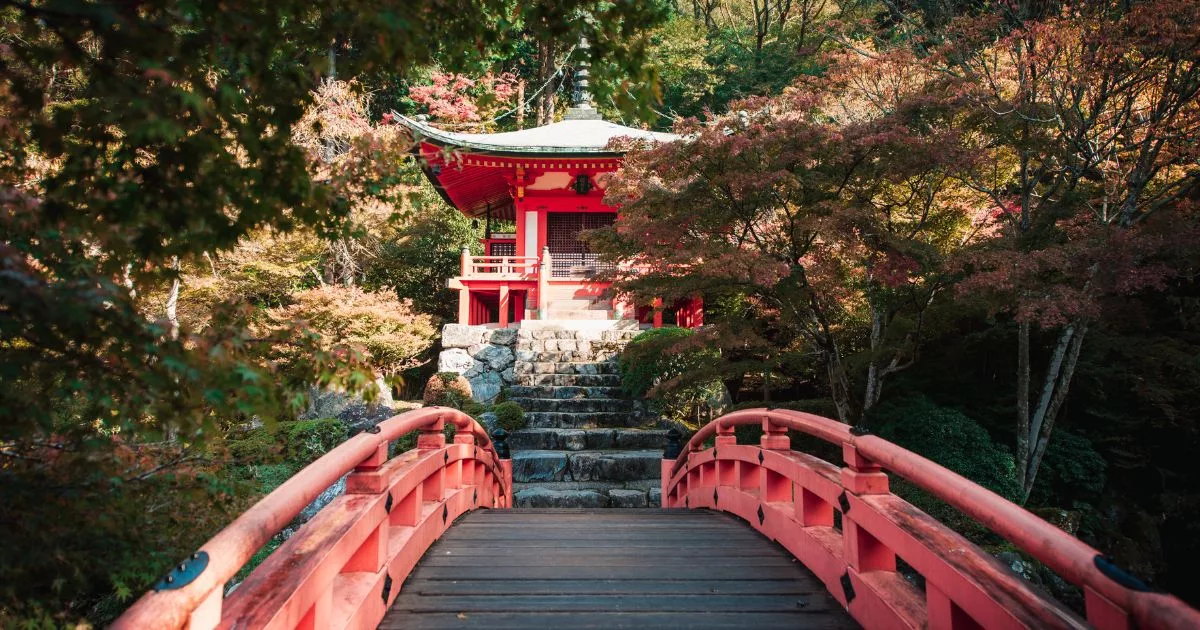
Understanding the financial aspects of traversing this unique country is key to a fulfilling and stress-free adventure. As a solo traveler, you have the freedom to tailor your journey to your personal preferences and budget, making each choice from transportation accommodations an integral part of your experience.
Understanding Japan Trip Cost: A Comprehensive Overview

From the bustling metropolises to the serene countryside, the expenses can vary significantly. A well-planned budget should account for daily expenditures such as food, lodging, travel, and entertainment.
Average daily costs can range from modest to luxurious, depending on your choices. Street food and public transport can keep expenses low, while fine dining and private tours will add to your budget.
It’s about striking the right balance between cost and comfort, ensuring your journey is both enriching and economical.
Accommodation Options: From Capsule Hotels to Luxury Stays
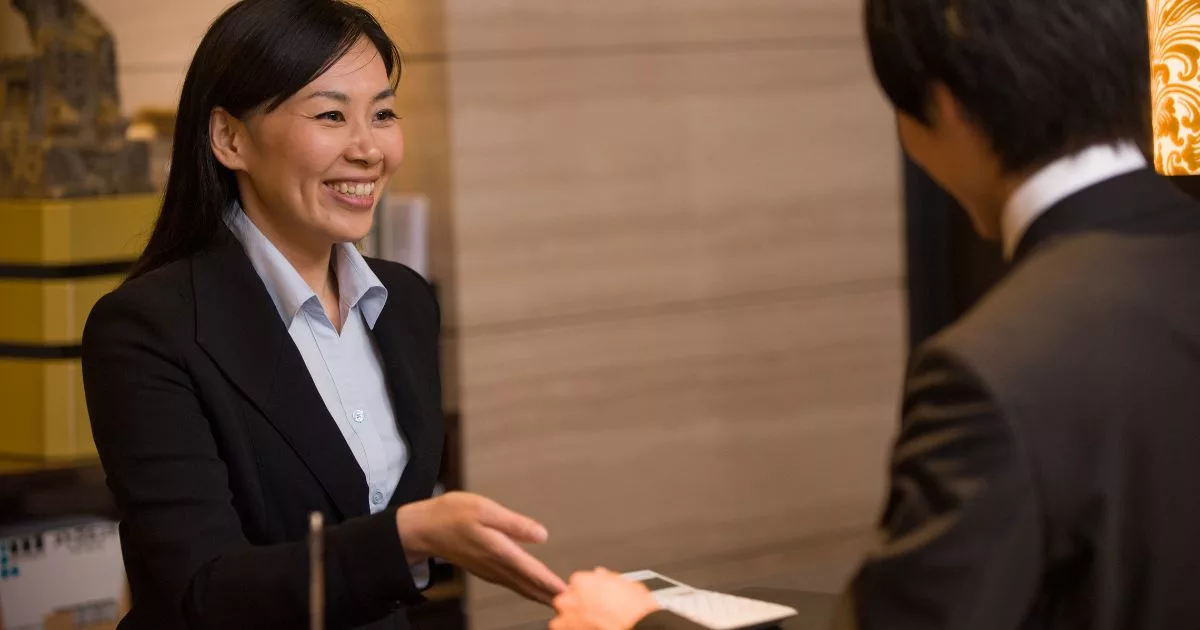
Capsule hotels, synonymous with Japan’s innovative use of space, provide a cost-effective and unique sleeping experience, perfect for the budget-conscious.
For those seeking more traditional lodgings, ryokans offer a taste of Japanese culture with tatami mats and onsen baths. In urban areas, business hotels present a practical option, offering clean and efficient amenities.
If luxury and indulgence are what you seek, Japan’s high-end hotels and boutique guesthouses provide unparalleled service and exquisite settings, ensuring your stay is as memorable as your travels.
Transportation Insights: Exploring Japan’s Efficient Travel Network
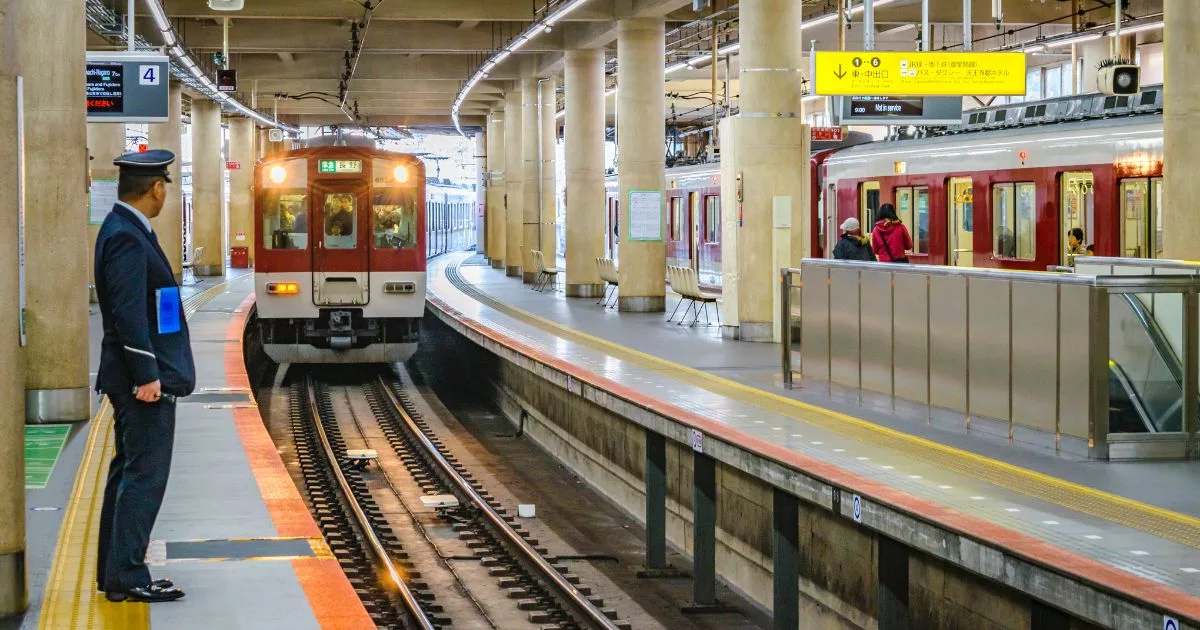
The country’s public transport system is renowned for its efficiency and coverage. The extensive train network, including the iconic Shinkansen or bullet trains, offers a reliable and swift means to traverse long distances, albeit at a higher price point. Local buses and subways provide an economical alternative for urban travel and exploring off-the-beaten-path locations.
For those who prefer the freedom of self-navigation, rental cars are available, though it’s wise to consider the additional costs of fuel and tolls. Understanding these transportation options and their costs can significantly enhance your solo travel experience in Japan, allowing you to explore far and wide with ease and efficiency.
Delving into Transportation Costs for Solo Travel in Japan
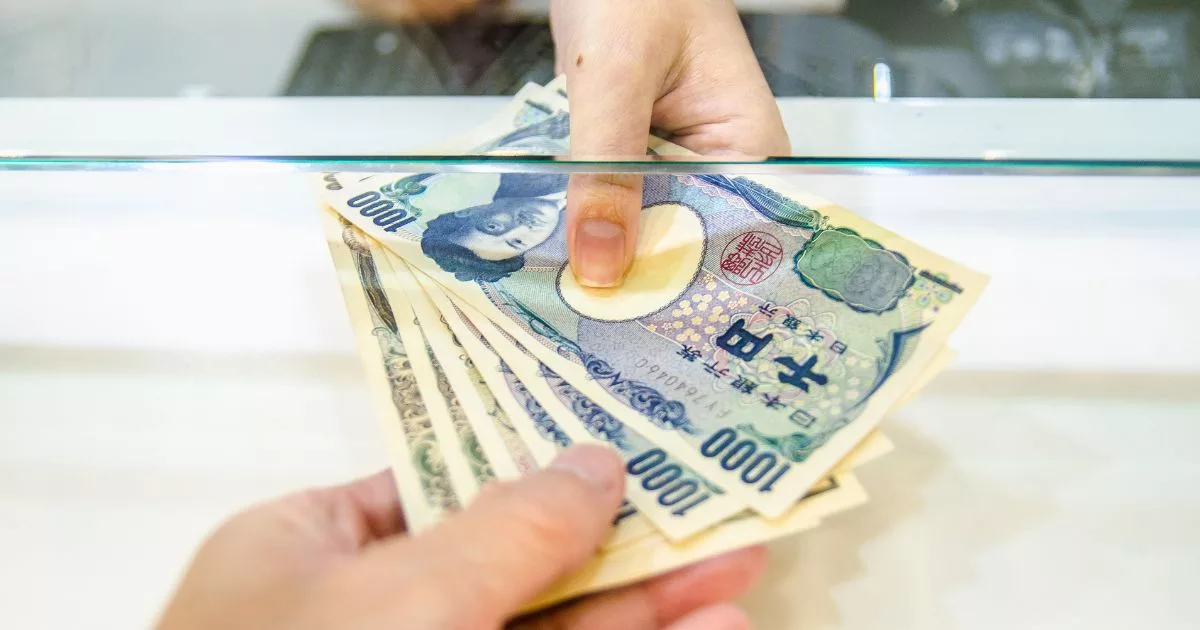
Japan’s transportation system is celebrated for its punctuality, efficiency, and coverage, offering an array of options to suit various travel styles and budgets. From the futuristic Shinkansen bullet trains to the comprehensive network of local buses and subways, the choices are abundant.
Understanding these options and their associated transportation costs is essential to save money from your budget while traveling smoothly. Whether you’re hopping between major cities or exploring hidden gems, the way you choose to travel can significantly shape your Japanese adventure.
Navigating Public Transportation: A Cost-Effective Way to Travel
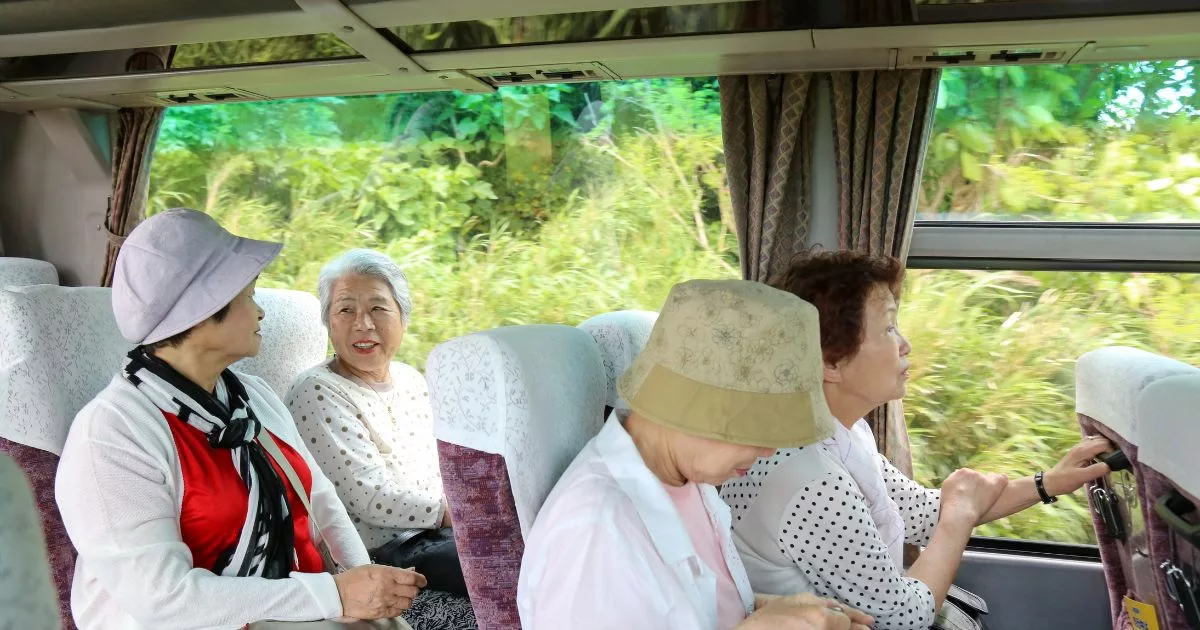
For the budget-conscious solo traveler, it presents an economical way to explore. The dense network of train stations for commuter trains, subways, and buses covers large areas, ensuring access to even the most remote destinations. Purchasing a regional rail pass can offer unlimited travel within certain areas, often proving to be a cost-effective choice for those planning extensive travel by train.
Embracing public transportation not only saves money but also offers an authentic glimpse into the daily life of the Japanese people.
Bullet Trains and Rental Cars: Balancing Cost and Convenience
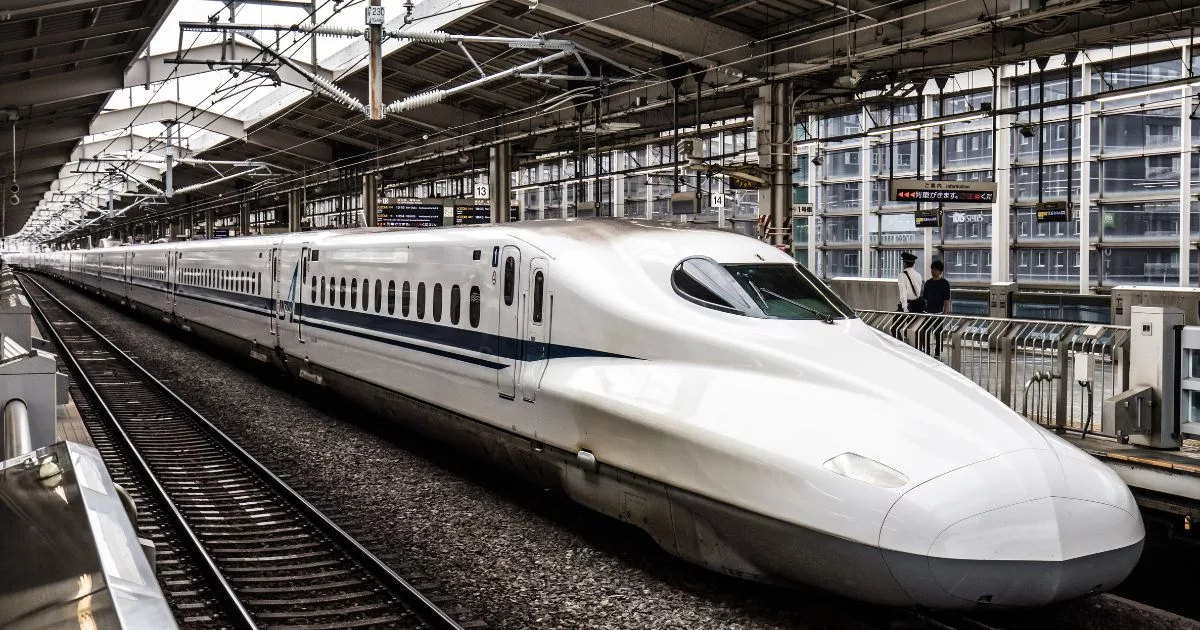
While it commands a higher price than other forms of transport, the speed, comfort, and punctuality it offers can justify the cost, especially when covering long distances.
For more flexibility and the chance to venture off the beaten path, renting a car can be an appealing option. It allows access to rural areas and smaller towns where public transport may be less frequent.
However, it’s crucial to consider additional expenses like fuel, tolls, and parking, which can add up quickly. Balancing these costs with the convenience they offer is key to a well-planned solo travel experience in Japan.
Japan Trip: Cost Considerations for Solo Travelers
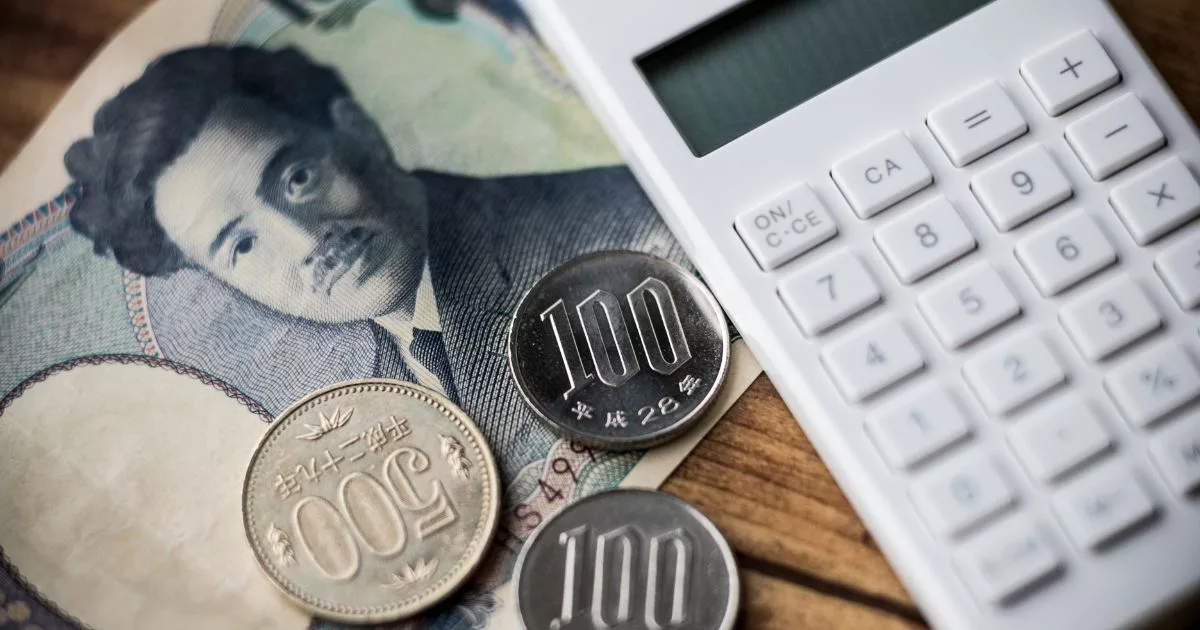
From the neon-lit streets of Tokyo to the serene temples of Kyoto, the financial aspect of traveling solo in Japan is as diverse as the country itself. It’s not just about tallying expenses, but understanding how each choice – from accommodation to activities – impacts your overall budget.
Whether you’re planning a frugal backpacker’s trip or a luxurious getaway, a well-informed budget plan is your key to a stress-free and enriching Japanese adventure.
How Much Does a Trip to Japan Cost?

On average, a solo traveler might spend between $100 to $350 per day, accounting for basics like food, lodging, and transportation.
This estimate can fluctuate greatly depending on the type of accommodation – be it budget hostels or upscale hotels – and dining choices, from affordable street food to exquisite sushi restaurants.
Seasonal variations, like the cherry blossom season or peak tourist times, can also play a significant role in determining overall expenses.
Solo Travel Japan Budget: Planning Your Finances

Start by setting a realistic budget, factoring in all potential costs such as flight tickets, accommodation, local transportation, entrance fees to attractions, and daily meals. It’s beneficial to allocate a contingency fund for unforeseen expenses.
Remember, Japan offers a range of experiences for every budget. Exploring local customs, indulging in street food, or visiting many free attractions can enrich your trip without straining your wallet. Smart budgeting means balancing splurges and savings, ensuring you get the most out of your Japan trip cost while adhering to your financial plan.
Managing Expenses: Actual Costs and Budgeting Tips

The cost of traveling in Japan can vary wildly, influenced by choices like accommodation types, dining preferences, and transportation methods. A rough estimate for budget travelers might start from as low as $70 per day, while those seeking more comfort could spend upwards of $200 daily. Japan’s costs are often higher in cities like Tokyo and Kyoto, especially for hotel rooms and dining in upscale restaurants.
To manage expenses effectively, consider various budget travel options such as mid-range hotels or dormitory-style accommodations, which can offer significant savings.
Utilize transportation passes for cost-effective travel and explore local eateries and convenience stores for affordable dining. Keep in mind that prices vary based on location and season, so planning your travel during off-peak seasons can lead to further savings.
Lastly, always have a travel budget in place, accounting for all these factors, to ensure your trip is both memorable and financially manageable.
Culinary and Cultural Insights for Solo Travelers in Japan
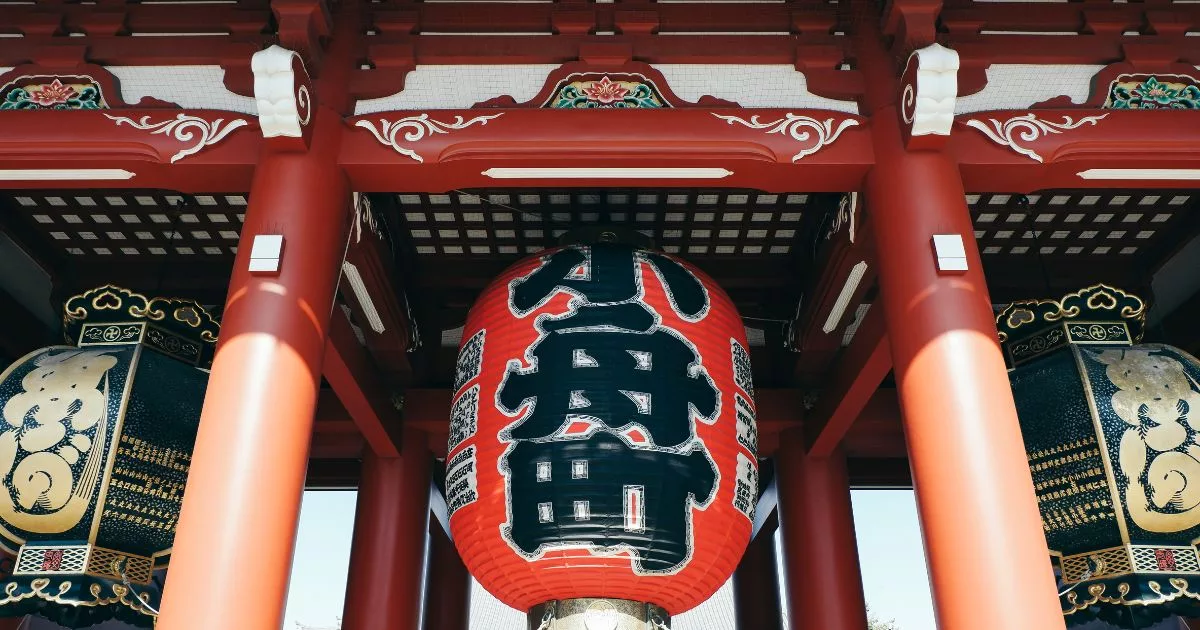
Here, each bite and each step taken is an immersion into a culture that celebrates both the subtlety and the vibrancy of life. For solo adventurers, the quest for culinary delights and cultural exploration is not just about satisfying the palate or checking off attractions.
It’s about engaging with the heart of Japan, understanding its ethos, and experiencing the rhythms of its daily life. From savoring local street food to exploring historical landmarks, Japan unfolds its treasures to those willing to delve beyond the surface.
Culinary Adventures: Dining Options for Every Budget
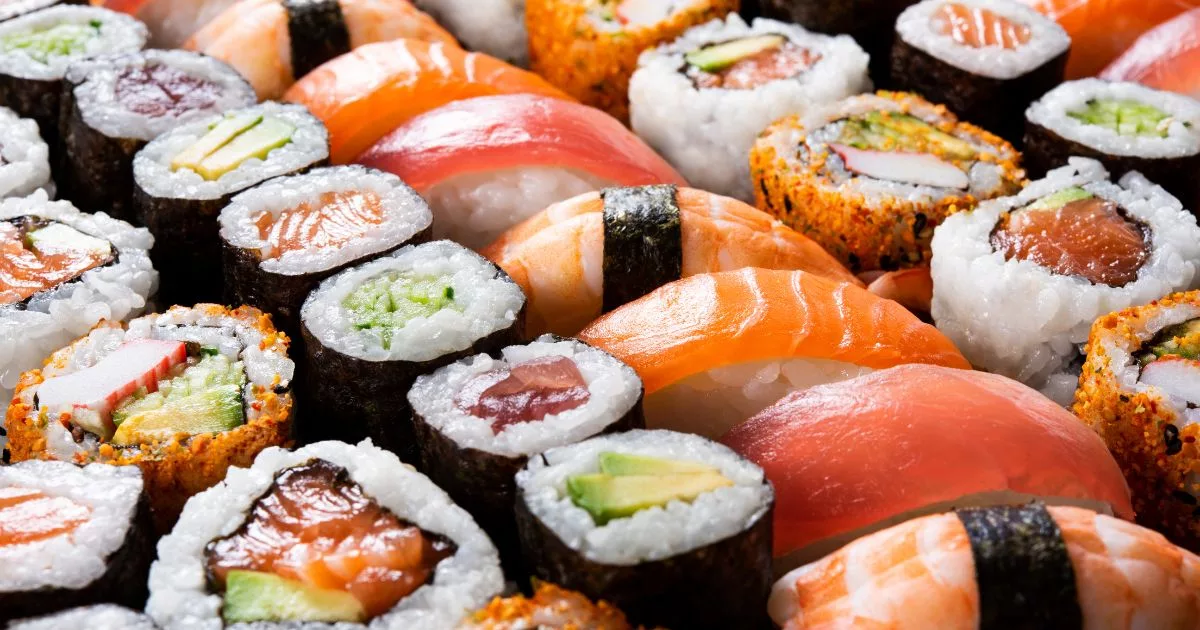
For the solo traveler, dining options range from vending machine rice balls and conveyor belt sushi restaurants to high-end dining experiences in luxury hotels. Street food, a window to Japan’s culinary soul, offers delights like takoyaki and yakitori at reasonable prices, perfect for a tight budget. For those willing to splurge, Japan’s sushi restaurants and traditional ryokans serve up exquisite dishes that are a feast for both the eyes and the palate.
Regardless of your budget, each meal is an opportunity to connect with Japanese culture and savor the flavors that define this vibrant land.
Attractions and Activities: The Essence of Japan’s Rich Culture
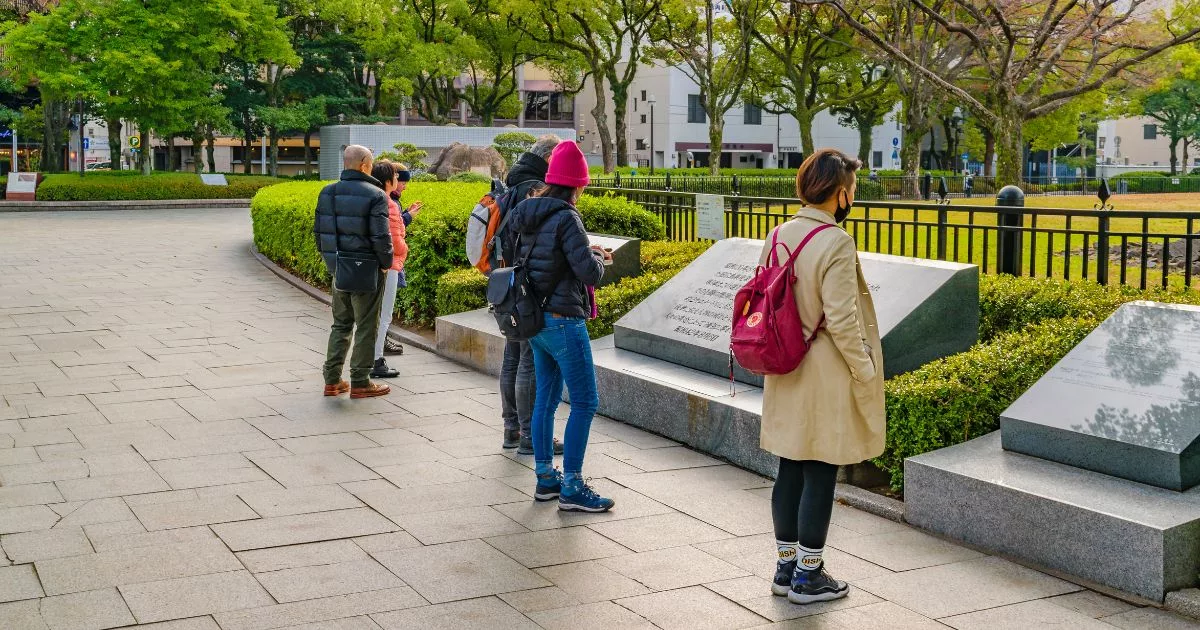
Major cities like Tokyo and Kyoto are brimming with attractions, from the historic Tokyo National Museum to the serene temples and shrines that dot Kyoto’s skyline. For a more intimate experience, visiting local customs and participating in traditional tea ceremonies offer a deeper understanding of Japanese culture.
Seasonal activities, such as viewing cherry blossoms in spring or attending a summer festival, provide unique opportunities to engage with the local community. In rural areas, the serene beauty of Japan’s countryside can be experienced through hikes, hot spring baths, and stays in family-run guesthouses.
Each experience, whether it’s indulging in local culture or exploring free attractions, enriches the solo travel journey, making it a truly unforgettable adventure.
Local Insights: Exploring Coffee Shops and Convenience Stores
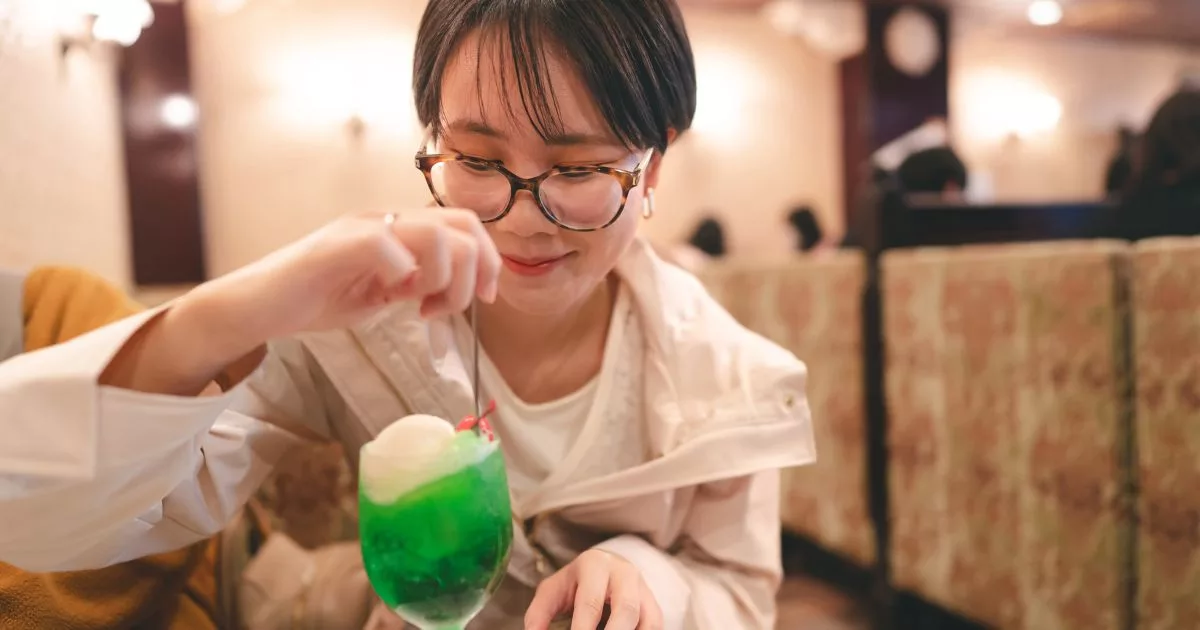
These establishments, often overlooked in traditional travel guides, offer solo travelers unique glimpses into the daily life of the Japanese. Coffee shops, ranging from traditional kissaten to modern cafés, serve not only as places to savor a rich brew but also as havens of tranquility amidst the urban rush. Each shop has its own character, reflecting the local culture and community.
Convenience stores, or “konbini,” are an integral part of Japanese life, providing an array of services and goods that go beyond the typical convenience store experience. From on-the-go meals like onigiri (rice balls) and bento boxes to unique seasonal items, konbini offers an affordable and convenient dining option for the budget-conscious traveler.
These stores are not just about practicality; they are a window into the Japanese approach to efficiency and hospitality. Exploring these coffee shops and konbini allows solo travelers to immerse themselves in the rhythm of local life, offering a taste of Japan’s modern culinary landscape and its penchant for convenience and quality.
Essential Tips for Solo Travelers in Japan
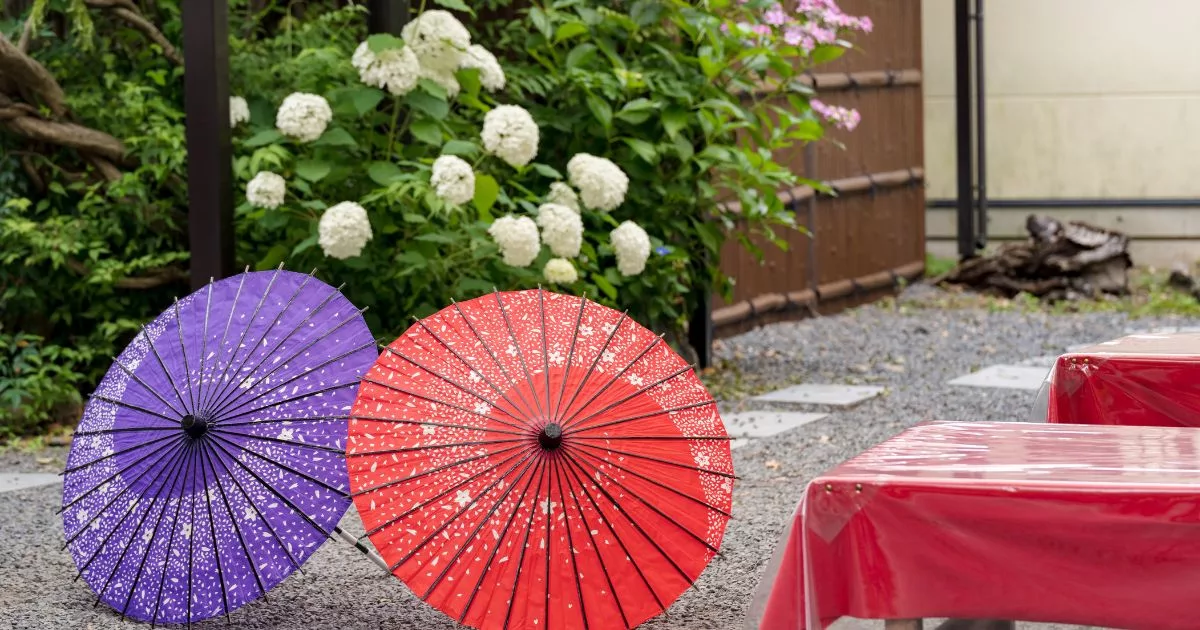
To navigate this journey with ease and make the most of your adventure, understanding some essential tips can be immensely helpful. These tips range from practical money-saving strategies to cultural insights, ensuring that your trip is both economical and culturally rewarding.
Embracing these insights will not only enhance your travel experience but also help you connect more deeply with the fascinating Japanese culture.
Saving Strategies: Smart Ways to Save Money While Traveling in Japan

For the budget-conscious solo traveler, understanding how to cut costs without sacrificing experiences is key.Opting for budget accommodations like capsule hotels or dormitory-style lodgings can significantly reduce expenses. Public transportation, notably efficient and reliable, offers an economical way to navigate major cities and rural areas.
Investing in a regional rail pass can be a cost-effective solution for extensive travel. Additionally, indulging in street food or dining at mid-range restaurants can provide a taste of authentic Japanese cuisine without the hefty price tag. Moreover, many major cities in Japan offer free attractions and activities, allowing for budget-friendly exploration.
By planning smartly and embracing a flexible travel style, you can enjoy the wonders of Japan while keeping your travel expenses in check.
Navigating Cultural Nuances: Understanding Local Customs and Practices
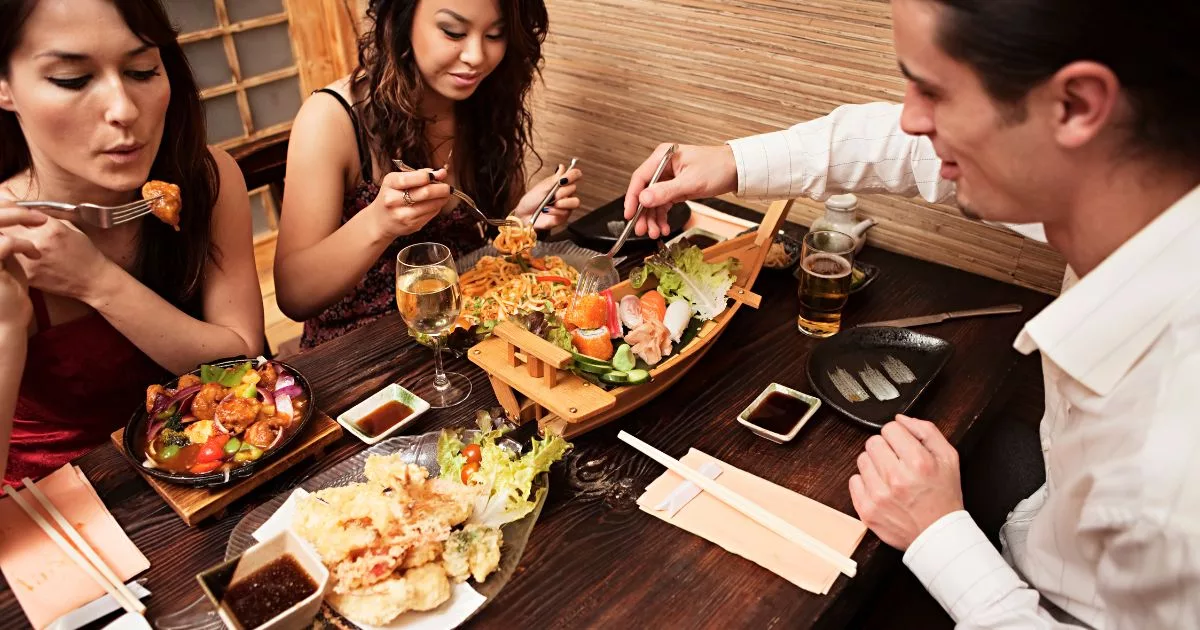
Respecting local customs, such as removing shoes before entering homes or certain public places, is essential. Being mindful of local etiquette, especially in public transportation and when visiting sacred sites, enhances mutual respect and understanding. Solo travelers should also be aware of the local culture’s emphasis on politeness and punctuality.
Engaging with locals, while being conscious of language barriers, can offer a more authentic and enriching experience. Japan’s culture, from its traditional ryokans to its serene tea ceremonies, offers a window into a society that harmonizes modernity with tradition.
Embracing these cultural nuances not only enriches your travel experience but also fosters a deeper connection with the land and its people.
Exploring Japan’s Varied Regions: A Solo Traveler’s Guide
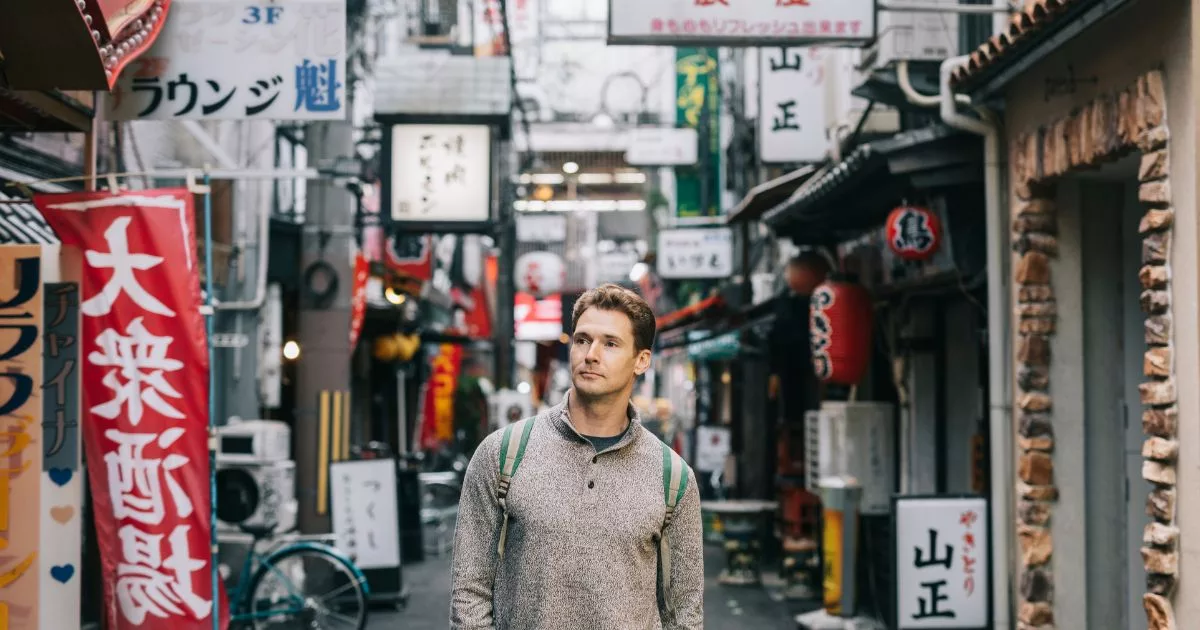
From the neon-lit streets of Tokyo to the tranquil landscapes of rural Japan, the country is a palette of contrasting scenes and atmospheres. Exploring these varied regions allows solo travelers to immerse themselves in a journey that is as culturally rich as it is geographically diverse.
Each destination, whether a bustling major city or a quiet countryside retreat, presents an opportunity to delve deeper into Japan’s multifaceted identity.
Tokyo and Major Cities: Urban Exploration and Cost Insights
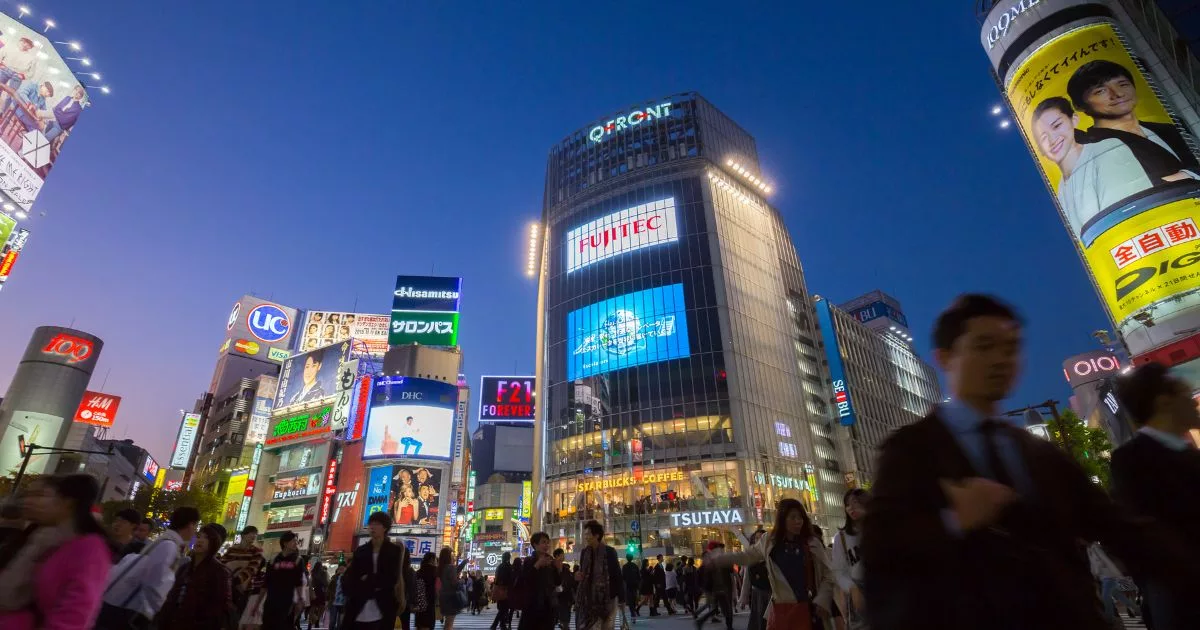
These cities, while renowned for their high energy and cutting-edge technology, also house serene temples and historical sites. Navigating these cities, you’ll encounter a range of accommodation options, from luxury hotels to budget-friendly capsule hotels. The cost of staying in these urban centers can vary greatly depending on your travel style and preferences. Using local transportation like trains and buses is not only cost-effective but also an excellent way to experience city life like a local.
Major cities also offer a plethora of dining options, from street food vendors serving delicious rice balls to high-end sushi restaurants, catering to every palate and budget.
Rural Japan: Discovering the Charm of Countryside Travels
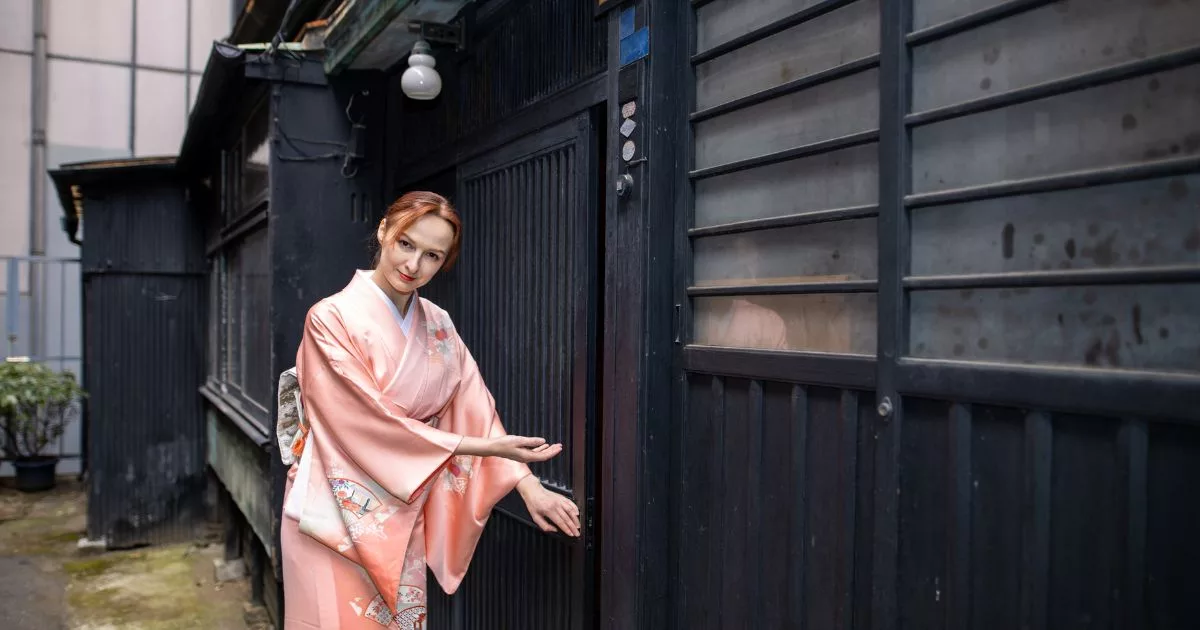
Here, traditional ryokans provide a unique lodging experience, often accompanied by hot spring baths and local cuisine. Exploring the countryside by local trains or rental cars allows for a more personalized journey, revealing hidden gems and lesser-known locales.
The cost of traveling in rural areas can be surprisingly reasonable, with many free attractions and reasonably priced local restaurants. These regions present an opportunity to witness Japan’s varying landscapes and experience the authentic essence of Japanese culture, away from the bustling city life.
Visit Japan: Embracing the Solo Travel Experience
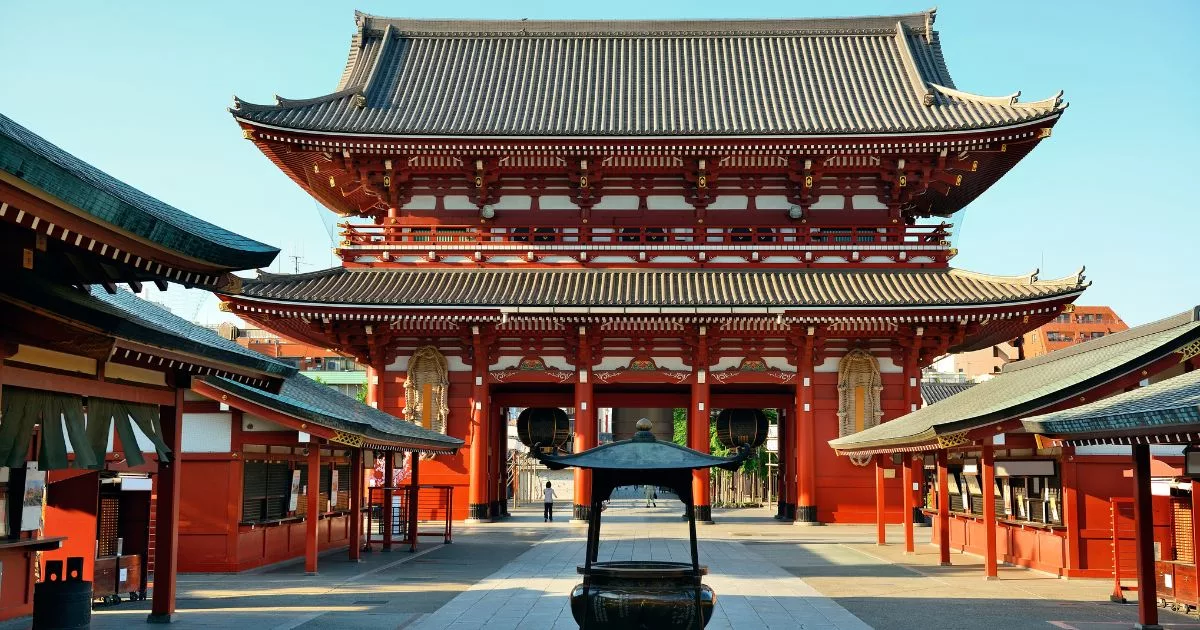
In Japan, every region offers unique experiences, from the energetic pulse of Tokyo to the serene countryside. Your adventure can be as diverse as staying in quaint capsule hotels or luxurious ryokans, and dining on street food or in elegant restaurants. Embracing local customs and smart planning can ensure a fulfilling trip within your budget.
Your solo journey will be a series of discoveries – from bustling cityscapes to tranquil temples and lush natural settings. Engaging with local culture, whether it’s through a traditional tea ceremony or an onsen bath, enriches your experience. Solo travel in Japan is more than sightseeing; it’s a personal journey of self-discovery.
As you return, you’ll bring back not just memories but a newfound appreciation of a deeply nuanced culture. These experiences will not only inspire your future travels but also encourage others to explore the wonders of Japan. With each visit, Japan continues to unveil its endless mysteries and delights.
FAQ – Frequently Asked Questions About Solo Travel in Japan, Budget, Average Price, Transportation Costs, and More!
Is japan good for solo traveling.
Yes, Japan is considered one of the best destinations for solo travelers due to its safe and clean environment, efficient public transportation, and the polite and helpful nature of its people. Its rich culture, diverse attractions, and solo-friendly amenities like capsule hotels and conveyor belt sushi restaurants make it ideal for those traveling alone.
Is it fun to go to Tokyo alone?
Absolutely! Tokyo offers a vast array of experiences that can be thoroughly enjoyed alone. From exploring bustling districts like Shibuya and Shinjuku, to visiting historical landmarks and enjoying the city’s vibrant food scene, Tokyo provides a unique and exciting experience for solo travelers.
Should I stay longer in Tokyo or Kyoto?
This depends on your interests. Tokyo offers a fast-paced, modern experience with endless entertainment and shopping options. Kyoto, on the other hand, is the heart of traditional Japan with its temples, shrines, and historic sites. If you’re more interested in contemporary culture and nightlife, extend your stay in Tokyo. For a more cultural and historical experience, stay longer in Kyoto.
How much would a 1-week trip to Japan costs?
Visiting Japan for a 1-week trip, budget travelers might spend around $700-$1000, while those opting for more comfort might spend around $1400-$2000. Luxury travelers could spend more, depending on their choices of accommodation and activities.
Can I visit Japan on a budget?
Yes, it’s possible to explore Japan on a budget. While Japan has a reputation for being expensive, there are many ways to save money, such as using regional rail passes, staying in budget accommodations like capsule hotels or hostels, eating at local restaurants or convenience stores, and visiting free attractions.
How much does the average Japan trip cost?
A trip to Japan costs vary greatly depending on the style of travel., accommodation choices, dining habits, and transportation. On average, a moderate budget might range from $100 to $200 per day including accommodation, meals, and transportation.
How much does a 7-day trip in Japan cost?
A 7-day trip can cost anywhere from $700 to $1400 on a moderate budget, potentially more for luxury travel or significantly less for budget travelers. This estimate includes basic expenses such as accommodations, meals, and local transportation.
Is $1000 dollars enough to visit Japan?
A $1000 budget can be enough for a budget-conscious solo traveler for a week, especially if you focus on free attractions, affordable accommodations, and inexpensive dining options. However, it might limit your ability to travel extensively within the country or indulge in higher-end experiences.
Is $5000 enough for a two-week trip to Japan?
Yes, $5000 is typically more than sufficient for a comfortable two-week trip in Japan. This budget allows for a good mix of standard accommodations, diverse dining experiences, and domestic travel within Japan.
Is Japan expensive for vacation?
Visiting Japan can be expensive compared to some destinations, especially in terms of accommodation and dining in high-end restaurants. However, with a range of options available, it can also be made affordable with careful planning.
Is Japan cheap for US tourists?
The cost for US tourists in Japan will depend on the exchange rate and their travel style. While Japan is not typically considered a cheap destination, it offers a range of options for different budgets.
How much does a single trip to Japan cost?
The cost of a single trip to Japan varies widely based on duration, lifestyle, and travel preferences. On average, a rough estimate of $100 to $200 per day could cover moderate accommodations, meals, and transportation.
What are the typical entrance fees for tourist attractions in Japan?
The entrance fees for tourist attractions in Japan can vary widely. For many temples, shrines, and gardens, the entrance fee ranges from 300 to 1000 yen (from $2 to $8 US Dollars), making them quite affordable. However, more popular attractions like Tokyo Disneyland or Universal Studios Japan can cost upwards of 7,000 yen (around $53 US Dollars). Museums and historical sites generally have modest fees, often around 500 to 1,500 yen (between $3 to $12 US Dollars). To manage costs effectively, it’s a good idea to research and budget for entrance fees in advance, especially when visiting multiple paid attractions.
How much can taxi fares and train ticket prices impact my budget?
Taxi fares in Japan, particularly in major cities like Tokyo and Kyoto, can be quite expensive, with initial charges starting around 410 yen (around $3.15) and increasing rapidly with distance. For longer journeys, taxi costs can significantly impact your travel budget. Train tickets, on the other hand, are more varied. Local trains are relatively affordable, but long-distance Shinkansen (bullet train) tickets can be costly, although purchasing a rail pass can mitigate these expenses. Planning your mode of transport in advance and considering options like a regional rail pass for long distance travel can help manage these costs effectively.
Is sushi restaurant dining affordable for a solo traveler?
Dining in a sushi restaurant in Japan can fit a range of budgets. Conveyor belt sushi (kaiten-zushi) is a budget-friendly option, with plates typically priced between 100 to 500 yen each (between $0.80 to $4 US Dollars). Mid-range sushi restaurants offer a higher quality experience at a moderate cost. However, high-end sushi dining, especially in places like Tokyo’s Ginza district, can be quite expensive. For solo travelers, exploring a variety of sushi dining options, from affordable casual restaurants to occasional splurges in upscale establishments, can provide a balanced culinary experience.
How does traveling during peak seasons affect the overall cost?
Traveling during peak seasons, such as cherry blossom season or Golden Week, can lead to higher costs for accommodations, flights, and some services. It’s wise to book well in advance and consider potential price increases when budgeting for your next trip. However, experiencing Japan during these vibrant times can be incredibly rewarding.
How do accommodation options vary greatly depending on the location in Japan?
Accommodation options in Japan range widely, especially between urban and rural areas. In cities like Tokyo and Osaka, you can find everything from luxury hotels and boutique guesthouses to budget-friendly capsule hotels and dormitory-style accommodations. Rural areas offer unique stays like traditional ryokans and family-run minshuku, often at reasonable prices. The location greatly influences the style and cost of accommodations, so consider this when planning your itinerary.
What are some budget accommodations available for solo travelers?
For solo travelers on a tight budget, Japan offers various accommodation options. Capsule hotels, known for their compact yet comfortable sleeping pods, are an economical choice in cities. Hostels provide another affordable option, offering both dormitory style and private rooms. Additionally, guesthouses and business hotels often have competitive prices and basic amenities suitable for budget-conscious travelers.
For more on travel and adventure, check out the Jay Wanders home page!

Carlos De Lanuza
- Cheap Places to Travel in Portugal – A Detailed Guide October 16, 2023
- The 10 Best Hiking Dogs October 18, 2023
- Punta Prima Travel guide November 1, 2023
- Is Portugal safe for solo female travellers? November 4, 2023
- Menorca vs Mallorca: Which Balearic Island is Your Perfect Paradise? October 18, 2023
Recently Posted

- Meet The Team
Solo Travel in Japan: Tips and Recommendations
Updated on February 15, 2024

If you’re looking for a unique and exciting travel experience, solo travel in Japan could be just what you need.
Travelling alone in Japan is becoming increasingly popular, especially among younger generations.
Many locals travel alone or do things alone, creating a market aimed at singles.
Despite the language barrier and cultural differences, Japan is a relatively safe and easy country to navigate, making it an ideal destination for solo travellers.
Whether you stick to famous tourist spots or wander off the beaten track when visiting Japan, you’ll be fine.
With efficient public transportation, a wealth of accommodation options, and friendly locals, you’ll have everything you need to make the most of your trip.
So why not take the plunge and embark on a solo adventure in Japan?
Why Choose Japan for Solo Travel
Traveling alone in Japan is an enriching experience. Despite the language barrier and cultural differences, the country is renowned for its safety, efficient transportation, and accommodating locals. From modern cities to ancient temples, Japan offers diverse attractions. Key recommendations include exploring with the help of technology and apps, trying the unique accommodations like Ryokan and Capsule hotels, and savoring the culinary delights even if you’re dining solo. Always remember to get travel insurance for added peace of mind. Adam Payne – Japan Insider Secrets
One of Japan’s most significant advantages of solo travel is the country’s safety.
Japan has a very low crime rate, making it one of the safest countries in the world.


Technology and Wi-Fi
As language can be an issue, I recommend taking advantage of the many wonderful apps that will make your stay much less stressful.
Accessing the internet in Japan is straightforward.
Major cities have numerous wireless hotspots, ensuring you’re seldom distant from a Wi-Fi signal.

Nonetheless, renting Wi-Fi is a wise choice for consistent connectivity if venturing into less urbanized regions.
Getting Around in Japan
Public transportation is the way to go when getting around in Japan.
The public transportation system in Japan is well-developed, efficient, and reliable.

Public transportation is also cheaper than taking taxis or renting a car.
The train system in Japan is extensive, covering most of the country.
The Shinkansen, also known as the bullet train, is a fast and convenient way to travel between major cities.

These traditional Japanese inns offer a glimpse into Japanese culture and hospitality.
Ryokan typically have tatami-matted rooms communal baths, and serve Japanese-style meals.
Business hotels are a good choice if you’re looking for a budget-friendly option.
These hotels are typically near train stations and offer basic amenities like a bed, bathroom, and Wi-Fi.
They’re often small and compact but can be a good option if you’re looking for a place to sleep.
Finally, capsule hotels are a unique option found in most cities in Japan.
As the name suggests, these hotels offer small capsules for guests to sleep in.

Capsule hotels are typically gender-segregated and have shared bathrooms and showers.
They’re a good option if you’re looking for a cheap and unique experience, but they may not be suitable for claustrophobic travellers.
Experiencing Japanese Culture Alone
Japan is a country steeped in tradition and culture, and experiencing it alone can be exciting and overwhelming.
One of the best ways to experience Japanese culture alone is by visiting an onsen, a traditional Japanese hot spring.
Onsen are found nationwide and offer a relaxing and rejuvenating experience for solo travellers.
Be sure to research onsen etiquette before you go, as there are specific rules and customs that you should be aware of.

Day Trips and Tours
There are plenty of options available, from guided tours to self-guided excursions.
Here are some of the best day trips and tours to consider.
Self-Guided Day Trips
Plenty of self-guided day trip options are also available if you prefer to explore independently.
You can easily take public transportation to nearby cities or attractions and explore at your own pace.
Some popular self-guided day trips in Japan include:
- Nikko : This small town is located north of Tokyo and is known for its beautiful temples and shrines, including the famous Toshogu Shrine .
- Nara: This ancient capital of Japan is located near Kyoto and is home to many historic temples, shrines, and friendly deer roaming the streets.
- Kamakura: This coastal town is located south of Tokyo and is known for its many temples, shrines, and beautiful beaches.

Group Tours
A group or guided tour may be a way to meet other travellers and make new friends.
Many tour companies offer group tours catering to solo travellers, making meeting other people travelling alone easy.
No matter what type of day trip or tour you choose, research and book in advance to ensure availability.
Travel Insurance
When travelling solo to Japan, it is crucial to have travel insurance.
While Japan is a safe country, accidents and emergencies can still happen.
Travel insurance can provide peace of mind and financial protection in unexpected incidents.
Why You Need Travel Insurance
Medical care in Japan is expensive, and without travel insurance, you could face a hefty bill if you require medical attention.
Additionally, travel insurance can cover other unexpected expenses such as trip cancellations, lost or stolen luggage, and emergency evacuations.

What to Look for in Travel Insurance
When selecting travel insurance for your solo trip to Japan, there are a few key factors to consider:
- Medical coverage : Look for a policy that provides adequate medical coverage, including emergency medical expenses, hospitalization, and evacuation.
- Trip cancellation/interruption coverage : This type of coverage can reimburse you for non-refundable expenses if your trip is cancelled or interrupted due to unforeseen circumstances such as illness, injury, or natural disasters.
- Lost or stolen luggage coverage : This type of coverage can reimburse you for the value of your lost or stolen luggage and its contents.
- Emergency evacuation coverage : This type of coverage can provide financial assistance for emergency evacuations due to natural disasters, political unrest, or medical emergencies.

Wrapping Up
Solo travel in Japan is simple compared to most other places.
It is safe, even for solo female travellers, and you can wander anywhere, anytime alone, without issue.
Restaurants cater to lone customers; the only real issue is the Japanese language barrier.
And that can be overcome somewhat with the use of apps .
In major cities, this won’t be an issue.
For the more adventurous solo traveller who wants to go off the beaten path , take advantage of the many available apps.
Happy travels.
Adam has lived in Japan for over 20 years. Married with two daughters, he's fully immersed in Japanese life and has traveled extensively around the country. He works full time from home.
Solo Travel to Japan: An Adventure in Self-Discovery
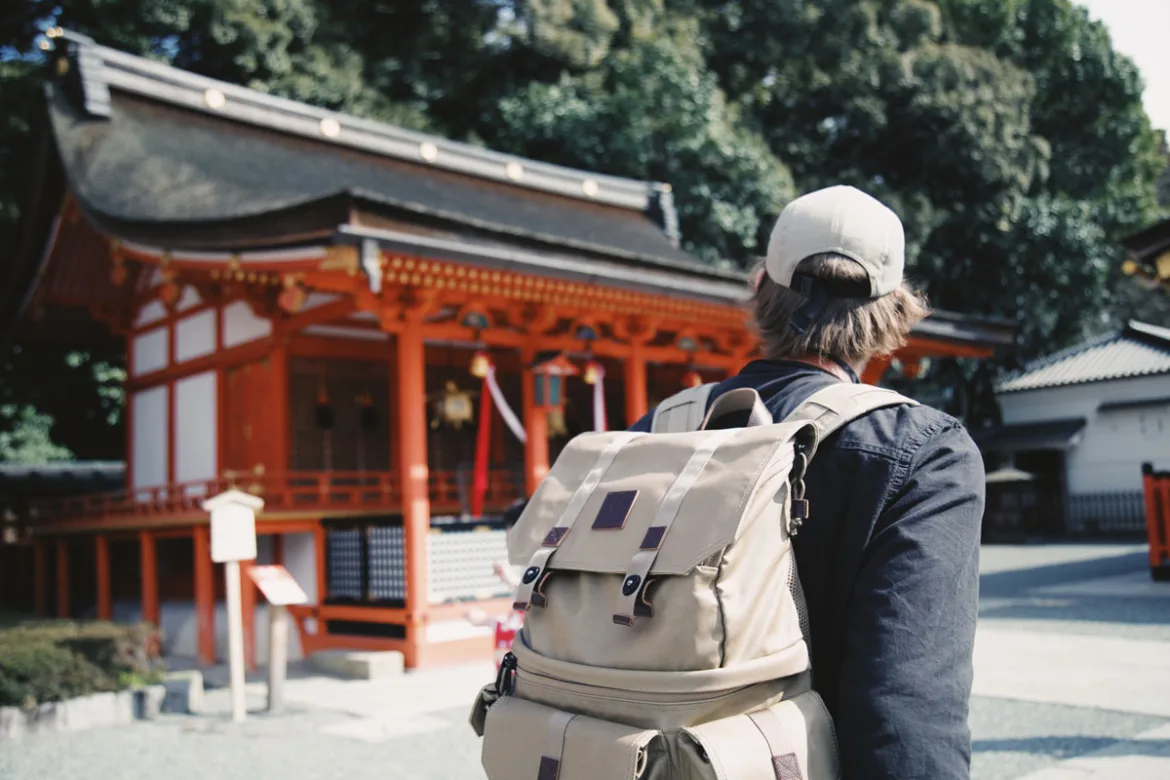
Table of Contents
- Kyoto in 2 Days: A Perfect Itinerary May 16, 2023
- The Ultimate Family Guide to Exploring Tokyo with Kids July 21, 2022
- Top 10 unique experiences in Osaka February 9, 2023
- 25 irresistible gifts for the Japan lover June 29, 2023
- Izakaya – The Heart of Japanese Nightlife and Cuisine March 23, 2023
- Focus on Tradition: Photography Tours in Japan October 11, 2022
Solo travel in Japan is an experience like no other. It’s a chance to grow and learn in ways you never thought possible. When you’re on your own, you’re forced to rely on your own judgment and decision-making skills. It can be scary at first, but it’s also incredibly empowering. You get to create your own itinerary and explore the country at your own pace, without worrying about anyone else’s needs or wants.
But solo travel in Japan isn’t just about independence and freedom. It’s also a chance to immerse yourself in the country’s rich culture. Japan has a unique and fascinating culture, from the traditional temples and shrines to the modern and vibrant pop culture. By interacting with locals, trying new foods, and participating in cultural events and festivals, you get a deeper understanding and appreciation for the country and its people. And who knows, you might even make a few lifelong friends along the way! Solo travel in Japan is an opportunity to broaden your horizons and gain a new perspective on the world, all while having the adventure of a lifetime.
Freedom and Flexibility
One of the best things about solo travel in Japan is the freedom and flexibility it offers. When you’re on your own, you get to set your own schedule and do whatever you want, whenever you want. You’re not tied down to anyone else’s agenda, so you can take your time and really soak in everything that Japan has to offer. Maybe you want to spend an entire day exploring Tokyo’s bustling streets , or perhaps you’d rather escape to a quiet mountain town and relax in a traditional hot spring. Whatever your preferences, solo travel in Japan allows you the time and space to make your own choices and create your own unique experience.
In addition to the freedom of choosing your own itinerary, solo travel in Japan also allows for flexibility in the event that your plans change. Maybe you stumble upon a hidden gem that you didn’t know about before, or perhaps the weather doesn’t cooperate with your original plans. Whatever the reason, when you’re traveling alone, you’re able to adjust your plans on the fly without worrying about inconveniencing anyone else. This kind of flexibility can be a lifesaver, especially in a country like Japan where there’s always something new and exciting to discover around every corner.

Personal Growth
Solo traveling in Japan can be a wonderful opportunity to challenge yourself and step out of your comfort zone. Traveling to a new place can be intimidating, especially when you’re on your own, but it can also be incredibly rewarding. Being in a new environment forces you to adapt and problem-solve, which can be great for building confidence and independence. When you’re traveling alone, you’re also more likely to meet new people and have experiences that you might not have had otherwise. This kind of personal growth can be invaluable and can help you feel more confident and capable in other areas of your life.
One of the best things about solo traveling in Japan is the chance to push yourself in ways you might not have thought possible. Whether it’s navigating the subway system, trying new foods, or communicating in a new language, every new experience can be an opportunity to learn and grow. And the best part is that you get to do it all on your own terms, without anyone else’s expectations or judgment. By stepping out of your comfort zone, you may surprise yourself with how much you’re capable of, and come away from your trip with a newfound sense of confidence and self-assurance.
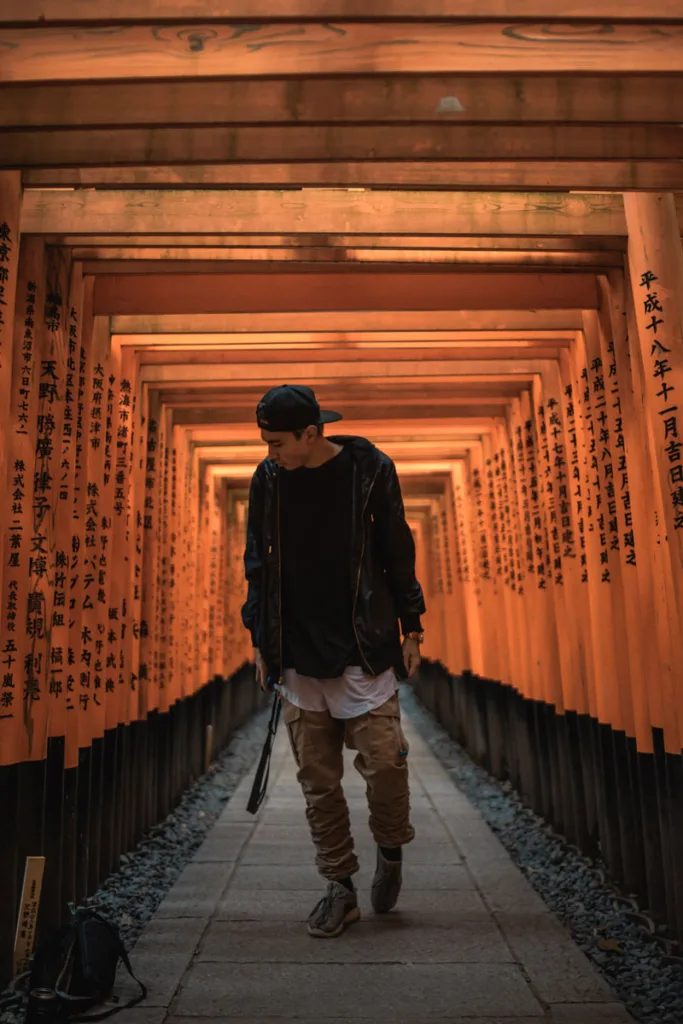
Cultural Immersion
One of the biggest advantages of solo traveling in Japan is the opportunity for cultural immersion. When you’re traveling alone, you have more time and flexibility to explore local neighborhoods and engage with the people and customs of the region. You might find yourself chatting with locals at a street market, practicing your Japanese with a friendly shopkeeper, or sharing a meal with a new friend you met at a hostel. These experiences allow you to gain insight into the daily lives of Japanese people and appreciate the nuances of their culture that might otherwise go unnoticed.
Another way to immerse yourself in local culture is through food. Japan has a rich and diverse culinary scene, with regional specialties and unique ingredients that are worth exploring. When you’re on your own, you can be more adventurous with your food choices and try things that you might not have considered before. Whether it’s slurping down a bowl of ramen at a hole-in-the-wall noodle shop or sampling street food at a festival, there’s always something new and delicious to discover.
Finally, solo traveling in Japan is a great way to participate in cultural events and festivals. From traditional festivals like cherry blossom viewing and the Bon Festival to modern pop culture events like anime conventions and music festivals, Japan has something for everyone. By immersing yourself in these cultural celebrations, you can gain a deeper appreciation for Japan’s unique traditions and learn more about the country’s history and customs. And who knows, you might even make some new friends along the way!
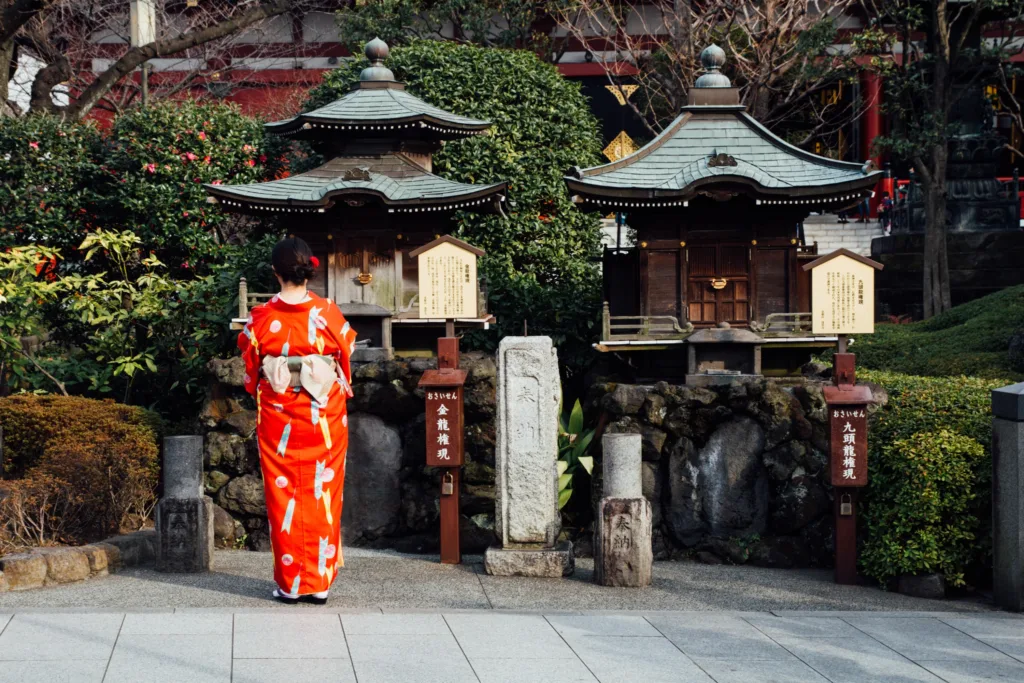
However, when traveling alone, it’s important to prioritize your safety.
Tips for staying safe while solo traveling in Japan
Research your destination.
Researching your destination before traveling solo to Japan is crucial for ensuring a safe and enjoyable trip. Not only does it give you an idea of what to expect, but it also allows you to familiarize yourself with the local customs and laws. It’s important to be aware of cultural differences and etiquette, such as taking off your shoes when entering someone’s home or refraining from speaking loudly on public transportation. Additionally, it’s a good idea to research the specific areas and neighborhoods you plan on visiting to ensure that they are safe and suitable for solo travelers. With a little bit of preparation and research, you can feel more confident and prepared for your trip, and have a more fulfilling experience in Japan.
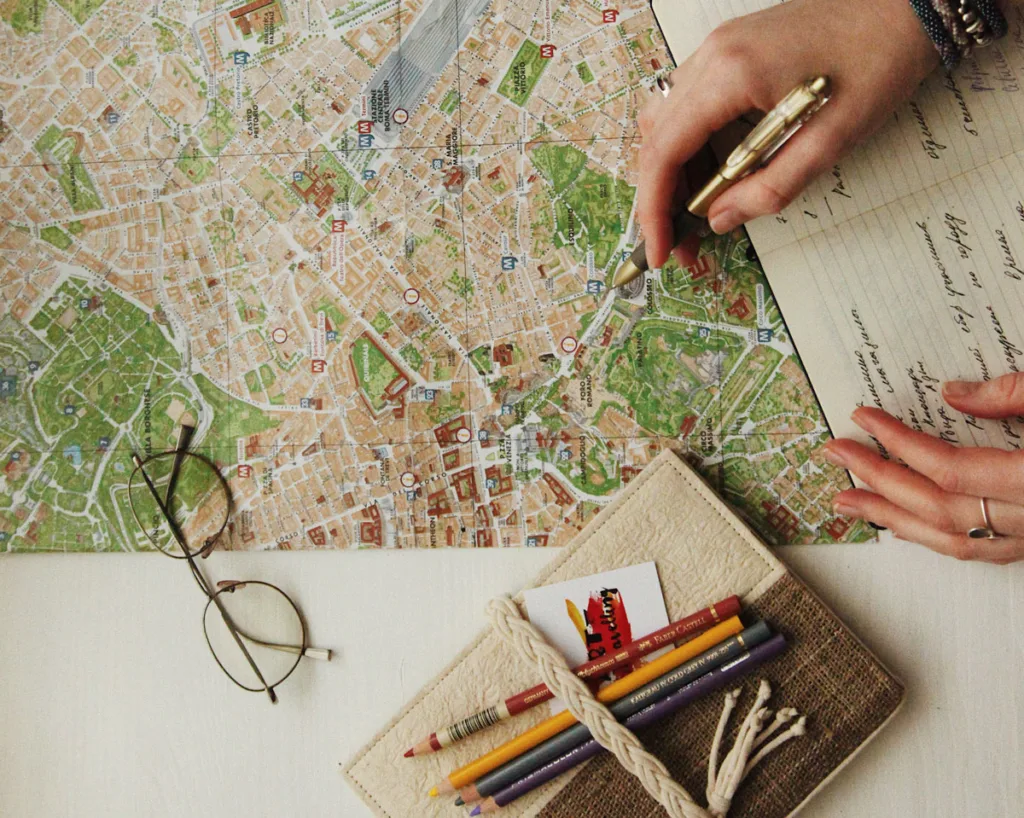
Stay Connected
Staying connected while traveling solo in Japan is important for both safety and peace of mind. By letting family and friends back home know your itinerary and plans, you can ensure that someone knows where you are and can reach out to you in case of an emergency. Additionally, staying connected allows you to share your experiences and stay connected with loved ones even while on the other side of the world. To stay connected in Japan, consider getting a local SIM card or renting a pocket Wi-Fi device. This will allow you to have access to data and stay connected to the internet while on the go, making it easier to navigate and stay in touch with others. With the right tools and communication, you can feel more connected and secure while traveling alone in Japan.

Trust Your Instincts
When traveling solo in Japan, it’s important to trust your instincts and pay attention to your surroundings. If something doesn’t feel right, it’s better to be cautious and remove yourself from the situation. This could mean avoiding a certain area or changing your plans for the day. It’s also a good idea to be aware of potential risks or dangers in the area you are visiting. For example, if you are in a crowded area, be mindful of pickpockets and keep your belongings close to you. By staying aware and listening to your instincts, you can avoid potentially dangerous situations and have a safe and enjoyable trip to Japan.

Popular destinations and activities that are well-suited for solo travelers
Temples and shrines.
Japan is home to numerous temples and shrines, each with its unique history and architecture. Visiting these sites can offer a glimpse into Japan’s rich cultural heritage and provide a peaceful escape from the hustle and bustle of the city.
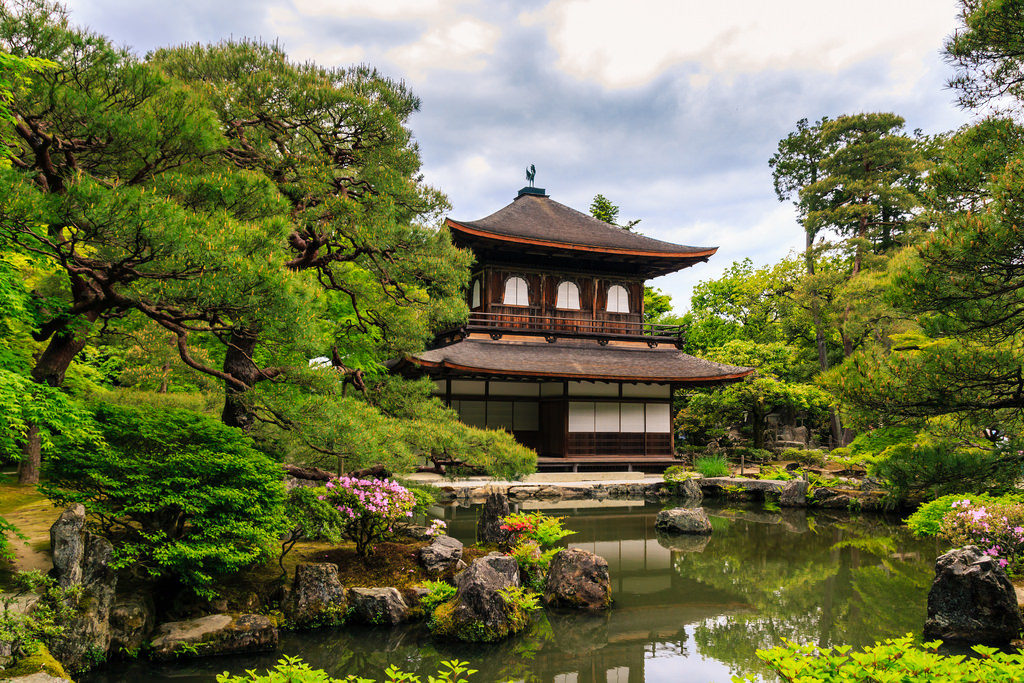
Local Cuisine
Japan is famous for its food, from sushi and ramen to street food and snacks. Trying local cuisine can be an adventure in itself, and solo travelers can enjoy the flexibility of trying new foods without worrying about pleasing anyone else.
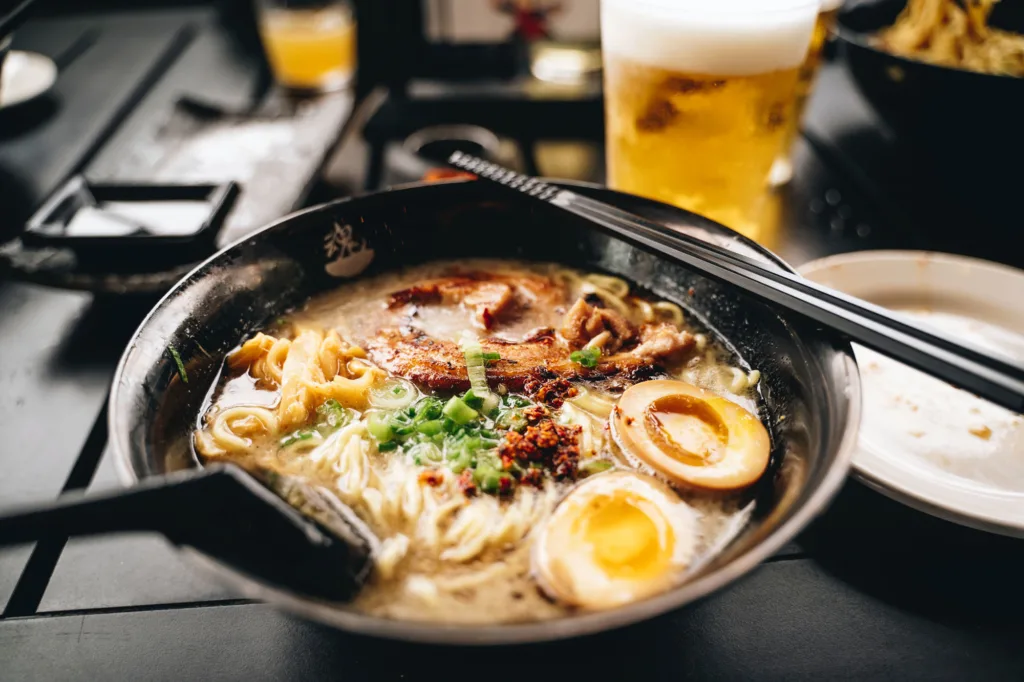
Cultural Festivals
Japan is home to many colorful and exciting cultural festivals throughout the year, including cherry blossom festivals, summer festivals, and New Year’s celebrations. These festivals offer a unique opportunity to experience Japanese culture and mingle with locals.
In conclusion, solo traveling to Japan can be a fulfilling and rewarding experience. With careful planning and an open mind, solo travelers can explore Japan’s rich culture and history, make new friends, and create unforgettable memories.
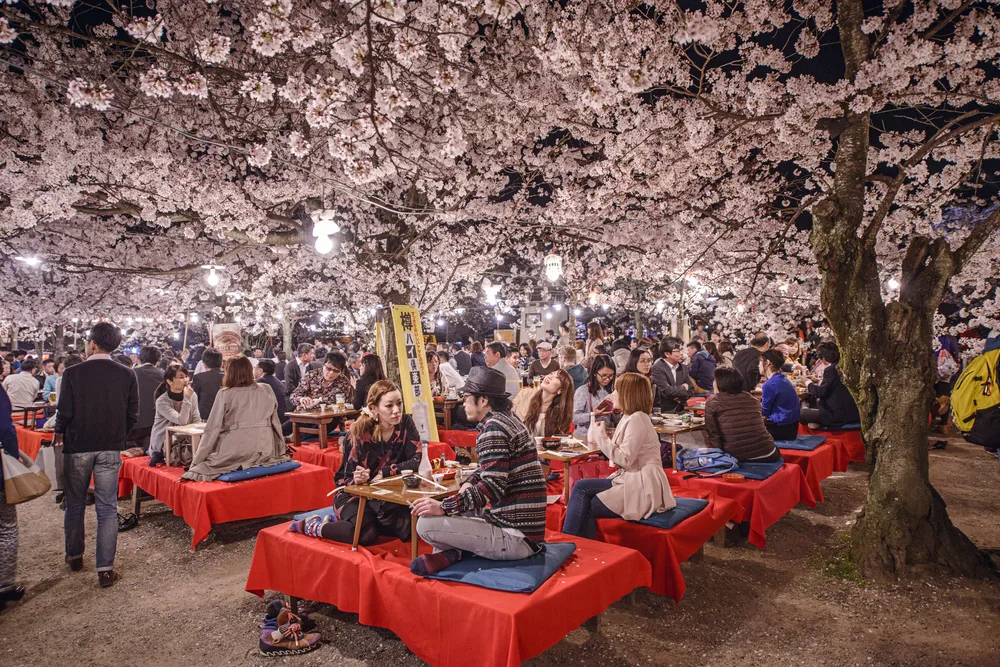
Book recommendations for those interested in solo traveling to Japan:
- “ Lonely Planet Japan ” by Lonely Planet: This guidebook is an excellent resource for solo travelers. It provides comprehensive information on Japan’s history, culture, and top attractions, as well as practical advice on transportation, accommodations, and budgeting.
- “ Tokyo on Foot: Travels in the City’s Most Colorful Neighborhoods ” by Florent Chavouet: This illustrated book provides a unique perspective on Tokyo, with charming drawings and anecdotes of the city’s streets and neighborhoods. It’s a great way to get inspired for your solo trip to Japan.
- “ Zen and Japanese Culture ” by Daisetz Teitaro Suzuki: This book is an excellent introduction to Japanese culture and philosophy, providing insights into Zen Buddhism and its influence on Japanese art, literature, and everyday life. It’s a great way to gain a deeper understanding of the culture you’ll be experiencing on your solo trip.
- “ The Art of Travel ” by Alain de Botton: This book is a philosophical exploration of the pleasures and frustrations of traveling. It offers insights into how to appreciate the beauty of your surroundings, even when things don’t go as planned. It’s an excellent read for anyone embarking on a solo trip to Japan or anywhere else in the world.
- “ Vagabonding: An Uncommon Guide to the Art of Long-Term World Travel ” by Rolf Potts: This book provides practical advice on how to plan and execute a long-term solo trip. It covers topics such as budgeting, packing, and making the most of your time on the road.

Discover the Magic of Solo Travel in Japan
If you’re considering solo travel, Japan is an excellent destination to explore on your own. With its unique culture, delicious cuisine, and stunning natural scenery, Japan offers a wealth of experiences for travelers of all interests. Solo travel in Japan provides the freedom to explore at your own pace, immerse yourself in local culture, and challenge yourself to step out of your comfort zone. It’s an opportunity to grow as a person, build confidence, and create unforgettable memories. So, if you’re ready for an adventure and a chance to discover all that Japan has to offer, consider solo travel to this amazing country . You won’t regret it!
Japanese Tea: Your Key to a Long and Healthy Life
The ultimate family guide to exploring tokyo with kids, you may also like, 25 irresistible gifts for the japan lover, immerse yourself in japan’s zen retreat, kyoto in 2 days: a perfect itinerary, the ultimate guide to exploring naoshima island, japan’s..., the blissful retreat: 10 unique and luxurious ryokans..., discover the magic: 10 dreamy honeymoon experiences in..., izakaya – the heart of japanese nightlife and..., sushi and sashimi – the japanese way, nara in 24 hours: the ultimate one-day itinerary, top 10 unique experiences in osaka, leave a comment cancel reply.
Save my name, email, and website in this browser for the next time I comment.
- Active Adventures
- Beach Escapes
- Bucket-List
- Escape The Crowds
- For First-Timers
- Group Bookings
- Wildlife Trips
- Winter Getaways
- Safari Adventures
- Ambassador Adventures
Trip duration

New and trending
- Our Newest Adventures
- Bestselling Adventures
- Iconic Flash Pack Experiences
- Coming Soon
- Meet Your Travel Experts
- Meet your Pack Leaders
- Don’t be a tourist. Be a Flashpacker.
- The Flash Pack Foundation
How it works
- Payments, deposits & instalments
- Travel Extras
- About Solo Travel
- Careers at Flash Pack
- Partner as a Travel Agent
- Trip terms and conditions
- Safety with Flash Pack
- Flash Pack’s privacy policy
Latest deals
- Your latest travel offers
- Your last chance to book
Insider trips
Sorry no insider trips are available right now, check back soon.
- Feed your inspiration with all the latest stories from our content hub.
Relationships
- Career Tips
Top stories

Friendship Tips

Travel Tips

- See all articles
Favourite Trips
Destinations
Destination Guides
- The ultimate solo travel guide to Japan: Everything you need to know
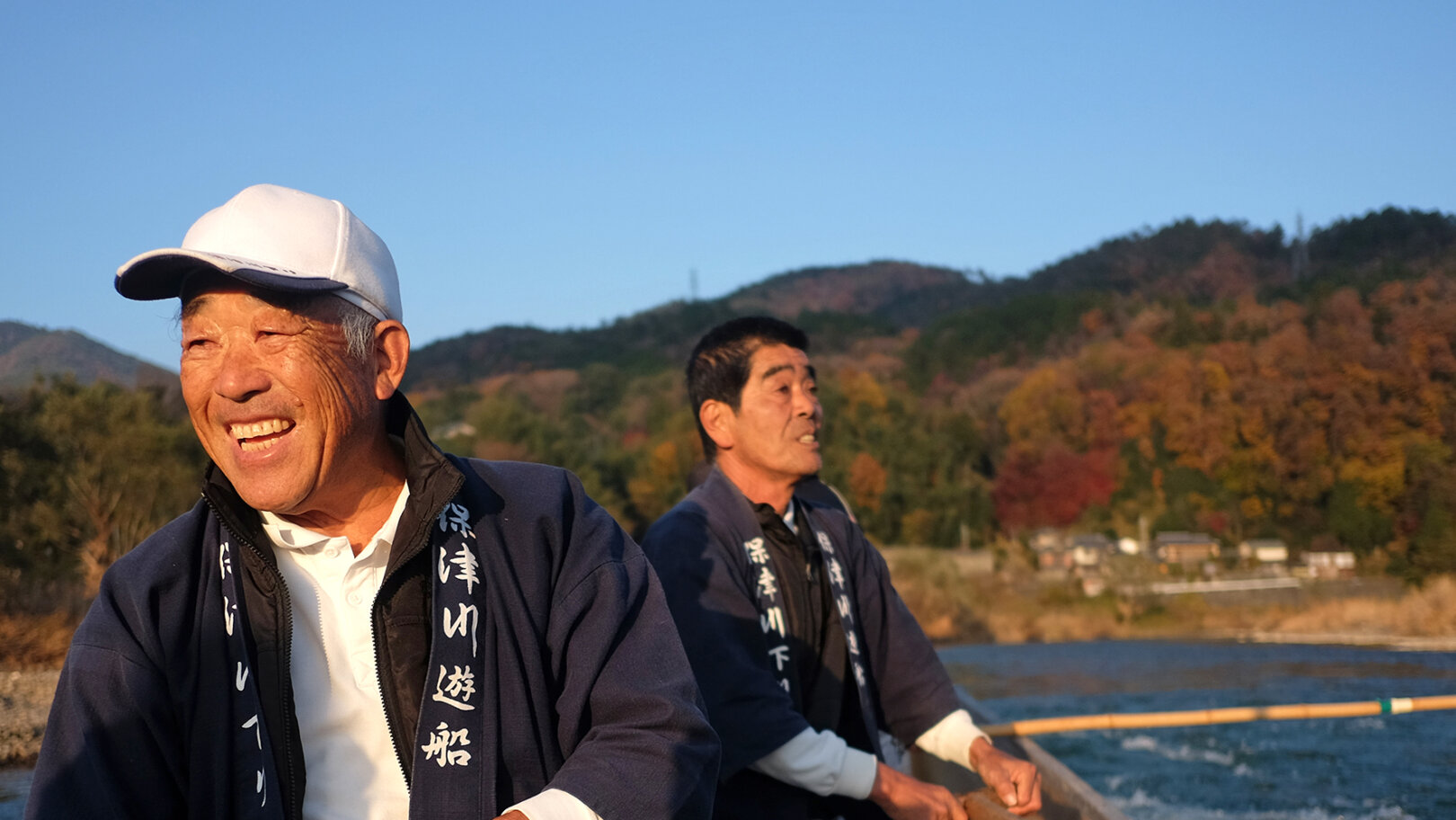
Anna Brech 22nd Oct 2022 10 min read
With its glorious tapestry of remote mountain temples and thriving cityscapes, Japan hits the sweet spot on many a travel bucket list. From rich cultural traditions to dazzling cuisine (give us a fiery miso ramen, any day), this is a country that was made to surprise your senses, making a solo trip to Japan a great option for anyone looking to try travelling alone. Even the travel-weary can’t fail to be charmed by Japan’s fusion of beautiful landscapes and hi-tech hubs that buzz with colour and energy.
Indeed, spending time solo is pretty well ingrained and normalised in Japan. Counterside tables for one are part of the furniture in any restaurant or cafe. But language barriers and cultural nuances can, at times, be hard to navigate entirely alone, so joining a group tour with other like-minded solo travellers, like on Flash Pack ’s Japan: Another World itinerary , can give you that balance of self-sufficient solitude, while taking the hassle out of planning and ensuring those all important bucket list moments are all carefully curated for you. Here’s everything you need to know about group solo travel to Japan .
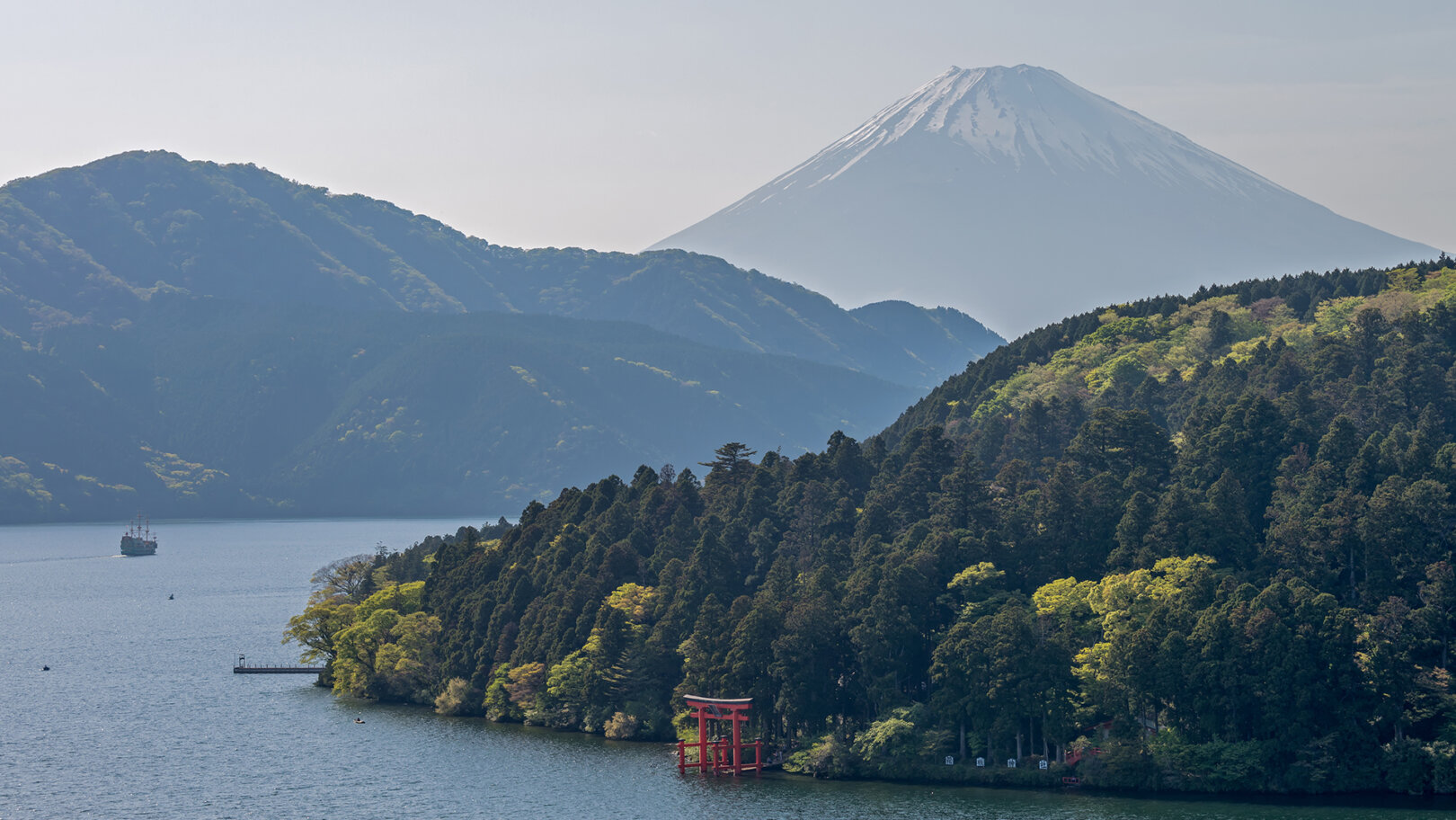
Japan travel facts
While its cities often take the spotlight, 70% of Japan is made up of forest and mountains. There’s over 100 active volcanoes, with its tallest mountain, Mount Fuji, peaking at 3,776 feet. Throughout this island nation, there are also 25 Unesco World Heritage Sites – 20 of which are cultural (like Himeji Castle) and five are natural (like Shiretoko National Park). It’s not all just happening on the main island of Honshu, either; Japan has nearly 7,000 islands to hop around, making it the fourth-largest archipelago in the world. Choose the small island of Ōkunoshima for its population of rabbits (yes, really), or Hokkaido for fresh powder and off-piste skiing in winter.
Is Japan good for solo travel?
Solo travel in Japan is safe and it’s easy to get around thanks to the country’s excellent transport links. It’s also a place where being alone is celebrated. In some countries, you may feel out of place if you go out to eat or drink solo, but not in Japan. It’s so normalised that it’s incorporated into the language: the term ohitorisama (which roughly translates as “party for one”) refers to people living and doing things alone, often reverently so.
Meanwhile, the Japan National Tourism Organisation operates a 24-hour English-speaking helpline that is particularly helpful for solo travellers, providing a great resource of tourism information and help. Want to ease yourself into the experience? Take a look at Flash Pack’s Japan trip for solo travellers , offering 12 days of adventure in the company of a small group of like-minded people.
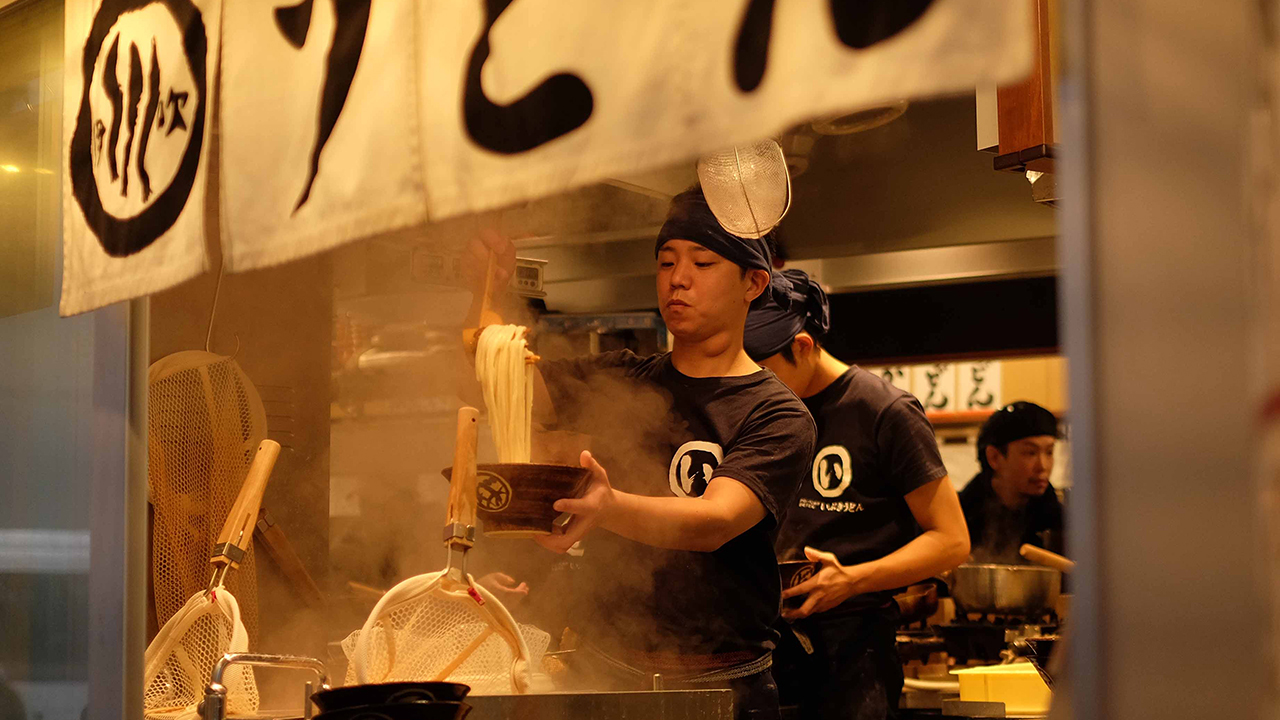
Best places to visit in Japan
Head to one of Japan’s tachinomi (standing bars) to try out kushikatsu (bamboo skewers of deep-fried meat and vegetables), along with delicious edamame and draft beer or sake. Other great street food to try includes okonomiyaki (savoury pancakes filled with grilled squid or pork) and takoyaki (fried octopus-stuffed dumplings). You’re likely to eat your body weight in kitsune udon (Japan’s beloved noodle broth), but for something a little different, try a kappo restaurant – for high-end, multi-course dining, without the formality of its kaiseki cousin.
On a solo holiday to Japan , outdoor pursuits, such as hiking along the Old Hakone Highway, or forest bathing in the bamboo trails of Arashiyama, allow a chance to unwind and appreciate Japan’s spectacular natural landscapes. Onsen hot springs, especially those that are found in remote mountain settings, are a delight. On the other end of the scale, you have the cities: who could resist the neon-bright lights of Osaka by night, or the cafes and ateliers of Tokyo’s arty Nakameguro district?
Finally, Japan is steeped in culture, and its ancient sights are not to be missed: make a beeline for the Great Torii floating shrine on the scenic island of Miyajima, along with the iconic red gates of Fushimi Inari shrine. Kyoto – Japan’s cultural capital – is a treasure trove of photogenic temples and lantern-lit streets.
Where to stay as a solo traveller in Japan
What are the hotels like in Japan? There’s a huge range to choose from on a solo holiday. Whether you’re looking for a boutique city retreat, a futuristic skyscraper or a rustic countryside guesthouse, this is a place that has it all. You’ll find everything from centuries-old rural ryokans with tatami-matt floors, onsite onsen and multi-course kaiseki meals to high-tech hotels in Tokyo. As a solo traveller, you’ll have more flexibility than most, but it’s still worth booking well in advance. Japanese hotels book up fast, especially in the cities and during peak seasons. On a group tour with Flash Pack, you bypass any hotel hassle and typically share a room with another like-minded solo traveller, thereby serving the single supplement. Still want a room of your own? That’s no problem, too.
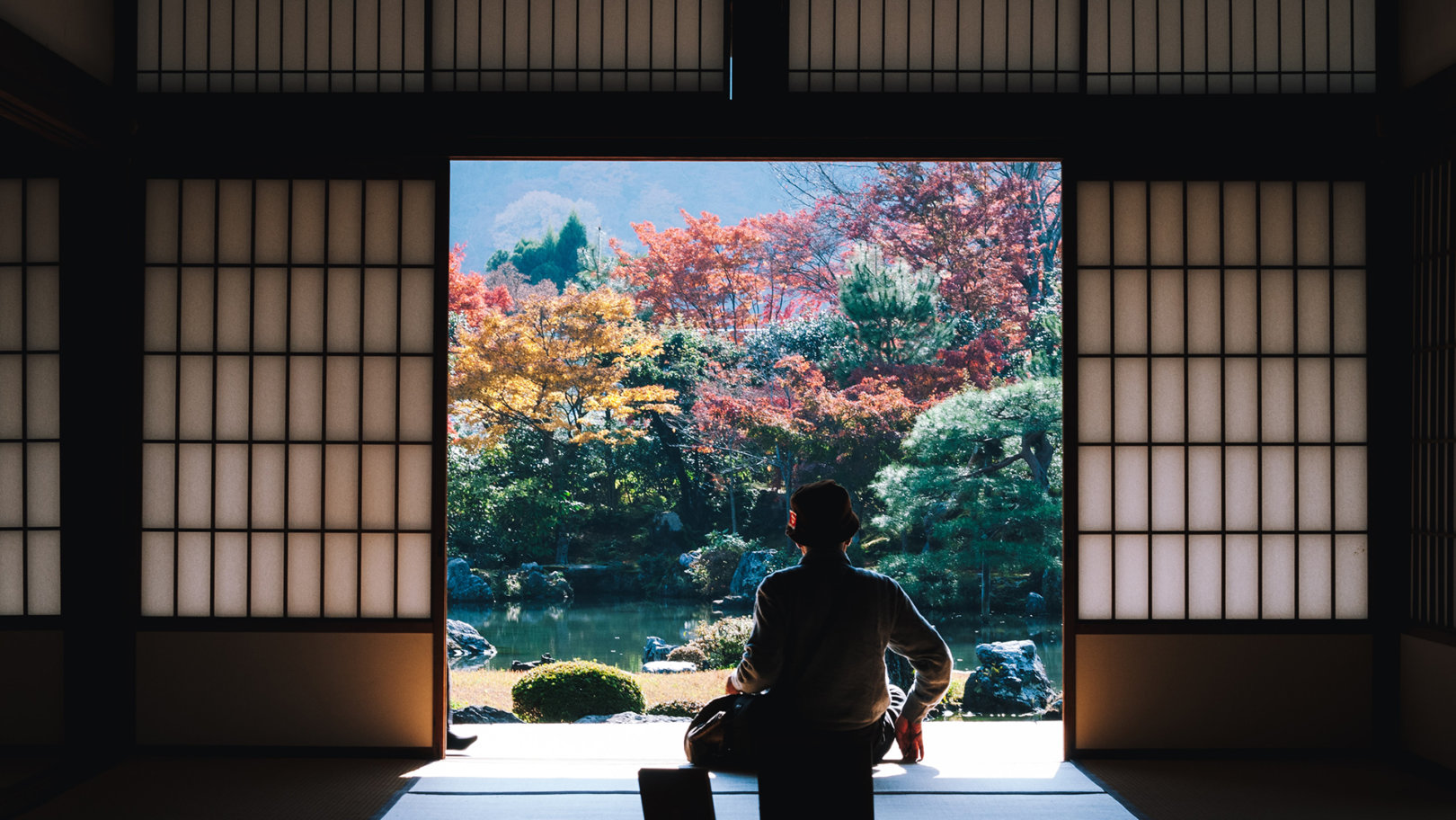
How to get to Japan
The simplest way to kick off your Japan solo travel experience is by flying. A number of airlines (including Japan’s ANA and Nippon Airways) fly nonstop from destinations, including the US, Canada and the UK to Osaka, Tokyo and Nagoya, all on Honshu island.
Another option is by ferry with Japan being accessible by sea. The main routes go from China and Korea, docking up in Osaka and nearby Kobe. Japan is an island country, but there’s a series of rails running from Europe that can eventually lead to Shanghai in China, where it’s possible to catch a ferry onwards.
How to get around Japan
Super-fast shinkansen (bullet trains) are the most popular means of getting around Japan, as well as arguably being the best. Indeed, the rail system is fast, efficient, reliable and one of the cheaper modes of transport. If you’re planning to travel for a month or so by yourself, it’s a good idea to purchase a Japan Rail Pass . These are exclusively available to tourists and offer great discounts on long-distance Japan Rail train journeys for one-, two- or three-week periods.
Japan also has a network of long-distance buses that connect the islands of Honshu, Shikoku and Kyushu. Another option is renting a car, which gives a bit more access to some of the national parks and nature-based attractions. Or ferries and domestic flights are easy to book. One of the biggest benefits of travelling with Flash Pack is that all internal travel is covered and planned ahead of time for you, whisking you from A to B without the hassle of organising transfers yourself.
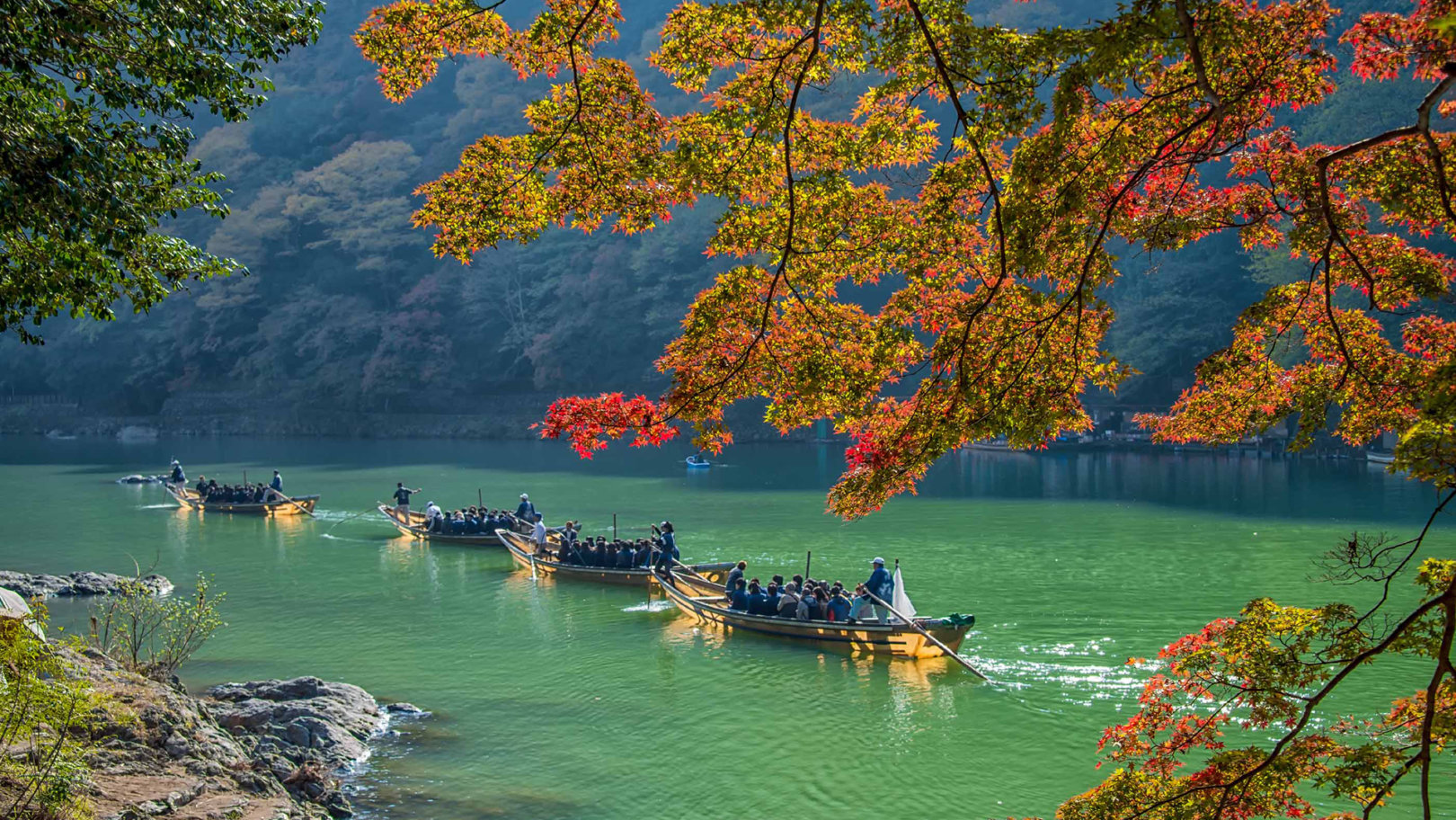
Best time to visit Japan
This really depends on what you’re looking for on a solo trip to Japan . Spring (March to May) is a beautiful time for seeing the famous sakura (cherry blossoms) and is peak time for travellers, though the weather is notoriously unpredictable, ranging from 4-18°C. Travelling during October and November is a great time to witness Japan’s koyo (autumn colours), with maple leaves turning fiery red and temperatures between 10-21°C.
Summers are hot and humid (usually 21-32°C) and can be a better time for hiking at higher altitudes in the southern region of Kansai on Honshu island, while being shaded under canopies of leafy green trees. Winter, meanwhile, is cold, coming in at sometimes sub-zero temperatures, with snow settling and Japan becoming a skiing destination – especially on Hokkaido.
Japan travel itineraries
Between the ancient Buddhist temples and futuristic cities, the mountainous hiking ranges and wistful winding rivers, there’s a lot that can be seen and experienced in Japan. Flash Pack’s Another World trip takes care of everything. Culture, cuisine and adventurous activities are all packed into the 12-day itinerary, with space for socialising and solitude between the unique activities. Land in Osaka to check out Japan’s foodie city (home to Wagyu beef) before learning about the history of Hiroshima and visiting a floating shrine on the little island of Miyajima. From here, there’ll be a temple stay and onsen bathing in Kyoto with a tea ceremony and geisha-led dinner, plus a ramen masterclass, sumo wrestling, sake, sushi and more throughout the rest of the days.
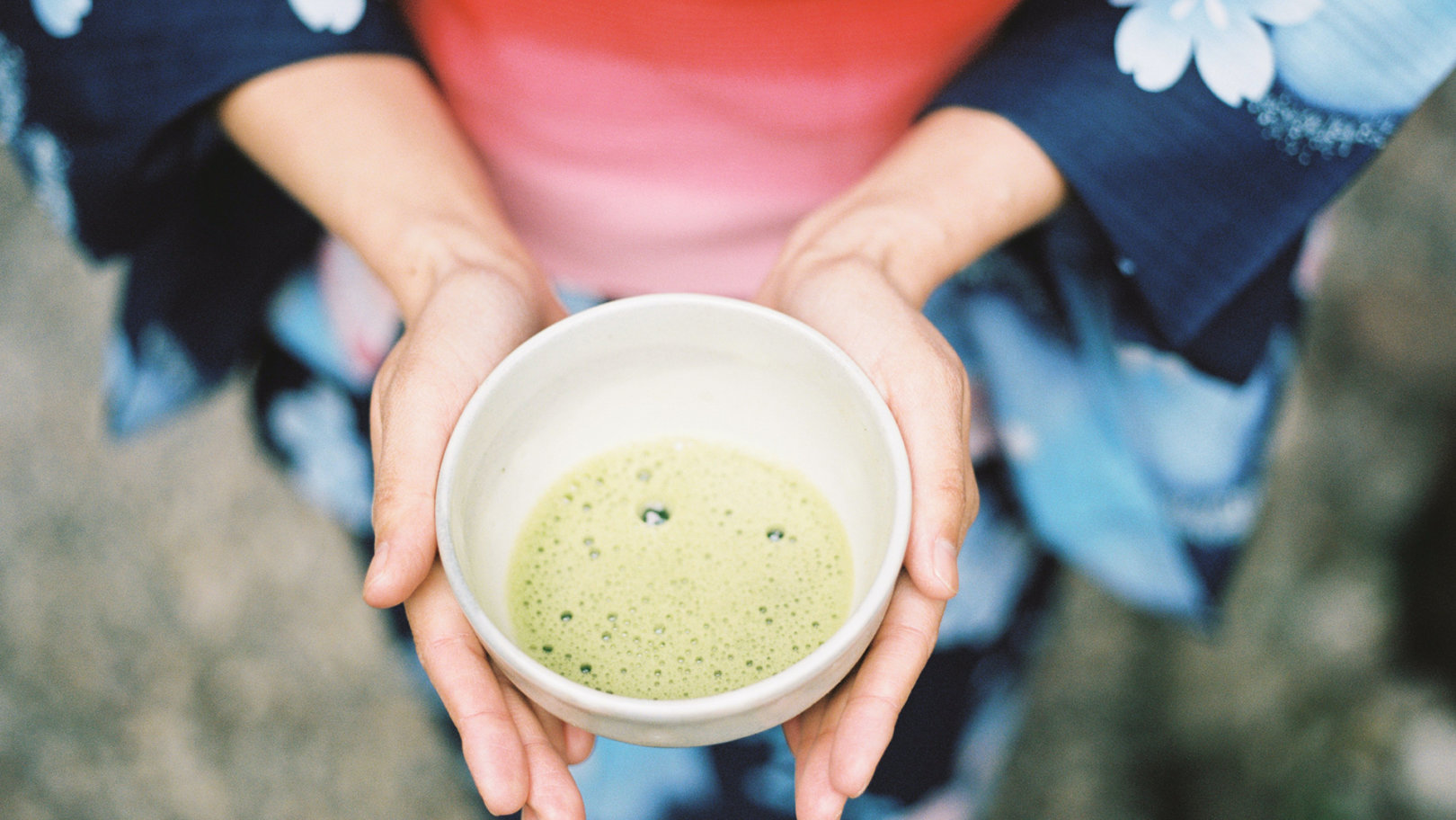
What to pack for solo travel in Japan
In short, it’s best to pack light for solo travel in Japan . Hopping on and off high-speed trains – which often have limited luggage storage – means a backpack or lightweight soft-shell wheeled suitcase is best. Inside, pack clothing to cover all climatic bases: lots of light layers, cotton tees, long-sleeved tops, light jackets and thin jumpers. Japan is still a cash-based economy in some places, so it’s good to have some Japanese yen handy, along with an extra credit card.
Solo travel advice for Japan
Japan, with its vast array of spiritual sites and serene nature trails, is the perfect place to regroup and reflect as a solo traveller. In almost every city you’ll find traditional landscaped gardens once used by Japan’s lords and leaders as a prime location for dwelling and dreaming.
Away from the hubbub, make a beeline for remote temples, forest-trailed mountains or islands peppered with picturesque rivers and castles. Ethereal waterfalls, vast flower-filled parks and striking alpine routes are also yours to explore. And, of course, Japan has a long tradition of onsen hot-spring bathing that is the very definition of solitude, often connected to classic Japanese ryokan (inns).
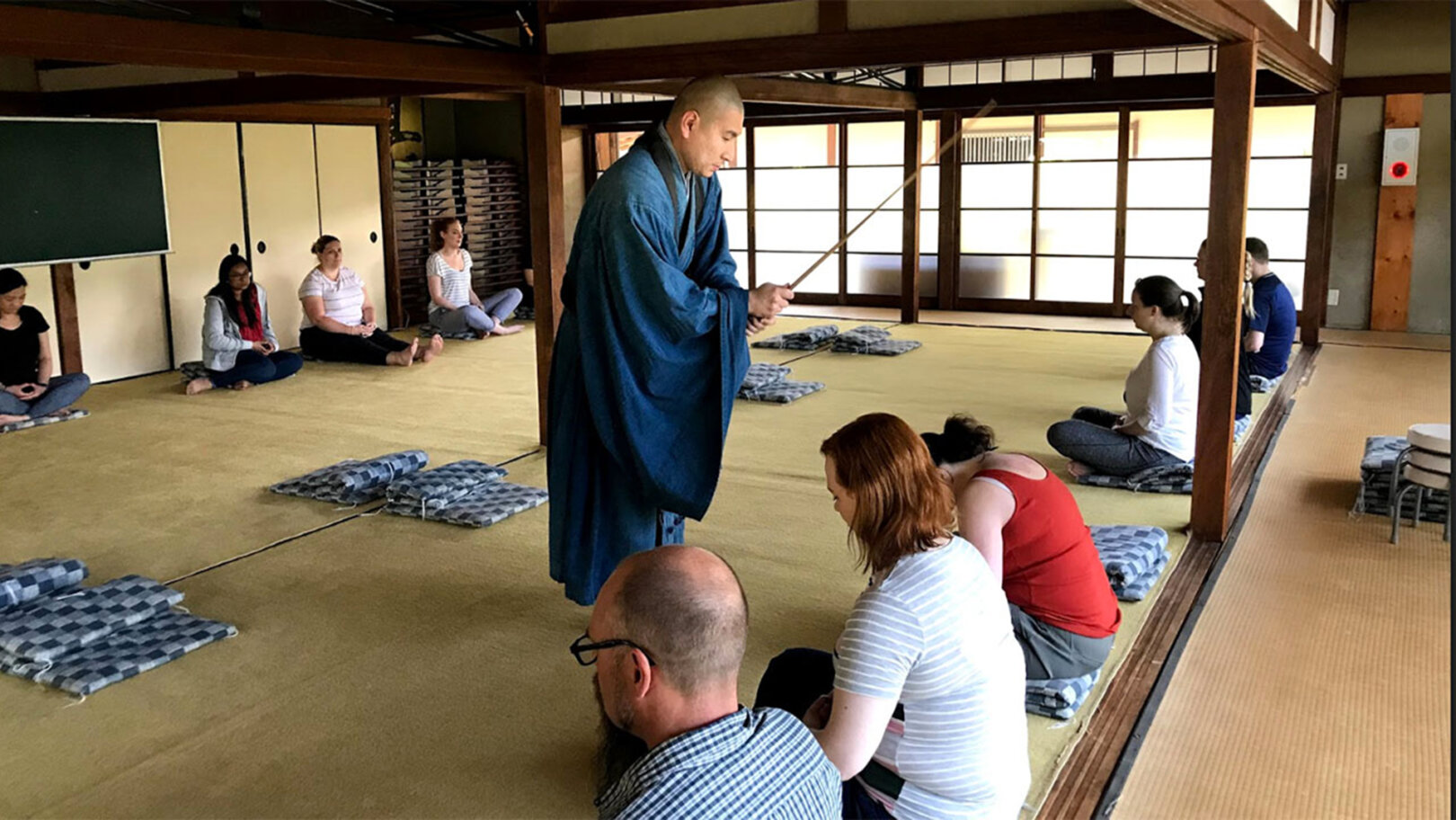
Is it safe to travel solo in Japan?
Thousands of visitors experience solo travel to Japan every year and most trips are trouble-free. However, do check out the Foreign and Commonwealth Office (UK), the Department of State Travel Advisories (US) or your country’s local government guidelines for the latest advice before travelling. Once there, follow local advice and be aware of your surroundings and belongings at all times.
Solo travel in Japan is all the more enticing thanks to its excellent safety record and low crime rates. Travelling solo is particularly normalised and catered for, including women-only spaces in spas or train carriages. For extra peace of mind, it’s always worth considering travelling with a group of other solo travellers.
Ready for your next adventure? Try group solo travel to Japan with Flash Pack – designed exclusively for people in their 30s and 40s, seeking the independence of solo travel within the safety of a group.
A cool 98% of Flashpackers arrive solo to join our group adventures . So, you’ll be in good company – whether a first time solo traveller or a seasoned pro looking for like-minded new friends.
Images: Flash Pack
The best places to go in April: Our top travel picks for a solo holiday
By Nina Zietman
FLASH PACK STORIES
Your latest travel inspiration

The magic of work friendships: Lauren and Emma
These two forged a deep workplace connection – despite living 3,000 miles apart.
The Flash Pack team 17th April 2024 10 min read
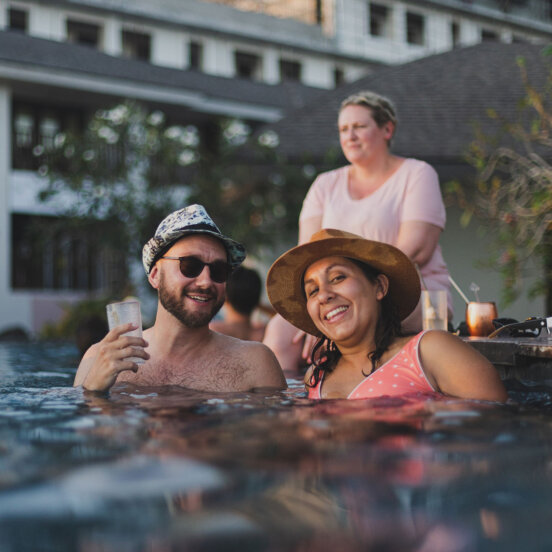
Find your people: why friendship could be key to better mental health
Strong, loyal friendships are a source of lifetime happiness and health – and they become more important as we age. Here’s why.
Anna Brech 4th April 2024 10 min read
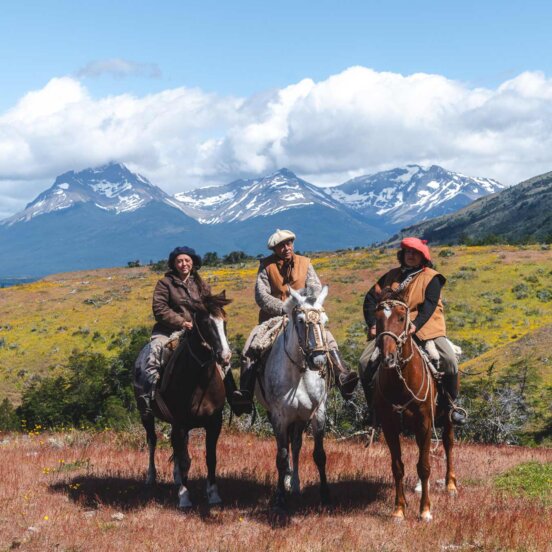
The ultimate solo travel guide to Chile: Everything you need to know
Want to travel solo in Chile? Discover everything about heading to Chile as a solo traveller including top destinations and safety tips.
Amy Swales 4th April 2024 10 min read

Solo hiking: Everything you need to know
Let loose in the wild outdoors, in a group or solo, with these top tips for hiking abroad.
Charley Ross 3rd April 2024 10 min read
Subscribe to our newsletter
Sign up to our newsletter.
Hear about our new adventures before anyone else
Hear about our new adventures before anyone else.
Be the first to hear about exclusive Flash Pack offers.
Access exciting competitions.
Receive weekly inspiration and travel stories from solos just like you.
You are browsing our US website.
Please choose your current location below:
You are browsing our UK website.
Niigata's Murakami City: Enjoy Fun Events, Sightseeing, and Local Cuisine!
We use cookies to improve our contents. Check the detail and update your settings here .
We use cookies to improve our services.
For more details, please click here .

- Change setting
- Food & Drink
- Accommodation
- Things To Do
- All the categories
Transportation
- Weather & Seasons
- Long-Term Stay
- Travel Tips
- Event Tickets
- About MATCHA
- Company Profile
- MATCHA Special Features
Solo Travel In Japan - Tips On Where To Go, Things To Do, And Safety

Traveling alone in Japan is one of the best ways to encounter the country's culture, food, and nature. From Kyoto to Kanazawa, there are many solo traveler-friendly spots with memories waiting to be made. Learn about how to plan your trip and safety tips for a great vacation.
Kyoto, Japan
A Guide to Traveling Alone in Japan

Streets of Gion, Kyoto. Photo by Pixta Solo travel offers freedom, convenience, and a lot to experience--all for yourself. Japan is one of the best places to explore solo for its historic landmarks, delicious food, and gorgeous nature in a safe environment .
However, traveling alone may be difficult even imagine, from what to do to to how lonely you may feel. This article covers easy-to-navigate destinations in Japan, activities, safety precautions, and practical tips for solo travelers.
Solo Trips in Japan
Recommended places.
1. Kyoto 2. Osaka 3. Kanazawa 4. Matsumoto 5. Seto Inland Sea
Suggested Activities
6. Temples and Shrines 7. Museums 8. Workshops and Tours 9. Shopping 10. Restaurants and Cafes
11. Things to Pack 12. Where to Stay 13. Safety Tips 14. Advice During the Trip
Kyoto - Lose Yourself in Deep Traditions

Photo by Pixta Temple and museum-filled Kyoto is an excellent choice for solo visitors. This ancient capital contains so much to see and do, from shrines to food stall streets and charming cafes. All types of travelers will easily find enough to keep their itineraries full for several days or longer.
Kyoto contains a mix of popular and lesser-known destinations. For example, after a morning at Kiyomizudera Temple or Kinkakuji , explore by the Kamogawa River Delta or see the Kyoto Confectionery Museum to learn about traditional sweets.

Picture from Kyoto's Gion Matsuri - Highlights Of Japan's Greatest Festival Festivals are held year-round in Kyoto, like the Gion Festival in July and Daimonji Festival in August, where giant characters are burned onto the hill.
Kyoto is renowned for its stunning cherry blossoms in spring and fall foliage, so you can enjoy the seasons as well.

Picture from Kyoto's Kitchen Nishiki Market - Top 10 Things To Try And Where To Go The food in Kyoto exquisite and meant to be savored--with fresh vegetables, yuba (tofu skin), and a huge selection of matcha and Japanese sweets, being alone means you can truly appreciate your meals and snacking here.
Getting Around Kyoto
Kyoto is serviced by JR, private railways, a municipal subway, and numerous bus lines and companies. Due to this, it is very easy to get around Kyoto's city center.
Use budget tickets for the bus and combination passes for the bus and subway to save money on transportation. They come in one and two-day options and make visiting further-out landmarks like Kinkakuji Temple easier.
Some buses run in Kyoto for limited hours, so plan in advance. Try to avoid riding in the evenings and nights, when they are less frequent or may stop service.
Kyoto is also a very walkable city. In particular, the Gion, Higashiyama, and Kawaramachi areas are very pleasant to explore on foot.
↑ Return to the top of article.

Osaka - Encounter Citylife in Japan

Photo by Pixta Osaka is an ideal city to explore by yourself, famous for its food and casual, fun atmosphere. Its large size and amenities will give travelers a city experience without the dizzying complexities of Tokyo.
The locals here are also known for being social, giving solo travelers more chances for interaction and conversation. Spend at least two days in Osaka to see the sights and try local food.

Picture from Everything You Need To Know About Osaka Castle, The Symbol Of Osaka! Like Kyoto, Osaka has its share of major landmarks, like Osaka Castle and Dotonbori , as well as lesser-known, hidden gems.
Adventure to slightly further-out areas, like the Open Air Museum of Old Japanese Farm Houses , an outdoor museum with traditional homes, or spend an afternoon browsing at the National Museum of Art, Osaka in the city center. For a quieter neighborhood, head to Nakazakicho for handmade crafts and quaint cafes.

Picture from Top 5 Local Osaka Foods You Should Try In Dotonbori Osaka is also known as Japan's kitchen --don't hold back when it comes to trying local foods, like takoyaki, okonomiyaki, and kushi katsu (deep-fried, skewered vegetables and ingredients). There are many food stalls and casual restaurants you will feel comfortable at even if you're alone.
If you're a fan of Osaka food, there are many unique souvenirs and snacks you can take back with you , from takoyaki-infused Pringles to soy sauce-flavored cookies.
Getting Around Osaka
As the largest metropolis in western Japan, Osaka is very easy to navigate; JR trains, private railways, and the Osaka Metro link the city, major sightseeing and entertainment areas, and its suburban areas.
To get to areas like Shinsaibashi, Namba, and Osaka Castle, it is most convenient to use the metro. Be sure to purchase a one-day metro and bus pass (800 yen on weekdays, 600 yen on weekends) if you plan to use the subway to visit multiple spots in one day.

Kanazawa - Enjoy Art and History in a Sophisticated City

Picture from Ishikawa Travel Guide: Must-Visit Places, Fine Food, And Activities Kanazawa is an elegant city where the modern fuses seamlessly with the past, located in Japan's Hokuriku area on the eastern coast. Home to gardens, castles, and traditional townscape from the Edo era, Kanazawa has a similar atmosphere to that of Kyoto. You can also enjoy great shopping and fresh seafood, architecture, and public art . Spend at least one day here at the museums and historical areas.

Photo by Pixta ( Ishikawa Travel Guide: Must-Visit Places, Fine Food, And Activities) The Edo era Kenrokuen (above), one of Japan's most prominent traditional gardens, the Higashi Chaya district with a classic tea house townscape, and the 21st Century Museum of Contemporary Art are major destinations that will delight visitors.
Kanazawa is also home to traditional samurai neighborhood you can stroll through, and Omicho Market , a seafood market where you can try the local specialty of kaisen don (fresh seafood piled high on rice). For cultural experiences, head to the Kanazawa Noh Museum and be sure to see Kanazawa Castle .

Thoroughly explore the Higashi Chaya area, which has a number of traditional sweets shops. Chayu sells various decadent desserts, such as soy sauce-flavored gelato . CAFE DUMBO , located near the 21st Century Museum of Contemporary Art offers lattes and baked goods ideal for breakfast or an afternoon pick-me-up.

Photo by Pixta Another thing you will notice is Kanazawa's emphasis on gold , as the city's Japanese name includes the character for this precious metal. The city sell's gold-plated keychains and even soft serve topped with gold flakes .
Getting Around Kanazawa
Main sightseeing spots in Kanazawa are located within around two kilometers of JR Kanazawa Station, so it is recommended to use a bus or walk when exploring .
Another great option is renting a bicycle , which costs just around 200 yen for a day of use.

Matsumoto - Explore a Castle Town in the Mountains

Matsumoto , located in nature-filled Nagano Prefecture, is a classic castle town in Japan that charms all who visit. Most known for its castle, a dramatic backdrop of the Japanese Alps, and delicious buckwheat noodles, solo visitors will feel at home adventuring in the city and nature here for two days.
Matsumoto Castle is around a 20-minute walk from Matsumoto Station, surrounded by a moat and park. A designated national treasure, this castle has one of the oldest remaining main keeps in Japan, constructed around the 17th century. The view from the keep reveals the city and the mountains.

Photo by Pixta After a castle visit, walk around the cobblestone roads of Nakamachi and Nawate to find small shops, cafes, and eateries.
Soba (buckwheat noodles) is a prefecture specialty, so be head to one of the many restaurants offering this delicacy. Other foods to look for is oyaki , a grilled wheat bun filled with ingredients of all types.

The exterior of the Matsumoto City Museum of Art. Photo by Pixta As the hometown of acclaimed artist Yayoi Kusama , the Matsumoto City Museum of Art boasts a permanent collection of her colorful and eccentric pieces. The exterior of the museum is also adorned with Kusama's works. The museum also collaborated with the city to make the Town Sneaker, a bus covered with Kusama-inspired polka dots.

Picture from Nagano Travel Guide: Sightseeing, Ski Resorts, Local Food And More! As Matsumoto is so close to the mountains, it is easy to take a day trip to neighboring areas for hikes and nature exploration. Kamikochi (above) is a particularly famous highland resort area with trails.
For something different, visit the Daio Wasabi Farm , just outside of Matsumoto, where you can see this indispensable crop being grown, harvested, and learn about its history. There are also restaurants on the grounds offering dishes with farm-fresh wasabi, including horse radish-topped soba noodles and even wasabi-flavored sweets.
Getting Around Matsumoto
While the castle area of Matsumoto is walkable, the art museum and other further-out sightseeing areas may require the use of a bus. From JR Matsumoto Station, it is around a 15 to 20-minute walk to Matsumoto Castle. The Town Sneaker, the city bus, runs at 30-minute intervals (20 minutes on weekends and holidays) and goes to areas like the castle and Nakamachi. The Town Sneaker has a 1-day pass that you can use for unlimited rides.
Bicycle is also another convenient way of getting around. Free rental bikes are available around the city and can be used if you plan and time it well. (Please note that the bikes may be all rented out on weekends; see the official Japanese website for details).

Seto Inland Sea - Island Hop Around Art and Relish Slow Life

Picture from Stunning Art! Setouchi Triennale 2019 - Highlights, Access, And Ticket Information Home to the Setouchi Triennale , the Seto Inland Sea and its tiny islands are another spot ideal for solo travel. Surrounded by Shikoku and the southern coasts of Hiroshima, Okayama, and Hyogo prefectures, this is a remote area where the charms of rural Japan shine through. Plan a couple of days for island hopping and an extra day for exploring the surrounding coastal areas.

Photo by Pixta Naoshima , Japan's art island, is just one of the many islands with unique exhibits built into the townscape and nature here; visitors can also visit Teshima, Shodoshima, Megijima, and other areas filled with museums and visual surprises.
For example, Teshima is home to the Teshima Art Museum , known for its innovative architecture and thought-provoking works. Animal lovers should head to Ogishima , one of Japan's cat islands.

Picture from A Gorgeous Sunset! 5 Ways To Enjoy Chichibugahama Beach In Kagawa After island hopping, there is plenty to do on the coast of Kagawa Prefecture ; be sure to make time to visit Takamatsu and Mitoyo, in particular.
In Takamatsu, you can visit Ritsurin Garden and try freshly-made udon noodles by Takamatsu Station. Mitoyo is famous for Chichibugahama Beach, which has one of the best sunsets in the country.
Getting Around the Seto Inland Sea
The main form of transportation around the Seto Inland Sea and its islands is ferry . For navigating the islands themselves, be sure to rent a bicycle --preferably an electric-powered one, as there can be hilly roads. For spots on Shikoku, trains are available, but they run fairly infrequently, so be sure to look up schedules in advance.

Temples and Shrines

Picture from Bring Home A Souvenir Fox From Kyoto's Fushimi Inari Shrine! Buddhist temples and Shinto shrines are found in every prefecture of Japan, and exploring them by yourself allows you to take the time to relax and soak in the serene, otherworldly atmosphere present at so many.
Please note that you do not have to be Buddhist or consider yourself spiritual to visit or see the grounds. Anyone visit a shrine and participate in traditional customs, like making an offering or pulling an omikuji (paper fortune). You can also buy little good luck charms called omamori, which are unique to the temple or shrine you bought them from.
If you plan on visiting many temples and shrines, try goshuin , or stamp collecting. Each shrine and temple has its own signature calligraphy that a priest will draw for you.
Kyoto is known for its famous temples and shrines, like Kinkakuji , Kiyomizudera , and Kodaiji . However, as mentioned above, they are found everywhere in Japan. Osaka is famous for its Tenjin Shrine, and Kanazawa has Myoryuji Temple , which dates back to the 16th century.
Near Matsumoto Castle is the quiet Yohashira Shrine , and there are shrines and temples scattered about in the Seto area, like the bridge-only accessible Tsushima Shrine .

How to Properly Pay Respects at a Japanese Shrine

Ueno / Asakusa / Akihabara
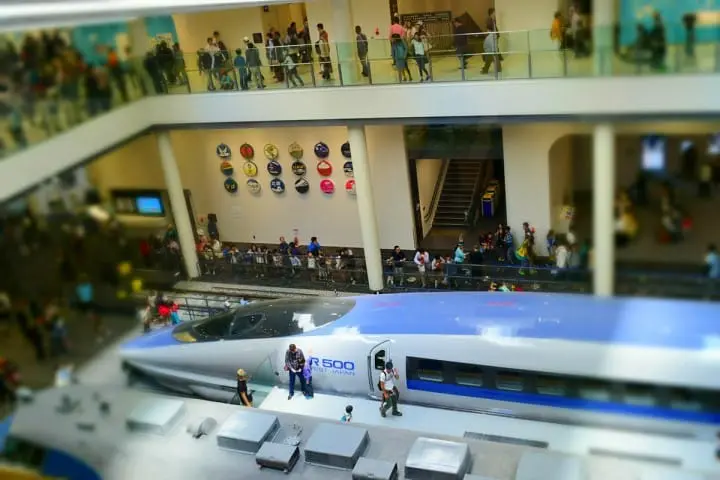
Museums are not an activity exclusive to Japan, but there are many unique facilities to be enjoyed here. They are very easy to visit alone, and you will likely be able to absorb more knowledge, too.
In Kyoto , be sure to see the Kyoto Railway Museum , where you can learn about Shinkansen and the history of the railroads in Japan. Other notable facilities are the International Manga Museum and the Kyoto Kyocera Art Museum .
Osaka has many museums that will fit different interests. For a cultured experience, try the National Museum of Art, Osaka . For more background on the city's development, head to the Osaka Museum of History .
For Kanazawa , the 21st Century Museum of Contemporary Art is popular and has a great permanent collection and interesting seasonal works. The Kanazawa Noh Museum will be the perfect entertainment for those interested in traditional performing arts.
In Matsumoto , the Matsumoto City Art Museum with its special Yayoi Kusama exhibition should not be missed. There is also the Japan Ukiyo-e Museum , which boasts the largest private collection of woodblock prints in the world.
As the site of the Seto Triennale, the Seto Inland Sea area is renowned for its art museums . Must-sees are the Ando Museum and Chichu Art Museum on Naoshima. For something different, try Yokai Art Museum for a fun look at Japanese folklore.
Workshops and Tours

Joining a workshop or tour allows you to stay social and immerse yourself in activities. Each region of Japan has different options available, from food-centered to arts and crafts. Below are examples of activities that you can try; many have English support.
In Kyoto, visitors can learn about and taste high-quality matcha and green tea at Ippodo's Main Store . The Osaka Museum of Housing and Living holds periodic workshops for making origami and traditional crafts and toys.
In Kanazawa, the Kanazawa Noh Museum allows visitors to try on Noh performer's garments for free. For information on workshops and tours, ask your lodging or inquire at city information centers.
Soba Takagi in Matsumoto is close to the castle and offers noodle-making workshops. A reservation made at least one day in advance is required, which can be made through this website .
The compact Seto Sea area has many workshops. Major islands like Naoshima, Teshima, and Shodoshima are more likely to offer activities for arts and traditional crafts. On Kagawa Prefecture, those seeking outdoor activities can try sea kayaking and SUP . An intensive 2-day udon-making experience at Udon House is something unique to try for those interested in Japanese cuisine.
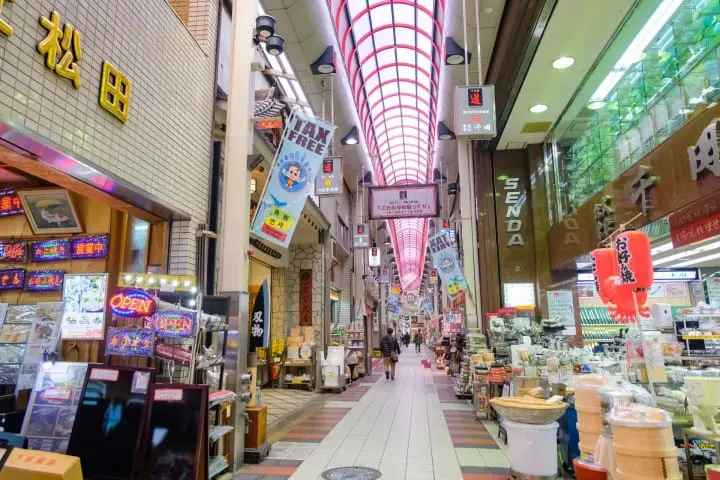
Shopping options in Japan are endless. Stores and complexes are usually concentrated in or near train stations and sightseeing areas.
Be sure to wander down shotengai , or traditional shopping streets will food stalls and small, individual shops that locals often frequent. These areas are great for snacks and finding unique souvenirs.
For a taste of common stores, try 100-yen shops like Daiso, and LOFT , a national-chain department store.
Major stations and sightseeing spots will also have individual shops selling regional sweets and snacks to try. There is an endless amount of browsing and shopping you can do to match your budget.

10 Most Popular Goods From 100 Yen Stores - Shopping And Souvenir Guide

Shopping At A Shotengai - Enjoy Local Food And Looking For Souvenirs!
Restaurants and Cafes

Solo dining in Japan is seen relatively often. Although many men eat out alone, especially on weekdays, women also dine solo frequently. Single travelers do not have to feel uncomfortable enjoying a meal by themselves. In fact, restaurants and cafes are small in general , with counter seats and narrow tables, better suited for smaller parties.
For those not used to dining alone, try a cafe first . Even on weekends or in evenings, you will notice many people enjoying coffee and dessert by themselves. Both chain and independent shops also offer food in many cases, so you can try breakfast or lunch.
During dinner hours on weekdays, you will likely see solo diners--often people on their way home from work. Weekends and public holidays tend to bring out families and friend groups; if you feel less comfortable being alone, try to go to restaurants with counter seats or small tables on these days. Conveyor belt sushi is an ideal and budget-friendly option.
For non-restaurant food options, try convenience stores or supermarkets for pre-made meals and snacks. If you are in a sightseeing area or attending a festival, take advantage of the food stalls.

7 Foods You Must Try When In Japan

Convenience Stores in Japan: Top 3 Chains, Services, and Features
Things to Pack

Items to pack on a solo trip depend on your length of stay and destinations. It is important to pack light, but there are extra things you should consider taking if you are alone.
Plugs and Mobile Electronics Chargers
Japan has sockets for two and three-prong power plugs , which are compatible with those in North America, Central America, and China. If you are coming from Australia, the United Kingdom, or Europe, remember to purchase an adapter in advance.
A mobile charger is highly recommended. You will likely be using your smartphone and other electronics more often if you are by yourself for safety, navigation, and entertainment. Purchase one before your trip.
Personal Safety Alarm
In case of emergencies, bring a safety alarm and keep it on you at all times. These small devices have a button you can press that will sound a very loud alarm, drawing attention to the scene.
You can purchase a safety alarm in Japan from a national chain like Don Quijote .
For travel in Japan, Shinkansen and train rides can be long. Be sure to have a paperback book or two to keep you entertained without having to use a smartphone.
Where to Stay

Choice of accommodation is another vital point of travel in Japan. Consider booking a private hotel room or staying in guesthouses or hostels prioritizing convenience and comfort. Below are some suggestions by area.
Note that these facilities and many other lodgings in Japan have female-only rooms for extra security and peace of mind.
Khaosan Kyoto Guesthouse is in the convenient Kawaramachi area of Kyoto and is regarded highly. You can choose from private rooms or dormitory-style rooms with lockers in them. In Osaka, try Hostel Mokumoku , where there are female-only dorm-style rooms and private rooms for a reasonable price. There is also a community kitchen where you can socialize with the staff and other guests as you like.
For Kanazawa, try Guest House Stella , located in the heart of Higashi Chaya. There are female dormitories and private rooms to choose from. Inquire about availability on the official website.
In Matsumoto, try tabi-shiro , a stylish guesthouse with female-only rooms and a shared lounge and kitchen space. It is conveniently located between Matsumoto Station and the castle.
For those staying in the Seto Inland Sea area, try Sunny Day , a hostel in Takamatsu, Kagawa Prefecture. The second floor exclusively for female guests.

Safety Tips

Japan has one of the lowest crime rates in the world , and rates have been decreasing overall for decades. It is consistently ranked highly as a country friendly and safe to travelers.
Those on a solo trip can enjoy travel with freedom as theft, scams, and other crimes are very rare. Still, it is important to be cautious and practice safety as you would anywhere else.
Do Not Accept Invitations from Strangers
While traveling alone, it might be tempting to go somewhere when invited by someone you meet, but do not do this . No matter how friendly they seem, if you have just met them it will be very hard to tell their intentions. Be careful especially if you meet them while drinking.
Avoid Rush Hours on Trains
Peak rush hours include early-morning (from around 7:00 to 9:00 on weekdays) and evening hours (17:00 to 20:00). Avoid riding during these times . Rush hours vary by location, however, with Osaka being the most congested out of the destinations mentioned in this article.
Also, try not to ride the last train of the day when inebriated passengers ride (between 11:30 and 24:30). Crowded trains are not only uncomfortable, but the risk of receiving unwanted touches or body contact can increase.
Spend the Evening Close to Your Lodging
For nighttime fun and entertainment, schedule something near your hotel or guesthouse. Trains stop running around midnight (and earlier in rural areas), making it harder to return.
If you are out late and miss the last train, take a taxi instead of walking back to your lodging. Streets may not be well-lit and it is not good to walk around late at night by yourself, no matter where you are.
Go to a Convenience Store for Help
As most convenience stores in Japan are open 24-hours a day, they are a great resource during late nights or off-hours. If you are lost or feel unsafe, locate the nearest convenience store and go inside. These stores are secure places with free WiFi and the workers may be able to help you (in many cases, staff can provide some assistance in English).
Another option is to go to the nearest koban (police box), but if there isn't one close, go to a convenience store instead.
In addition to the tips above, exercise basic precautions when in Japan and you likely not meet any trouble. Lock your lodging doors and keep your valuables safe. Do not accept gifts or drinks from strangers or go along with anything you think is suspicious. Be aware of your surroundings at all times and stay alert. Call 119 in emergency situations or 110 for the police .
Advice During the Trip

In addition to safety, it is important to be aware of your emotions, physical health, and feelings during the trip when traveling alone. Below are a few tips to keep in mind to improve your time in Japan.
Balance Your Trip Itinerary with Variety
Plan to fill your schedule with a variety of activities and destinations to keep your energy and spirits up. As Japan is a small country geographically, cities and popular places may feel more crowded than you are used to . Go at a slower pace to get accustomed to the crowds. Alternate popular places with lesser-known destinations, or go for cafe breaks throughout the day.
Stay Social
You can also balance your trip with socializing . If you have friends or acquaintances in Japan, plan to meet them for a meal or afternoon. Go on group tours or try workshops for chances to meet locals and other travelers.
Prepare WiFi in Advance
Your smartphone will be indispensable for navigating around Japan. Free WiFi is available in Japan, but the connection may be slow or very limited. It is suggested to get a Pocket WiFi device or rental SIM card .
For pocket WiFi, NINJA WiFi offers a service where you can pick up and drop off the device at the airport. For more information, click here (MATCHA readers can receive a discount).
Unplug from Your Phone
Even though WiFi and being connected during the trip is important for safety, a solo trip is also the chance to unplug and live with less social media and technology. Take the opportunity to get immersed in the moment and savor all you are experiencing.
Travel Solo in Japan
Japan is one of the friendliest and safest countries in the world for solo travel with restaurants, cafes, museums, and other destinations easily accessible for single visitors.
The helpful nature and warmth of people in many parts of Japan will also surprise and help you have an even better trip. Take the plunge and embark on a journey by yourself, for yourself.

Japan Travel Tips - 15 Things To Know Before You Come

Japan Rail Pass (JR Pass): How to Buy and Use, Price, and Benefits

Using Credit Cards in Japan: A Guide to Money During Your Trip

Shinkansen: How to Buy Bullet Train Tickets
Main image by Pixta
An awkward Southern California native living in Osaka. Originally came to Japan on the JET Program in Hyogo Prefecture (Kansai) after studying economics in college, and decided to try to stay.
IUC 10-month program graduate. Vegan and interested in all things Japan-related. Left-handed. Very fond of Kansai.
Related topics
Top articles, related article.

Top 45 Cherry Blossom Spots in Japan - 2024 Guide

Osaka: 52 Things to Do and Places to Visit

Kyoto: 50 Things to Do, Places to Visit, Hotels, and Travel Tips

The Setouchi Region - Japanese Encyclopedia
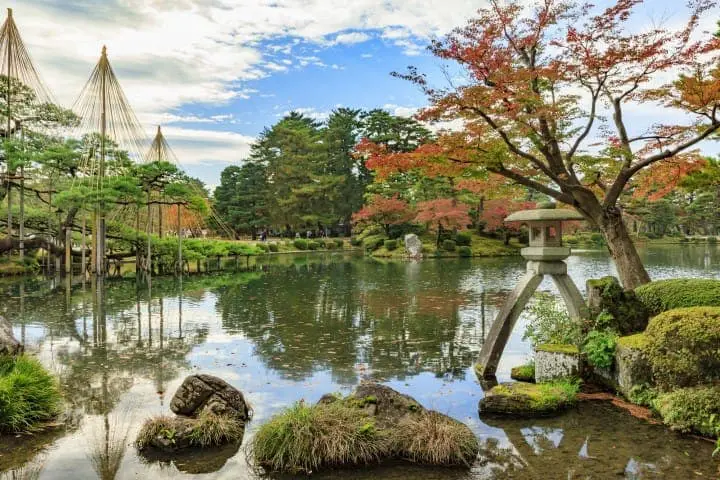
Kanazawa Solo Trip Guide - Things To Do, Souvenirs, And Tips
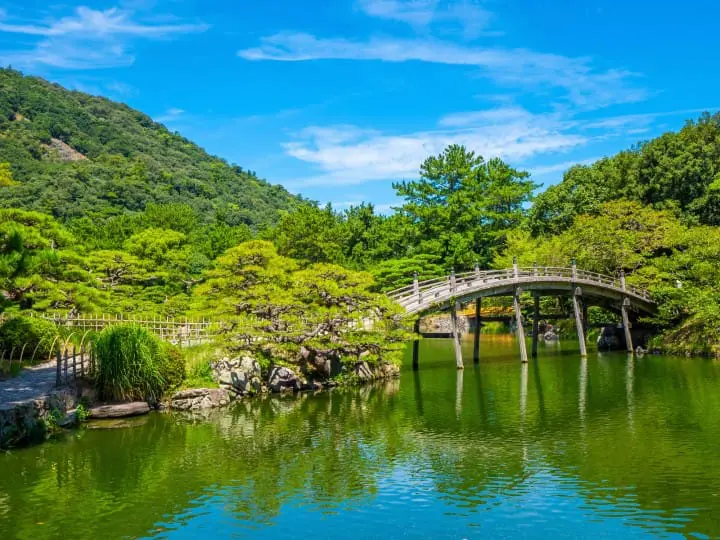
Takamatsu Travel Guide - Activities, Where To Stay, And Transportation

Basic Information

Going To Setouchi Triennale? 5 Reasons To Stay In Takamatsu City

Okayama and Kurashiki Travel Guide: Sightseeing, Local Food, Festivals
Start planning your trip
Special Features

Popular Searches
Latest news.

Showa Kinen Park Flower Festival 2024: Enjoy Nemophila, Tulips, and More!

A Must for Nature Lovers! Win a Free Stay at Unzen Amakusa National Park

A World of Light and Color! Van Gogh Alive in Japan 2024

Cherry Blossom Light-up in Tokyo! Yomiuri Land's Jewellumination

Cherry Blossoms and Sky Lanterns! Aichi Hanami Lights 2024

Japan's Public Holidays and Long Weekends in 2024

Tokyo's Fall Foliage: Top 10 Gardens and Parks in 2023

How to Travel to Kyoto From Osaka: The Fastest and Cheapest Ways

How to Travel to Osaka from Tokyo in 2024: Price Comparison

New Articles

Where is Kozushima, an island of Tokyo? A thorough comparison of how to get there and recommended routes!

Finally! A Udon Workshop in America!

Cycling Around Mt. Fuji and Lake Kawaguchiko: Where to Rental and Course Recommendations

[Yamanashi] Fuji Subaru Land: A family theme park in Lake Kawaguchiko, at the foot of Mt. Fuji

Fujiten Resort, a ski resort on Mount Fuji, will open for summer season from May 3rd!
- Meetings & Events
- Select Language 简体中文 繁體中文(香港) 繁體中文(臺灣) India (English) Bahasa Indonesia 한국어 ภาษาไทย Tiếng Việt Singapore (English) Philippines (English) Malaysia (English) Australia/New Zealand (English) Français Deutsch Italiano Español United Kingdom (English) Nordic countries(English) Canada (English) Canada (Français) United States (English) Mexico (español) Português العربية Japan(日本語) Global (English)
- India (English)
- Bahasa Indonesia
- Singapore (English)
- Philippines (English)
- Malaysia (English)
- Australia/New Zealand (English)
- United Kingdom (English)
- Nordic countries(English)
- Canada (English)
- Canada (Français)
- United States (English)
- Mexico (español)
- Global (English)
- Fujiyoshida
- Shimonoseki
- Ishigaki Island
- Miyako Island
- Kerama Island
- Tokyo Island
- Koka & Shigaraki
- Hida Takayama
- Ginza, Nihonbashi
- Beppu & Yufuin (Onsen)
- Ginzan Onsen
- Nagasaki Islands

- Kumano Kodo
- Shikoku Karst
- Amami Oshima
- Hachimantai
- Omihachiman
- Aizuwakamatsu

- Diving in Japan
- Skiing in Japan
- Seasonal Flowers in Japan
- Sustainable Outdoors
- Off the Beaten Track in Japan
- Scenic Spots
- World Heritage
- Home Stays & Farm Stays

- Japanese Gardens
- Japanese Crafts
- Temple Stays
- Heritage Stays
- Festivals and Events
- Theater in Japan
- Japanese Tea Ceremony
- Cultural Experiences in Japan
- Culture in Japan

- Local Cuisine Eastern Japan
- Local Cuisine Western Japan
- Local Street Food
- Japan's Local Ekiben
- Japanese Whisky
- Vegetarian and Vegan Guide
- Sushi in Japan Guide
- Japanese Sake Breweries

- Art Museums
- Architecture
- Performing Arts
- Art Festivals
- Japanese Anime and Comics
- Japanese Ceramics
- Local Crafts

- Scenic Night Views
- Natural Wonders
- Theme Parks
- Samurai & Ninja
- Iconic Architecture

- Wellness Travel in Japan
- Japanese Ryokan Guide
- A Guide to Stargazing in Japan
- Relaxation in Japan
- Forest Bathing (Shinrin-yoku)

- Experiences in Japan
- Enjoy my Japan
- National Parks
- Japan's Local Treasures
- Japan Heritage
- Snow Like No Other

- Visa Information
- Getting to Japan
- Airport Access
- COVID-19: Practical Information for Traveling to Japan
- Anime Tourism
- Countryside Stays
- Accessible Tourism
- Hokkaido Great Outdoors
- Scenic World Heritage in Tohoku
- Shikoku’s Nature and Traditions
- Southern Kyushu by Rail

- Traveling by Rail
- How to Travel by Train and Bus
- JR Rail Passes
- Scenic Railways
- Renting a Car
- Sustainable Travel in Japan
- Travel Brochures
- Useful Apps
- Online Reservation Sites
- Eco-friendly Accommodation
- Luxury Accommodations
- Traveling With a Disability
- Hands-free Travel
- How to Book a Certified Tour Guide
- Volunteer Guides

- Japanese Manners
- Spring in Japan
- Summer in Japan
- Autumn in Japan
- Winter in Japan
- Cherry Blossom Forecast
- Autumn Leaves Forecast

- Japan Visitor Hotline
- Travel Insurance in Japan
- Japan Safe Travel Information
- Accessibility in Japan
- Vegetarian Guide
- Muslim Travelers
- Safety Tips

- Visa Info for Canadians
- Tour Operators in Canada
- Brochure Request
- Know Before You Go
- JR Pass Retailers
- Regional Rail Passes
- Rail Travel FAQ

- Inspiration
- Travellers' Blog
- Japan Through the Eyes of Canadian Journalists
- Signature Journeys by Canadian Celebrities

- MICE Newsletter
- Notice of Campaigns
- What's New

My Favorites
${v.desc | trunc(25)}
Planning a Trip to Japan?
Share your travel photos with us by hashtagging your images with #visitjapanjp
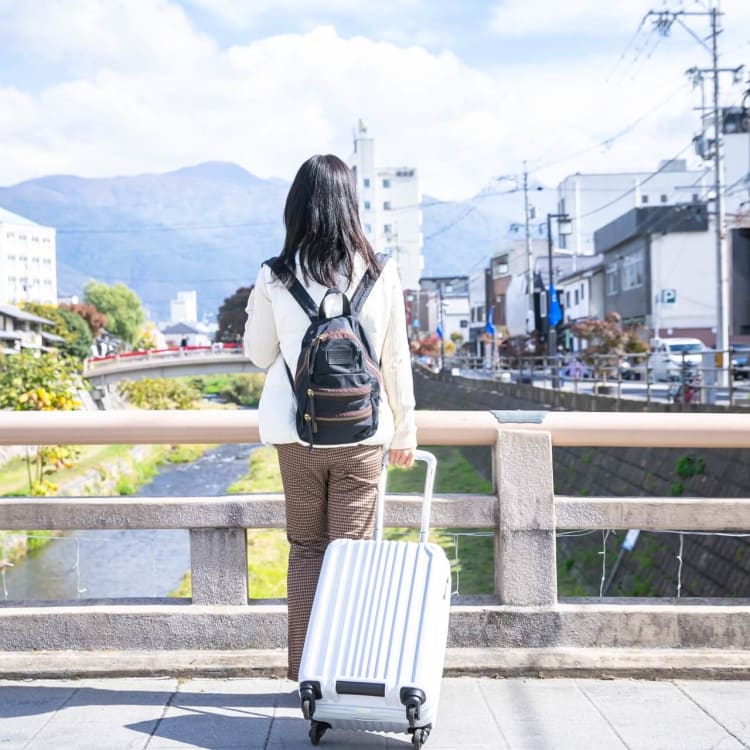
Solo Travel in Japan Discover the many aspects that make Japan a uniquely safe and convenient destination for solo travellers
When considering a solo trip abroad, a country on the opposite side of the globe where English is not the common language may not seem like an obvious choice for most Canadians. However, in visiting Japan, one is quick to realize the extent to which it feels crafted toward solo travellers. While it’s true that sometimes there is strength in numbers, being thrust into a new country on your own may also be the best way to experience it at its most authentic. Whether it’s slurping udon next to office workers on a station platform canteen, sharing laughs with locals at a hostel, or just going for an introspective wander - whether amid tranquil nature or vast cityscapes - Japan makes for an ideal place to experience this. Furthermore, solo travel and dining have become very popular among Japanese people, and most shops and restaurants are used to welcoming solo customers.
What makes Japan so conducive to solo-travel?
In terms of infrastructure, there are several aspects that make Japan uniquely conducive to solo travel. Perhaps foremost is its well-reputed public transit system. Developed primarily during the country’s economic heyday to help workers zip around the country on business, these days Japan’s rail infrastructure has been growing steadily, as has the country’s tourism industry. Of course, resources have been developed to accommodate visitors from abroad in tandem. Announcements and signage are abundant on the majority of Japan’s railways, and stations are often quite easy to navigate in spite of the crowds.
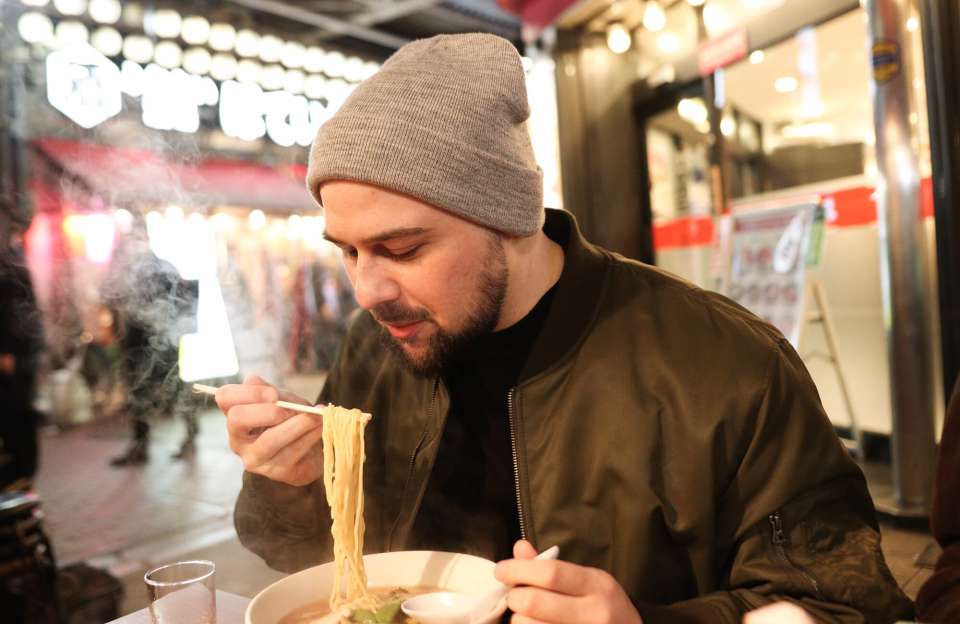
Many will also notice that several aspects of daily life in Japan seem to be designed to be enjoyed alone. Restaurants such as noodle stands, gyudon (Japanese beef rice bowl) shops, and convenience stores are specifically geared toward individual customers, and many of them offer menus including pictures and/or English.
Japanese accommodations are similarly friendly toward solo travellers, with several unique and cost-effective options. Many have heard of Japan’s capsule hotels, where each guest will receive their own pod. This makes for a memorable stay, and despite the close quarters, these capsules are typically climate-controlled, equipped with their own lamps and ledges for reading, and sometimes even televisions, which make for a comfortable experience.

Conventional hostels can also be a great way to meet people, and tend to be immaculately clean and well-curated when compared with their Canadian counterparts. As in other countries, these will typically have common spaces where guests can enjoy activities together such as reading, drinking, or enjoying live music. This can also be a great means of finding companions for a day trip. Those hoping for a little more privacy will be happy to know that it is easy to find a business hotel for as little as $50-100CAD a night in most areas.
Some ryokan (traditional Japanese inns) may require a minimum of two guests, although this has gradually begun to change in recent years. It is recommended to reach out to the property and confirm before making a reservation. An increasing number of Minshuku adapting their business model offer a similar atmosphere, but with less of the frills.
Many are aware of Japan’s famously low crime rate, which consistently places it among the top-ranked countries on the Global Peace Index . In addition to the hard data, it is common to hear anecdotes of lost items being found right where they were last left, even hours later. If a lost item is not where you left it, you may get to experience another marvel of Japan’s infrastructure at work - Koban. Koban are Japan’s police boxes, which can be found in neighbourhoods across the entire country and also serve as public Lost & Found offices. Though it is recommended to keep a close eye on one’s valuables even in Japan, this adds the additional peace of mind of knowing where to look first.
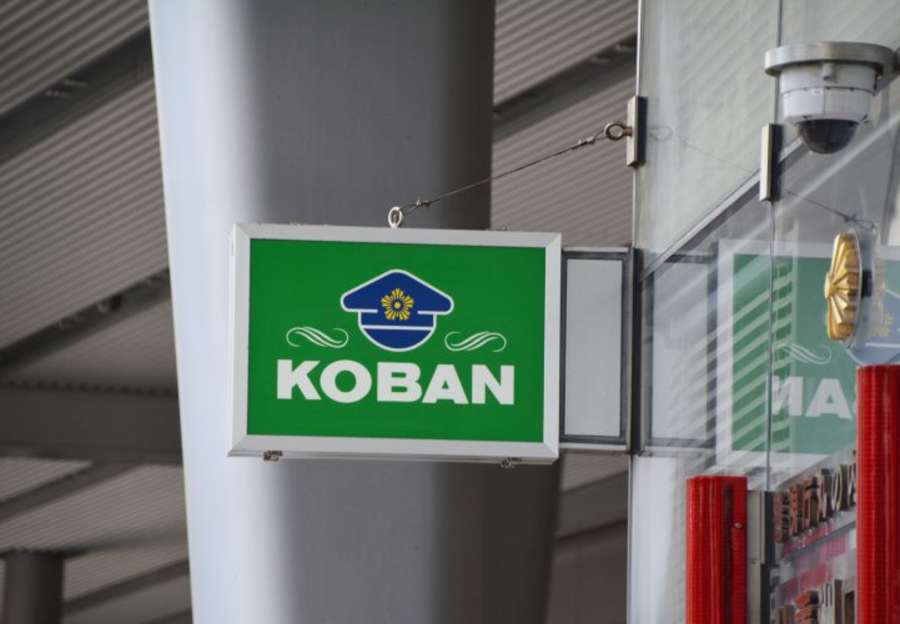
For Female Travellers:
Japan’s safety extends to female travellers as well, with many female tourists reporting that they feel more comfortable walking around at night in Japan than in their respective home countries. With this in mind, female travellers should still exercise basic caution and be aware of the various checks in place to make women feel more at ease. During rush hours, it is typical for trains in major cities to offer female-only cars so that passengers can travel in greater comfort. Additionally, there are several female-only hostels, capsule hotels, and other accommodations.
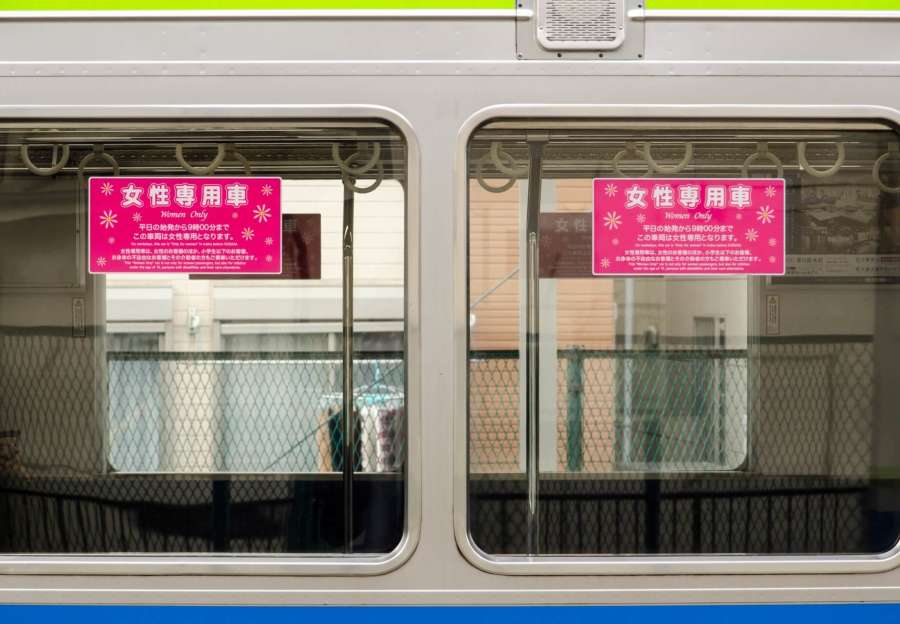
Though verbal harassment such as catcalling is almost unheard of in Japan, there is a chance you may attract an occasional stare, particularly in less urban areas. This is simply because people in remote areas may not be used to seeing foreign visitors. In case you need any assistance, the general public is quite willing to help tourists who find themselves in trouble, and Japan’s police force is highly visible between patrol officers and Koban.
The “What Ifs…” :
Japan has multilingual applications such as Safety Tips , which offers weather warnings, evacuation advisories, and other tips in the event of emergency situations.
Practical Tips
There are several things to keep in mind when setting off for a trip to Japan, that are all the more pertinent when travelling alone. When it comes to staying on the grid, a pocket Wi-Fi or SIM rental is a lifeline, whether for looking up information or communicating with locals. These can typically be picked up at the airport, or else shipped directly to your hotel when ordered in advance.
Convenience stores will quickly become a go-to for any travellers in Japan. Whether warm meals, Wi-Fi, washrooms, printers, toiletries, bandages, or ATMs, they manage to pack in an assortment of all one’s basic needs into just a few hundred square feet. On the topic, travellers should be aware that Japan is still very much a cash society. ATMs located in post offices or convenience stores such as 7-11 enjoy the reputation for being the most consistently friendly toward foreign cash cards, although it is recommended to confirm with your bank in advance.
Activities & Destinations as a Solo Traveller
Though bigger cities such as Tokyo, Kyoto, and Osaka offer travellers the peace of mind of better language resources, verging off the beaten path creates the greatest opportunity to immerse oneself in Japan’s rich culture. Temple stays such as that at Koyasan are one of the most popular among solo travellers, which allow visitors an introspective retreat among ancient forests, where they can experience Zen Buddhist meditation. Japan is also home to several unique and cutting edge galleries such as teamLab Planets Tokyo and the the Hakone Open-Air Museum , in addition to places where extensive collections of more traditional art can be found, such as the Tokyo National Museum in Ueno.
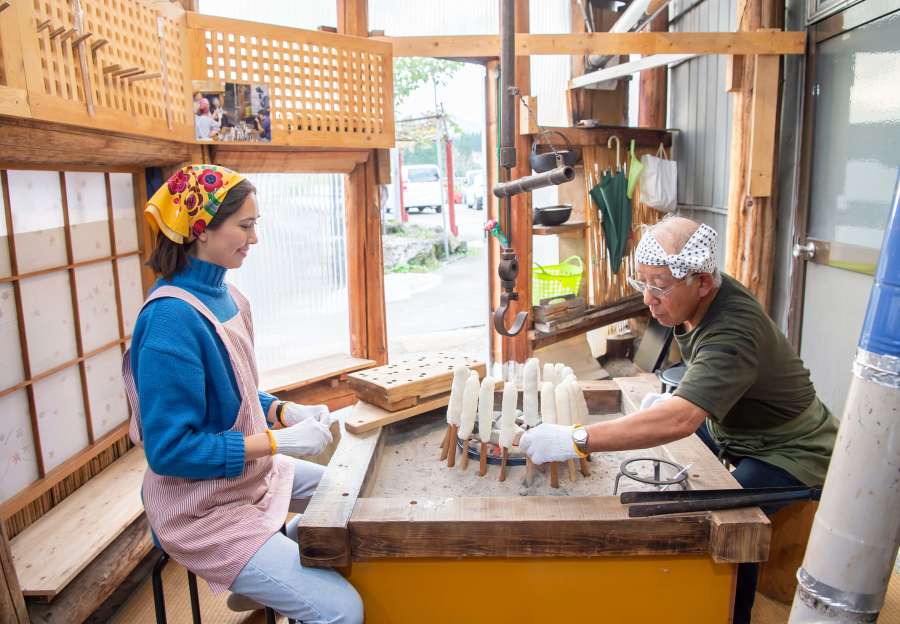
Though any of these destinations provides a great opportunity for introspection, travelling “solo” doesn’t have to be solitary. Taking part in a guided tour such as those offered by volunteer guides is a great way to connect with a local community and its members, particularly in lesser-known regions of Japan. Visitors are frequently astounded that, despite being such a relatively small country, each community has its own unique customs, cuisine, and festivals , all of which locals are typically eager to share with visitors. In addition to broadening one’s own horizons, setting foot off the beaten path is an excellent way to make these human connections and see the country at its truest.
- Canada home
- Solo Travel in Japan | Travel Japan | JNTO
Please Choose Your Language
Browse the JNTO site in one of multiple languages
- Travel tips
Solo Travel in Japan: 17 Best Cities to Visit in Japan
Japan is one of the best countries to travel alone for the first time. As the 9th safest country in the world, Japan has many things to do. From metropolitan cities to rural villages and places off the beaten path, there is something for everyone.
I’ve been to Japan many times and honestly say it is one of my favourite countries. In this post, I put together a list of the best cities to visit in Japan for solo travellers who have never been to Japan before. I hope this list will inspire you to take your first solo trip to Japan.
Disclosure: This post may contain affiliate links. If you buy something through them, I will receive a small commission at no additional cost. Thank you for supporting this website. For more information, please read the disclosure for more info.
Solo travel to Japan: travel tips
Before taking your first solo trip to Japan, check out my post on everything you need to know before going to Japan . I included many travel information, including how to get around Japan and other travel tips.
Here are a few quick travel tips for travelling to Japan alone:
- Get an IC Card , a rechargeable smartcard that allows you to take public transportation, including trains, buses, subways, streetcars and ferries. You can use the same IC Card throughout your entire trip in Japan
- Instead of exchanging Japanese Yen (¥) at home, take cash from ATMs at convenience stores like Family Mart and 7-Eleven while you are in Japan
- Either buy a SIM card when you arrive or rent portable pocket wifi before your trip to Japan so you can stay connected at all times
- If you are travelling solo in Japan for a few weeks, consider buying a JR rail pass for 7, 14 or 21 days to save money on transportation and time
Japan solo travel: 17 best cities to visit in Japan alone
Wondering where to visit in Japan alone? I’ve travelled to Japan by myself many times, and I compiled a list of the best cities to visit in Japan for solo travellers who have never been to the country before. But the list is also useful for travellers who want inspiration on places they haven’t been to.
So here are my 17 best places to visit in Japan for solo travellers.
1. Tokyo: a must-visit city for a first solo trip to Japan
Tokyo is the perfect city to start your solo trip to Japan. As the capital city and the country’s biggest city, Tokyo has many neighbourhoods to explore, learn about Japanese culture, and experience city life in Japan.
And if it is your first time in Tokyo, don’t miss neighbourhoods such as Shinjuku, Harajuku, Shibuya, and Omotesando , where you see all the touristy sites. And if you want to get off the beaten path, visit Kichijoji and Shimokitazawa for a laidback vibe.
You can get a good feel of the city by spending about 5 days in Tokyo .
Best things to do in Tokyo
- Walk across the famous Shibuya Crossing , the world’s busiest intersection
- Visit many temples and shrines, including Asakusa, Gōtokuji Temple , and Nezu Shrine
- Shop at local boutique shops in Harajuku and Omotesando
- See a large-scale interactive light and art installation at teamLab Planets
- Visit modern art museums such as 21_21 Design Sight and Mori Art Museum

2. Hakone: traditional hot spring town
Hakone is a traditional Japanese onsen (hot spring) town in Kanagawa Prefecture. Most people will take a day trip to Hakone from Tokyo. Still, it is worth splurging and spending a night in one of the many traditional Japanese ryokans (traditional Japanese inns with tatami-matted rooms).
Besides experiencing a natural hot spring, tour Hakone where you can see a sulphuric volcano , cruise across a peaceful lake and hike around the rural countryside .
And if possible, visit Hakone during the off-season or weekdays to avoid the crowd. Hakone is one of the most popular places to visit in Japan.
Best things to do in Hakone
- Experience traditional onsen accommodation by staying overnight at a Japanese ryokan
- Enjoy the art installations at the Hakone Open-air Museum
- Take the Hakone Ropeway to see the sulphuric Owakudani Valley
- Hop on the relaxing Hakone Sightseeing Cruise for a trip across Lake Ashinoko
- Hike around Lake Ashinoko and look for Hakone Shrine and Hakone Jinja Heiwa-no-Torii

3. Sapporo: gateway to the island of Hokkaido
Sapporo was once a tiny city in northern Japan. But the city grew and became famous in 1972 because of the Winter Olympics in Sapporo. Today, Sapporo is the fifth-largest city in Japan and is known for its winter attractions, beer and cuisine .
Besides skiing and other winter sports , travellers visiting northern Japan can use Sapporo as a home base and explore other parts of Hokkaido , including many different ski resorts and scenic hotspots.
And you cannot leave Sapporo without trying the local cuisine , including hairy crab, ramen , desserts made with Hokkaido milk and Sapporo Beer .
Best things to do in Sapporo
- See large-scale ice and snow sculptures at Sapporo Snow Festivals in early February
- Take a guided tour and sample beers at the Sapporo Beer Museum
- Eat fresh Hokkaido seafood at Nijo Market and Curb Market
- Go skiing at Mount Teine or Sapporo Kokusai Ski Resort
- Visit Furano and Biei Blue Pond as a day trip

4. Nagano: a winter wonderland with snow monkeys
Nagano is one of Japan’s best cities to visit if you love winter sports ! The resorts outside Nagano have excellent conditions for skiing, snowboarding and other winter activities . Some of the best places for skiing include the slopes of Hakuba , one of the Winter Olympics locations in 1998.
Another highlight of Nagano is the numerous onsens (hot springs) around the region. Notably, the hot springs in Yamanouchi are very popular with their local “residents,” aka snow monkeys .
Best things to do in Nagano
- Ski or snowboard at one of the resorts just outside of Nagano City
- Visit a traditional Japanese onsen (hot spring) like Nozawa Onsen
- See snow monkeys bathe in local hot springs in Jigokudani Wild Monkey Park in Yamanouchi
- See traditional Japanese paintings at Nagano Prefectural Shinano Art Museum
- Take a day trip to see Matsumoto Castle , the oldest five-story six-floor castle in Japan
View this post on Instagram A post shared by 🏔𝐆𝐨 𝐍𝐀𝐆𝐀𝐍𝐎【長野県 観光 公式インスタグラム】 (@nagano_japan)
5. Takayama: explore the rural countryside
If you enjoy hiking and exploring the rural countryside, you might want to check out Takayama . The city is tucked away in the mountains in Gifu Prefecture and is the gateway to the Japanese Alps on the main island of Honshu .
Besides wandering the charming Old Town of Takayama, most visitors will visit Shirakawa-go , a UNESCO Heritage village with hundreds of thatched-roof houses . The picturesque town can be visited any time of the year but is especially beautiful during winter.
And if you are visiting Takayama during the warmer months, take a hiking trip in Kamikochi , which is in the Chubu Sangaku National Park .
Best things to do in Takayama
- Wander around the historic Sanmachi Suji District in Takayama’s Old Town
- Visit the picturesque Hida no Sato , a group of thatch-roof houses
- Take a day trip to Shirakawa-go , a UNESCO World Heritage Site, to see 100+ thatch-houses
- Attend Takayama Matsuri Festival on April 14/15 or October 9/10
- Hike Kamikochi and see alpine sceneries that are part of the Japanese Alps
View this post on Instagram A post shared by Shirakawago 白川郷 (@shirakawa_go)
6. Kyoto: temple hop around the old capital city
Kyoto was once the old capital of Japan and was home to several emperors. And as one of the bigger cities in Japan, Kyoto has many historical buildings and monuments including 1,600 temples!
But you don’t need to see all 1,600 temples to feel the city. You can spend 2 days in Kyoto and visit a few important temples, including Kinkakuji (Golden Pavilion) , Ginkakuji (Silver Pavilion) and Kiyomizudera Temple .
And don’t leave Kyoto without seeing the famous bamboo forest and walking through hundreds of orange torii gates . And for an added bonus, you can rent a kimono or yukata in Gion and walk around the area in traditional Japanese clothing.
Best things to do in Kyoto
- Admire historical temples like Kinkakuji (Golden Pavilion) , Ginkakuji (Silver Pavilion) and Kiyomizudera Temple
- See thousands of bamboo in Arahiyama Bamboo Grove
- Walkthrough hundreds of orange torii gates at Fushimi Inari Shrine
- See cherry blossom in full bloom (late March to early April) at Philosopher’s Path, Maruyama Park and Kamogawa River
- Rent a kimono or yukata in Gion and see if you can spot a geisha

7. Osaka: the third-largest city with a vibrant nightlife
As the third-largest city in Japan, Osaka is one of Japan’s top-visited cities. Osaka attracts millions of visitors yearly because of its abundance of history, vibrant nightlife , and unique local cuisine .
And the city is well situated in the centre of Honshu Island . Located in the Kansai Region , international travellers can fly directly into Kansai International Airport (KIX) and arrive in Osaka within an hour.
It is possible to see all the best sites in Osaka in 2 days while travelling in Japan alone. But if you want to stay longer, you can use Osaka as a home base for day trips to Nara, Kyoto, Himeji, and Koyasan.
Best things to do in Osaka
- See hundreds of cherry blossom trees in full bloom (late March to early April) at Osaka Castle
- Make a wish and pour water over the green moss Fudo Myo-o statue at Hozenji Temple
- See all the bright lights and signages, including the Glico Running Man in Dōtonbori
- Visit Shinsekai , an old district in Osaka with cheap eateries and entertainment
- Try a few Osaka food including takoyaki (octopus ball), okonomiyaki (savoury pancake with noodles and cabbage) and kushikatsu (deep-fried skewered food)

8. Nara: oldest Buddhist temples + friendly deers
Just outside of Kyoto and Osaka is a small quaint town called Nara . As it was the ancient capital city of Japan in 710, many Buddhist monasteries and temples were built in Nara. This is why Nara has some of Japan’s oldest and largest shrines and temples . And many of these are UNESCO World Heritage Sites .
But most people visit Nara because they want to see wild deer . While you rarely see deer in Old Nara City, most hang around Nara Park and other green areas on the temple grounds. And you can even buy crackers to feed the deer!
Most visitors take a day trip to Nara from Kyoto or Osaka . But if you are slow travelling through Japan, consider spending more than a day in this quaint town.
Best things to do in Nara
- Visit Tōdai-ji Temple , the world’s largest wooden building with a bronze Buddha statue
- Attend Omizutori (March 1 to 14), the oldest annual Buddhist event at Nigatsudo Hall
- Wander around Old Nara City and see local shops and residential homes
- Watch a live demonstration of the making of yomogi mochi at Nakatanidou
- Buy crackers and feed them to the friendly deers in Nara Park

9. Kobe: try the best beef in Japan
You may have heard of the world-famous Kobe beef , a type of Wagyu beef with tender and very juicy meat. It is from Tajima black cattle raised in Hyogo Prefecture , where Kobe is located.
Besides trying Kobe beef in Kobe, there are many things to eat and do in the busy port city. When you visit Kobe as a day trip from Osaka , wander around the culturally influenced districts and neighbourhoods , hike up the nearby mountains , and see panoramic views of Kobe .
And if you have more time in Kobe, explore Japan’s oldest hot spring town and try the famous “Kinsen golden hot spring,” where the spring water turns reddish-brown once the water touches the air.
Best things to do in Kobe
- Try a teppanyaki Kobe Beef lunch set at Steakland (cheaper at lunch)
- Visit several foreign residences in the historic Kitano-cho district
- Stroll around Kobe Harbour in the evening and see the tall and bright Kobe Port Tower
- Hike up Mount Rokko to see a panoramic view of Kobe
- Experience the famous “Kinsen golden hot spring” in Arima Onsen

10. Himeji: visit one of the top three most beautiful castles
And one of the highlights of Himeji has to be Himeji Castle . It is one of the top three most beautiful original castles in Japan. As a UNESCO World Heritage Site, it is Himeji’s biggest attraction!
Besides, see the “white heron castle,” there are also beautiful Japanese gardens , art museums and temples hidden away in the mountains .
Himeji City is a compact city and can be visited as a day trip from Osaka . The city is only 100km west of Osaka, and if you take the Shinkansen (bullet train), you can be in the quaint city in less than half an hour.
Best things to do in Himeji
- See a view of Himeji from the top level in Himeji Castle
- Visit the traditional Japanese gardens in Koko-en Garden
- Take the Shoshazan Ropeway up to Mount Shosha and wander around the 1,000-year-old temple complex called Engyō-ji Temple
- See a large European art collection at the Himeji City Museum of Art
- Try local Himeji food including menme udon (udon with raw egg) and conger eel with egg on rice

11. Naoshima: the modern contemporary Japanese art island
Yayoi Kusama. Tadao Ando. James Turrell. Walter De Maria . If these names mean anything to you, then you must visit Japan’s best art island, Naoshima .
The small island in Kagawa Prefecture became a contemporary art centre in the 80s when Japan wanted to revolutionize the art scene and create a world-class attraction.
Today, you will find a famous polka dot art installation on the island. Yayoi Kusama’s Yellow Pumpkin became the iconic symbol for Naoshima. Some people might even call it the Naoshima Pumpkin .
Moreover, the island is full of modern architecture designed by Tadao Ando , a Japanese architect known for his modern design and concrete architecture.
As contemporary art lovers, you do not want to miss all the museums and art installations on the small island in the Seto Inland Sea . You can easily see all the art exhibits and museums on Naoshima Island in one day .
Best things to do in Naoshima
- Take photos with the famous Yellow Pumpkin and the Red Pumpkin
- See contemporary art and installations by Claude Monet, James Turrell and Walter De Maria at Chichu Art Museum
- Admire Tadao Ando’s contemporary concrete building at Lee Ufan Musem
- See the permanent and temporary modern art collection at Benesse House Museum
- Visit Teshima , another (but smaller) contemporary art island

12. Kurashiki: a picturesque historic canal town
Kurashiki might be one of the best off-the-beaten-path cities in Japan . Known for its picturesque canal with weeping willow trees , distinctive local architecture style , and delicious local cuisine , Kurashiki has many things to do and is a city you should not miss!
Located in Okayama Prefecture , the charming little town was an important point along the distribution route for Japan’s most prized commodity, rice. Today, you will find many old rice warehouses converted into restaurants, cafes and local retail stores .
Even though Kurashiki is not as famous as other cities in Japan, it is worth visiting, especially if you enjoy the small-town charm and see a preserved historic town .
Best things to do in Kurashiki
- See a picturesque canal with weeping willow trees in Kurashiki Bikan Historical Quarter
- Hike up Tsuragatayama Hill and see an unobstructed view of Kurashiki
- Visit many temples in Kurashiki, including Achi Shrine , Kanryuji Temple , and Honeji Temple
- Take note of the traditional Kurahiski houses that have an austere white-wash wall with black and white latticework patterns
- Try a blue-coloured food on Kurashiki Demin Street

13. Onomichi: gateway to Japan’s best bikeway
Onomichi is a quaint port town known for its temples, cats and cycling . Many people may not know this small town in Hiroshima Prefecture , but if you are looking for off-the-beaten-track places in Japan, Onomich is one of the best places to visit in Japan.
While there are many things to do in Onomichi as a solo female traveller, you can comfortably see everything in a day or two.
But you should set aside two days in your itinerary and cycle Japan’s best bike route, Shimanami Kaido . The 60km bikeway connects six islands in the Seto Inland Sea where you can cycle from Onomichi to Imabari . It takes a full day to cycle to Imabari and another day back to Onomichi. But if you have limited time, you can still cycle Shimanami Kaido in one day .
Best things to do in Onomichi
- See 25 temples along Onomichi Temple Walk , including Tennei-ji Temple
- Take the Senko-ji Mountain Ropeway to the top of Senko-ji Park , where you can see a view of Onomichi and cherry blossoms in the spring
- Hike up Jodo-ji Mountain and see Onomichi from another angle
- Try a bowl of Onomichi ramen (soy sauce-flavoured soup stock with flat noodles) at Ramen Miyachi
- Rent a bike and bike along Japan’s best bikeway, Shimanami Kaido

14. Hiroshima: the “City of Peace”
Most travellers visit Hiroshima to see the monuments dedicated to Hiroshima’s legacy of surviving the atomic bomb during World War II. The Hiroshima Peace Memorial Park monuments commemorate those affected and remember peace.
Besides seeing all the monuments in the “City of Peace,” Hiroshima has many things to do, including a castle, art museums, and Japanese gardens . And you can comfortably see the best attractions in Hiroshima in 2 days .
And if you are a foodie, try Hiroshima’s local cuisine, which includes oysters, conger eel, ramen and okonomiyaki.
Best things to do in Hiroshima
- Visit WWII monuments in Hiroshima Peace Memorial Park , including Cenotaph for the A-bomb Victims , the Flame of Peace , the Children’s Peace Monument , and Atomic Bomb Dome .
- Admire contemporary Japanese artwork at the Hiroshima Museum of Art and Hiroshima Prefectural Art Museum
- See a panoramic view of Hiroshima at Hiroshima Orizuru Tower
- Visit different miniature gardens at Shukkeien Garden
- Try local Hiroshima cuisine like Hiroshima-style okonomiyaki , Hiroshima Tsukemen , oysters , and anago (eel)

15. Miyajima: best day trip from Hiroshima
If you are going to Hiroshima, you must take a day trip to Miyajima . The small island is easily accessible from Hiroshima, and you can see everything in one day.
The highlight of Miyajima Island has to be its Itsukushima Floating Torii Gate. This giant orange torii gate seems to be floating on the water near Itsukushima Shrine , a UNESCO World Heritage Site.
Besides seeing the floating giant torii gate during high tide, hike up Mount Misen or take the ropeway and see a panoramic view of the Seto Inland Sea and friendly wild deers roam around the island.
Most people will visit Miyajima and return to Hiroshima. But if you want to splurge, you can stay at one of the Ryokans on Miyajima and experience Japanese hot springs in a traditional hotel .
Best things to do in Miyajima
- Admire Itsukushima Floating Torii Gate during high tide (in the morning)
- Get up close to the giant orange torii gate during low tide (late afternoon)
- Wander around Itsukushima Shrine , Momijidani Park , Daishoin Temple
- Hike up Mount Misen and see a panoramic view of the Seto Inland Sea
- Try local culinary delights such as oysters , anago meshi (conger eel), fried fishcake and momiji manju (small cake shaped in Japanese maple leaf with different fillings).

16. Fukuoka: eat your way around the city
Fukuoka is the biggest city on Kyushu Island and the 7th biggest city in Japan. And while Fukuoka has many things to do , the best highlight has to be its culinary scene .
The city is known for its Hakata Ramen or Tonkotsu Ramen . You can get a creamy pork bone broth with thin ramen noodles anywhere in the city. And since Fukuoka is udon noodle’ s birthplace, you must try a bowl or two because it is oh-so-delicious!
Besides soup noodles, try other culinary delights such as motsunabe (hot pot with beef offal), mizutaki (hot pot with local jidori chicken), fresh squid sushi , mentaiko (spicy pollock roe), Hakata Amaou strawberries and wash it all down with local sake .
Most of all, try eating at one of the local open-air food stalls called yatai . There are over 150 yatai’s in Fukuoka (mostly along Nakasa River), where you can enjoy wholesome Japanese foods.
Best things to do in Fukuoka
- Try the Shiromaru Classic Hakata Ramen at Ippudo , a famous ramen restaurant in Fukuoka
- Sample other local Fukuoka delights like motsunabe , mizutaki and mentaiko
- Grab a seat at one of the yatai open-air food stalls and eat Japanese food with locals
- Visit local attractions such as Hakata Old Town , Maizuru Park , Fukuoka Asian Art Museum and Hakata Machiya Folk Museum .
- Hop on Nishitetsu Railway and spend a day in Dazaifu

17. Okinawa: a tropical paradise with white sand and crystal clear water
There are more than 150 islands in the East China Sea between Japan’s mainland and Taiwan at the south end of Japan. And one of the most famous islands is Okinawa .
Okinawa is the largest island in Okinawa Prefecture. While the island has many cultural sites, monuments, and unique Okinawan food , most visitors travel to Okinawa for its subtropical climate and beautiful white sand beaches with crystal blue water .
So enjoy all the water activities such as swimming, snorkelling, diving, surfing and seeing all the coral reefs in the area because Okinawa is unlike everywhere else in Japan. You’ll feel like you are in the Caribbean or the Mediterranean!
Best things to do in Okinawa
- Swim in the crystal blue water and play on the white sand beaches of Okinawa
- Participate in many water sports, including snorkelling and diving
- Take a scenic drive around the island of Okinawa
- See marine wildlife in the massive fish tank at Churaumi Aquarium , Japan’s largest aquarium
- Visit Shuri Castle , a royal palace from when Okinawa used to be the Ryukyu Kingdom

Want to travel like a minimalist? Learn how to pack a 7kg carry-on luggage by following my minimalist travel packing list
Solo travel Japan: places to visit in Japan on your own
I hope you find this list of Japanese cities useful for planning your first solo trip to Japan. These are some of the best cities in Japan and are perfect for solo female travellers.
So the big question is: which cities will you visit during your first solo Japan trip? Let a comment below. Or if you have other suggestions, leave that in the comment too!
Thank you for reading my Japan solo travel post
You might also like these other posts on solo travel in Japan:
Introduction to Japan
- Things I wish I knew before going to Japan
- 11 Off-the-beaten-path places in Japan
- Japanese Food Culture: 11 must-try food
- One month in Japan: from Tokyo to Hiroshima
Kanto region
- 5-day Tokyo itinerary for first-time visitors
- Where to stay in Tokyo for solo travellers
- Tokyo Food Guide: 42 best places to eat in Tokyo
Kansai region
- Kyoto 2-day itinerary
- Uji day trip from Kyoto
- Nara day trip from Kyoto or Osaka
- 2-day Osaka itinerary
- Where and What to Eat in Osaka, Japan
- Osaka to Kobe day trip: 1-day itinerary
- Best food in Kobe: Where and What to Eat
- Himeji day trip from Osaka
Chugoku region
- Naoshima Art Island: 1-day itinerary
- How to spend one day on Teshima Island
- 17 Best things to do in Kurashiki Japan
- 13 Top things to do in Onomichi Japan
- Shimanami Kaido: how to spend one day cycling Japan’s best bike route
- Hiroshima 2-day itinerary
- Day trip to Miyajima from Hiroshima
Kyushu region
- 10-day Kyushu Island itinerary
- 25 Best things to do in Fukuoka Japan
- Day trip to Dazaifu from Fukuoka
- Kumamoto City in one day
- Day trip to Mount Aso from Kumamoto
- 11 Top things to do in Kagoshima Japan
Like this post? Pin it on your Pinterest board!

queenie mak
Hi, my name is Queenie, and I've been a solo traveller for 20+ years and currently based in Hong Kong. Follow me on my adventures through Instagram and my blog!
Further Reading...

Japan Off The Beaten Path: 11 Best Japan Hidden Gems

Where to Stay in Osaka for First Time Traveller: Best Areas and Hotel Reviews

Kumamoto to Mount Aso: How to Get There & What to Do
Glad I chanced upon your article which got me interested in Naoshima, Kurashiki, Onomichi and Miyajima. I will be in Tokyo so any recommendation as to how best I should travel to cover all 4 places? I can spend between 5-8 days for this. Appreciate hearing back from you.
Cheers Carol
Hi Carol, those are amazing places! The train will probably be the best way to visit all of these cities. There is a Kansai-Hiroshima Area Pass (rail pass) that includes all of these cities but you’ll have to get from Tokyo to Osaka first. There is an online calculator to determine if you can really make use of a Japan railway pass – google “japan rail pass calculator”. It might be worthwhile to get a rail pass especially if you are travelling everyday. Anyway check out those options. Excited for your upcoming trip! 🙂
Leave a Reply Cancel Reply
Save my name, email, and website in this browser for the next time I comment.
Notify me of follow-up comments by email.
Notify me of new posts by email.
This site uses Akismet to reduce spam. Learn how your comment data is processed .
Trio Beach Hike From Sai Kung To Hebe Haven In Hong Kong
21 things to do in canggu bali indonesia for a solo traveller, ms travel solo.


Solo Travel in Japan: the Good, the Bad, and the Ugly
Oct 28, 2018 Japan , Travel
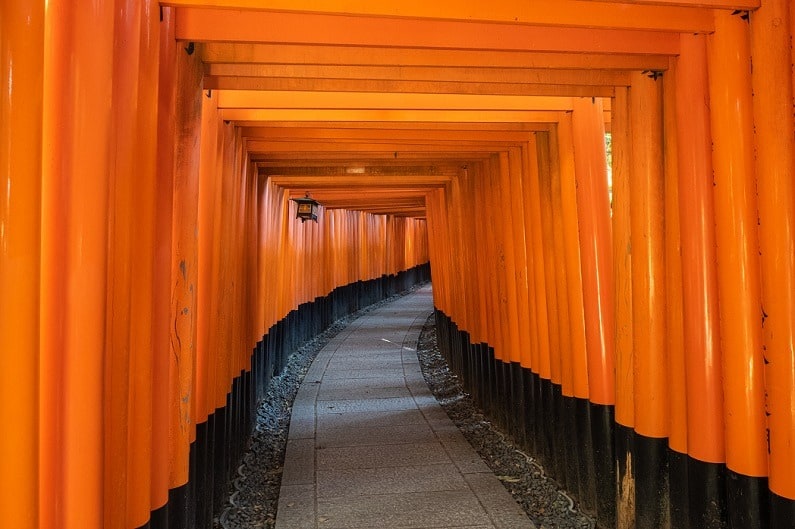
For the flashpacker traveling solo, safety, comfort, ease of travel, and affordability are essential features in a destination. Let’s see how Japan stacks up to our criteria and how it compares to other destinations in Asia. Here is the low down on what it’s really like to travel solo in Japan along with some tips on how to overcome the bad and the ugly.
Disclosure: This post may contain affiliate links. As an Amazon Associate and a Bookshop.org Associate, I earn from qualifying purchases. Please see this website's Disclosure for more info.
The Good Side of Traveling Solo in Japan
There are many reasons why Japan is a great place for solo travelers.
1. For women, Japan is pretty safe
I “felt” safe walking alone at night in Japan. I was never harassed. I never heard or received any cat calls or rude looks or remarks from men.
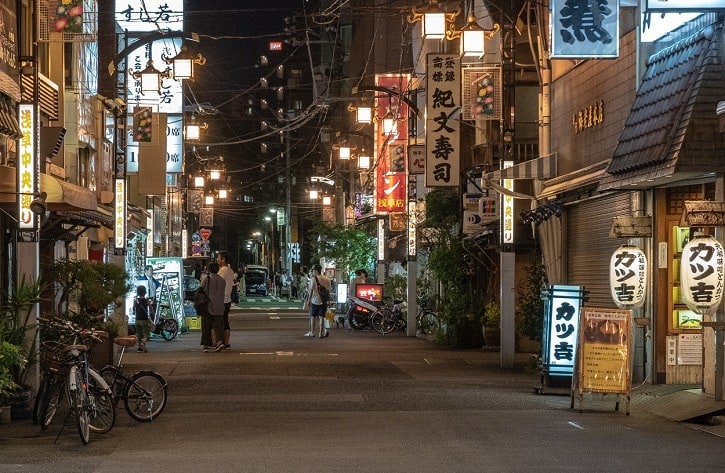
I stayed in Asakusa and walked back to my hotel from the subway station a few times after 10:00 pm. It was a fifteen-minute walk through streets of closed shops, a few diners still eating dinner, and a few stragglers walking home. I never once felt uncomfortable.

When I was hanging out in Shibuya, Shinjuku, and Akihabara, there were so many people around that I always felt safe. The subways were still packed with people.

Chikan – Sexual Harassment on Trains
The one thing I have heard that female travelers might need to watch out for is taking the subway during early morning rush hour. Chikan is the Japanese word for both the unwanted act of touching someone without their consent and the person who does this act. According to surveys, about 2/3 Japanese women said they had been touched while riding crowded trains. This led to the female-only wagons in certain cities like Tokyo and Osaka. While traveling in Japan, I did not experience chikan nor did I notice these female-only wagons.
2. Hostels are doable even for those who don’t like hostels
Japan is an expensive country, and for solo travelers, finding affordable hotels there can be more difficult than in other parts of Asia.
You can probably get a room at a business hotel for US$65 or US$75 a night but usually closer to $100 a night. A boutique hotel is going to cost you a lot more.
Airbnb has also not really taken off in Japan like it has in other countries.

The good thing is that if you need to stay in hostels, they’re pretty nice. The picture above is of the Share Hotel Hatchi in Kanazawa.

There are lots of boutique-style hostels that offer a bit of privacy like in the pictures above.

Hostels cost around US$35 a night but can range from $25 to $50. You often get a curtain over your bed, a bed-side lamp, a cupboard with lock, and slippers.

The showers and toilets are very clean and modern. For someone who doesn’t like hostels anymore, I found them to be acceptable and did not mind staying in them at times during my solo travels through Japan. In fact, I felt just as comfortable in dorms as I did in some hotels.

Another option is to do capsule hotels. Capsule hotels come in a variety of styles. The one I stayed in gave each traveler his or her own tiny room with a curtain over the doorway. The capsule hotel was also divided into female and male sections with a secure entrance to each section.
3. Japan is a great place to eat in restaurants alone
For eating, Japan is a solo traveler’s dream country. In many Japanese restaurants, customers have the option of sitting at a counter rather than a table. This seating arrangement is ideal for solo travelers. You don’t feel so self-conscious sitting alone at a counter as you would at a table.

And unlike people in other countries I’ve visited, I saw Japanese people eating alone a lot, so you shouldn’t feel out of place doing so as well.
Because the Japanese tend to eat small portions, you’re not going to end up wasting a lot of food if you can’t finish it all. This happened to me in Myanmar.
Before my trip, I was a bit anxious about ordering and eating in Japanese restaurants. I assumed that there were a lot of rules and rituals that I wasn’t aware of, and due to my ignorance of them, I’d make a fool out of myself. My assumptions were correct and there are lots of rules of etiquette on how to eat. My suggestion is to watch some youtube videos on how to properly eat sushi and cold soba and udon noodles and how to order ramen from a machine.
Here’s a great video on how to eat soba noodles:
Also, knowing how to eat sushi will help solo travelers not feel so stupid. On the last day of my trip, I found out that I had been eating sushi wrong the whole time when the sushi chef pointed out my mistake.
You can find out how to order ramen from a machine in my Tokyo itinerary article.
4. It can be easy to get around Japan by yourself
The transportation system in Japan is both good and bad for solo travelers. I’ll start with the positive and below you can read about the negative in the con’s section.
Japan trains and buses between cities are clean, comfortable, and fast. Japan is the most organized and efficient country I’ve been to.
What’s more, announcements are in English, so you generally know when to get off.
Also, you can download two great Apps: Hyperdia and Navitime. Hyperdia gives you train schedules and Navitime give you city public transportation information.

Japanese trains also connect to many destinations and if there’s no train station in a town, at least there’s a bus station. Solo travelers don’t need to worry about having to rent a car then.
Solo travelers also don’t need to worry about buying train tickets. You can also get a Japan Rail pass before you leave your country. This allows you to hop on and off trains anytime you want without buying a ticket.
You also have the option of reserving a seat free of charge. Just go to the JR Rail office at train stations (look for a green sign) and get a seat reservation. These offices are not hard to miss. There was always someone who spoke English there when I went.
I bought my JR Pass from Japan Experience and I was very happy with their service. I do not have an affiliate relationship with them.
5. Japanese people are wonderful!
For solo travelers, the Japanese people’s kindness and eagerness to help makes traveling in the country enjoyable and easy. I need all 10 fingers and 10 toes to be able to count the number of times the people in Japan helped me find my way. I’ve even had people walk out of their way going in the opposite direction or from the other side of town to help me find my way.
Most of the time, I did not feel that Japanese people disliked foreigners. I only got an odd feeling once when I stayed at an expensive ryokan in Hakone, Fukuzumiro. This could have been because I showed up 15 minutes before the 3:00 pm check-in, which I realized later that arriving early is not acceptable.
6. There’s very little crime
You don’t need to worry about pickpockets or muggings in Japan. I’m sure these happen, but it’s definitely nowhere near as common as in Cambodia, Lima, San Francisco, or Rome. You still want to watch your stuff, but you don’t need to be as vigilant about it as you would in other countries.
7. If you get injured or sick, medical care is inexpensive and accessible
If you get hurt and need a hospital, you’re in luck. Medical care is inexpensive and hospitals are efficient and clean. In addition, there should be an English interpreter on staff.
How do I know this? Well, a blister became infected on my left food and I had to go to the hospital. Although the doctor and nurses didn’t speak English, the hospital had an interpreter that helped me through the process of checking in and seeing the doctor. I was treated kindly and respectfully.
Make sure to go to a hospital and not a clinic, though, as you will likely be turned away like I was from a clinic.
8. Lots of information about Japan in English
One of the many things I loved about traveling in Japan was the incredible amount of travel information available for the foreign tourist. I highly recommend checking out the official tourism website for each city that you are going to. They have lots of information written in English.
The Bad Side of Traveling Solo in Japan
There are a few downsides to traveling solo in Japan.
1. Some ryokans don’t accept solo travelers
I originally wanted to stay overnight in Shirakawa-go. To book accommodations there, you need to visit the Japanese Guesthouses website . Unfortunately, they told me that ryokans (it’s the only type of accommodation in the city) have had too many problems with solo travelers, so they won’t accept any now. It might have been possible to stay in a Minshuku, a Japanese style bed and breakfast, in another city. but I didn’t check it out. I think this no solo traveler policy is the same for other small towns in Japan.
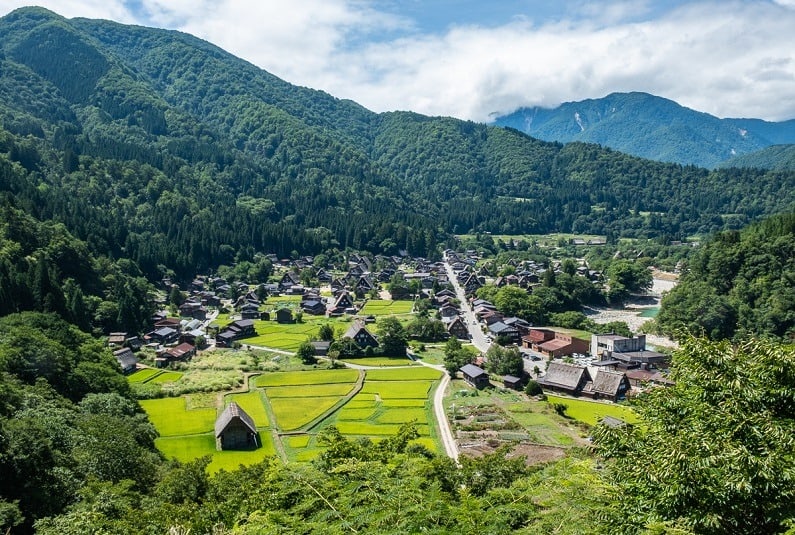
2. Traveling Solo in Japan can be lonely
Because some of the hostels give you so much privacy, you’re less likely to interact with other travelers.
Also, Japan doesn’t get a lot of backpacker-type travelers perhaps due to its perception as an expensive place to travel in. As a result, it can get lonely traveling in Japan. There were times when I didn’t speak to anyone other than hotel or hostel staff for several days in a row.
On the other hand, the solo travelers that I did meet were friendly and open. It was easy to make quick friendships, albeit for just one night, with other travelers.
3. Communication isn’t always easy
The Japanese are known for having difficulty with communicating in English. Unlike a lot of countries that teach English to students in primary school, Japanese children don’t learn English until high school.
I encountered lots of hotel staff whose English was limited. Sometimes my limited Japanese and their limited English caused miscommunication or just not communication at all.
People should learn some Japanese beforehand or get a pocket translator.
4. Hotel prices are expensive
As mentioned above, hotels are more expensive than in Southeast Asia. Solo travelers in Japan are going to spend a minimum of $65 or $75 a night at a hotel.
It wasn’t affordable for me to stay in hotels for my whole trip in Japan, so I stayed in hotels half of the time and hostel dorms the other half.
You can read the article on how to afford hotels while traveling solo by clicking here.
5. Getting around can be challenging
I mentioned above that transportation system is mixed. Here is the bad part of the system.
Tokyo is going to be your major obstacle to getting around. The system is so complicated and so enormous that you need a PhD to understand how the it works.
First, street signs are usually nonexistent making using a paper map to get around difficult. You’ll need to have Google maps to navigate the streets.
The subway stations are also difficult to navigate. I can’t tell you how many times I became paralyzed with indecision because I couldn’t figure out which exit to take to get to my hotel. The worst station is Shinjuku, which is a cavernous, endless hell hole.
6. Japan can be hard on solo travelers with mobility issues
Another downside of solo travel in Japan pertains to those who’ve got trouble walking or taking stairs. It’s going to be hard getting around in the big cities and at train stations.
I’ve got a really messed up painful right knee (meniscus tear, arthritis, and stress fracture). I also have planter fasciitis on my left foot and bunions on both feet. For me, walking and standing for a long time can be excruciatingly painful. I found traveling in Japan to be harder on me physically than any other country I’ve been to.
First of all, you’ll be doing lots of walking going from one site to the next. You can’t rely on taxis or Uber to get you from point A to point B. They’re too expensive and they’re just not plentiful like in other Asian countries. You need to then take the subway or bus, which requires extra walking. What’s more, you sometimes need to walk a lot when transferring from one subway line to the next.
The second major obstacle to those with problems walking is the stairs. Because many subway stations are deep underground, you need to walk up and down long flights of stairs. Escalators are rare. Sometimes there are elevators, but they’re not easy to find.
To make matters worse, as a solo traveler in Japan, I needed to carry lots of stuff around: water bottle, camera, camera gear, a 191-page Lonely Planet, phone, battery charger, pocket wifi, Kindle, wallet, suntan lotion, journal, a small first-aid kit, extra pair of glasses in case my main pair break, etc. If there had been two of us traveling together, we could have split the items between the two of us. As a solo traveler, I needed to carry everything. If you’ve got knee or foot problems, then you know that carrying that extra weight adds to the pain.
What do you do? It’s essential for those with pain while walking to go slowly. Don’t rush your trip trying to see too many things in one day or do too many stops in one trip.
Look for elevators at subway stations and in museums.
Pack light. Since hotels and hostels in Japan have self-serving washers and dryers, you don’t need to take so many clothes.
Don’t travel in August when it’s unbearably hot. If you can, do the shoulder season like May and September.
Final Thoughts
That’s it. Don’t let the downsides of traveling solo in Japan dissuade you from going. While it’s going to be more expensive than other Asian countries, due to its efficiency, it’s also going to be easier to get around. Offset your expenses by staying at hostels for part of your trip. This will help balance out your costs.
Overall, it’s a wonderful country with lots of great places to explore, food to eat, and people to meet.
Have you traveled solo in Japan? What was your experience like? Are you planning on traveling to Japan? What are some of your worries? Leave a comment or a question below. Please share on social media.

Japan is not as safe place as people believe. Japan is not adorable place either.
I had bad impression about Japan after my visit to Japan.
First, Japan is very polluted country. Air is so polluted that you will have throat-ache. Nowadays, air is getting more and more polluted so you need to wear masks.
Second, things are very expensive in Japan. Foods, accomodation, transporation etc… are so high. One plate of sushi (10 pcs) was $45 which you can have $10~15 in the US.
Third, people are friendly. But they don’t help you if you are lost.
Hi Dave! I’m sorry about your experience in Japan. I think every trip is personal. Some people might like a place and others won’t.
Submit a Comment Cancel reply
Your email address will not be published. Required fields are marked *
Submit Comment
This site uses Akismet to reduce spam. Learn how your comment data is processed .
What are you looking for?
About the bamboo traveler.

Welcome to The Bamboo Traveler, a travel blog dedicated to helping those travelers who want to dig deeply into the history, heritage, and culture of a place. Whether it’s through the pages of your passport or the pages of a book, I’ll help you travel the world and uncover the history, culture, food, architecture, and natural beauty of some of the world’s most fascinating places.

Traveling to Japan soon?
Get all my great travel tips as well as this FREE Japan travel and itinerary guide sent to your email right away!
You have Successfully Subscribed!
Japan itinerary posts.
- Japan Itinerary : The Perfect 3 Weeks in Japan
- Hakone Itinerary : How to Spend 2 Days in Hakone
- The Ultimate Day Trip to Hiroshima and Miyajima
- Kamikochi Hiking : The Perfect Day Trip from Takayama
- Kanazawa Itinerary: 2 Days in the City of Samurais
- Kyoto Itinerary 4 Weeks : A City of a Million Temples
- Matsumoto Itinerary : Exploring Japan’s Coolest Castle
- Nara Itinerary : The Perfect Day Trip from Kyoto
- Shirakawago Itinerary: Enter a Japanese Fairytale
- Takayama Itinerary : Travel Back in Time to Old Japan
- The Best Ever Guide to Japan’s Tateyama Kurobe Alpine Route
- Tokyo Itinerary : How to Spend 4 Perfect Days in Tokyo
Posts About Kyoto
- Kyoto Itinerary: A City of a Million Temples
- Top 10 Must-Visit Places in Kyoto
- The Best of Kyoto: Fushimi Inari Shrine
- The Best of Kyoto: The Bamboo Forest
- The Best of Kyoto: Kinkaku-ji Temple
- The Best of Kyoto: Tenryu-ji Temple
Preparing for a Trip to Japan
- Top 10 Must-Visit Places to Visit in Kyoto
- How to Find the Perfect Place to Stay in Tokyo
- 13 Things You Need to Know Before Going to Japan
- The 20 Best Novels to Read Before Visiting Japan
- Traveling Solo in Japan: The Good, the Bad, and the Ugly
- Don’t Panic: What to do if you need a doctor in Japan

Get Your FREE Japan Itinerary Guide Here!
Subscribe to my newsletter to receive the latest travel tips for Asia and get a free 4-page PDF version of my 3-Week Japan Itinerary.
Pin It on Pinterest
Your browser is out of date! It looks like you are using an old version of Internet Explorer. For the best experience on the web, please update your browser.
Update now!
Travelling Alone in Japan
Travelling alone can be both liberating and scary. Travelling to a completely different area of the world, by yourself and with no ideas on costings or safety is a sure fire way to end up in danger or spending a fortune.
Creating a well-thought-out itinerary for when you arrive limits the element of surprise spending. However, doing research on the areas you are visiting before you travel is ideal for a safe trip. Especially if you’re a female travelling alone in Japan.
Safe Solo Travel in Japan
Safety first when travelling solo in Japan is key. Although the country has a relatively low crime rate compared to other areas of the world, it doesn’t mean solo travellers are immune to thieves or other crime.
Walking long dark streets at night is still considered dangerous, unfortunately more for solo female travellers. The gauge is normally, if you wouldn’t do it in your home country, you shouldn’t do this whilst travelling Japan solo. Always be aware of what’s happening around you and trust your instincts, if it feels unsafe then don’t do it.
Luggage and cash are normally all that solo travellers in Japan will have with them. Using a coin locker to keep your luggage safe whilst travelling from one area to another is common in Japan for lots of travellers. With overcrowded trains and public transport, it’s wise to store luggage in-between accommodation changes if you’re returning to the area with your locker.
There are also delivery services for solo travellers in Japan. These services will deliver your luggage to your next location, so you can travel fr eely on public transport without having to return to the same destination, like the coin lockers. This delivery service is known as Takuhaibin and will collect your luggage for a small fee and deliver it to your next location.
Accommodation whilst Solo Travelling in Japan
Solo travellers often book shared accommodation whilst travelling in Japan alone. This means they’re able to meet new people easily. Most solo travellers in hostel type accommodation will be of the same mindset, meeting new people will be part of the charm of Japan. It’s also a cost-effective way to stay in Japan for longer periods of time than booking a solo room in a hotel.
Hostels are usually between 2,000 – 4,500 YEN per night. (£13-£29, $17-$40) Accurate exchange rate as of Dec 2021.
Japanese Phrases for Solo Travellers
Learning some Japanese phrases before you set off on your solo travels is the best way to ensure you can question locals regarding transport or food. It’s also recommended for safety purposes.
Speaking to Japanese locals in English can work, as many of the Japanese population are taught English as a second language. However, be careful to speak clearly and slowly to ensure locals understand when you are using English on your solo travels.
Certain phrases are beneficial to learn in Japanese, especially those surrounding public transport. Words such as ticket, train, bus and taxi are the most common to learn for solo travellers in Japan.
- Bus – バス( Besu)
- Ticket – チケット(Chiketto)
- Train – 列車 (Ressha)
- Help – ヘルプ (Herupu)
- Hello – こんにちは (Kon’nichiwa)
- Goodbye – さようなら(Sayōnara)
Meeting New People Whilst Solo Travelling In Japan
As previously mentioned, booking to stay in a hostel or other shared accommodation is an easy way to make friends whilst travelling in Japan. You may even be lucky enough to meet people who have travelled to Japan before, a seasoned solo traveller is helpful in many ways.
Booking onto local tours or group activities is another way to make friends and meet people in Japan. Local tours regarding history or culture often have English translators, so you can go along to these tours and meet other English-speaking tourists. Hostels or hotels will typically help to book these tours if you haven’t booked online before your trip.
Solo Female Travel In Japan
Solo travel in Japan can be tricky if you’re not careful. However, travelling solo as a woman around Japan entails risks slightly greater than their other male traveller counterparts. Here are some tips to help women solo travellers in Japan feel safe:
- Stay vigilant on public transport
- Don’t travel alone in secluded areas
- Learn phrases in Japanese such as ‘Help’ if you need assistance
- Make sure you never leave drinks with a stranger or unattended
In many countries, drink spiking is a crime that is occurring all too regularly. Even with Japan’s low crime rate, female solo travellers should be vigilant of this. If you are worried someone has spiked your drink, immediately inform the bar staff or workers.
Scams Whilst Solo Travelling
Nightclub scam.
There are certain areas of Japan that are seen as nightclub and nightlife spots for locals and tourists alike. Solo travellers in Japan may visit these areas, such as Kabukicho in Tokyo, as many Western countries have a large nightlife culture. This is usually where nightclub scams take place and can leave you in a very unsafe situation.
Nightclub scams come in the form of street touts. Street touts target solo travellers in Japan with promises of meeting new people and having a great time, drunk solo travellers are a prime target even more so.
The trick of the nightclub scams is to invite you into a club, where you will be showered with drinks and attention from locals and workers. Solo travellers are likely to run up a large bill in these establishments, especially if already intoxicated. The touts then turn nasty and will continue to do so, until the bill is paid.
‘Drop & Swap’ Scam
The drop and swap scam targets solo travellers using public transport such as taxis. This scam involves solo travellers paying for taxi’s with cash, yet receiving change that isn’t correct. Most solo travellers in Japan will know the currency well before setting foot in the country, however, this is where the scam comes into play.
Taxi drivers will drop travellers change, after showing the traveller the correct amount they should receive. The driver will then pick up the change, however the amount is altered with a swift hand movement. The traveller will now receive less change than is entitled too, as it looks similar to the correct amount.
Restaurant Scam
Similar to the nightclub scam, this particular scam involves hospitality and solo travellers, who are easy to target. This is not seen as a scam by others, however it usually only happens to travellers, so it’s something to be on the lookout for.
The first part of this ‘scam’ is that restaurants often add another charge on the bill called ‘table charges’. Most restaurants do this as a way of charging solo travellers for the space in the restaurant in which they are using. As this is not prevalent in most Western countries, travellers in Japan often feel tricked by this tactic.
Whilst dining in a Japanese restaurant , a waiter will typically come to take your order. Whilst diners are waiting for their orders, a small snack is presented to the table. Although travellers never request this extra dish, many of them assume it is free. This is not often the case, and additional charges are added at the end of the meal.
Transport in Japan
Trains in japan.
There are many ways to get around Japan , including trains, buses, subways and taxis. Lots of solo travellers use trains or the subway to get around the country. The Japanese rail system is known for its reliability and has an average of 1-minute delays per year. However, it’s wise to avoid travelling on the trains during rush hour as it can get very busy. Rush hour in Japan is 8am-9am and 5pm-7pm.
If you’re a solo traveller who’s planning on staying in one area for a couple of weeks, getting a Japanese rail pass would be beneficial. The Japanese rail passes offer unlimited rides in the time period of the ticket, costing around 29,650 Yen (£202, $268).
Accurate exchange rate as of Dec 2021.
Buses in Japan
Buses run frequently in Japan and tickets can be purchased at terminals around the city you’re in. Tickets can also be purchased in convenience stores, which solo travellers find easier when booking in advance.
Japanese bus passes are great options for low budget travelling, with overnight buses being available for lots of tourists. Solo travellers in Japan often find bus travel as a good alternative to train travel, as night buses are safe and don’t limit your daytime activity time. A Japanese 3-day bus pass typically costs 10,200 YEN (£67, $88).
Solo travelling in Japan is very popular, and you will not be on your own whilst solo travelling. Make sure you book onto tours, visit museums and eat local cuisine to really feel the culture. Check out our guide on where to go in Japan if you’re planning to visit soon. If you’re wanting to make a more permanent move, why not look at becoming an ALT with Interac.
Top Teach Abroad Providers: Safety
“ Safety is one of the most important factors we ask reviewers to rate; almost every program on Go Overseas (even those that aren’t in the teach abroad category) is rated on safety. In particular, we want to know how teachers felt about the safety of their school and the local community.”
Sign up to get the latest updates from Interac directly to your inbox

The 10 best countries for solo travel – and top tips for travelling alone
W hile travelling with friends, family or a partner can be a great way to spend quality time with loved ones, embracing alone time can open the door to a wealth of new cultures and experiences .
Solo holidays can range from short-haul city breaks to bucket-list backpacking adventures and active excursions closer to home.
But where to start? Holidays for a party of one are more popular than ever in 2024, though inconsistent pricing and solo supplements can be discouraging for those new to lone adventuring.
And, while solo travellers may end up paying more for holidays thanks to single occupancy rates, the freedom of choice without the burden of compromise is thrown in for free.
From dining with the locals in Vietnam to guided tours of the Golden Circle in Iceland , there are myriad destinations well-suited to travellers looking to go it alone.
Here are some top countries for solo travel, plus tips to plan and execute a successful trip of self-discovery.
Read more on solo travel :
- The solo holiday destinations in the UK for a singles getaway
- The best US cities for solo female travellers you might not have considered
- Why Greek island-hopping is a gentle way to ease back into adventures
Best for: Singles city breaks
What better way to kick start a solo adventure than with a long weekend in a city that embraces the essence of hygge (a feeling of comfort and contentment)? Alfresco summers meet cosy winters in Denmark and, while Scandinavian prices can be eye-wateringly expensive, it’s not impossible to pull off a city break on a budget.
Eastern capital Copenhagen is consistent in its happy atmosphere, low crime rate and world-renowned cuisine. From budget hot dog stands laden with pickled condiments to the tasting menu at three Michelin-starred restaurant Geranium, gourmet food joints pepper the candle-lit streets. Experience “faellesspisning” or communal eating – affordable bites in the charming company of strangers – if you’re a solo traveller looking to socialise.
Make your money go even further by joining in with laid-back Scandi culture and renting a bike, staying in buzzing hostels such as the central Danhostel and purchasing a Copenhagen Card to get money off attractions, including a boat tour of the city’s canals.
Free activities such as walking along waterfront neighbourhood Nyhavn and catching a summer sunset from the opera house are also facilitated by an efficient ‘S-tog’ train network and buses.
And there’s more to Denmark than its effortlessly stylish capital. Visit Odense for a Hans Christian Anderson literary experience fans of The Little Mermaid will love, and take in the multitude of architecture in the old Viking fishing village-turned-second city, Aarhus, for an insight into to Danish history.
Best for: Solo island hopping
Thailand is a welcoming haven for single party animals or beach bums travelling the well-trodden backpacking trail through southeast Asia .
A solo slice of Thai comes with an affordable price tag once you’re there. Trains, buses, long-tail boats and tuk-tuks transport travellers to the street food of lively night markets and cooking schools well versed in pad Thai and gaeng daeng for just a few pounds, while there are plentiful cheap and cheerful hostels to stay in, helping solo travellers meet new people and save in accommodation costs.
Culture-stacked cities like Bangkok meet jungle-clad interiors in a fusion of thrilling nightlife, rejuvenating yoga ashrams and authentic Buddhist temples.
Island hopping across isolated archipelagos is also often a staple of a tourist’s Thailand itinerary. With 1,430 islands to choose from, including Phuket and the Phi Phi on the emerald waters of the Andaman Sea, try Koh Samui for safe, sociable hostels including The Rock Samui and catch the ferry to Koh Phangan to experience festival-style nights at a bucket-list full moon party.
Best for: Personal safety
Find peace of mind travelling alone in clean, safe cities as you experience first-hand the Japanese culture of kindness and respect. Crime and harassment are rare and the efficient train network even features women-only carriages .
Master of hi-tech and hub of creative fashion, Tokyo is the ideal place to start your first solo trip to Japan, but its glitzy tapestry of skyscrapers and all-night karaoke isn’t the only bit you should experience.
Venture to Kyoto via the revolutionary bullet trains to regroup in the ethereal landscapes surrounding Mount Fuji. In spring, the city is awash with pink as the cherry blossoms bloom and rural temple tours tempt visitors into serene Japanese gardens to experience customary tea ceremonies. Ski slopes in Hokkaidō are also great for snowsports enthuiasts.
While not the cheapest destination for holidaymakers on this list, travellers can save on expenses by picking up food from Japan’s extensive variety of vending machines, 100-yen stores and Japanese Rail passes . Capsule hotels like the Nine Hours chain and traditional ryokan rooms with hot springs offer classic Japanese zen in rural areas and the city at affordable prices.
What's more, eating alone is celebrated as the norm at casual restaurants familiar with seating tables for one, while language difficulties are usually met with polite patience.
Best for: Short-haul travel
Swerve language barriers and long stints in the air with a holiday to visit our Irish neighbours. The Emerald Isle has forged a reputation as a home from home for British travellers, whether they get there by hopping on a ferry or a flight.
Crumbling castles, rambling countryside and live music await; from Dublin to Cork and Limerick, cosmopolitan cities sit side by side with verdant landscapes blessed with an abundance of walking and cycling routes that are fun to explore as a lone ranger.
Dublin houses more cultural wonders than the famous Guinness Storehouse – nurse a proper pint in traditional old-stone Dublin pub away from tourist favourite, Temple Bar, and discover why the Irish capital is the Unesco city of literature.
Eslewhere, solo day trips can include the beauty of the Cliffs of Moher and the busy shops of Graton Street. The best way to get around is by car, and hiring your own is advisable for road trips to more remote areas such as Galway and the Aran Islands.
Best for: Social travellers
A favourite with backpackers, Vietnam’s well-established tourist route takes the hassle out of planning for solo travellers eager to buddy up along the way.
Hue’s imperial citadel, capital Hanoi’s French colonial villas, wartime relics including the Cu Chi tunnels, blissful beaches on Phu Quoc Island and rainbow lanterns at Hoi An’s monthly full moon festival all make Vietnam a compelling destination.
Solo tourists can hop on the back of a motorbike with a local for a tour of the chaotic Ho Chi Minh City , or cruise to the limestone islands of Unesco-listed Ha Long Bay on targeted excursions for like-minded travellers.
In this wallet-friendly southeast Asian country, easy-to-navigate transport networks, overnight buses that take you down the otherworldly coast, and a sociable, hostel-heavy accommodation scene with bargain price tags add up to a destination that’s ideal for lone travellers keen to make friends.
Best for: Self-discovery
Canada , famed for its friendly people with a knack for warm hospitality, is the ideal place for a lone globetrotter to switch off and get back to nature.
Th world's second biggest country balances cosmopolitan cities with unspoilt, remote wilderness. You’ll be greeted with trendy bars in Toronto and the urban oasis of Stanley Park in waterfront Vancouver , while road trips across the North American giant take you through expansive landscapes, mountain peaks and dazzlingly blue lakes.
A treasure trove of outdoorsy activities can be enjoyed year-round, from skiing and snowboarding in Whistler to kayaking, ice hockey and hiking amid the enchanting glacial lakes and grizzly bears of Banff National Park and the vast Rocky Mountains.
Best for: Off-grid adventures
Iceland is guaranteed to squash any feelings of boredom with its extensive menu of outdoor activities, from snowmobiling to horse riding and hikes in the rugged volcanic landscape.
Aptly nicknamed the “Land of Ice and Fire”, Iceland is a playground for nature enthusiasts to go off-grid solo. Black sand beaches, waterfalls, sapphire glaciers and the geysers of the Golden Circle ring road are all natural thrills in this largely safe and friendly country.
Think whale watching during the midnight sun, hunting the colourful waltz of the Northern Lights and the famous milky waters of the Blue Lagoon spa on a solo city break to the capital, Reykjavik .
Best for: Female solo travellers
In the heart of Europe, Slovenia’s small size and charming spirit make it a hit with female solo travellers.
A fairly priced public transport network facilitates travel between cities and English is widely spoken, enabling easier exploration of Slovenia’s beautiful scenery.
Leafy Ljubljana , the capital, is a tangle of terracotta riverside cafes, markets and family-owned restaurants offering sheep cheeses, struklji rolls and orange wines.
But Slovenia’s crowning jewel is its famous lakes fringed with traditional, pretty villages. Lake Bled, for example, is home to medieval castles, wild swimming opportunities and traditional plenta boat rides.
New Zealand
Best for: hiking holidays.
There’s nowhere like New Zealand for a hiking holiday off the beaten path, and it’s ideal for solo adrenaline seekers, thanks to its peaceful and safe reputation.
The English-speaking Pacific paradise offers working holiday opportunities for those looking to secure a travel visa, plus bucket-list activities such as helicopter rides, whale watching and bungee jumping fill a prolonged stopover.
From the home of hobbits in Rotorua to cruising to the waterfalls of Milford Sounds by boat and exploring the Maori culture of vibrant Christchurch, New Zealand is well worth the ultra-long journey.
In between days spent amid its film-worthy natural landscapes, head to Auckland to climb Mount Eden and the Sky Tower for panoramic city views, or visit the fine wine regions of Waiheke Island, known for their Sauvignon Blancs.
Best for: Culture and cuisine
An unspoiled country closed to tourists until 1974, Bhutan is a surprisingly popular destination for a solo holiday.
With a confection of cultural wonders in lush green valleys, fortresses and traditional villages, the Himalayan country appeals to single travellers lusting to step back in time.
Find Bhutanese-style red-roofed houses in the quiet capital of Thimphu, yak herding in Laya and the cliff-hugging Tiger’s Nest Monastery at home in harmonious Paro – not forgetting delicious momo dumplings.
The landlocked nation is ideal for trekking after the 403km long Trans Bhutan Trail reopened in 2022; the mountain kingdom can be explored on private tours with a local guide.
Bhutan’s Buddhist culture has a focus on sustainability that permeates all levels of life, particularly in strict tourism regulations. Factor the country’s steep tourism tax , designed to deter budget travellers and preserve Bhutan’s heritage, into your trip costs –now $800 (£627) for a traveller staying eight days.
Top 10 tips for solo travellers
- Do your research: take your time to plan ahead before leaving for a solo trip
- Be safety conscious: don’t share your specific location online while you’re still there, be aware of your surroundings and stay connected with people at home about your travel plans
- Be flexible: spontaneous plans are sometimes the best kind and things going “wrong” often lead to the most memorable experiences
- Try something new: whether local cuisines or a new activity, push yourself out of your comfort zone to get the most out of travelling solo
- Stay in a hostel: this can be the best way to meet new and likeminded people for social butterflies
- Learn to love your own company: there’s a freedom to alone time
- Practice local phrases: a “please” and “thank you” in the local language go a long way
- Utilise public transport: don’t blow your budget on Ubers and taxis if you don’t have to
- Bring back-up: printed documents, portable chargers, emergency cash and travel insurance are solo travel essentials
- Don’t overpack: don’t fall at the first hurdle by bringing your entire wardrobe
Read more of our best Copenhagen hotel reviews
The Independent is the world’s most free-thinking news brand, providing global news, commentary and analysis for the independently-minded. We have grown a huge, global readership of independently minded individuals, who value our trusted voice and commitment to positive change. Our mission, making change happen, has never been as important as it is today.
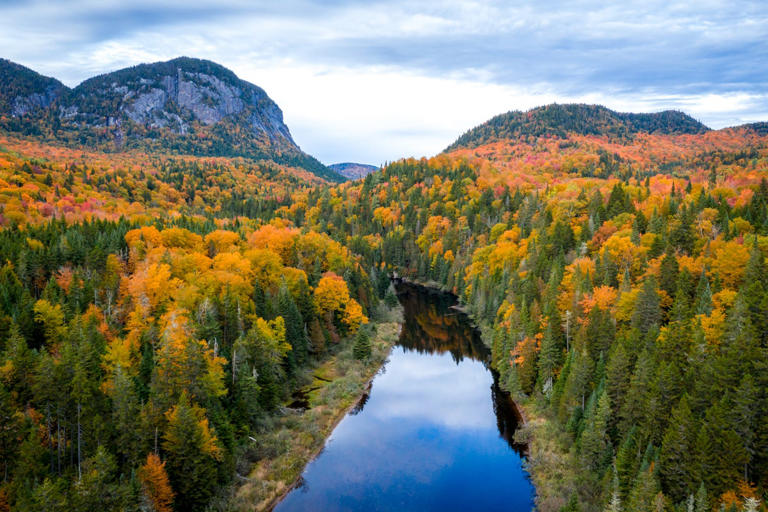
- Cast & crew
- User reviews
Back to Black

The life and music of Amy Winehouse, through the journey of adolescence to adulthood and the creation of one of the best-selling albums of our time. The life and music of Amy Winehouse, through the journey of adolescence to adulthood and the creation of one of the best-selling albums of our time. The life and music of Amy Winehouse, through the journey of adolescence to adulthood and the creation of one of the best-selling albums of our time.
- Sam Taylor-Johnson
- Matt Greenhalgh
- Marisa Abela
- Eddie Marsan
- Jack O'Connell
- 43 User reviews
- 54 Critic reviews
- 50 Metascore

- Amy Winehouse

- Mitch Winehouse

- Blake Fielder-Civil

- Cynthia Winehouse

- Joey the dealer

- Janis Winehouse

- Nick Shymansky

- Raye Cosbert

- Artist Development Man

- Chris Taylor

- Perfume Paul

- Aunt Melody

- Uncle Harold
- All cast & crew
- Production, box office & more at IMDbPro
More like this

Did you know
- Trivia Marisa Abela did all the singing in this film herself. She trained extensively to mimic Amy Winehouse 's vocals.
Technical specs
- Runtime 2 hours 2 minutes
Related news
Contribute to this page.

- See more gaps
- Learn more about contributing
More to explore

Recently viewed

IMAGES
VIDEO
COMMENTS
Solo Travel in Japan. In past decades, most solo traveler in Japan used to be the ubiquitous salarymen (office workers) on business trips. These days, however, many locals, especially the younger generations, are increasingly traveling alone or doing things by themselves, creating a unique market aimed at singles.
Tips for Traveling Solo in Japan. Have cash. Everything I had read said that Japan is a cash society. I found that many places take credit cards including the hostels and ryokans where I stayed, 7-Elevens that are everywhere and many restaurants. While I used my credit card a lot, having cash was an imperative.
ULTIMATE Guide to Solo Travel in Japan | Destinations & Tips for 2023. Japan is the DREAM for many curious travelers. Manga, anime, sushi, cherry blossoms, Nintendo, Toyota, hot spring pools, Buddhist temples; the thought of these lit a fire in me! But with no one willing to tag along for the ride, I had to start planning a Japan solo travel trip.
Compared to lots of other Asian countries, Japan is super easy to travel in and great for people who are new to travelling alone. Don't get too confident yet though because there are tons and tons and tons of mistakes I made when I was in Japan solo, and I've been travelling alone since 2015. Japan is unique.
1) Be Prepared…You Won't Be Able to Read Anything. As you solo travel Japan, you'll quickly see that there is a distinct lack of English signage. 'It's cool I'll just follow the signs'… said no one in Japan. Ever. Well, unless of course, you can actually read Japanese.
Of course, for you who will be going to Japan for the first time, you don't necessarily have to go to places like Tokyo, Kyoto, and Osaka. If you have enough preparations before departure, in fact, Fukuoka, Hiroshima, Kumamoto, Nagoya, Shikoku, Hokkaido, etc., some places with natural attractions are worth your consideration.
Japan is safe for solo travel . When it comes to the safest countries for solo travel, it doesn't get much better than Japan. According to the Global Peace Index, Japan is the 9 th safest country in the world.. Serious crimes and petty crimes are infrequent occurrences in Japan.
Keep the volume down in public. While you will most likely see women putting on a full face of makeup or someone drinking a cold one, in Japan it's inappropriate to have a conversation in certain public places — in particular on public transportation. This is where 'wa' will come in for you as a solo traveler.
Japan Solo: My Itinerary and Budget. Here's my rough itinerary for Japan. I booked all my accommodation because it's a short trip so I don't have a lot of flexibility. Day 1 - Arrive Tokyo Haneda, Japan at 4:55pm. 1 night in hostel. Day 2 - Take train to Kyoto. Booked into hostel for 3 nights.
In summary, Japan solo travel offers a distinctive journey blending tradition and innovation, providing a transformative experience. Discover the safety, efficiency, and warm hospitality that make exploring Japan alone a fulfilling adventure. The Land of the Rising Sun beckons with its rich culture, diverse landscapes, and a seamless blend of ...
Solo Travel Japan Budget: Planning Your Finances. Effective budget planning is crucial for a fulfilling solo travel experience in Japan. Start by setting a realistic budget, factoring in all potential costs such as flight tickets, accommodation, local transportation, entrance fees to attractions, and daily meals.
8. Ensure That a Japan Railways Pass Is Cost Effective Before Buying One. For many years, the passes sold by the Japan Railways (JR) group are among the best deals in the global travel industry. Particularly attractive for traveling alone in Japan because they perfectly complement solo traveling itinerary flexibility.
Solo travel in Japan is simple compared to most other places. It is safe, even for solo female travellers, and you can wander anywhere, anytime alone, without issue. Restaurants cater to lone customers; the only real issue is the Japanese language barrier. And that can be overcome somewhat with the use of apps.
Solo travel in Japan is an opportunity to broaden your horizons and gain a new perspective on the world, all while having the adventure of a lifetime. Freedom and Flexibility. One of the best things about solo travel in Japan is the freedom and flexibility it offers. When you're on your own, you get to set your own schedule and do whatever ...
Try group solo travel to Japan with Flash Pack - designed exclusively for people in their 30s and 40s, seeking the independence of solo travel within the safety of a group. A cool 98% of Flashpackers arrive solo to join our group adventures. So, you'll be in good company - whether a first time solo traveller or a seasoned pro looking for ...
Travel Solo in Japan. Japan is one of the friendliest and safest countries in the world for solo travel with restaurants, cafes, museums, and other destinations easily accessible for single visitors. The helpful nature and warmth of people in many parts of Japan will also surprise and help you have an even better trip. Take the plunge and ...
Activities & Destinations as a Solo Traveller. Though bigger cities such as Tokyo, Kyoto, and Osaka offer travellers the peace of mind of better language resources, verging off the beaten path creates the greatest opportunity to immerse oneself in Japan's rich culture. Temple stays such as that at Koyasan are one of the most popular among ...
Solo travel to Japan is a harmonious blend of cultural immersion, refinement, and memorable experiences. Whether you are a female solo traveler or not, Japan offers a wide range of luxury options, from affordable indulgences to premium experiences in SAFE environment. Embrace the safety, hospitality, and charm of Japan while exploring this ...
1. Tokyo: a must-visit city for a first solo trip to Japan. Tokyo is the perfect city to start your solo trip to Japan. As the capital city and the country's biggest city, Tokyo has many neighbourhoods to explore, learn about Japanese culture, and experience city life in Japan.
3. Japan is a great place to eat in restaurants alone. For eating, Japan is a solo traveler's dream country. In many Japanese restaurants, customers have the option of sitting at a counter rather than a table. This seating arrangement is ideal for solo travelers. You don't feel so self-conscious sitting alone at a counter as you would at a ...
Solo Travel Japan is all about traveling in Japan. I would like to share unique experiences such as traveling by overnight capsule hotel ferry, First Class overnight ferry, etc. I don't speak in ...
Solo travellers in Japan often find bus travel as a good alternative to train travel, as night buses are safe and don't limit your daytime activity time. A Japanese 3-day bus pass typically costs 10,200 YEN (£67, $88). Accurate exchange rate as of Dec 2021. Solo travelling in Japan is very popular, and you will not be on your own whilst solo ...
These 12 things about Solo travel in Japan and It will HELP YOU be better prepared on your next trip! making you a better traveller. Traveling around Japan...
Here are some top countries for solo travel, plus tips to plan and execute a successful trip of self-discovery. Read more on solo travel : The solo holiday destinations in the UK for a singles getaway
Back to Black: Directed by Sam Taylor-Johnson. With Marisa Abela, Jack O'Connell, Eddie Marsan, Lesley Manville. The life and music of Amy Winehouse, through the journey of adolescence to adulthood and the creation of one of the best-selling albums of our time.